Marlin Shelton Haston

Marlin Shelton Haston, 1928-2022

Marlin Haston, 93, passed away on January 1, 2022. He was born September 5, 1928, Spencer (Van Buren County) of the late R.C. Haston Sr. and Etta (Smith) Haston.
He is survived by his son, David (Laura) Haston of Dandridge; daughter, Jean Ann Hall of Hartsville, and daughter-in-law Brenda Haston of Crossville; grand-children, Brant (Alexis) Hall, Creighton (Makayla) Hall, Hannah Haston, Luke Haston, Eric (Kasi) Brady, and Michelle Landrem; and great grand-children, Craylyn Hall, Karsyn Hall, Stella Hall, Brant Hall II, Oaklyn Hall, Brylee Landrem, and Harper Landrem.
In addition to his parents, Marlin is preceded in death by his wife Imogene Haston; son, Jerry Haston; brother, RC. Haston Jr; and sister, Bobbi Jo Haston.
Marlin Shelton Haston was born on September 5, 1928. He was the oldest child of Robert Charles Haston Sr and Etta Smith Haston. He was born in the Cane Creek Community of Van Buren County, Tennessee. His first home was a two-room cabin on the side of a mountain. The family moved to Piney and there he spent the remainder of his childhood. The home was 4 rooms and had no electricity, no insulation, a coal burning fireplace, and an outhouse next the chicken yard. He would talk about having two pairs of coveralls and two pairs of shoes. Marlin and his brother R.C. Jr. had to walk through the woods about two miles to attend the Piney School. They considered themselves lucky if their dad let them take the mule to school.
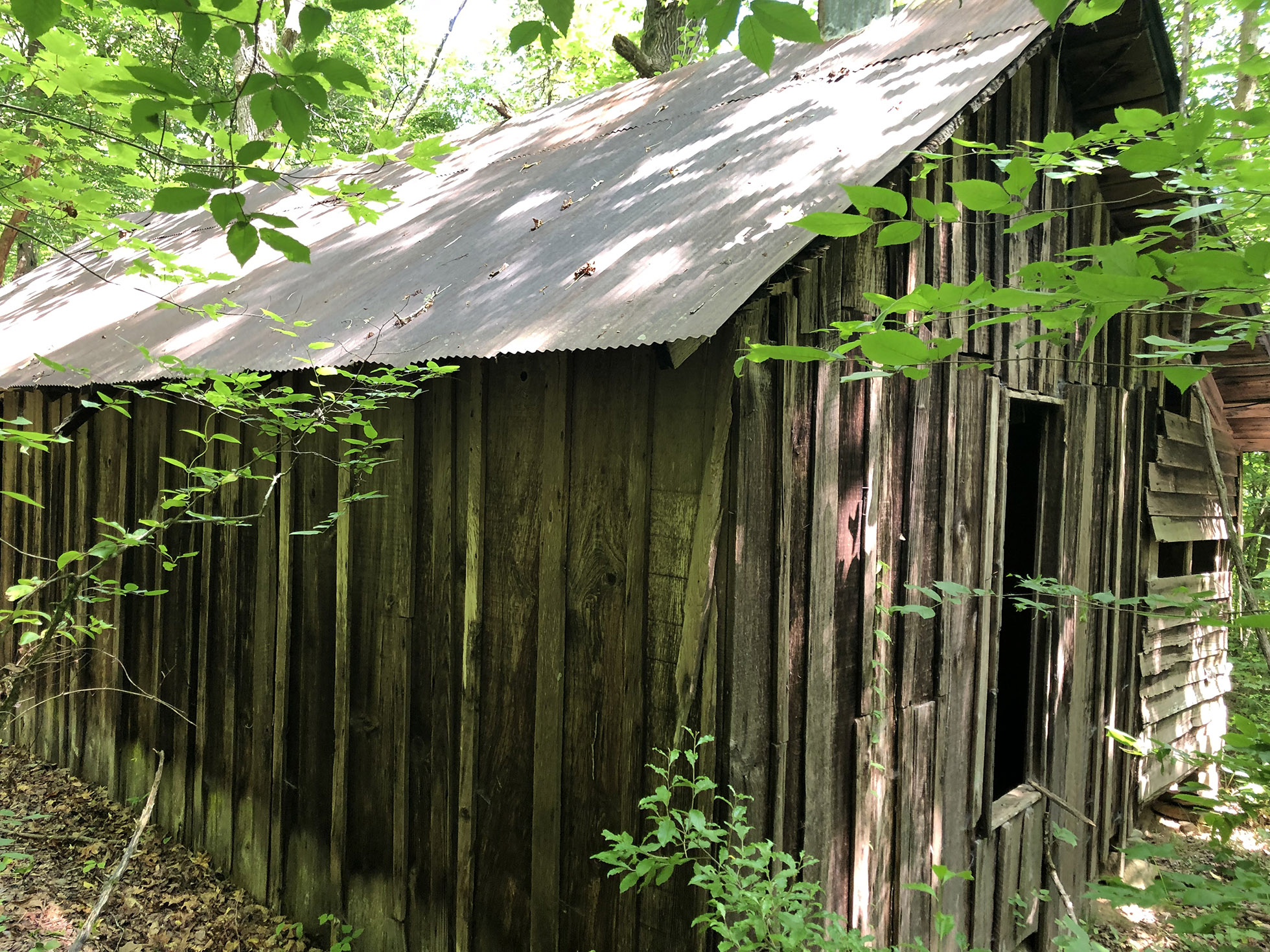
Marlin’s Mother had a degree from Burritt College and was a licensed teacher. His dad only attended 6 years of school. Marlin’s mother was adamant that he and his brother had to get a college education. He knew that a college education was the only way to get someplace in this world.
Marlin was very active in 4H, FFA and school activities. He served as President of FFA, Class President, and Editor in Chief of the Vanburian, school annual. He was a member of the first boys basketball team at Van Buren County High, as player and manager. Also, he was selected as the Boys State Representative. In addition to school activities, he spent 2 summers working in factories up north to save money for college.
In the Fall of 1947, Marlin started his freshman year at the University of Tennessee in Knoxville. He was recipient of 1 of the 13 scholarships offered by the College of Agriculture. Additionally, he worked in the Sophia Strong Cafeteria and the Home Economics library.
Marlin’s Journey to obtaining a B.S. in Agriculture became a 7-year quest. At the end of his sophomore year, he ran out of money. He returned home and spent a year teaching. He just couldn’t save enough from teaching to attend UT. His next decision was to enlist in the army, so as to qualify for future GI educational benefits. His two years of college gave him a leg up on most new recruits. He spent 2 years stationed in Trieste, Italy. He was posted to the Commanding Officer’s staff and also taught rudimentary reading and math to the boys who never attended school. Upon his honorable discharge, he returned to UT and finally graduated in 1954. Nothing but pure grit, determination, and stubbornness drove him to obtain his BS.
Marlin had a different collegiate experience than most of his peers. He did not have extra funds for the routine extra-curricular activities that most college students participate in. His one true collegiate experience was Volunteer football. He loved the Vols and being in Neyland Stadium. From the late 1950s until around 2000, he was in Neyland Stadium cheering on the Vols. His love for all things orange and white has been passed down through the family.
After college, he was hired by the UT Extension Service as a County agent in Grundy County. Prior to settling in Grundy County, he met and wooed the love of his life, Imogene Walker. They were married in 1955 and had almost 64 years together. By 1956, they moved to Cumberland County. Marlin was the 4H agent. He believed in the 4H program and felt it was a pathway for youth to learn and grow into productive, successful adults. He coached the State 4H Livestock Judging team. Members of this were Jim Bohannon, Tom Looney, and Jack Looney. This team went on to be Tennessee’s highest ever placing team at the national contest in Chicago. These young men carried the winning tradition to UT and became highly decorated collegiate livestock judges. This was the only national champion team that UT has ever had. He was a life-long supporter of 4H.
In 1959, Marlin made his final career move. He became a Tennessee Farmers Mutual Insurance agent. According to Imogene, he took a 50% salary cut when he left the Extension Service. He was willing to gamble on his tenacious work ethic, personable people skills, and dogged determination, to succeed and excel. He saw this as an opportunity to “change the financial future” for his family. From 400 family members in 1958 to 10,000+ at his retirement in 1990, he built the Farm Bureau Insurance, that Cumberland Countians see today.
Marlin was an active member in the community. He served on the Cumberland County Bank Board for 53 years. He was in the Kiwanis Club, served on the Cumberland Medical Center board, Volunteer Electric Board, the University of Tennessee Agriculture Institute Board, and the Sons of The American Revolution. He believed in serving the people of the community.
Marlin had a lifelong Dream of preserving family history, not just the lineage, but the land. In 1972, he purchased the Haston Farm on Cane Creek in Van Buren County. This farm has been in our family since 1858 and is where Marlin was born. His family farm has produced many class, district, and state breed champions, including the 1970 overall state grand champion steer. His children, Jean Ann and David, following their father’s wishes established a Legacy Trust to further preserve this farm for future Haston generations. He never forgot the humble beginnings of his life and was forever grateful for his success.
He has been an inspiration, to his children and grandchildren, of what dedication, hardwork, and patience can achieve. He was a friend to all, leader in the community, and faithful, loving husband to Imogene. His presence will be greatly missed.
A graveside service will be held at Green Acres Memory Gardens in Crossville, Tennessee at 1:00 pm CST, Wednesday, January. 5, 2022. In lieu of followers, please make donations to TN 4-H foundation, 2621 Morgan Cir Dr. STE 205, Knoxville Tn 37996 or Farm Bureau Ag in the Classroom, P.O Box 313, Columbia TN 38402-0313.
In Lieu of Flowers, Please Consider Donating to One of These Organizations
Bilbrey Funeral Home - Crossville, Tennessee

If you appreciated this article, please share it with others.

52 – Other Daughters of Daniel Haston?

52 - Daughter of Daniel Haston? One Yes, One Maybe, One No

I am confident that Daniel Haston had two or three daughters (and/or maybe a son) that we have never been able to identify. But there is one for-sure daughter who has emerged out of more recent research. There’s another who may or may not have been from Daniel’s family. And there is one young woman whom earlier researchers claimed as Daniel’s daughter who was definitely not his.
Peggy Hastings Ault
Some of the earlier Daniel Haston researchers stated unequivocally that Peggy Hastings, a daughter of Daniel, married John Ault in Knox County, TN on November 22, 1809. WRONG! Daniel and his family were already settled in White County by then. And the will of Bedford County, TN John Hastings clearly states that Peggy Hastings Ault was his daughter.

Mary/Polly Milliken
Early Haston research reports also state that Mary/Polly Hastings, a daughter of Daniel, married James Milliken (or Milligan) in Knox County, TN on September 4, 1805. Right or wrong? I can’t say for sure, but this may be correct.
Even if Daniel had moved to White County by this time, his oldest son David was still there, so a 20+ year old sister might have remained in Knox County with her big brother’s family–especially if she was courting a fellow she planned to marry.
Oh, and on January 22, 1804, big brother David and his wife Peggy named a baby daughter Mary/Polly–perhaps because David had a sister by that name living with them?
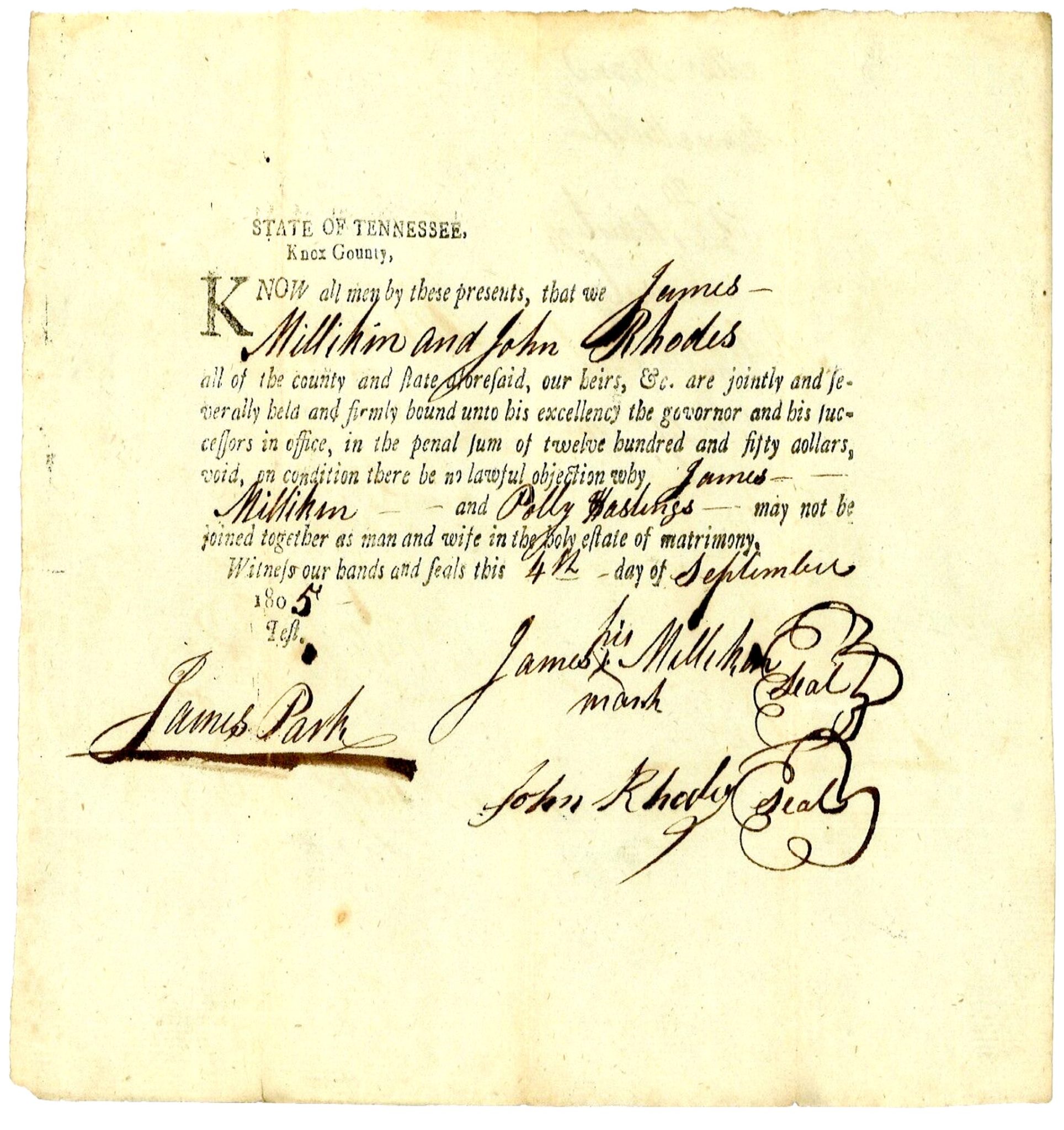
1830 Federal Census for Shelby County, IL - Precinct 2

Ridge Cemetery of Ridge County, IL
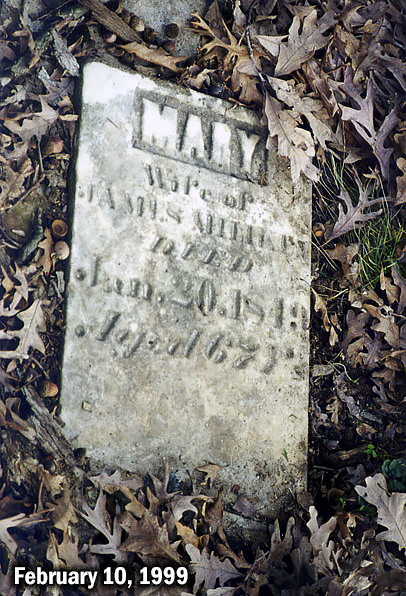
Here’s what we know about Mary/Polly Hastings and James Milliken:
- There is evidence that Millikens and Hastons had connections that went back several years, and perhaps were neighbors in Washington County as well as Knox County.
- After Mary and James married, at some point they moved to Illinois and are buried in the Ridge Cemetery of Shelby County, IL. https://bit.ly/36Ld8ma
- Their grave stones have been broken but an earlier (1971-1972) transcription exists that says Mary died January 20, 1849 at age 67. That means she would have been born in about 1782, when there was a baby in Daniel Haston’s household.
- The Find A Grave information for her says that her father was Henry Hastings of Orange County, NC, but he was still living in NC when Mary married in Knox County, TN. Other evidence tells us she was not the daughter of Henry Hastings of Orange County, NC!
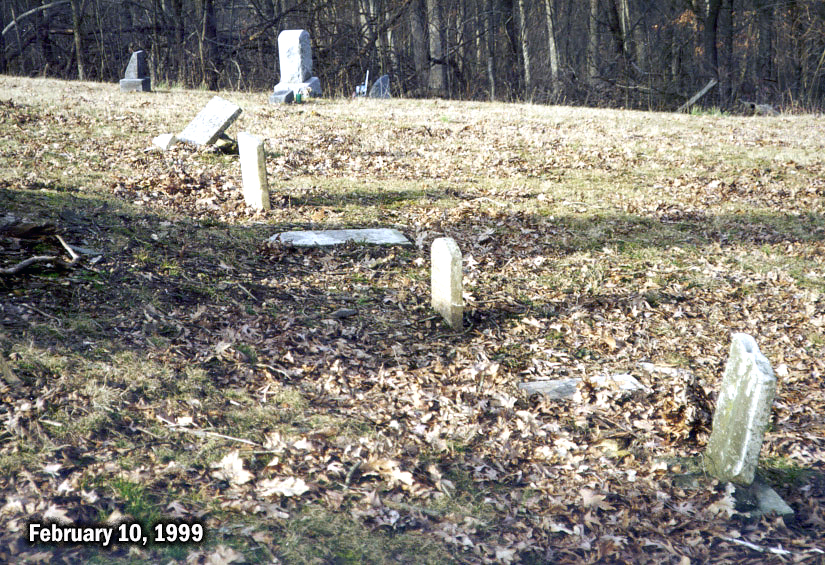
Elizabeth Haston Roddy
Transcribing text from old documents can be extremely challenging, especially when the handwriting is sloppy. Such is the case with this December 21, 1793 marriage bond of James Roddy and Elizabeth H_____. Transcriptions interpret her to be Elizabeth Houston, and when you see how her family name was written we can understand why the transcribers made that choice. But that doesn’t mean the transcription was accurate.
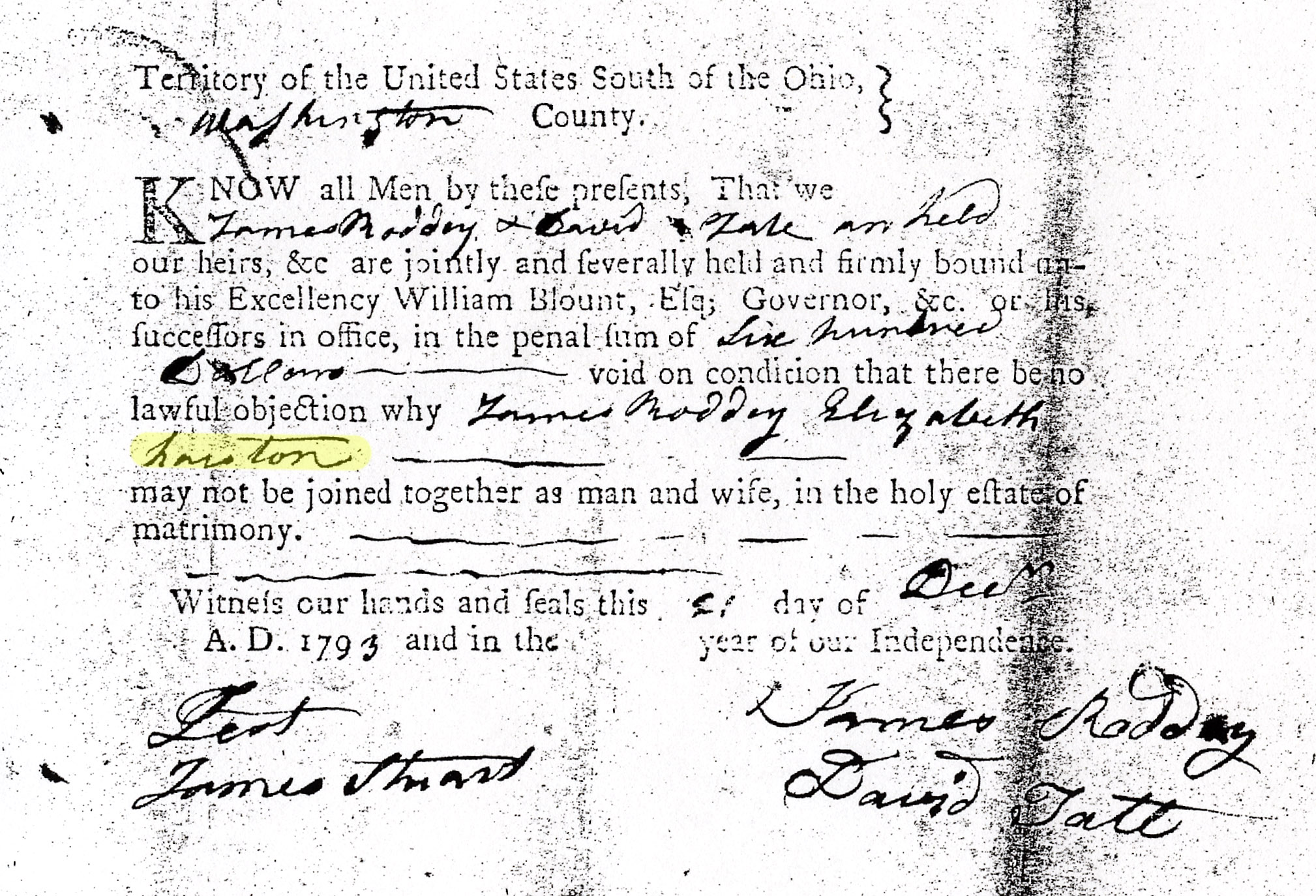
See (below) how it was transcribed from the original document?

But a closer examination of Elizabeth’s family name reveals–I think–that she was Elizabeth Haston (spelled Haiston on the bond). Compare the “a” and the “i” and the “s” with those known letters in other words written by the same court clerk.

What a difference unclear handwriting can make! I just wish early American clerks would have understood that. Now, why didn’t they know there would be 21st century genealogists and historians whose research would depend on the legibility of their handwritings?
Death of James Roddy - See Who Administered His Estate Settlement

About six years after the marriage of James and Elizabeth, James died. In January 1800, a time when Knox County, TN was being ravaged by typhoid fever, James Roddy died. One source says that almost no families completely escaped the epidemics of that winter.
Comments and Conclusions
- Elizabeth Haiston of the December 21, 1793 marriage bond was Elizabeth Haston, not Houston.
- James Roddy who deceased in 1800 in Knox County, Tennessee was the husband of Elizabeth Haston.
- Elizabeth Haston was the daughter of Daniel Haston.
James Roddy (this one, not one of the others of the same name at that time) was a son of Philip and Mary McComiskey Roddy, neighbors of the Hastons in Knox County, TN. So James was an older brother of Margaret “Peggy” Roddy who married David Haston, Daniel’s son.
On April 9, 1801, a marriage bond was issued for Betsy (nickname for Elizabeth) Roddy and James Cox in Knox County, Tennessee.
In November of 1802, Daniel Haston sent his son Joseph to Guilford County, NC with a power of attorney document. Joseph’s mission was to sell some land that Philip Roddy’s son, James, had owned in North Carolina, where the family lived prior to moving to (what became) Tennessee.

So, YES, Elizabeth Haston Roddy was a daughter of our Daniel Haston.
If you appreciated this article, please share it with others who might also enjoy it.

51 – Daniel Haston, Jr. Married into the Famous KY “Skaggs” Longhunters Family

51 - Daniel Haston, Jr. Married into the Famous KY Longhunters Skaggs Family
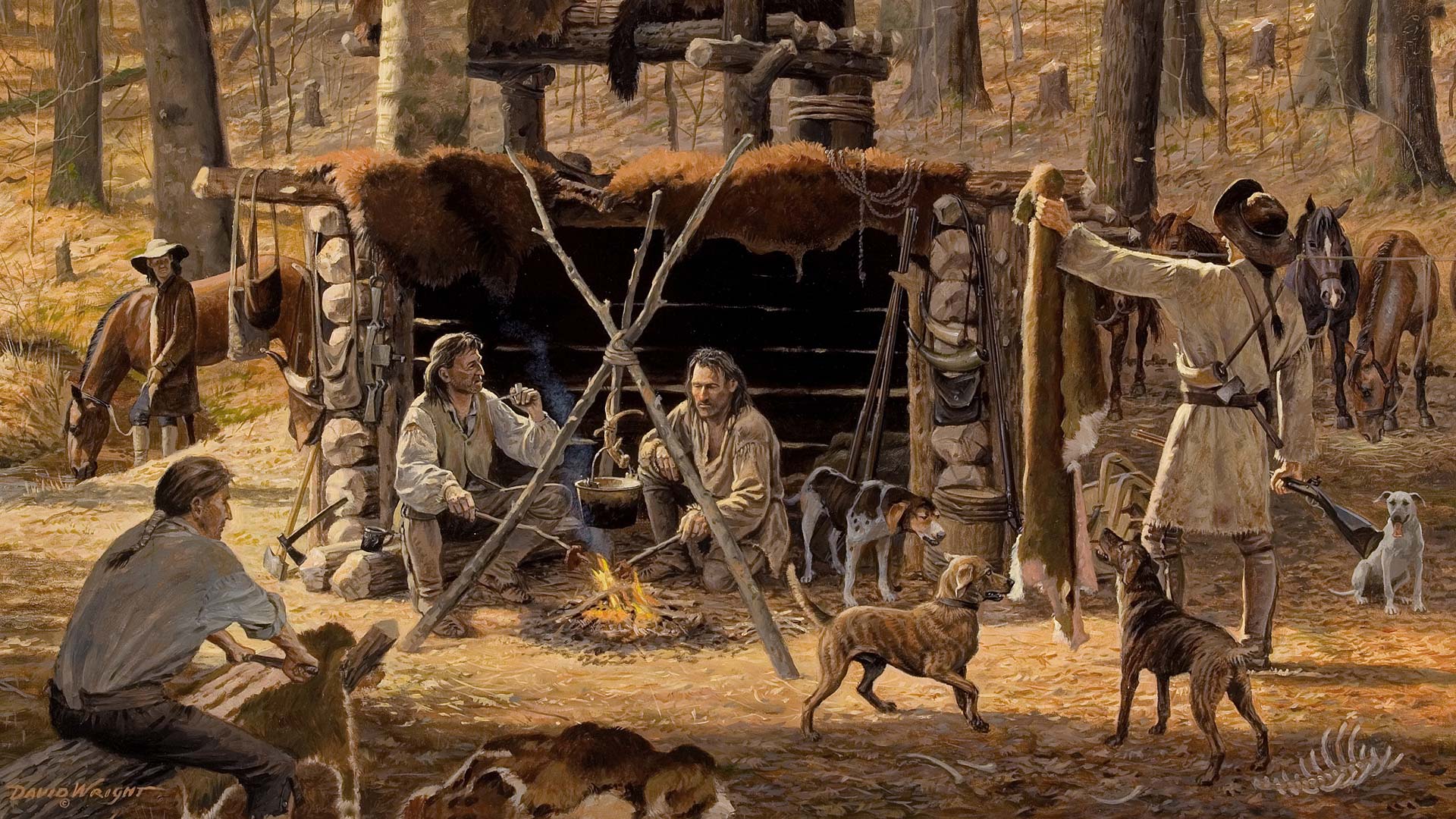
Did you know that descendants of Daniel Haston, through his son Daniel, Jr., are related by marriage to two famous members of the Kentucky Skaggs family – Charles Skaggs (1760s Longhunter) and Ricky Skaggs (a country music Hall of Fame member).
In an 1802 Knox County, Tennessee power of attorney document, our Daniel Haston was referred to as “Dannel Hastons Senr.” This probably indicated that he had a son, also living in Knox County, Tennessee, who carried his father’s name.

In September 2002, a visitor to the Heritage of Daniel Haston website contacted me with information regarding an old family Bible record of the marriage of Thomas Taylor Green to Louisa Hastings, daughter of Daniel Hastings. The bride and groom were both from Adair County, Kentucky. The fact that their September 22, 1829 wedding was performed by David Hastings, Esq. in White County, Tennessee provided a clue that Adair County, Kentucky Louisa Hastings was in some way related to the White County, Tennessee family of Daniel Haston.
There is now enough evidence to assert with a high degree of confidence that the Daniel Haston of Adair County, Kentucky was Daniel Haston, Jr.—son of our Daniel Haston ancestor.
The Longhunters
In 1750, the land between the Ohio River on the north, the Cumberland River on the south, and the Appalachian Mountain Range on the east was unpopulated by human residents. When pioneer settlers in Virginia and the Carolinas began to realize that vast herds of buffalo and deer roamed over the Green River Valley of that area, as well as an extensive population of bears, some of the more adventuresome hunters from the east began to dream of harvesting valuable pelts and furs in “Caintuck.” Pre-1792 it was a wilderness of western Virginia. But the potential dangers were great—conflicts with Indians, for example. Although uninhabited by native Americans, Kentucky was a favorite seasonal hunting ground for several native tribes. The challenges of rough terrain, dense forests, severe weather, and various species of life-threatening animals confronted white hunters in this “dark and bloody land.”
In order to make a hunt worthwhile in such a distant and dangerous land, serious hunters found it necessary to spend several months, even a year or more, on expeditions into the wilderness of Kentucky. Thus, the term “Longhunter” became the term that appropriately described the men who braved the wildernesses of Kentucky and Tennessee in the 1750s through 1770s, perhaps as much or more for adventure as wealth.
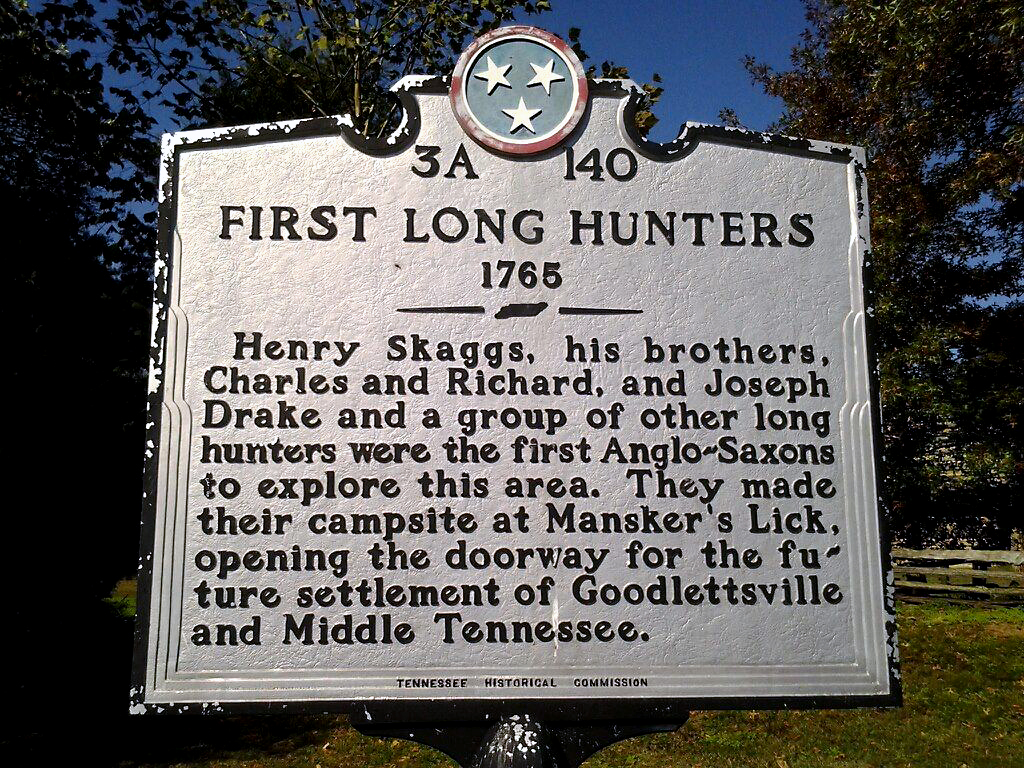
One of the most legendary groups of longhunters was a Skaggs family from Virginia—especially brothers Henry, Richard, and Charles.
One of the sons of Charles Skaggs was Archibald (“Archer”) who settled in the part of Green County, Kentucky that became Adair County.
Although not longhunters, per se, Archer and the other sons of Charles were well-trained hunters. In the spring of 1790, Archibald Skaggs, some of his brothers, and a few other men barely escaped an attack by Indians while hunting bears somewhere between the Cumberland River and Russell Creek.[i]
[i] Daryl Skaggs, Be Safe and Keep Your Powder Dry. (Published by author, 2014), 218-221.
The Skinhouse Story
Video (15 mins.) of the Famous “Skinhouse Story”
In the autumn of 1771 (or 1770) Colonel James Knox, Henry Skaggs, and 20 other longhunters (probably including Charles Skaggs) made a camp—which they called Camp Knox—at the site where the Mt. Gilead Christian Church is now located in Green County, Kentucky—on the corner of what is now Skinhouse Camp Road (Route 767) and Skinhouse Branch Road (Route 2188). They amassed more than 2,000 skins of fur-bearing animals they killed on their hunt and erected a pen or house, covered with bark of trees, in which to store them. Then something historically unfortunate happened:
The incursion of Indians, after a while, frightened them away, and when three or four years afterward some of the parties were enabled to return to the camp, the roof of the pen had been disarranged and the skins had rotted. One of the hunters…wrote on a large poplar tree which had lost its bark: ‘2,300 deer skins lost; ruination by God.[i]
[i] William B. Allen, A History of Kentucky: embracing gleanings, reminiscences, antiquities, natural curiosities, statistics, and biographical sketches of pioneers, soldiers, jurists, lawyers, statesmen, divines, mechanics, farmers, merchants, and other leading men, of all occupations and pursuits. (Louisville, KY: Bradley and Gilbert, 1872), 145-146.
Location of the Longhunter's "Skinhouse" Camp
Daniel Haston, Jr. Married Chloe Skaggs
Chloe Skaggs was the daughter of Archibald Skaggs, a granddaughter of Charles Skaggs, and a grandniece of Henry Skaggs.
October 21, 1807 – A marriage bond for Daniel Haston and Chloe Skaggs in Adair County, Kentucky was issued on this date.[i] Chloe’s father, Archibald Skaggs, joined Daniel Haston in signing the bond for the marriage. Daniel signed in his own distinct handwriting on the original bond document, so he was literate. Skaggs family documents suggest that Chloe was born in 1786, but that may just be a guess based on ages of other children in the Archibald Skaggs family. Chloe’s mother was Elizabeth Thompson Skaggs.
[i] Ancestry.com. Kentucky, U.S., County Marriage Records, 1783-1965 [database on-line]. Lehi, UT, USA: Ancestry.com Operations, Inc., 2016.

1810 – According to the 1810 Adair County, Kentucky tax list, Daniel Haston owned 100 acres on Russell Creek. His 100 acres was originally owned by Kinzy Coats,[i] as was the 100 acres of Solomon Harrison.
[i] Michael C. Watson, Adair County, Kentucky: 1810 Federal Census, 1802, 1805, 1810 Tax Lists. (Columbia, KY: Watson Publications, n.d.), 44.
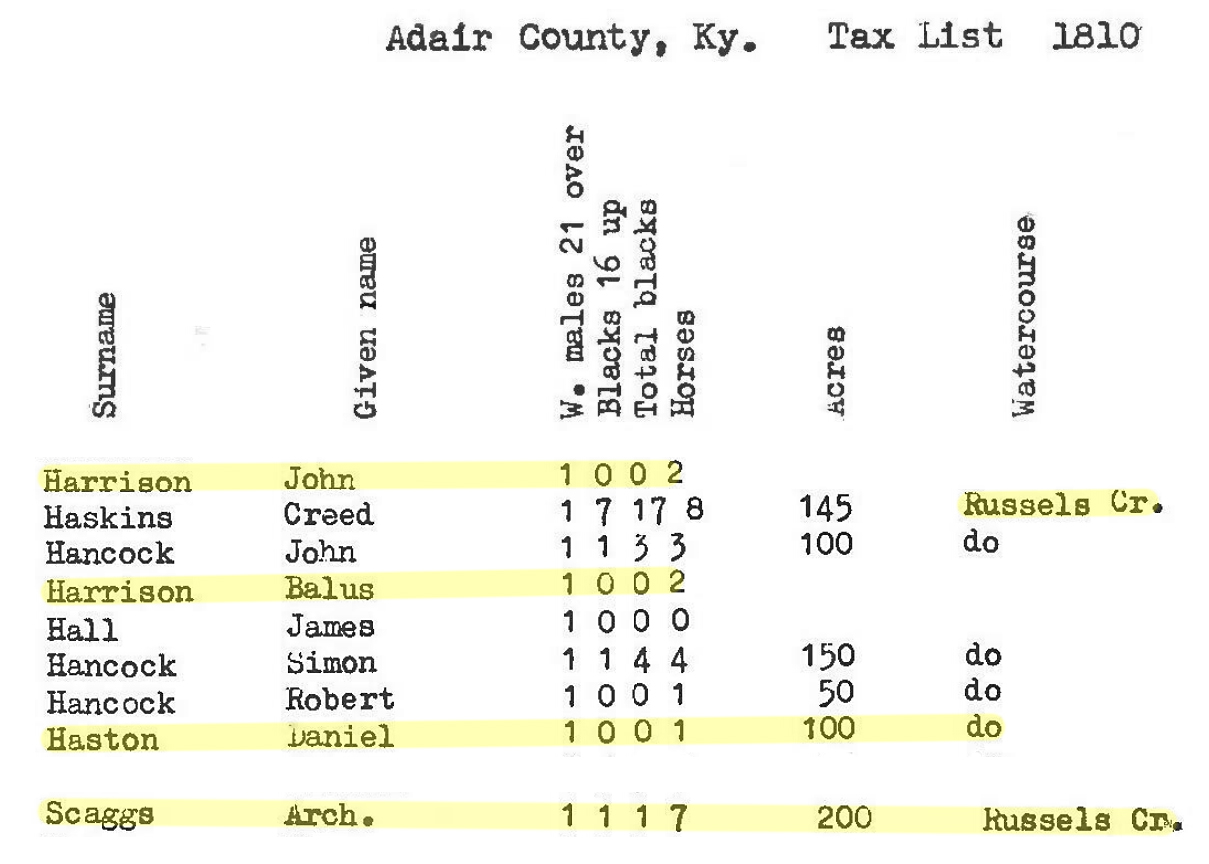
Death of Chloe Skaggs
Chloe Skaggs, Daniel, Jr.’s young wife, gave birth to a girl they named Louisa (sometimes called “Eliza.”) But apparently, Chloe died at about that time, or soon after.
Marriage to Betsey Harrison
January 8, 1810 – On January 8, 1810, Daniel Heiston entered into a legal bond for a marriage to Betsey Harrison in Adair County, Kentucky.[i] Bailis (Balus) Harrison, Betsey’s brother, and Daniel Heiston signed the bond. As you can see from the above tax list, the Harrisons lived very close to Daniel, Jr.
[i] “Daniel Heiston and Betsey Harrison,” Adair County, Kentucky Marriage Records.

Daniel, Jr. must have been one of the few people in all of history whose marriage records to two women appear on the same page of marriage bonds! And, yes, it’s the same man even though the family names are spelled differently.
March 10, 1810 – Two months after the marriage bond was issued,* Rev. Isaac Hodgen, pastor of the Mt. Gilead Baptist Church, performed the marriage of Daniel Heston and Betsey Harrison. It seems likely that Daniel, Jr. attended the Mt. Gilead Baptist Church (formerly called Russells Creek Baptist Church), which was located near Russells Creek—the creek on which Daniel’s 100 acres were situated. Isaac Hodgen was a popular Baptist preacher in the area of Green County and Adair County, Kentucky of that era, but he had only been pastor of the Mt. Gilead about five years at the time he officiated Daniel’s marriage to Betsy.
*Normally, marriages were performed within a day or two after the marriage bond was issued. Perhaps the two-month delay had something to do with Daniel’s previous marriage to Chloe Skaggs, who apparently had died recently.
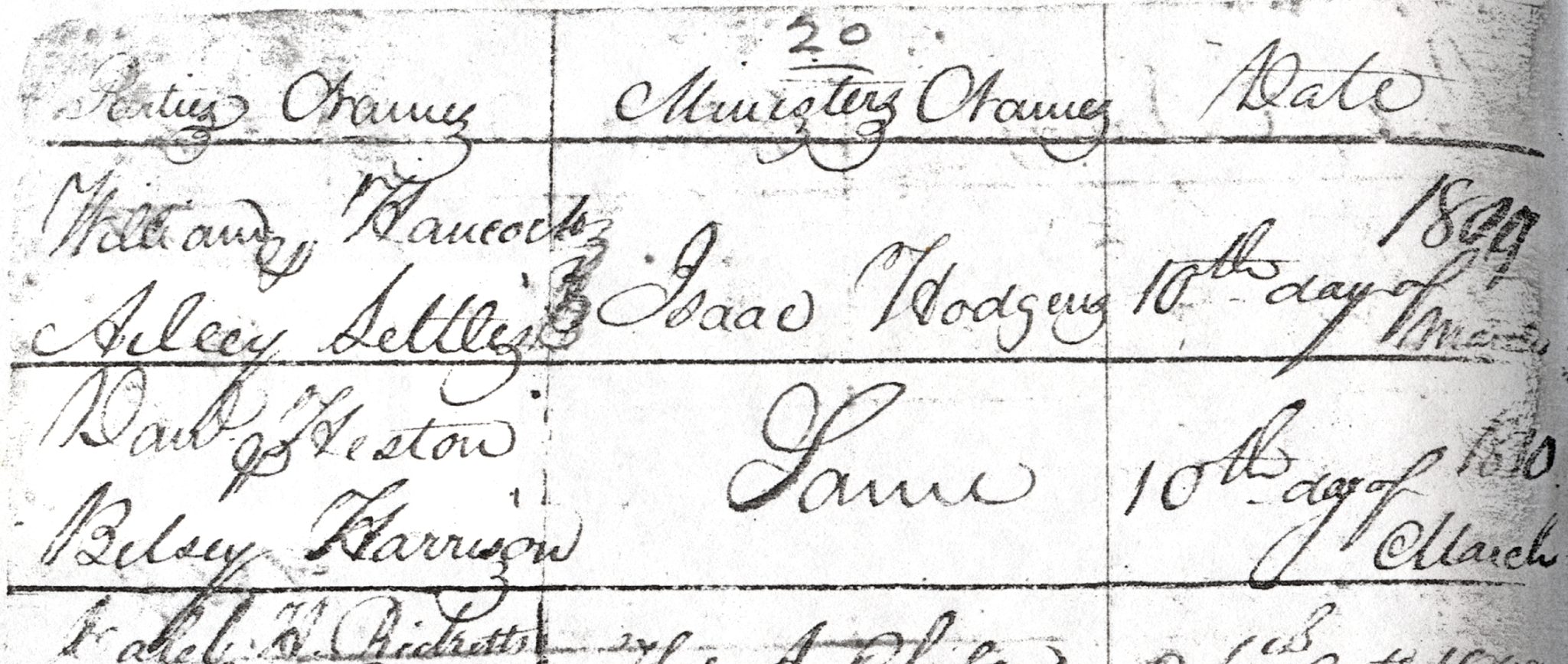
1810 Federal Census
August 6, 1810 – This was the census date for 1810. Daniel “Easton” [sic] was in the category of “Males between the ages of 16 thru 25” on this census. Since his name appears in the middle of the names beginning with the letter “H” and there is no record of an Adair County, Kentucky man by the name of “Easton” in this era, it seems obvious that this was Daniel Haston, the son our ancestor Daniel.[i] Thus, this Daniel Haston, Jr. would have been born between 1785 and 1794. When compared to the 1810 Adair County, Kentucky tax list, his birth years can be narrowed to sometime between 1785-1789 while his parents were probably living in Washington County, NC/TN.
[i] Year: 1810; Census Place: Columbia, Adair, Kentucky; Roll: 5; Page: 14; Image: 00016; Family History Library Film: 0181350.

Birth of Louisa - Daughter of Daniel and Chloe
August 15, 1811 – Although we have a Bible record that gives this August 15, 1811 as the birth date for Daniel and Chloe Skaggs Haston’s daughter, Louisa, it conflicts with the 1810 marriage bond and marriage dates of Daniel and Betsey Harrison.
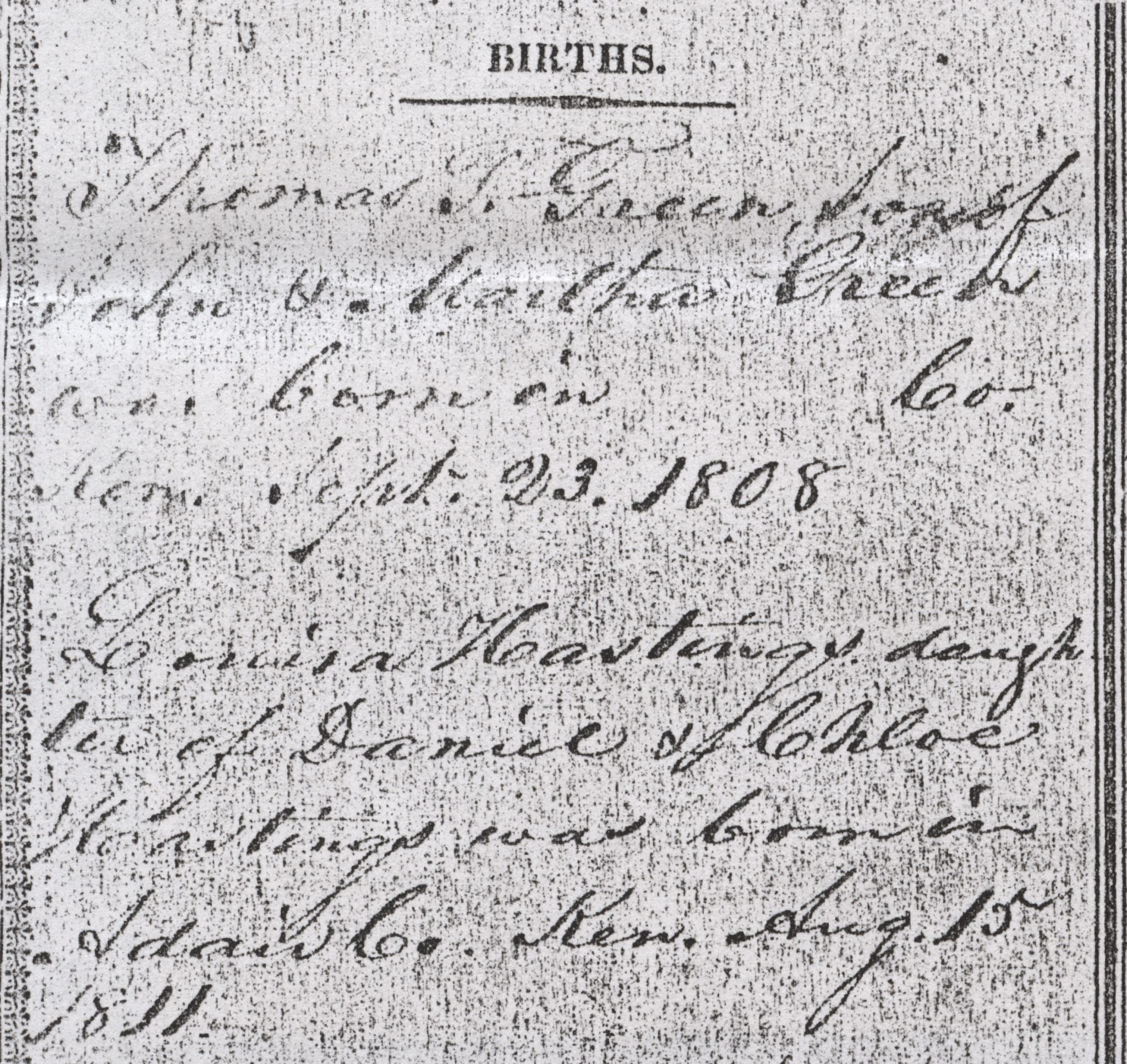
If Louisa Haston was born on August 15, 1811, she would have been conceived approximately in mid-November, 1810. That conception would have been about eight months after Daniel married Betsey Harrison. The marriage bond date and marriage date appear to be definite, so I’m guessing Louisa did not know for sure the year of her birth. That would not be unusual if her mother died not long after she (Louisa) was born and her father died while she was also a child. She would have had no living parents to help her with that information.
September 11, 1815 – Here’s a signature written by Daniel Haston (Jr.), when he witnessed a marriage bond for Chloe’s sister, Amy Scaggs.

June 6, 1820 – The Adair County, Kentucky Daniel Haston filed his last will and testament at this time.[i] The fact that he did not make the trip to the courthouse to sign the will, would seem to indicate that he was very ill at the time the will was made.
[i] Adair County, Kentucky Will Book C, Volume 1, 75-76.
Daniel Haston, Jr. died shortly after this will was written. According to his will, Daniel Haston had four surviving daughters in 1820: Eliza (nickname for Louisa), Elizabeth, Polly (nickname for Mary), and Peggy (nickname for Margaret). Only Eliza was mentioned as an heir in the 1832 will of Daniel’s father-in-law, Archibald Skaggs. Evidently, Eliza was the only (surviving) daughter of Daniel, whose mother was Chloe Skaggs (daughter of Archibald Skaggs). The other three daughters were probably born to Betsey Harrison Haston.
The fates of Elizabeth and Peggy (Margaret) Haston are unknown, as far as I have been able to determine. Did they were under 10 years old when their father died and were probably placed in guardian homes. As sometimes happened, they may have taken the surnames of the guardian parents. Did they grow up and marry? If so, whom did they marry and where did they live? The answers to these questions may never be known, due to the difficulties of researching females of that era.
In the name of God Amen. I Daniel Haston of the county of Adair and State of Kentucky do make and ordain and declare this instrument of writing to be my last will and testament. Revoking all others. All my debts are to be punctually paid. And the legacies herein after bequeathed are to be discharged as soon as circumstances will permit, and in the manner directed. It is my wish and desire for my executor after my decease to act as following. viz. All my real and personal estate immediately after my decease are to be sold, the land to be sold on a credit which shall be at the discretion of my executor which I think proper to appoint Archibald Skaggs Senr. either private or public sale as he may think it most advantageous to my estate. The process of my estate it is my wish and desire for it to be equally divided between my four surviving heirs of my body viz. Eliza [Louisa] Haston*, Elizabeth Haston, Polly Haston, Peggy Haston. Wherein the above being wrote agreeable to my wish and desire I freely permit to have my name assigned in the presence of the underneath witnesses this 6th day of June 1820. Daniel Haston Test. State of Kentucky At a county court continued and held for the county aforesaid on Tuesday the 10th of August 1820. This last will and testament of Daniel Haston deceased was exhibited in court and partly proven by the oath of William Tinsley a subscribing witness thereto ordered to be certified. And at a county court began and held at the courthouse for the county of afsd. [aforesaid] on Monday the 4th day of September 1820 the said will was further and fully proven by the oath of Edward Tinsley a subscribing witness thereto and ordered to be recorded and on the motion of Archibald Skaggs the executor named in said will who made oath as the law directs the execution of said will was granted him he having executed and acknowledged bond in the penal sum of $500 with James Flournoy his security conditioned as the law directs. |
Attest Wm. Patterson DClerk
According to his will and the probate date, Daniel Haston, Jr. died sometime between June 6, 1820, and August 10, 1820. Of the known sons of our Daniel Haston, Sr., Daniel, Jr. was the first and youngest to die. Unfortunately, he had no male descendants (at least, boys who survived to adulthood), so we have no Y-DNA available for testing as we have with the other five sons of Daniel, Sr.
His first father-in-law, Archibald Skaggs, was the executor of Daniel Haston, Jr.’s estate. Apparently, he was closely connected to Chloe’s Skaggs family, even after she passed away.
September 4, 1820 – Daniel Haston, Jr.’s will was fully proved in court. James Flernoy (Flournoy) was security for Archibald Skaggs, the executor of Daniel’s estate settlement.
December 3, 1825 – More than five years after Daniel Haston died, his estate settlement account, executed by Archibald Skaggs, was examined by county officials. The general inventory had been sold for $105.97 and his land and the “growing crop” were sold for $150.00. Archibald Skaggs, Daniel Haston’s father-in-law and executor of his estate, received $61.13 for “burying expenses and trouble,” $3.97 1/2 for 1820 & 1821 clerks fees paid, $5.00 for “E & E levels account proven,” and $2.50 for the attorney fee.[i]
[i] Adair County, Kentucky Will Book C, Volume 1, 254.
September 22, 1829 – Louisa Hastings (Haston) married Thomas Taylor Green on this date in White County, Tennessee.[i] The Justice of the Peace who married them was David Hastings, Esq. This was the senior Daniel Haston’s son, David Haston, who was a White County Justice of the Peace at this time. David, Esq. would have been Chloe’s Uncle David, her deceased father’s oldest brother. So this marriage record connects the Daniel Haston of Adair County, Kentucky to the Daniel Haston, Sr. family of White County, Tennessee.
[i] Family Bible record handed down through the Thomas Taylor Green family, current location of the Bible is not known.
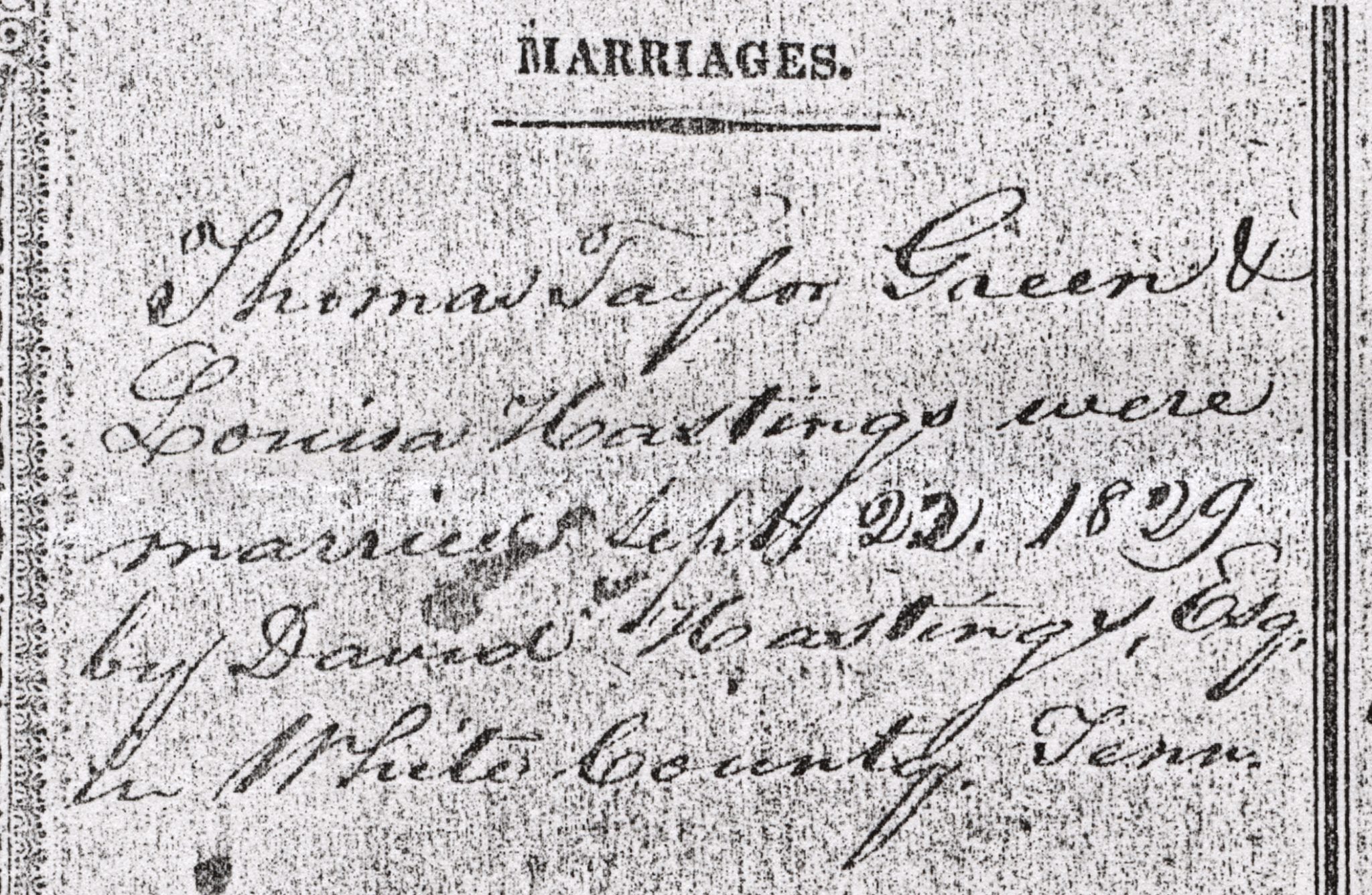
June 1, 1832 – Daniel Haston, and daughter Eliza (nickname for Louisa), were mentioned in the will of Archibald Skaggs, Senior.[i] Eliza Haston only inherited $1.00.* Apparently, Archibald Skaggs (father-in-law of the late Daniel Haston) owed Daniel Haston’s heirs some money too, from an unpaid debt. According to Daniel’s 1820 will, he had four surviving daughters at that time. Only Eliza was mentioned as Daniel’s heir in the 1832 Archibald Skaggs will, since she was the only daughter of Daniel born to Archibald Skaggs’ daughter, Chloe Skaggs.
[i] Adair County, Kentucky Will Book C, Volume 2, 654-655.
Just an Interesting FYI
One of Daniel, Jr.’s daughters and sons-in-laws moved to Sangamon County, IL (county seat of Springfield, IL) in the 1830s. Guess who else was living in the same county. Hint: He was born in KY and was a young man who was practicing law at the time.


If you appreciated this article, please share it with others who might also enjoy it.

50 – Jeremiah Haston – Another Son of Daniel Goes to Missouri

50 - Jeremiah Haston, from Tennessee, to Illinois, to Dallas County, Missouri

The three youngest sons of Daniel Haston settled in Missouri. Jesse and Jeremiah remained there for the rest of their lives, but Isaac moved on to California after about 20 years in the “Show Me” state.
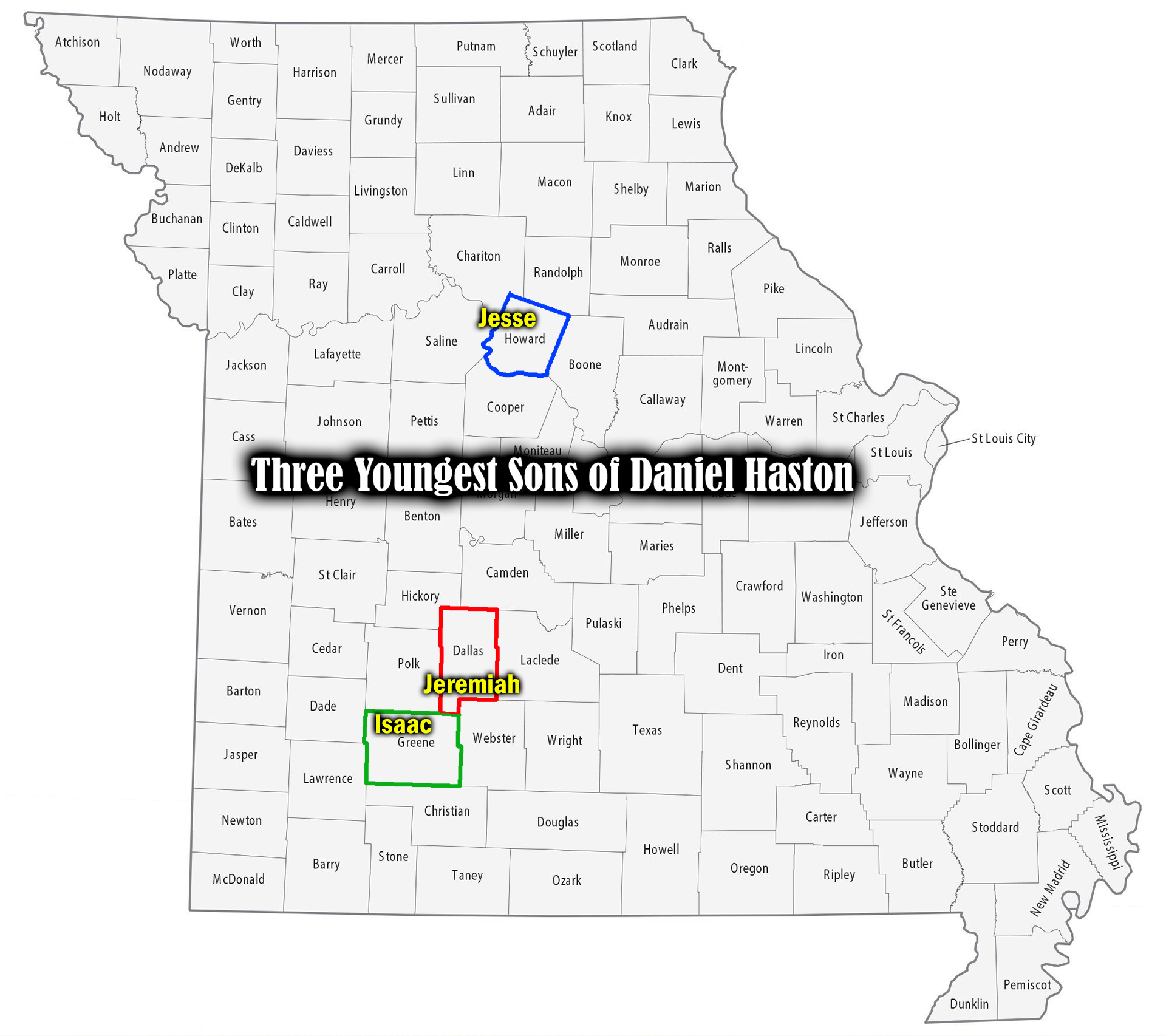
Dallas County, Missouri
When a new county was created out of Polk County, Missouri in 1841, it was named Niangua County for the Niangua (ni-an-gua) River that flows northward through the southcentral and eastern sections of the county. In 1844, the county’s name was changed to Dallas County in honor of Vice President George Mifflin Dallas.

According to the 1850 census, 400 of the 600 families in Dallas County came from Tennessee. The “Hastings,” family* was one of the earliest families to settle in the county.[i]
*The “Hastings” spelling of Jeremiah’s family name appeared in early Dallas County documents, but it morphed into Hastin, Hasten, and eventually Haston through the years, especially after two of Jeremiah’s sons became well-known county officials.
At the time of the early settlement of the county, the land was full of many kinds of wild animals, such as elk, deer, turkeys, geese, and other small game. But wolves, panthers, wildcats, and some bears were there to terrorize pioneer families.
Unfortunately, the pre-Civil War county records were destroyed during the war by courthouse fires.
Consequently, much of what could have been known about Jeremiah Haston’s family in the first three decades of their life in Dallas County is not available to us. Marriage records, tax records, deeds, court records—all these pre-Civil War records are gone!
[i] Dallas County Historical Society, 4-5.
1840 – Jeremiah Hastings lived in Polk County, Missouri at the time of this census, because the county that would become Dallas County was not yet created out of Polk.[i] A young Thomas Riddle and a young John Riddle, relatives of Esther Riddle Haston and the early Cane Creek Tennessee Riddles lived near Jeremiah. On January 12, 1841, a section was carved out of Polk County and named Niangua County initially, but the name was changed to Dallas County on December 15, 1844. So Jeremiah probably lived in three counties in Missouri without moving after his initial settlement there.
[i] Year: 1840; Census Place: Polk, Missouri; Roll: 228; Page: 170; Family History Library Film: 0014857.
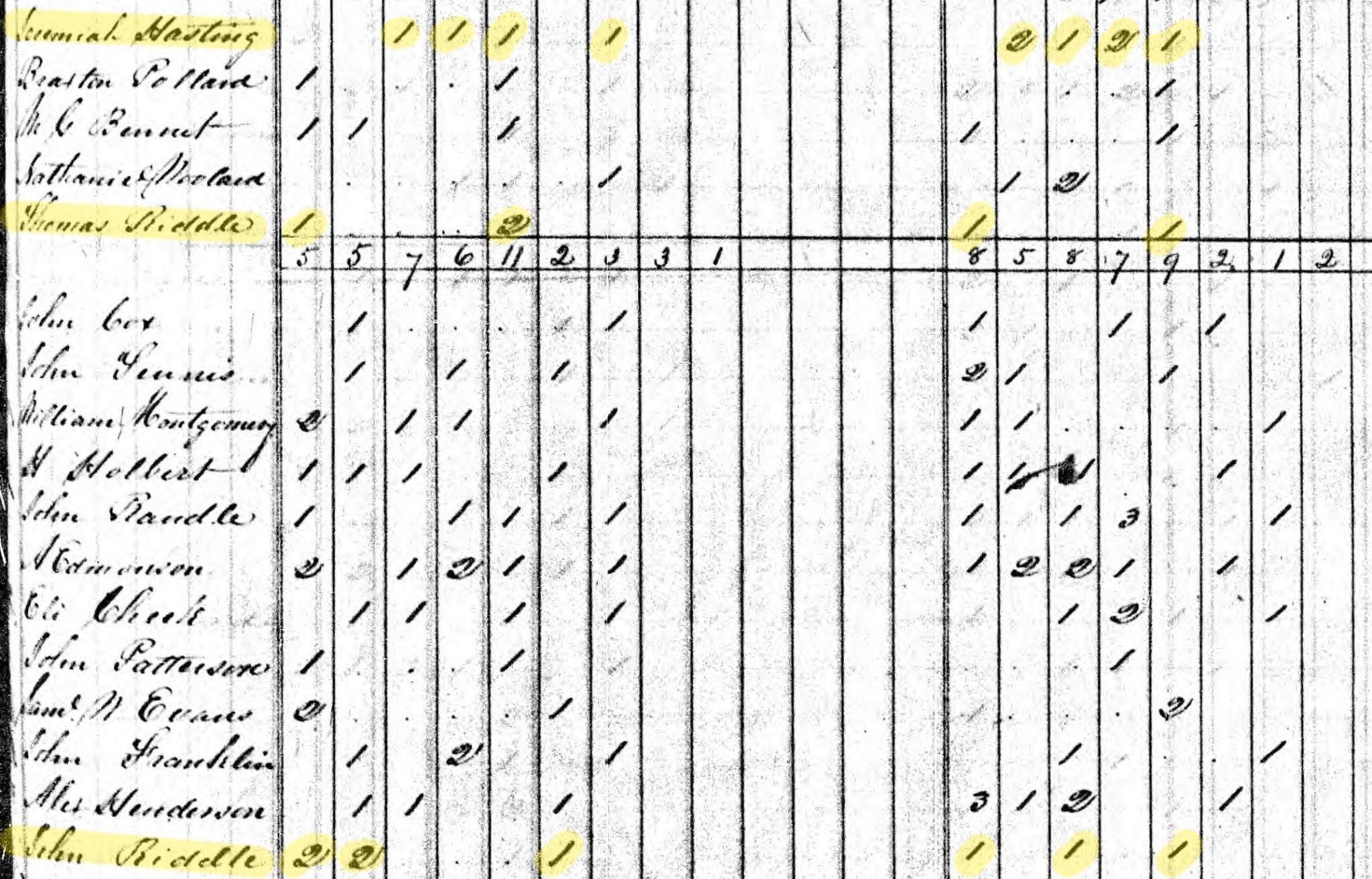
About 1845 – Malinda E. Hastings, daughter of Jeremiah and Esther, married Martin Rose, son of John W. Rose, in about 1845. The marriage date is based on the age of their first child. Their marriage record was probably destroyed in one of the courthouse fires, but other evidence reveals that Malinda did marry Martin Rose.
January 15, 1846 – John Wesley Haston married Mary Caroline Forester[i] in Greene County, Missouri. Rev. John Gilmore, a neighbor of Isaac Haston in Greene County, performed the ceremony. John Wesley and Mary Caroline would have traveled about 30 miles, southwest, to “get hitched” by Rev. John Gilmore. Was this the Presbyterian Rev. John Gilmore who was in Southern Illinois when the Jeremiah Haston family lived there?[ii]
[i] Audrey L. Woodruff, Marriage Records, Greene County, Missouri (Books A & B, 1833-1860). (Bowling Green, MO: InfoTech Publications, 1971), 15; “John W. Hastin,” Greene County Missouri Marriage Records, 1833-1900, 137.
[ii] A.T. Norton, History of the Presbyterian Church in the State of Illinois, Volume I. (St. Louis, MO: W.S. Bryan Publisher, 1879), 33, 103, 141.
About Early 1849 – This was approximately the time that Melissa Haston married a Mr. Webb. At the time of the 1850 census for District 26 of Dallas County, Missouri, Melissa Haston had been married to Matthew Webb “within the year.”
Jeremiah Haston - 1850 Census, Dallas County, MO

1850 – Jeremiah Hasting, age 50, appears as a head of household for a Dallas County, Missouri family. The post office that served Jeremiah’s family was at Shady Grove, in Washington Township of Dallas County. That was about eight miles east of Jeremiah’s home.[i] [i] Year: 1850; Census Place: District 26, Dallas, Missouri; Roll: 398; Page: 341a.
1850 – John H. (sic W.) and Mary C. (Caroline) Hastings, as well as one-year-old Hester, were on the census for District 26 in Dallas County, Missouri. John owned 50 acres.
1850 – In 1850 the A.V.F. Haston family was living in Finley Township of Greene County, Missouri. Finley Township was a part of southern Greene County that became Christian County on March 8, 1859.
August 15, 1850 – Jeremiah M.C. Haston married Nancy E. Cooper in Campbell Township of Greene County, Missouri.[i] Campbell Township was where the town of Springfield was located. R.A. Huffard, Justice of the Peace performed the marriage ceremony.[ii]
[i] “Nancy E. Haston,” Federal Civil War Widow’s Pension, Claim 344528 and Certificate 347044, (National Archives and Records Administration, Washington, D.C.).
[ii] Greene County, Missouri Marriage Book A (1833-1854), 204.
State | Meridian | Twp – Rng | Aliquots | Section | Document | County | Acres |
MO | 5th PM | 032N – 019W | W ½ NE ¼ West ½ Lot 2 | 4 | 12882 | Dallas | 39.95 |
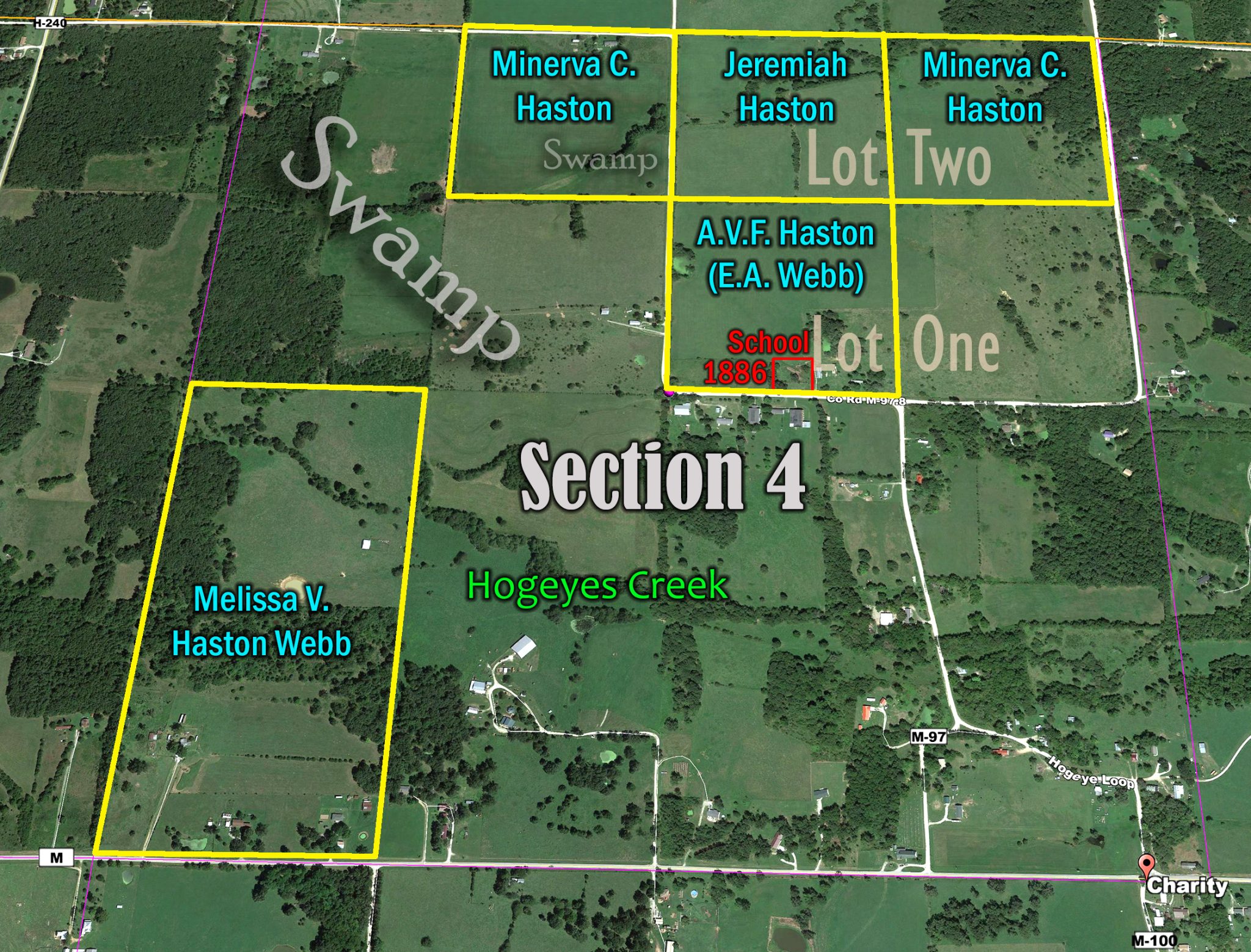
Members of the Haston family-owned five tracts of land in Section 4 of Township 32N – Range 19W. Three of the tracts were clustered around the 39.95 acres issued to Jeremiah on April 15, 1853.
1860 – In addition to Jeremiah Haston (Senior), there were four people in his household at the time of the 1860 census.[i] His son Jeremiah M.C. was living next door to him and son-in-law Matthew Webb and daughter Melissa Webb were one household away.
[i] Year: 1860; Census Place: Jackson, Dallas, Missouri; Page: 240; Family History Library Film: 803617.
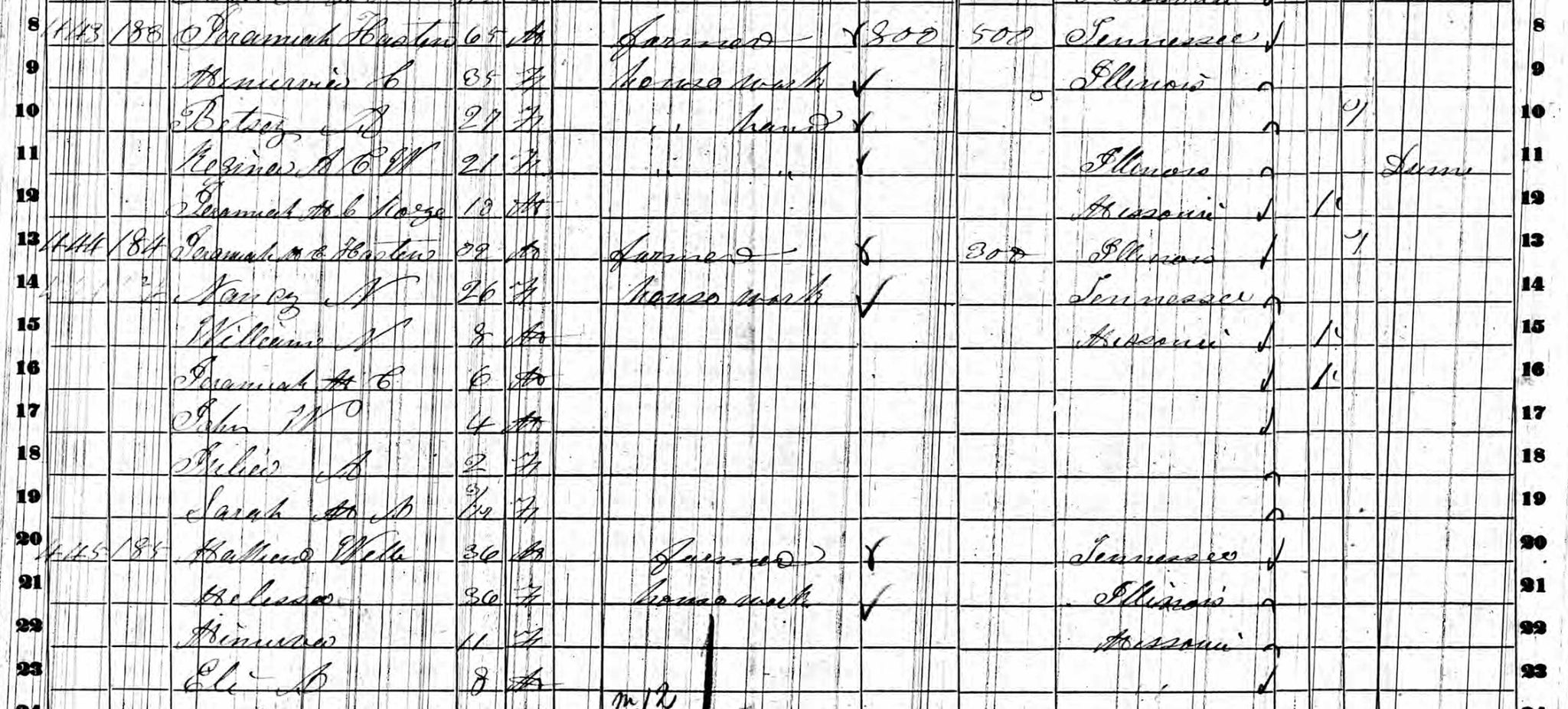
The Civil War
Missouri was a hotly contested border state during the Civil War, with a mixture of sympathizers for both sides. However, Dallas County remained quite firm with the Union. Jeremiah’s Haston family, other than one son-in-law of Jeremiah, appear to have been loyal Unionists. There’s MUCH more to be said about Jeremiah’s family and the Civil War – too much to say here, but it will be said in the book as well as a later posted article.
1870 – Three Haston families were living in a cluster of dwelling houses. Heads of households: Manerva Haston (now in charge of her father’s household), Jeremiah (not “James”) MC Haston, and Melissa Haston Webb.[i]
[i] Year: 1870; Census Place: Jackson, Dallas, Missouri; Roll: M593_773; Page: 175B; Family History Library Film: 552272.
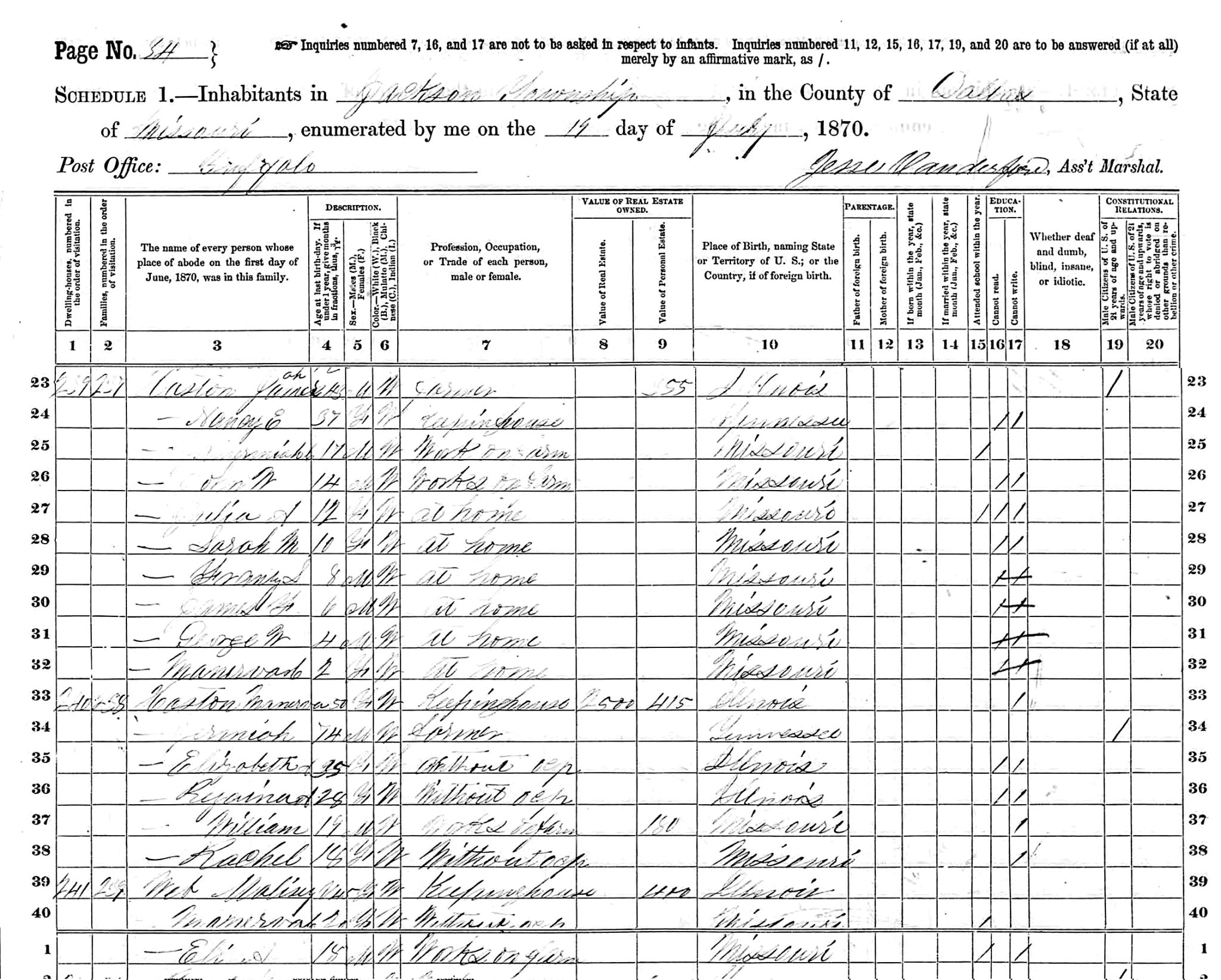
November 10, 1872 – Elizabeth (Betsy) A. Haston, daughter of Jeremiah Haston, married John (Jacob) Moser* (or Mosier) in Dallas County, Missouri.[i] She would have been about 39 years old at the time she married Jacob, who was 42.
[i] Dallas County, Missouri Marriage Book A (1867) and B (1873-1880), 68.
1876 – According to Joan Moore Gillett’s family group record for Jeremiah Haston, this son of Daniel died in 1876 in Charity, Missouri (“1-mile N-Buffalo Rd.”).
The Lost "Haston Cemetery"
There is no record of Jeremiah Haston, Sr. being buried in any of the known cemeteries in Dallas County, Missouri. The same is true for several of his early family members. For the place of Jeremiah Haston, Sr.’s burial, Joan Moore Gillett wrote “Haston Cemetery” in her records, as if other people would know the location of that graveyard. She did say he died in Charity, Missouri, “1 mile N-Buffalo Road.” I assume that was where he was buried–somewhere on his 40-acre farm. From the village of Charity, it is almost exactly one mile north on the road to Buffalo to a high spot on Jeremiah’s 40-acre tract where his homesite was probably located.
The Mystery of a Local Cumberland Presbyterian Church
We know that some, if not all, branches of the Jeremiah Haston family were God-fearing people. Jeremiah and Esther Riddles Haston named their first son, John Wesley Haston–“John Wesley” being the founder of the Methodist denomination. And it is likely that the “Mr. Hastings” who was an 1845 charter member of the Church Grove Methodist Church in Dallas County, MO was the widower, Jeremiah Hastings. That little church group began meeting in the home of David Brundridge, about six miles northwest of where Jeremiah lived.
The Church Grove (Methodist) Class was organized in 1845, by Robert Foster, at the residence of David Brundridge,* with David Brundridge and wife, Catharine, Sarah and Samuel Williamson, Rebecca Maddux, Mary, Sarah, and Melvina Fraker, Susan Taylor, Mr. Hastings and Mr. Vincent as constituent members. This class continued to worship at private houses and schoolhouses until 1871, when its present frame edifice was erected at Church Grove, at a cost of $1,000.
[i] Dallas County Historical Society, 22-23.
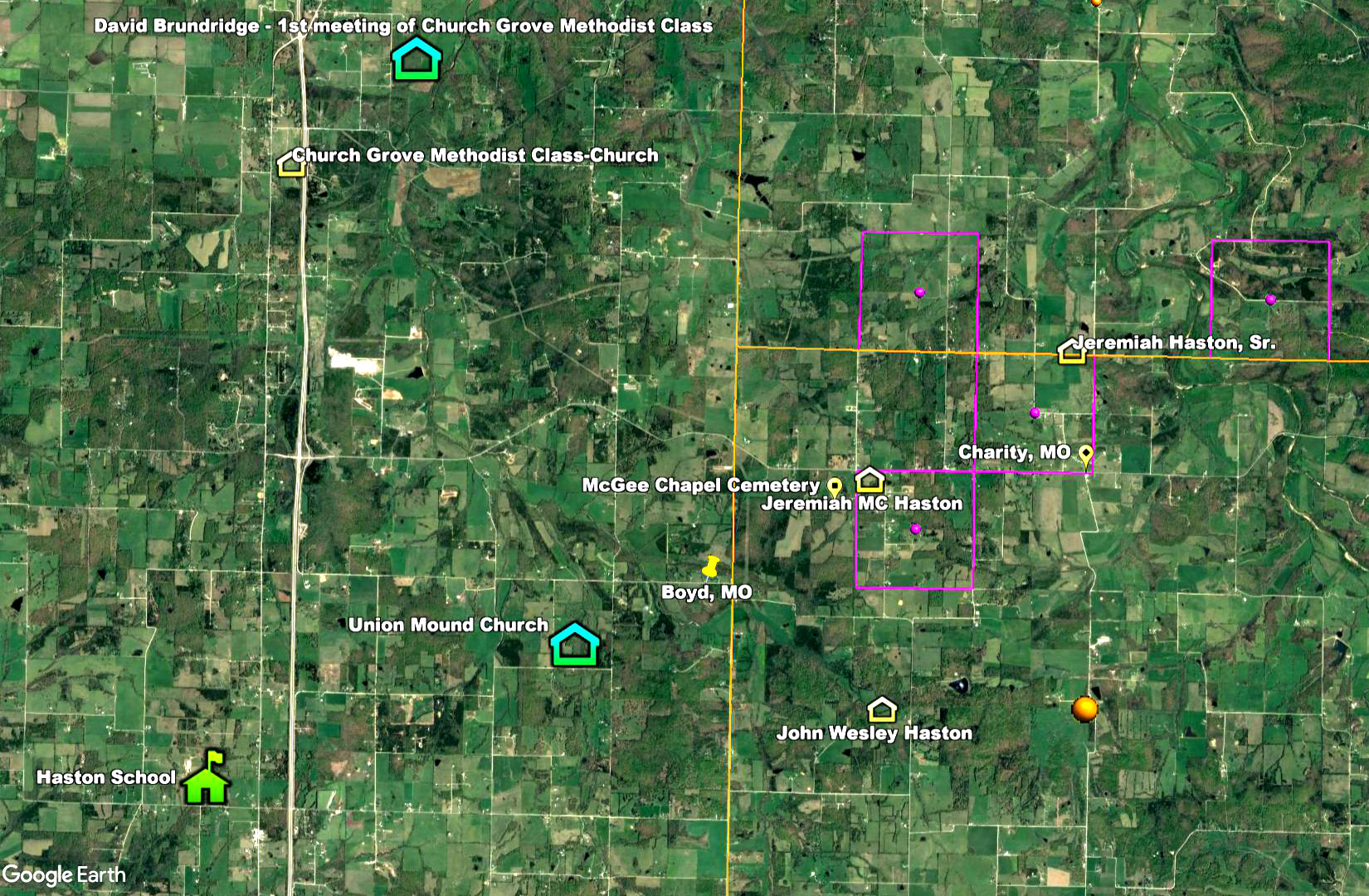
An obituary of John Wesley Haston states that he was a faithful member of a Cumberland Presbyterian Church (Tennessee-based Presbyterian denomination) for more than 50 years. And information from the grandchildren of Jeremiah Haston confirms what was stated in the obituary. But Dallas County historians generally were unaware of a Presbyterian church of any denomination in the county until the latter half of the 19th century. I believe there is enough evidence to say there was a Cumberland Presbyterian Church near where the Hastons live, and early enough that John Wesley Haston could have been a member there for 50+ years.
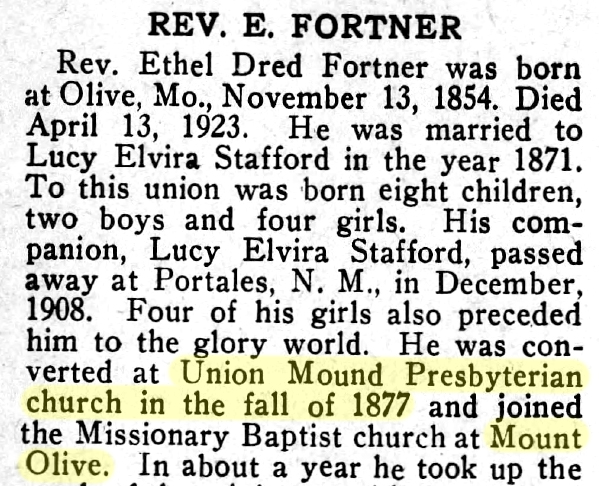
I discovered from an obituary of Rev. E. Fortner that there was a Union Mound Presbyterian Church near the Hastons. And Thelma Kurtz provided a record of Jeremiah Haston being a member there in 1877, the same year as E. Fortner’s conversion.
Probably the reason the existence of the Union Mound Presbyterian Church was generally forgotten was the fact that since 1956 there has been a Southern Baptist Church at that location. Fortunately, Thelbert R. Gott was able to resurrect some important historical information about that church site and its cemetery.
The original building was a log structure, indicating it was probably built in the early decades of the 1800s. The earliest dated tombstone in the cemetery is of a woman who died in 1843.
Even though the obituary does not refer to it as a Cumberland Presbyterian Church, I assume (based on what I know about that denomination in Southwest Missouri at that time) that it was a part of the Cumberland Presbyterian denomination. And it was very close to where John Wesley Haston, the 50+ year Cumberland Presbyteraian, lived.
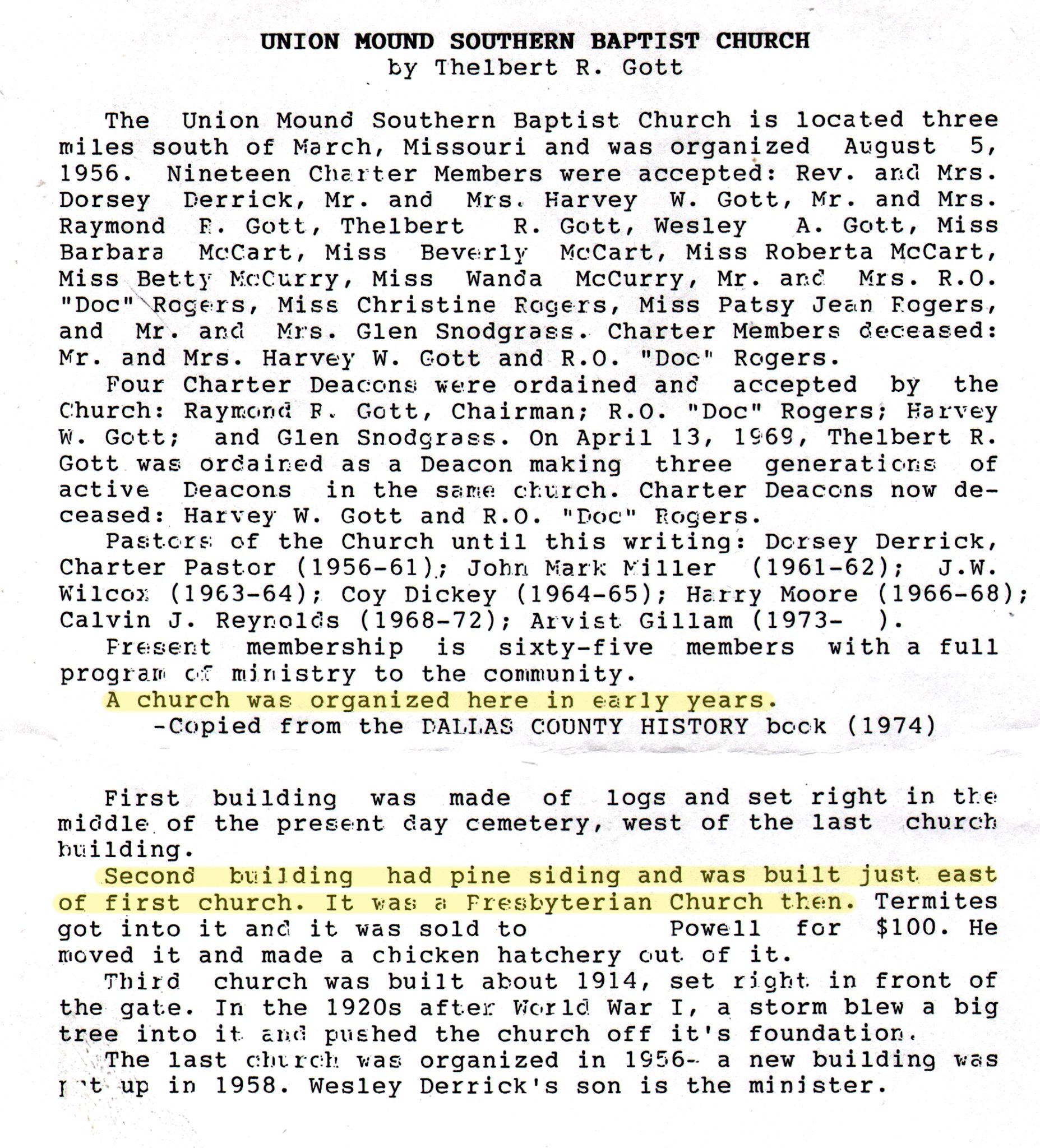
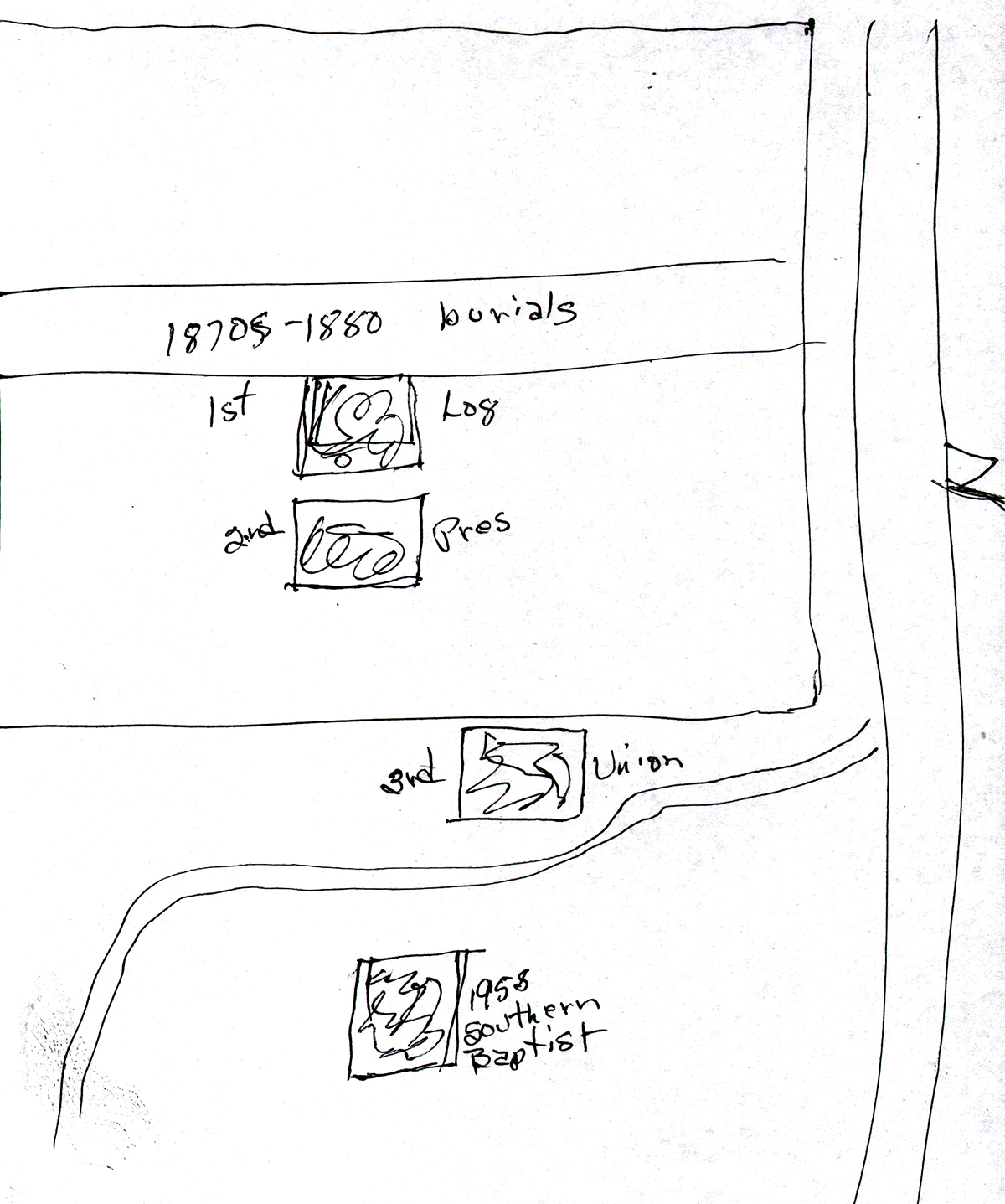
Based on the facts we do have, I speculate that some branches of the Jeremiah Haston family were faithful members of a Cumberland Presbyterian Church at Union Mound, from soon after they arrived in Missouri. Whether or not, Jeremiah, Sr. became a member there–I do not know.
If you appreciated this article, please share it with others who might also enjoy it.

49 – Jeremiah Haston – A “Lost Son” of Daniel Haston Found by DNA

49 - Jeremiah Haston - Lost Son of Daniel Haston Found by DNA
Sometimes you may see his name as Jeremiah MC Haston, but there is no existing evidence that I have found to prove that Daniel’s son Jeremiah had a middle “MC” name, but his youngest son was definitely Jeremiah MC “Mac” Haston.

DNA = Was the Missing Link
When I began researching the Daniel Haston family in 1999, the people I learned from knew a lot about Daniel Haston’s sons David, Joseph, and Isaac. They had learned a little about Jesse Haston and knew that one daughter, Catherine Haston, was the second wife of White County’s John Austin. But, to my knowledge, none of my White and Van Buren County, Tennessee-based Haston research mentors knew that Daniel had a son named Jeremiah Haston. So, obviously, neither did I.
Then, there was the “out-there” (out beyond Middle Tennessee) knowledge (or lack thereof) of Daniel Haston’s children. Some very avid Isaac Haston/Hastings researchers from Missouri and the West Coast admitted they weren’t sure if Isaac was a son of Daniel or not. The same was true with a long-time Haston family researcher in Missouri who descended from Daniel’s son Jesse Haston.
Carol Haston, wife of Jeremiah Haston descendant Howard Haston, contacted me to inform me about her husband’s ancestors. For several years, Carol had sought to find a link from Jeremiah Haston back to Daniel Haston. Carol had become acquainted with Dave and Estelle Haston in Sparta, Tennessee who had done extensive research on Daniel’s family. But Dave and Estelle knew of no link from Jeremiah back to Daniel.
Then I received an email from Claire Aufrance who told me her grandfather (Wallace Martin Davis) was a descendant of Daniel Haston through Jeremiah Haston. The definite nature of Claire’s assertion caught my attention. I learned that Claire had inherited research documents from her grandfather who received them from his cousin, Joan Moore Gillett, who grew up in Greene County, Missouri–not far from where Jeremiah Haston settled in Dallas County, Missouri.
Soon after this connection with Claire, DNA testing became available. Nathan, son of Howard and Carol Haston, submitted DNA which matched perfectly (43 out of 43 markers) with my David Haston’s line DNA and the DNA of descendants from other sons (Joseph, Isaac, and Jesse) of Daniel Haston. All of these DNA samples matched known descendants of Henrich Hiestand, SWISS-German Mennonite immigrant to America. The long-sought link was found!
Then, later we discovered that (unknown to Carol and Claire) there were other descendants of Jeremiah Haston–Jacquelyn Haston and Natalie Swader, for example–who descended from Daniel Haston but were unaware of the final links back to him.

The circumstantial evidence had been there all along:
- The date and place of birth of Jeremiah Haston fits the Daniel Haston family.
- The “Jeremiah” name fits Daniel Haston’s Old Testament naming pattern for his sons. (David, Joseph, Jesse, Isaac, and a Daniel, Junior.)
- Even though referred to by census takers in the early years by the surname of Hasting, Jeremiah’s family gravitated to and generally settled on the Haston surname, which was a move that was contrary to the natural drift away to other variant spellings (as all of us “Hastons” know). That tells me that Jeremiah’s family knew they were connected to the Middle Tennessee family that had chosen to lock-in the “-on” spelling of the family name.
- Jeremiah moved to Polk and Dallas County area of Missouri in the late 1830s, only about 25 miles from where Isaac Haston settled in Greene County, Missouri at about the same time. Further research indicates that Jeremiah’s family almost certainly interacted with Isaac’s family.
- Jeremiah married Esther Riddle and we know that Thomas and John W. Riddle owned land on Cane Creek, near Daniel Haston, as early as 1818. Esther was the son of Thomas (senior) and brother of John W. Riddle.
- Shortly after their marriage, Jeremiah and Esther Riddle moved to Gallatin County, Illinois where some of Esther Riddle’s brothers lived at the time.
- According to the 1840 Federal Census for Polk County, Missouri, a Thomas Riddle and a John Riddle lived near Jeremiah Hasting soon after Jeremiah moved to Missouri.
- Jeremiah Haston had a son, John Wesley Haston, who was born in White County, Tennessee on October 12, 1818. John Wesley Haston married Mary Caroline Forester, who was also a former Tennessean, in Greene County in 1846. The minister who performed their marriage, John Gilmore, lived a few houses away from John Wesley’s Uncle Isaac Haston in Greene County.
Jeremiah Haston - The Three Stages (States) of His Life
As with Jeremiah’s brother, Isaac Haston, his life story unfolds in three states of the USA. But for Jeremiah, these states are Tennessee, Illinois, and Missouri. In this article, I will give you a brief peek at his life in Tennessee and Illinois. In the following article, I’ll focus on Missouri, where he eventually settled spread out his roots, and died.
Tennessee - Where He was Born, Grew Up, and Married
March 28, 1799 – According to a family record created by Joan Moore Gillett, her great-great-grandfather Jeremiah Haston (Senior) was born on this date. If so, he probably was born in East Tennessee, prior to the family’s move to what became White County. Perhaps she got that information from one of Jeremiah’s grandchildren, orally or from a family document.
Census records consistently indicate that Jeremiah Haston was born in Tennessee. He knew it and his children knew it. But documentation for Jeremiah in Tennessee is non-existent, as far as I have been able to determine. I attribute that to the probability that he moved out of Tennessee before he was old enough to show up in tax and court records. Decent farmland around Daniel Haston’s family had been “bought up” by the time Jeremiah needed land to farm.
About January 1818 – The tombstone for Jeremiah’s firstborn, John Wesley Haston, indicates he (John Wesley) was born October 12, 1818. From his birthdate, we can speculate that his parents—Jeremiah and Esther Riddle Haston—may have been married very early in that year or sometime in the latter part of the previous year.
Jeremiah married Esther Riddle, a neighbor girl that he probably had known most all of his life. Even though I don’t have a marriage record for them, there is ample evidence to assert that she was the daughter of John W. Riddle, who lived on the lower end of Cane Creek, probably very close to the Daniel Haston.
October 12, 1818 – John Wesley Haston, son of Jeremiah, was born on this date, according to his tombstone in the McGee Cemetery of southwestern Dallas County, Missouri, near where he had lived. He was the oldest of three (known) sons of Jeremiah and Esther and probably the oldest of their children. Undocumented family records say he was born in White County, Tennessee and that is probably accurate. Isaac and Agnes Haston/Hastings also had a son named “John Wesley” and often family researchers have confused them, but they can be clearly distinguished if you study their lives. In fact, they took very different paths in their lives, especially during and after the Civil War.
Illinois - The Prime Years of His Life
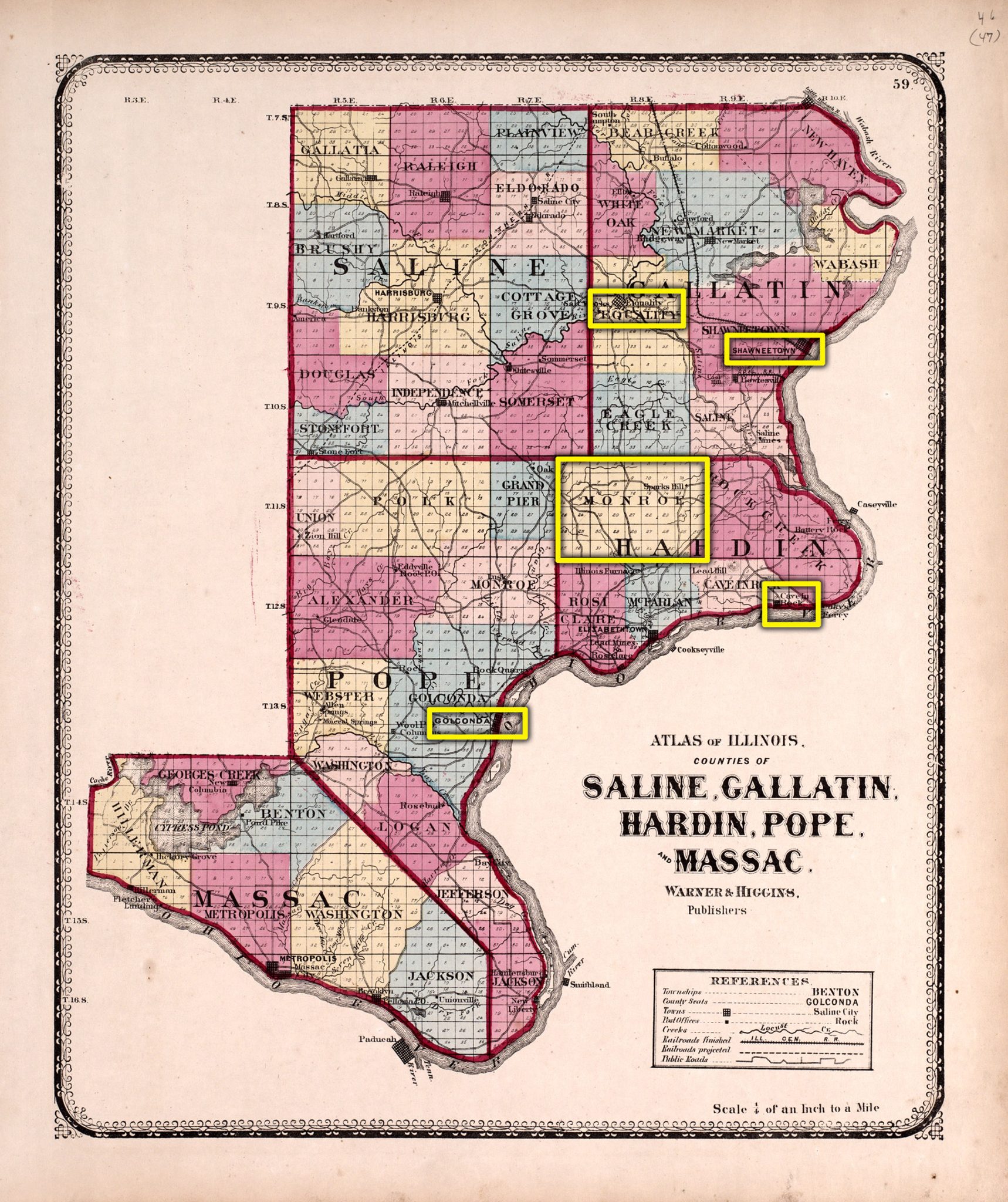
Places to notice on the map:
- Golconda – landing for the Lusk Ferry.
- Gallatin County – county in which Jeremiah Haston’s family lived.
- Monroe Township – township in which Jeremiah and family lived; In 1839, Hardin County was carved out of Gallatin County but Jeremiah’s family had moved to Missouri
- Shawneetown – county seat of Gallatin County, major river town for early 1800s.
- Equality – the location of the main mining operation.
- Cave in Rock – where river pirates lived and robbed passing barges and boats. The infamous Harpe Brothers – who began their murderous rampage near our Hastons in Knoxville, TN – used this cave as a hideout.
Do you see Golconda, Illinois on the map? In the mid-1790s, Major James Lusk, a Revolutionary War veteran, moved his family from South Carolina to southern Illinois. In 1797 Lusk received a license from Kentucky authorities to operate a ferry across the Ohio River. The following year he built a house on the Illinois side and soon became engaged in building a road from his ferry to Green’s Ferry on the Mississippi River to connect pre-Illinois with pre-Missouri.
The Lusk ferry (named changed to Ferguson Ferry, then Berry Ferry later) was the major crossing point on the Ohio for white settlers moving into Illinois and Missouri in the early 1800s. Probably most, if not all, of Daniel Haston’s earlier descendants who moved to Missouri crossed the Ohio River on this ferry. Many of the “Trail of Tears” Cherokee Indians crossed the river on this ferry in 1837 and 1838.[i]
[i] “Golconda’s Illinois History Begins in Kentucky,” The Southern Illinoisan (Carbondale, IL), May 4, 2006, accessed November 5, 2020, https://thesouthern.com/news/opinion/editorial/gelman/golcondas-illinois-history-begins-in-kentucky/article_caba856c-2e61-5779-88aa-a926ecbc3b6e.html.
It’s just a theory, so I can’t say for sure, but I think Jesse and Jeremiah Haston may have started to Missouri together. But, after crossing the Ohio River, they parted ways. Again – just my theory.
We know that Jeremiah sojourned in southern Illinois for 20 years. And there are probably at least two reasons why he did.
- Some of Esther’s (Riddle’s) brothers were there at the time that Jeremiah and Esther arrived there.
- There was a booming salt mining industry up in Gallatin County, Illinois (see the map) at the time. And Shawneetown in that county was a booming river town as well. Again–a theory–but I suspect that Jeremiah became occupied in some facet of the salt mining industry during the time he was in Gallatin County, IL. Again, just my guess.
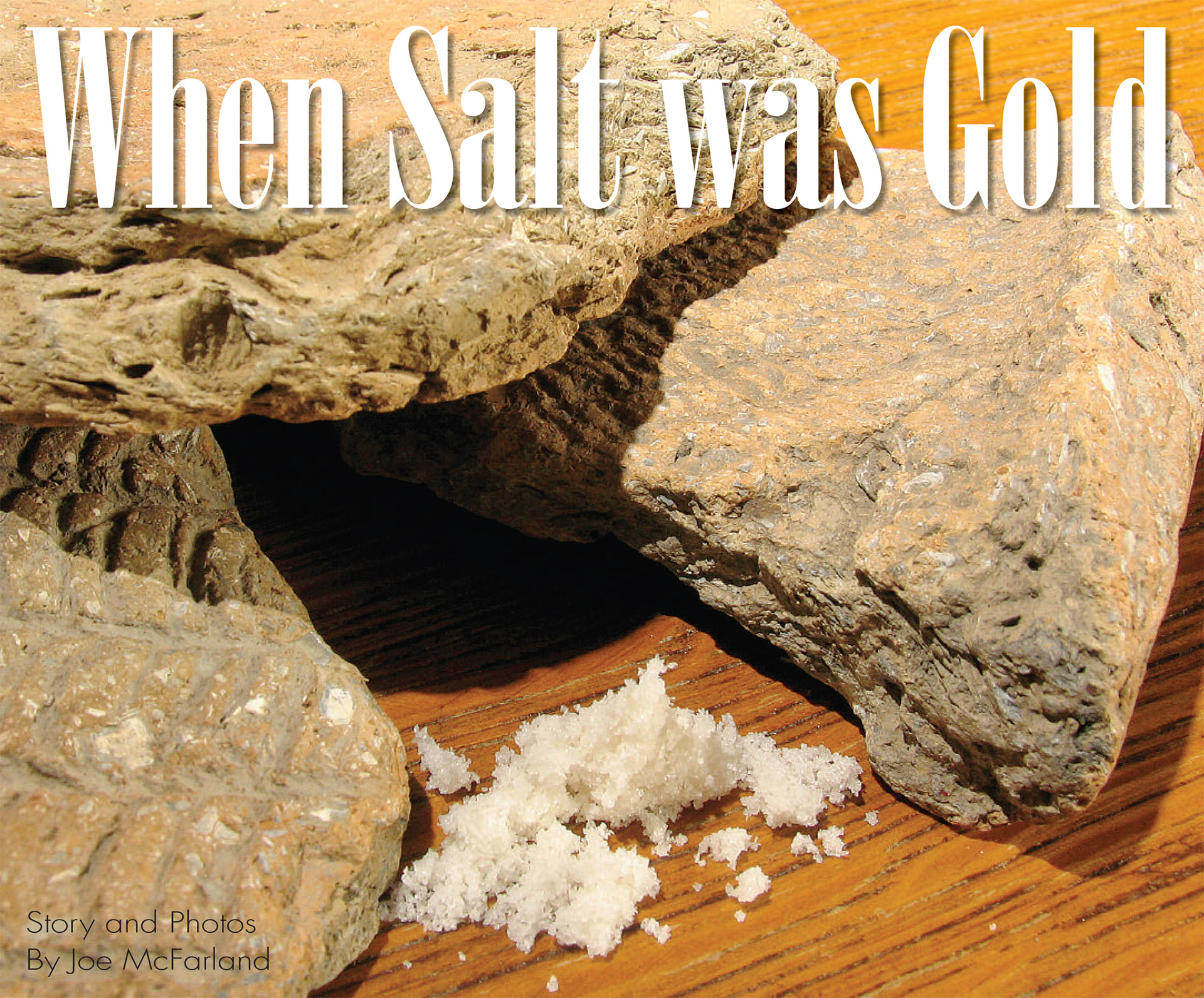
December 25, 1819 – Andrew (A.V.F) Haston, Jeremiah and Esther’s second son, was born on this Christmas day, according to his grave marker. According to census records and a Civil War registration entry, Andrew V.F. Haston was born in Illinois in or about 1819.
About 1822 – According to the 1850 census, Minerva Haston was born in Illinois in about 1822.
September 1824 – According to the 1900 census, Malinda Hastings, the second daughter of Jeremiah and Esther, was born in Illinois in September 1824 and, at age 75, could not read nor write.[i] She married Martin Rose.
[i] Year: 1900; Census Place: Saint James, Phelps, Missouri; Page: 9; Enumeration District: 0101; FHL microfilm: 1240881.
About 1824 – Melissa, daughter of Jeremiah and Esther was born at about this time. Was she a twin of Malinda? Later, we will see that her middle initial was V. Her sister Malinda named some of her children after her siblings, one of which was named Verlene Malissa. That’s probably a good indicator that this 1824 Melissa’s middle name was Verlene. She married Matthew Webb.
1826 – Jeremiah Hastings signed a petition for the creation of a new county, Ohio County. The bill did not pass, because many of the other citizens of Gallatin County where he lived, as well as those in Pope County, were not in favor of a new county then and there
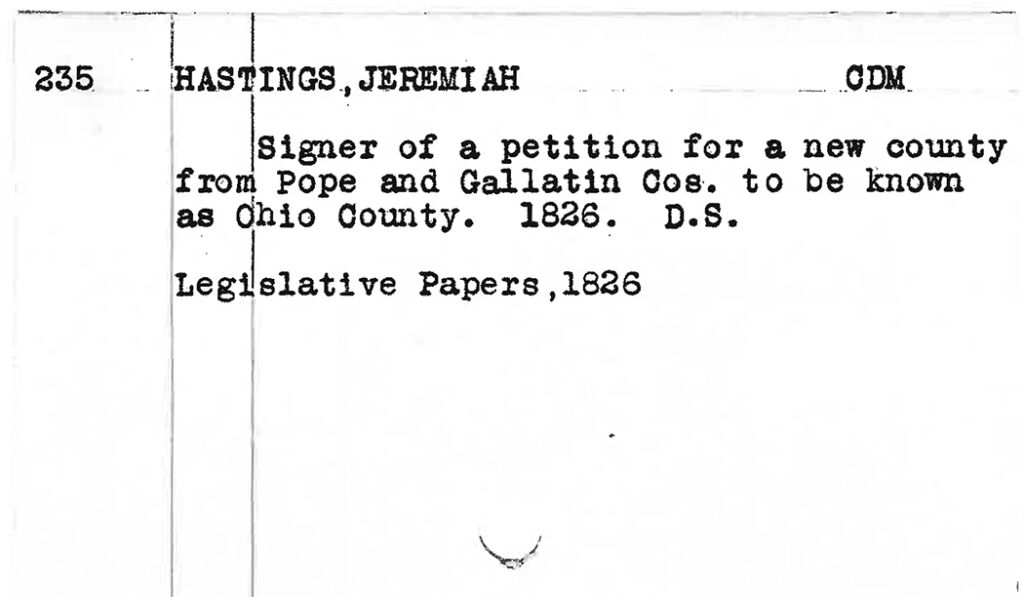
About 1827 or 1828 – Jeremiah M.C. Haston, third son of Jeremiah and Esther, was born in Gallatin County, Illinois.[i] A Bible record belonging to one of his great-granddaughters (granddaughter of his son who was also named Jeremiah M.C. Haston) stated: “Jerimiah McKinly “MAC” Haston and Elizabeth Cooper, his wife.”[ii] During the Civil War, his surname was sometimes incorrectly written “McHaston.”
[i] “Jeremiah Mc. Haston,” Fold3 by Ancestry.com, accessed November 13, 2020, https://www.fold3.com/image/228713063?terms=jeremiah,haston,mc.
[ii] Ruth Davis, email interactions between Sherry Mirkovic and Ruth Davis, December 2002.
Samuel Haston - A lost Son of Daniel?
At the same time Jeremiah Haston was living in Gallatin County, Illinois, a Samuel Hasten (also spelled Haston in Ancestry.com records) married Mary Lowry there on May 31, 1829.[i] But he does not appear on the 1830 census for Gallatin County. The Old Testament name “Samuel” fits the naming pattern of Daniel Haston’s sons. Was this another son of our Daniel? If so, where did he go and what happened to him? If not a son, was he a Hiestand/Haston relative of Daniel?
[i] “Illinois Statewide Marriage Index,” Office of the Illinois Secretary of State, accessed November 5, 2020, https://www.ilsos.gov/isavital/marriageSearch.do.
1830 – Jeremiah Hastings appears on the 1830 census in the Monroe Township* of Gallatin County, Illinois. There was one male in the 30 through 39 age range in the household, one male under five years old, and two males ages 10-14. The one female age 20 through 29 was probably his wife Esther (Riddle). And there were four girls, one under five and three, ages five through nine.[i]
[i] Year: 1830; Census Place: Monroe, Gallatin, Illinois; Series: M19; Roll: 22; Page: 276; Family History Library Film: 0007647.
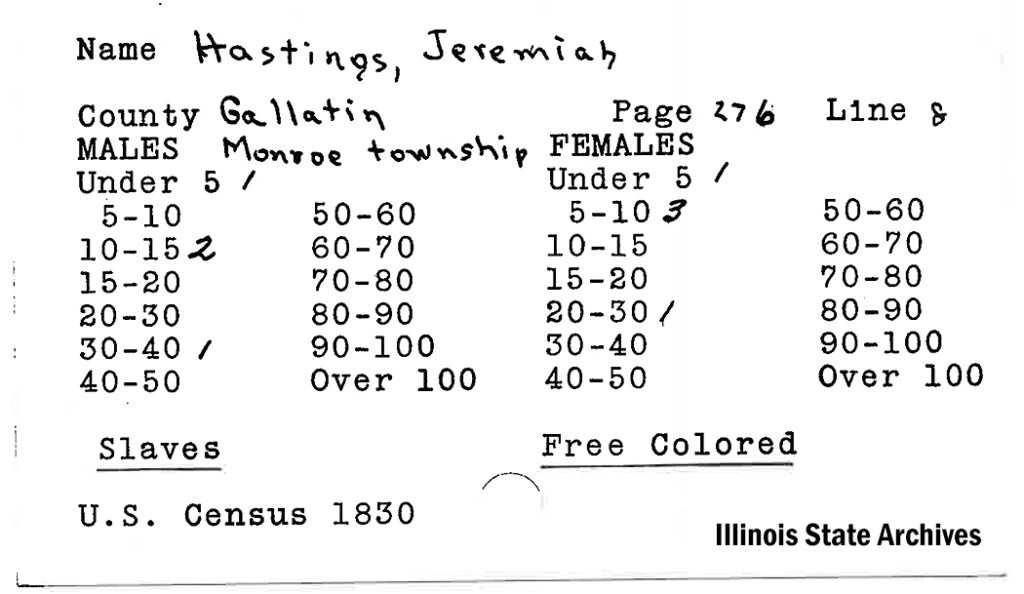
May 30, 1830 – Hester Ann Elvira Haston was born in Illinois, probably Gallatin County. Hester married George Washington Stever, Jr. (born in Madison, Kentucky) on June 1, 1848. George (or “Wash”) married Elizabeth Hill in Missouri on October 24, 1844, but she died in 1848. During the Civil War, George was accused of being a Rebel and was tried by a Union Provost General. There is more about that trial that I’ll tell you about in a later article.
August 1833 – According to the 1850 census, Elizabeth Haston was born in Illinois in about 1833. She was 27-year-old Betsey A. Haston on the 1860 census.
About 1837 – Regina Anne Haston was born in Illinois in or about 1837. Sometimes “Regina” was an alternate name for “Virginia.” She was, as per the census, a deaf mute on earlier records, then by 1880 she was reported to be blind and insane. Regina was probably Esther’s last child. Perhaps Regina’s disabilities were in some way correlated with her birth—maybe indicating problems in child birth that took Esther’s life.
Death of Esther Riddle Haston
Apparently Jeremiah’s wife, Esther, died in Illinois at about this time. We have no record of her death or location of her grave, but family lore tells us she died there and it seems that she wasn’t with the family in Missouri.
November 26, 1838 – Jeremiah Haston owed $1.43 ¾ to the estate of Allen Moore who died in Gallatin County, Illinois on October 23, 1838. Jeremiah’s debt was flagged as “doubtful” (between “desperate” and “good”)[i] This debt appears to be related to medical care. Perhaps this medical care was related to Regina Anne’s birth and/or the death of her mother, Esther.
[i] “Allen Moore,” Gallatin County, Illinois Probate Files (1815-1860), “M” in Box 64.

1838 – According to the records of Joan Moore Gillet, this was the year that Jeremiah Haston moved his family to Missouri, and possibly the year that his wife, Esther, died. Jeremiah was probably gone from Illinois when the Allen Moore estate was settled.
A “Haston” entry in History and Families of Gallatin County, Illinois 1812-1988, states:
Jeremiah Hasting or Haston born 1795 in Tenn. came to Gallatin Co. Illinois before 1830. He and part of his family moved to Dallas Co. Missouri and were among the first families to settle there around 1840.[i]
Note: This information apparently submitted to the book’s editors by an unknown member of the Jeremiah MC Haston branch of Jeremiah Haston’s family. Is the “part of his family moved to Dallas Co. Missouri” statement accurate? IF so, what part remained in Gallatin County, Illinois or moved elsewhere?
[i] History and Families of Gallatin County, Illinois 1812-1988. (Paducah, KY: Turner Publishing Company, n.d.), 146.
“Stay tuned” for part 2 (the next article) – Jeremiah Haston and his family in Dallas County, Missouri.
I Recommend FamilyTreeDNA for Genealogical Research

If you have questions about DNA testing, contact me – Wayne Haston

If you appreciated this article, please share it with others who might also enjoy it.

47 – Jesse Haston – A Missouri Pioneer with His Three Wives and 21 Children!
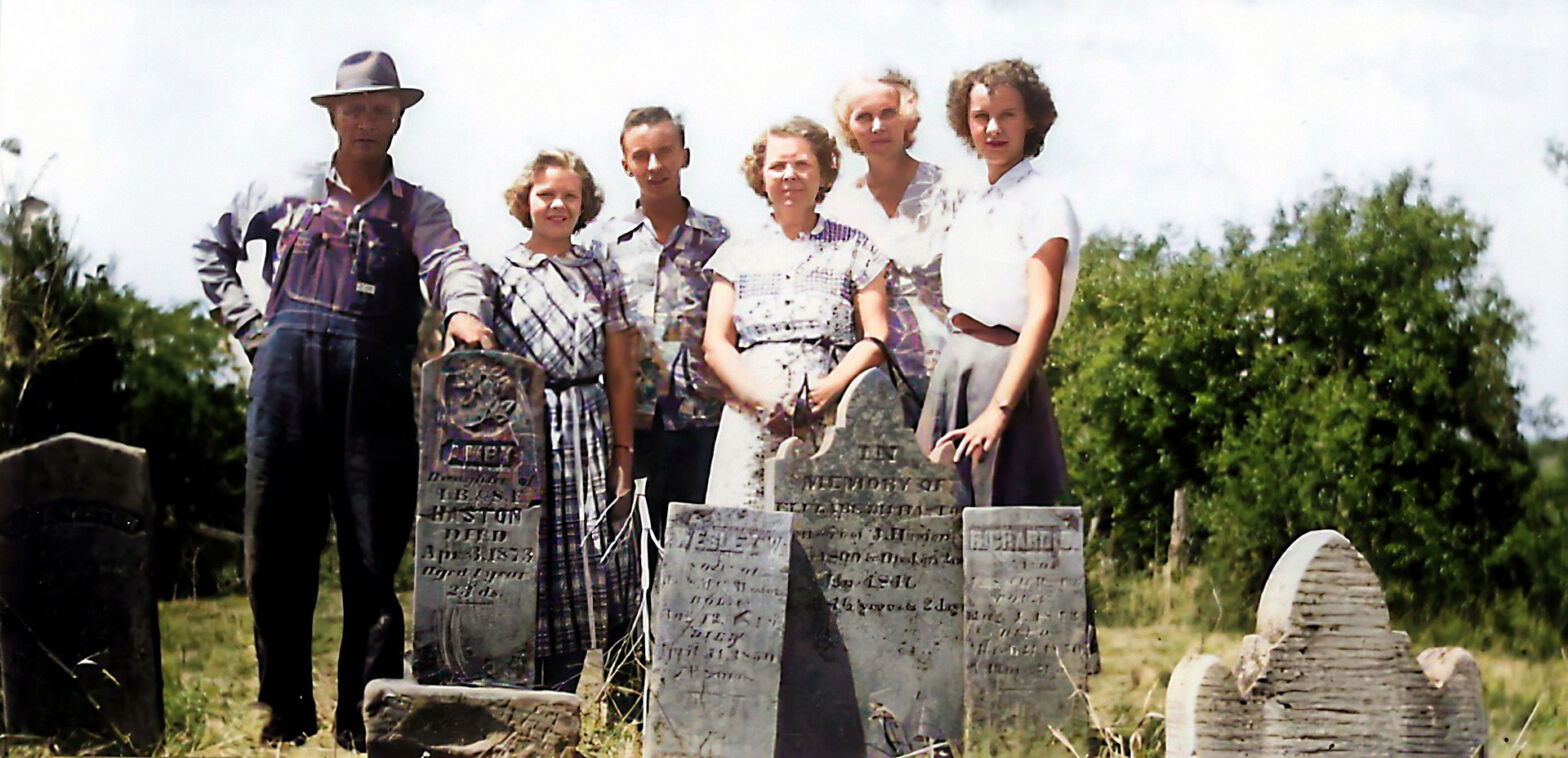
47 - Jesse Haston, Missouri Pioneer With 3 Wives & 21 Children
Part 1 - Until the Civil War
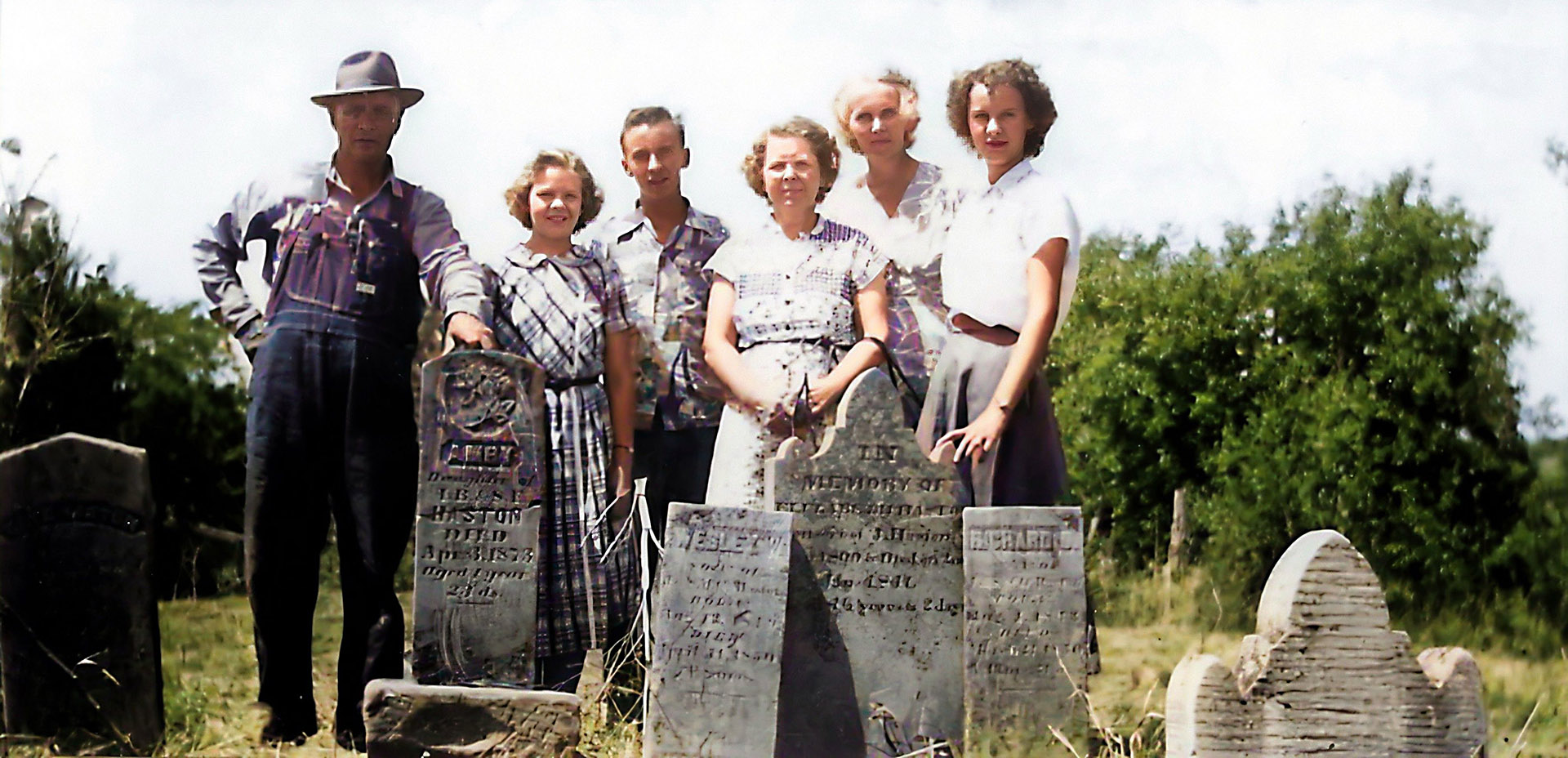
Of Daniel Haston’s sons, Jesse was the most unique in several ways. He was the first son to move west of the Mississippi River. He was a slave owner. He became a wealthy man, by local standards. He had three wives and 21 children. And he was the only son of Daniel who was murdered.
January 2, 1796 – According to Jesse Haston’s tombstone, he was born on this date. If, as I suspect, the 1796 date for Jesse’s birth is correct, he was very probably born south of the Holston River, “opposite Knoxville,” in Knox County, Tennessee.
As the title says, he had three wives and 21 children. No, he wasn’t married to all three of them at the same time. Unfortunately, his first two wives died before he did.
First Wife: Elizabeth Gillentine
Jesse married Elizabeth Gillentine. Nicholas and Jane Elizabeth Terry Gillentine were neighbors to Daniel Haston’s family in the early years of White County. Nicholas Gillentine was a prominent civic leader in White County and a leader in the Big Fork Baptist Church, which was located about one mile from the Daniel Haston homestead.
December 5, 1800 – According to her brother’s (John Gillentine’s) Bible record, Elizabeth was born on this date. Another record by a family researcher gives her date of birth as February 4, 1801, so who knows for sure?
December 12, 1815 – Without stating a source, Howard H. Hasting, Sr. recorded that Jesse married Elizabeth Gillentine on December 12, 1815. If correct, this would have meant Elizabeth was just over 15 years old when she married, which was not uncommon at that time.
Thirteen of Jesse’s 21 children were born to Elizabeth.
Child | Birth | Death |
Jane Haston | February 15, 1817 | |
Polly/Mary Haston | October 16, 1818 | June 13, 1819 |
James A. Haston | October 2, 1819 | January 1, 1820 |
Missouriana Haston | December 18, 1820 | December 26, 1864 |
William Asbury Haston | April 10, 1823 | August 1893 |
Abi Alburn Haston | May 6, 1825 | April 8, 1917 |
Nicholas G. Haston | July 27, 1827 | September 1, 1857 |
Ann Eliza Haston | December 5, 1828/29 | December 15, 1849 |
Mandy Melvina Haston | October 1, 1832 | |
Thomas Jefferson Haston | August 6, 1834 | 1889 |
Elizabeth Haston | June 30, 1838 | |
Jesse Haston | March 10, 1841 | September 1896 |
Isaac B. Haston | December 27, 1842 | September 9, 1890 |
1818 – The 1894 biographical sketch for Jesse Haston, Jr. (son of the Jesse Haston of this chapter) states that the elder Jesse Haston moved to Missouri from east Tennessee in the year of 1818. With regard to Missouri in 1818, the “when the people of that State had still to live in forts to protect themselves from the Indians” phrase is particularly interesting.[i]
[i] Joaquin Miller, An Illustrated History of The State of Montana, (Chicago, IL: The Lewis Publishing Company, 1894), 403.

March 31, 1820 – There were two letters for Jesse Haston remaining in the Post Office at Franklin of the Missouri Territory.[i] Franklin is located in the southcentral part of Howard County, approximately 20 miles southeast of Glasgow, Missouri where Jesse later settled. Apparently Jesse was already in Missouri at this time or his folks back home expected him to be there.
[i] “List of Letters,” Missouri Intelligencer (Franklin, Missouri), April 22, 1820, 4.
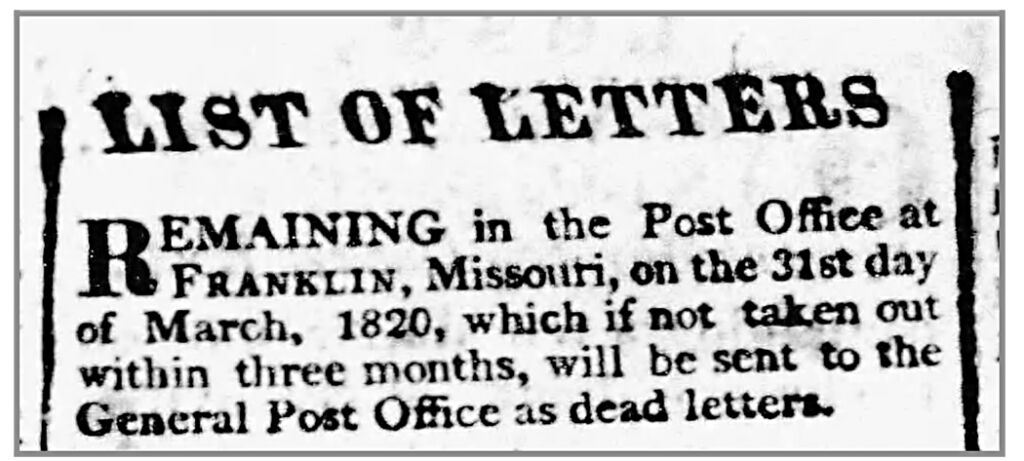
August 10, 1821 – The area that became Missouri was a part of the Louisiana Purchase Treaty of 1803. On July 4, 1805 it became an organized incorporated territory, the Louisiana Territory. On June 4, 1812 it was renamed the Missouri Territory. Prior to Jesse Haston’s arrival in Missouri, a petition requesting statehood was circulated in Missouri in 1817.
Statehood for Missouri became more difficult than the 1817 Missourian petitioners imagined. By 1820 Missouri had enough inhabitants—more than 70,000—to become a state. A thirteen-county area (including where Jesse lived) of central Missouri came to be called Little Dixie but was more akin to Virginia than the Deep South.[i] The southern influence in Missouri, not only in Little Dixie, complicated the territory’s path to joining the United States. Finally, on August 10, 1821 President Monroe issued the following statement: “The admission of the said State of Missouri into this Union is declared to be complete.”[i]
[i] Meyer, 157.
[i] David Hackett Fischer and James C. Kelly, Bound Away: Virginia and the Westward Movement. (Charlottesville, VA: University of Virginia Press, 2000), 178.
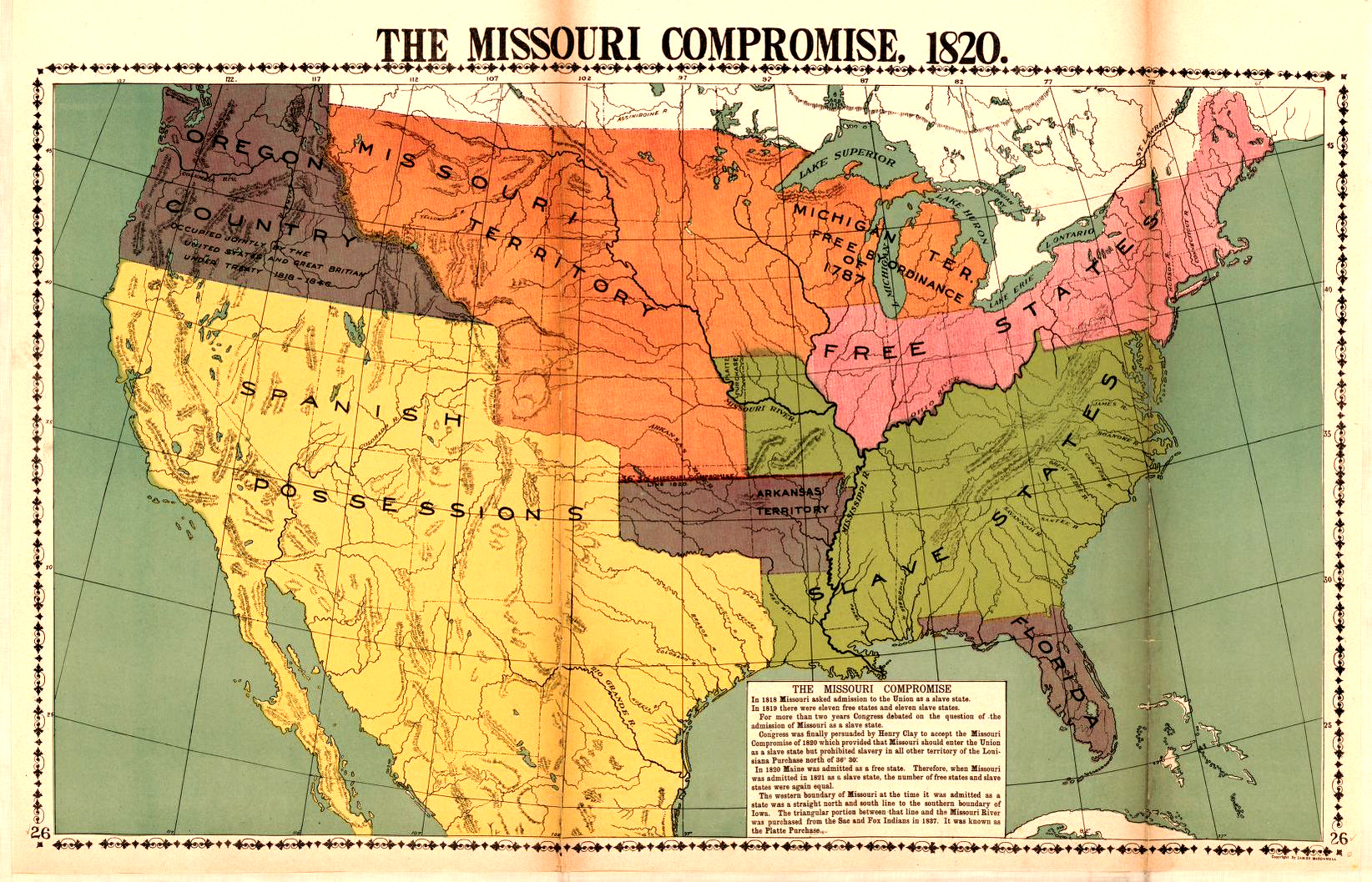
Mexican War, 1846-1848
Missourians took a special interest in the Mexican-American War. Despite the blustering of Missouri Senator Thomas Benton that men from his state could win the Second Seminole War (1835-1842) if only given the chance, 450 of the 600 Missourians in that war deserted or were discharged. Consequently, “the charges of cowardice refused to dissipate and left a permanent stain on the psyche of Missouri manhood.”[i] Missouri men saw the Mexican War as an opportunity to remove that stain and redeem their reputation as brave men.
[i] Patrick W. Naughton, Jr., “Colonel Alexander Doniphan and the 1st Regiment of the Missouri Mounted Volunteers in the Mexican-American War: A Historical Case Study on the Complexities of Cultures and Conflict in New Mexico.” (Master’s thesis, U.S. Army Command and General Staff College, 2018), 11.
On June 5, 1846, Company G of the 1st Regiment of Missouri Mounted Volunteers was organized in Fayette, Missouri. They marched to Fort Leavenworth, Kansas and arrived there on June 15, 1846. Twenty-year-old William Asbury Haston, Jesse and Elizabeth’s son, was mustered in there for a term of service of 12 months. William served in Company G, a part of Doniphan’s regiment, under Captains Congrave Jackson and H.H. Hughes. When the 1st Regiment of Missouri Mounted Volunteers mustered at Fort Leavenworth they began training for combat.
Jesson Haston Family Graveyard
February 2, 1847 – Elizabeth (Gillentine), the first wife of Jesse Haston, died on February 2, 1847 in Howard County, Missouri. She is buried in the Haston Cemetery on their farm, near Glasgow, Missouri.
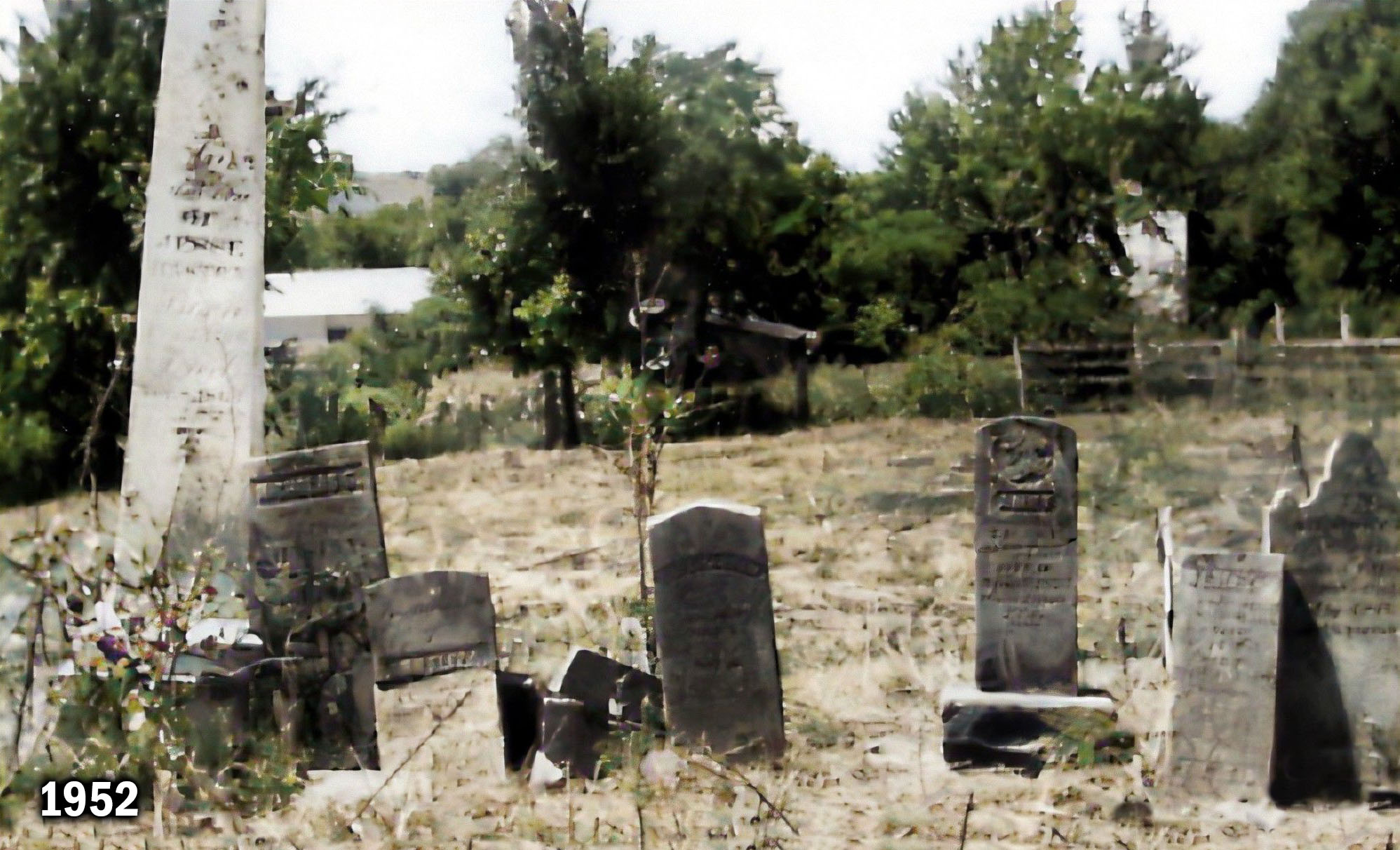

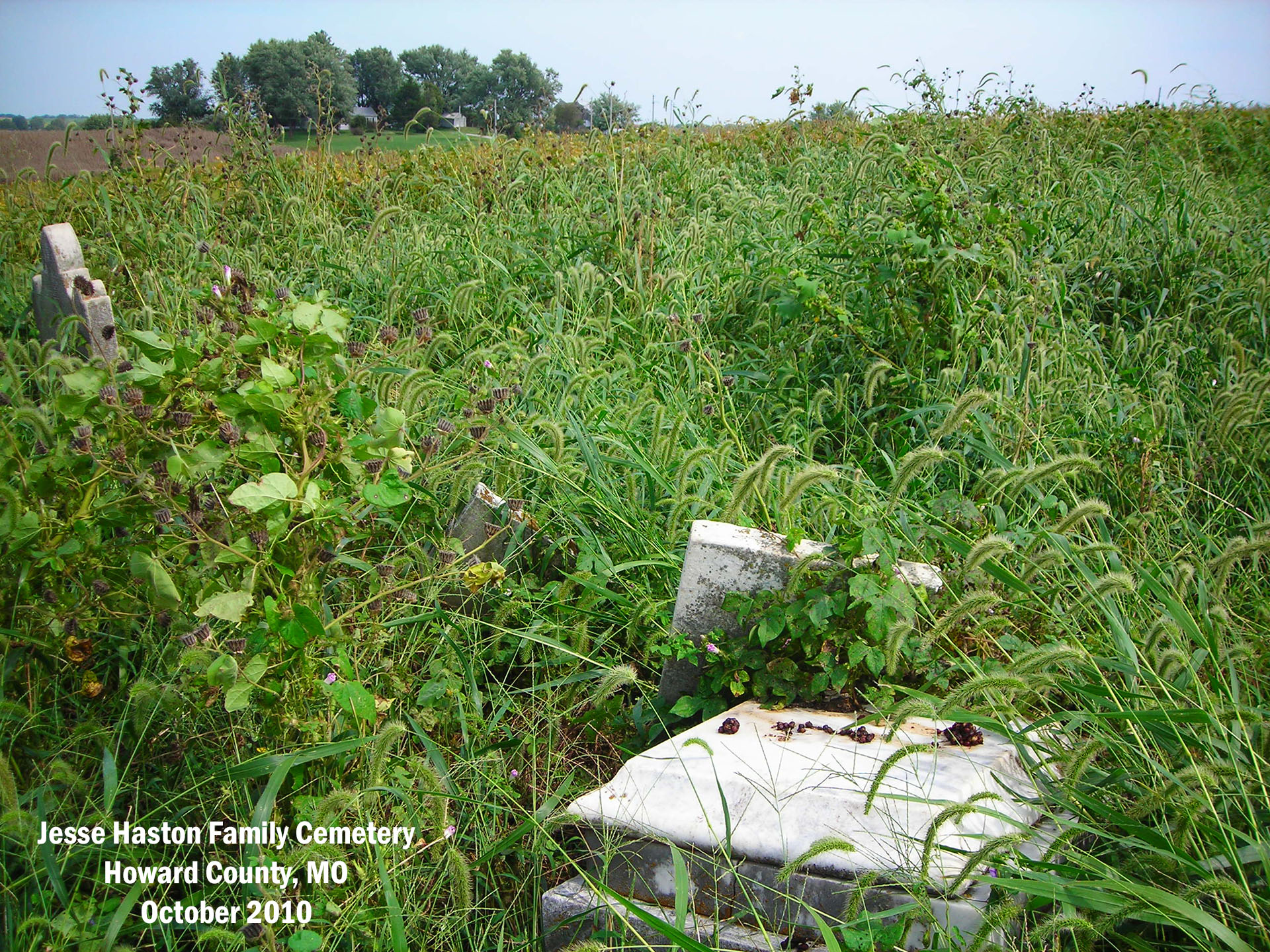
Second Wife: Susan M. Caroline White
Fall of 1847 – With a house full of kids and no mother around for them, Jesse married Susan M. Catherine White. Susan had previously been married to a Mr. White.* She was born July 14, 1809. According to the 1850 census, Susan’s birth occurred in Virginia. A 10-year-old boy, Thomas White, was part of the household at the time of the 1850 census but had not attended school in the previous year, as Jesse’s school-age children had done. Jesse and Susan had three children together, all of which died very young.
Child | Birth | Death |
Richard O. Haston | August 1, 1848 | March 21, 1850 |
Wesley Wilber Haston | August 12, 1849 | April 11, 1850 |
Unnamed infant |
|
|
Before 1850 – Jesse built this house near Glasgow, Missouri sometime before 1850. He lived there until his death and no doubt died there. The house stood until sometime after 2003.

March 9, 1852 – Jesse’s wife, Catherine M.,* died,[i] possibly while giving birth to the unnamed infant, her third child—none of which lived out of infancy. She and her children are buried in the Haston Cemetery on what was Jesse’s farm.
[i] Glasgow Weekly Times (Glasgow, Missouri), March 11, 1852, 2.

Third Wife: Annie Juliet Barnes
February 16, 1854 – Jesse married Annie J. (Juliet) Barnes, who was 21 years old and 36 years younger than Jesse.[i] In 1850, Jesse’s future (third) wife was only 18 years old and living with her parents in Carroll County, Missouri, approximately 60 miles northwest of where Jesse lived.
[i] “Married,” Glasgow Weekly Times (Glasgow, Missouri), February 23, 1854, 2.

In their marriage announcement, Jesse is referred to as “Capt. Jesse Haston.” A couple of his children’s obituaries also refer to him as “Captain.” Apparently, he was or had been a militia captain, a position that was elected by members of the group. Or maybe the title was an honorary one bestowed on him by friends and neighbors—which sometimes happened.
Annie Barnes, the daughter of Steward W. and Anne Barnes, was born in Maryland on February 5, 1832. Jesse had several living children that were older than his new (1832-born) wife. Even at age 57, Jesse was still “making babies”—five of them in the next 10 years and four months. He was 68 years and 10 months old when Annie, his last child, was born.
Child | Birth | Death |
Ann Elizabeth Haston | December 1, 1855 | |
Kate Haston | July 9, 1857 | December 27, 1875 |
Ida Lutia Haston | July 21, 1859 | December 7, 1926 |
Lillian Haston | August 20, 1861 | November 2, 1946 |
Any (Annie)* Haston | June 2, 1864 | May 8, 1936 |
March 8, 1855 – Miss Amanda M. Haston, daughter of Jesse and Elizabeth, married Dr. John H. Barnes of Columbia, Missouri.[i]
John was the six-year-older brother of Amanda’s stepmother, Annie Juliet Barnes Haston. At age 24, he was a dentist, as per the 1850 census.[ii] That explains the Dr. prefix to his name. Imagine this: His stepmother-in-law was his younger sister!
[i] “Married,” Glasgow Weekly Times (Glasgow, Missouri), March 15, 1855, 3; Howard County, Missouri Marriage Book 3, 246.
[ii] Year: 1850; Census Place: District 15, Carroll, Missouri; Roll: 395; Page: 16b.


Missouri was one of the 17 states, plus the District of Columbia, for which a “Slave Schedule” was enumerated as an auxiliary to the 1860 Federal Census.
Jesse owned twelve slaves, which apparently were kept in two slave houses. Two of his young slaves—both age 6 female mulattoes—were fugitives from the state.[i] These 12 slaves were probably considered to be part of Jesse’s $17,000 of personal property. Louise Haston Rice told me in 2010 that when the house Jesse built prior to the Civil War was torn down sometime after 2003, chains and shackles were found in the basement of the old house. I suppose those were for uncooperative slaves.
[i] The National Archives in Washington DC; Washington DC, USA; Eighth Census of the United States 1860; Series Number: M653; Record Group: Records of the Bureau of the Census; Record Group Number: 29.
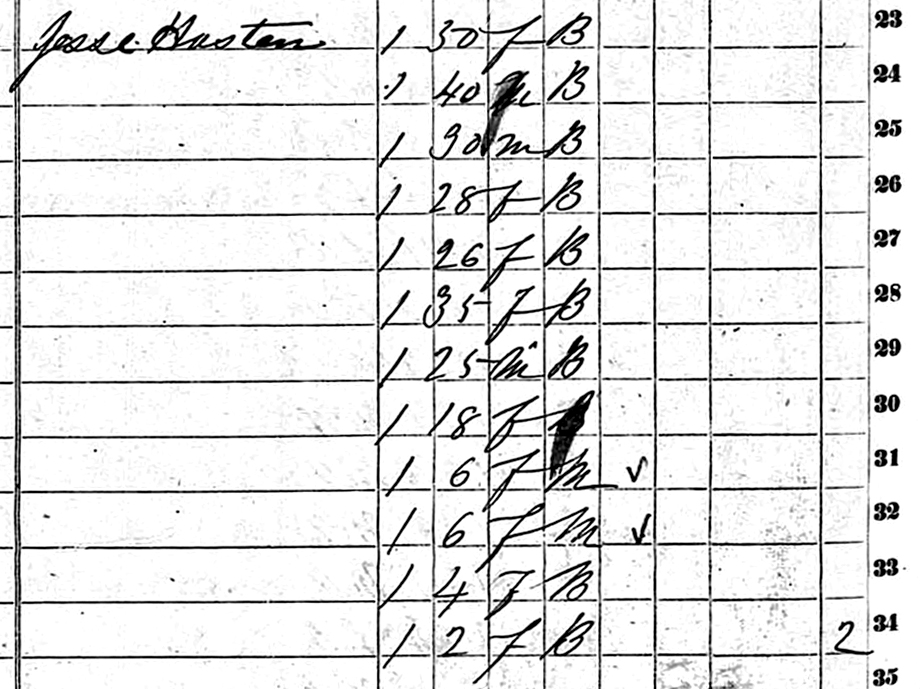
Jesse was the only son of Daniel Haston who was a slaveholder. If Daniel had lived long enough to know his son owned slaves, I think he would not have been pleased with Jesse.
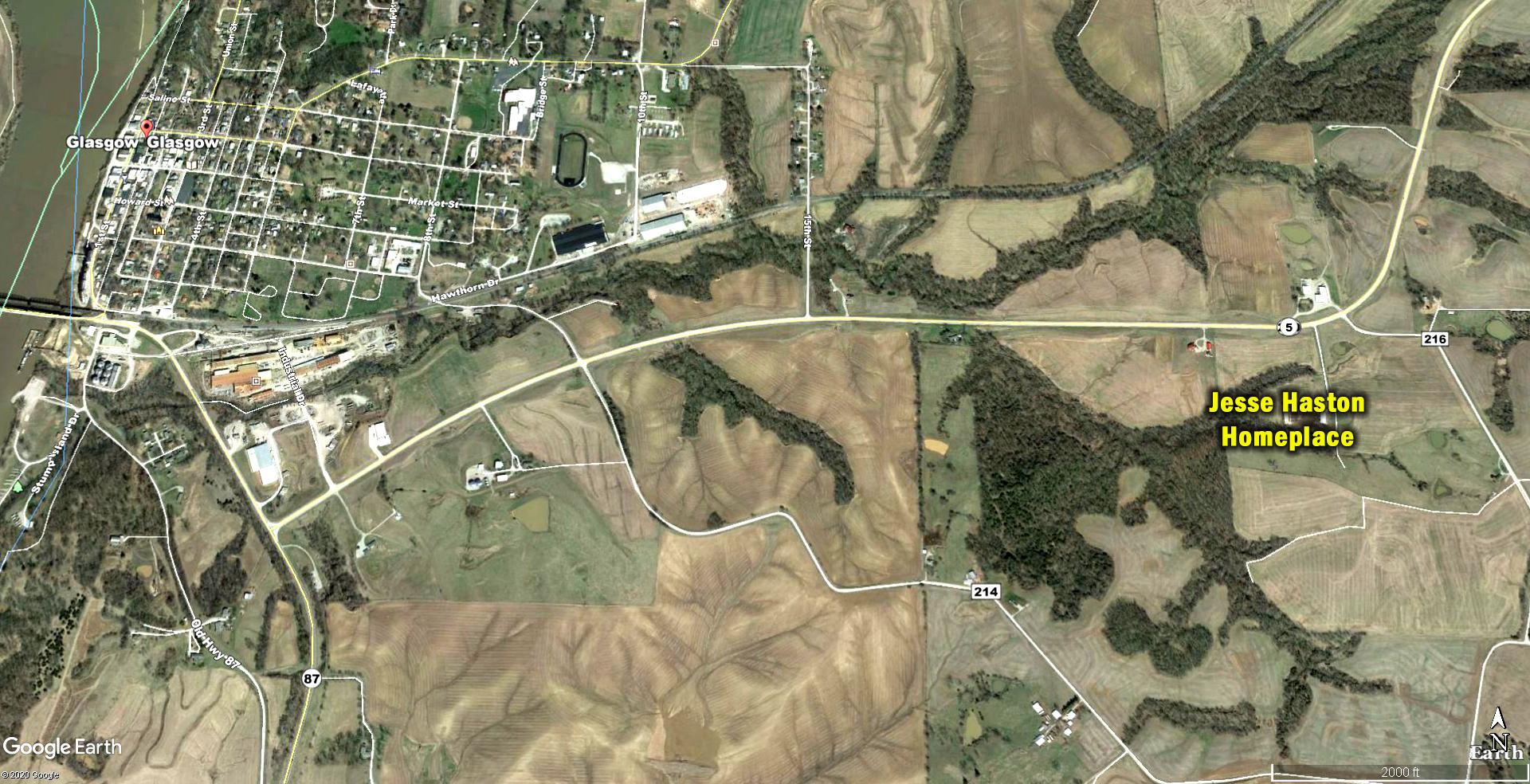
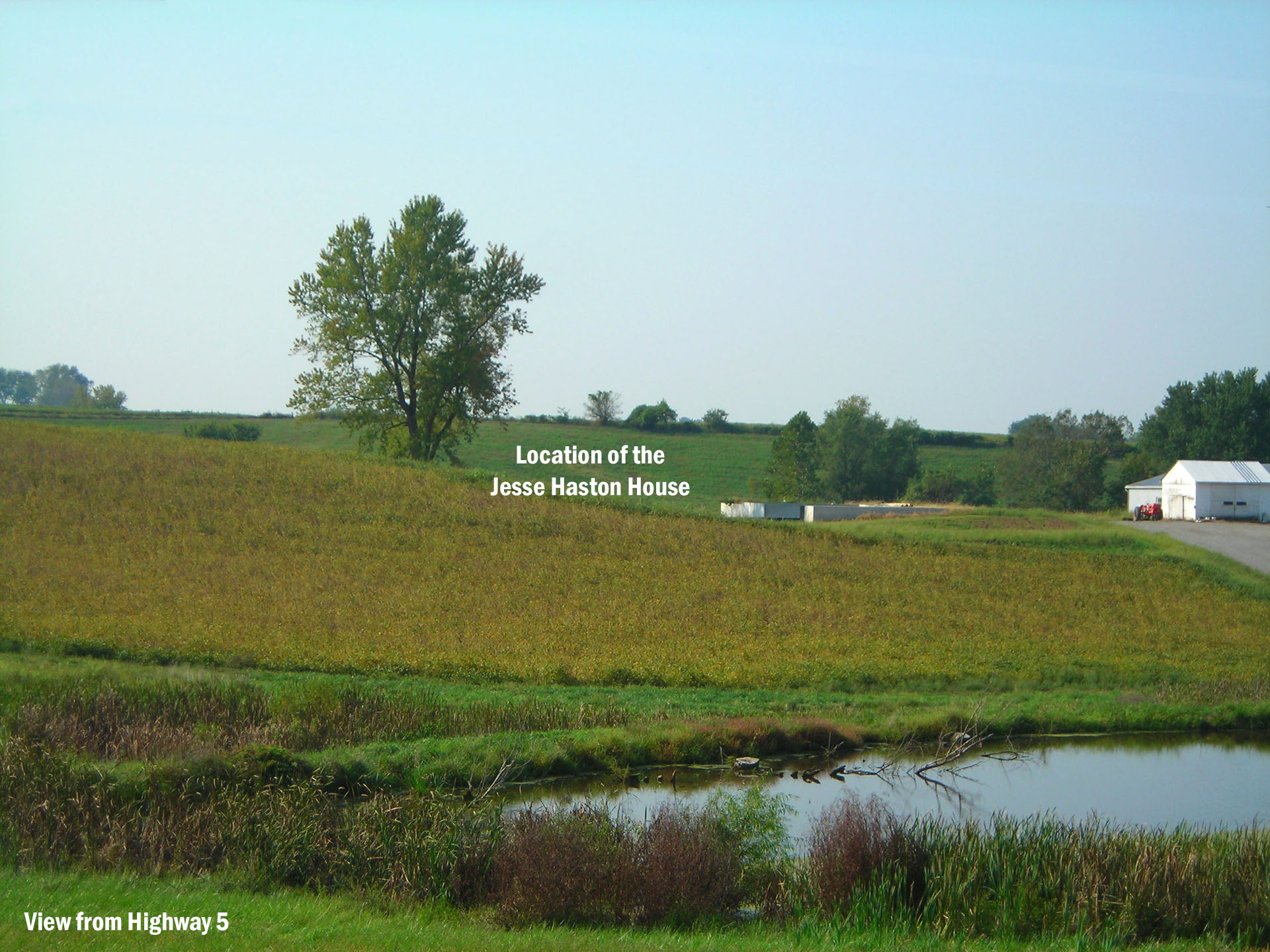
In the following article (#48), you will learn about some significant happenings in the Jesse Haston family: his death by an ambusher’s bullets, some of his sons’ involvement in the Civil War, an attempted sexual assault on his youngest daughter, her brother’s attempt to kill the assailant, his grandson who received a Congressional Medal of Honor, and more.
If you appreciated this article, please share it with others who might also enjoy it.

48 – Jesse Haston – His Family’s Civil War Years and Following

48 - Jesse Haston's Family in the Civil War Years and After
Some Selected Highlights

Some of Daniel Haston’s grandsons and great grandsons joined the Union Army. Others, especially those who remained in Tennessee, chose to suit up in grey. None of the Tennessee Hastons I know of were slave owners. They were probably defending the right of states to decide their own laws and choose their own courses of action. Jesse Haston was the only son of Daniel for which slavery itself was probably a major issue in choosing a side to support.
Howard County, MO in the Heart of "Little Dixie"
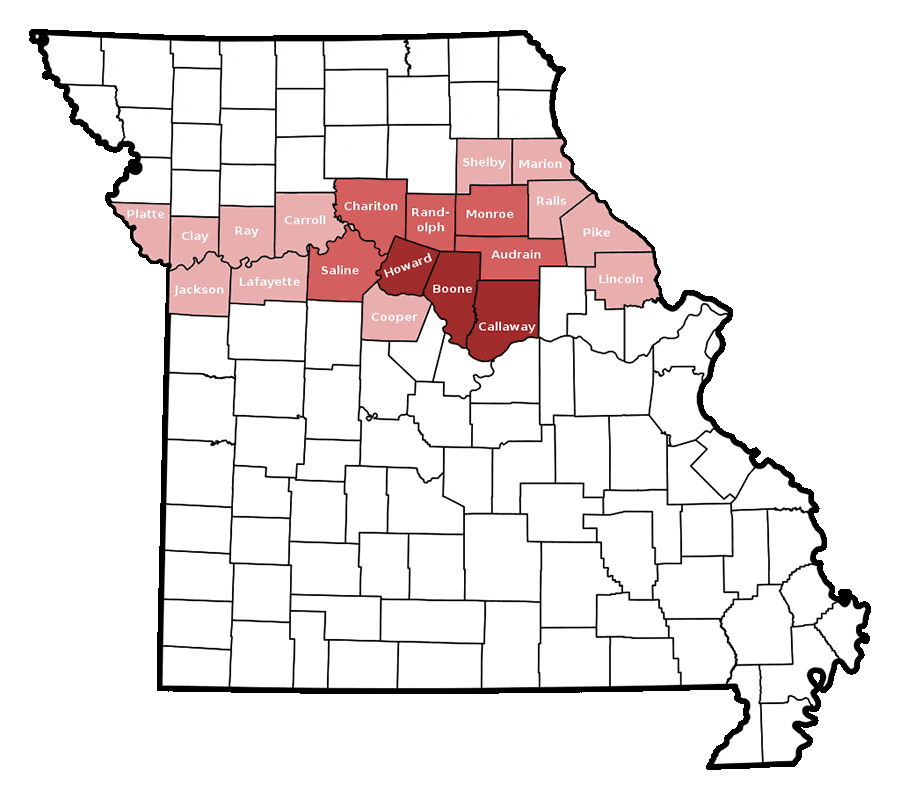
Little Dixie was a historic 13- to 17-county region along the Missouri River in central Missouri, United States. Its early European-American settlers were largely migrants from the hemp and tobacco districts of Virginia, and central Kentucky and Tennessee. They brought enslaved African Americans with them or purchased them as workers in the region. Because Southerners settled there first, the pre-Civil War culture of the region was similar to that of the Upper South. -Wikipedia
Consequently, this region was a major hot spot during the Civil War. The Union Army targeted it, Confederate sympathizers tried hard to protect it, and guerilla sniping and raiding was prevalent by enlisted soldiers, militia fighters, and civilian partisans on both sides. As a prominent slave owning family in Howard County, Missouri (the heart of Little Dixie), Jesse and his family paid the price for its choice of loyalties.
Thomas Jefferson Haston
Early in the war (January 26, 1862), Jesse’s son Thomas J. Haston “came in with Mr. M_____ and requested to take oath” – oath of allegiance to the Federal Government. Whether or not T.J. was pressured to swear the oath, we do not know.
I can only speculate about Thomas Jefferson Haston’s oath—which is risky busy for a historian—so please consider my thoughts as nothing but speculation. Knowing what was happening in “Little Dixie” of north-central Missouri in 1861-1862 and Jesse Haston’s pro-slavery bias, I’m guessing that Jesse’s son had participated in anti-Union activities that marked him as an enemy of the United States. As 1862 approached, rumors of the Union Army’s impending harsh orders regarding southern guerillas were beginning to circulate and Thomas Jefferson Haston may have decided to sign the oath rather than risk his life. From what I can tell, it appears that he remained out of trouble for the remainder of the war. He was referred to as Colonel Thomas J. Haston in the latter years of his life, but there is no evidence (that I have seen) to indicate he was in either army, other than an October 16, 1931 widow’s pension application for Federal service that apparently was rejected.
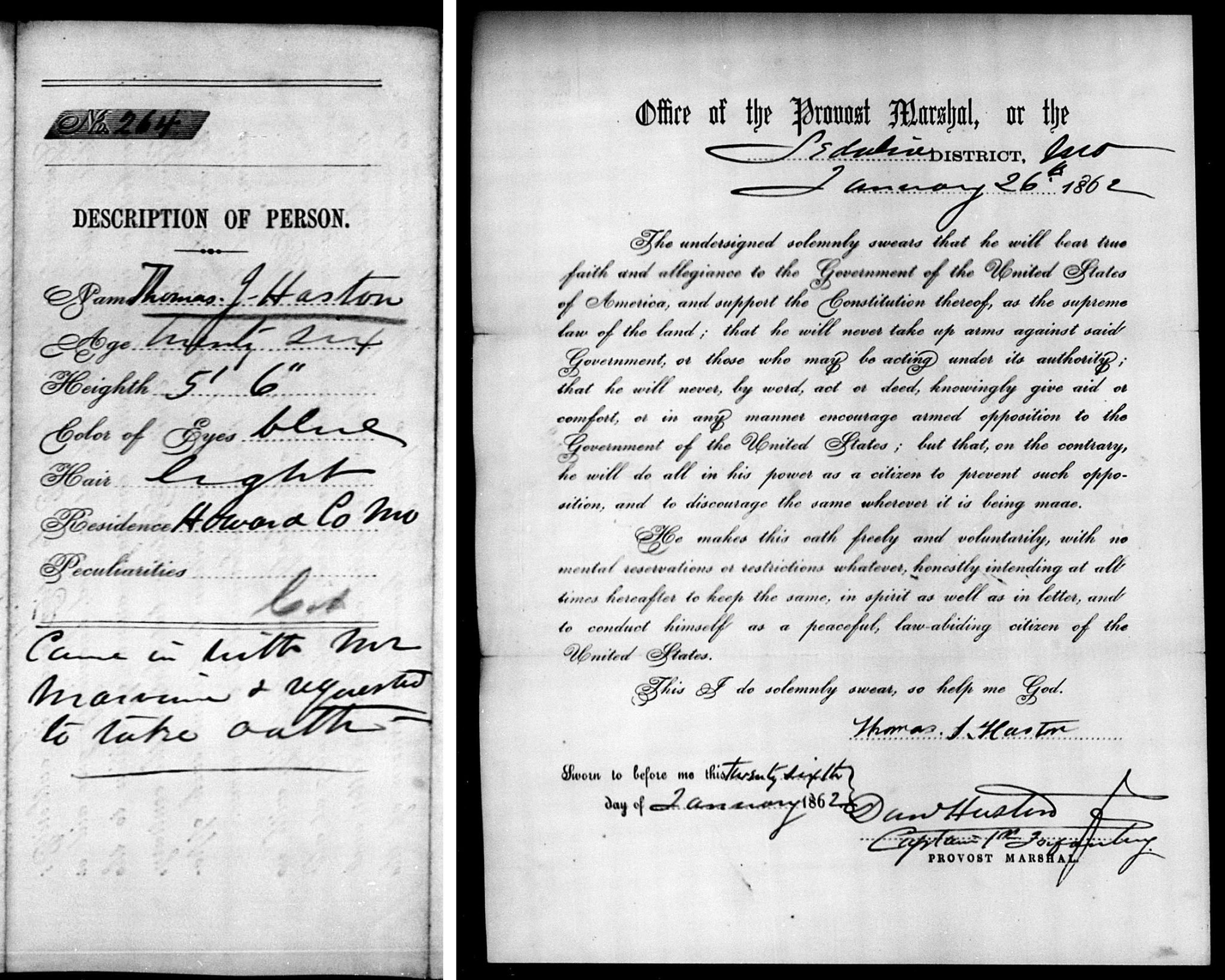
Abi Alburn Haston
Abi appears on the United States Civil War Draft Registration Records for 1863-1865 as being age 38, residing in Morris of Carroll County, Missouri and in Class 2* as a registrant.[i] And as of September 30, 1871, Abi A. Haston appeared on a United States Register of Civil, Military, and Naval Service, stationed in Newman of Jefferson County, Kansas. His salary was $12.[ii] A.A. Haston was identified as a “Trader” on the 1885 Kansas State Census.[iii] I have no record of Abi being a soldier, for either side, during the war, but he may have been a livestock trader for the Union Army.
*Class I was for those aged 20-35 as well as those 36-45 and unmarried. Class II is everyone else that registered.
[i] Record Group: 110, Records of the Provost Marshal General’s Bureau (Civil War); Collection Name: Consolidated Enrollment Lists, 1863-1865 (Civil War Union Draft Records); NAI: 4213514; Archive Volume Number: 3 of 3.
[ii] U.S., Register of Civil, Military, and Naval Service, 1863-1959, Volume 1, 590.
[iii] Kansas State Historical Society; Topeka, Kansas; 1885 Kansas Territory Census; Roll: KS1885_61; Line: 1.
[i] Record Group: 110, Records of the Provost Marshal General’s Bureau (Civil War); Collection Name: Consolidated Enrollment Lists, 1863-1865 (Civil War Union Draft Records); NAI: 4213514; Archive Volume Number: 3 of 3.
Battle of Glasgow, Missouri – October 15, 1864

Confederate General Sterling Price, a plantation owner from Keytesville of Chariton County (adjacent to Howard County) and former governor of Missouri, led 12,000 rebel soldiers into Missouri in the fall of 1864. His initial goal was to capture St. Louis, but later perceived that the defenses of that city were too strong. Instead, on September 26-27 he attacked Fort Davidson at Pilot Knob, Missouri—a little fort that protected warehouses of military supplies, iron works in the Arcadia valley, and a train depot at the terminus of the railroad that ran from St. Louis.
After an embarrassing defeat at Pilot Knob, Price moved westward, by-passing the heavily defended Missouri capital, Jefferson City. It was (falsely) rumored that there was a large store of Yankee weapons in the town of Glasgow, so General Price sent General John B. Clark, Jr. with a detachment of approximately 1,800 men to capture Glasgow and some much-needed military supplies.
From the west side of the Missouri River, Confederates began shelling Glasgow, early on the morning of October 15, 1864. A couple of hours later, “1,700 to 2,000 rebels appeared on the south side of Glasgow to confront approximately 650 Union defenders.”[i] After a hard fight, the defenders were driven into the center of town and, finding themselves surrounded, were forced to surrender
[i] “Battle of Glasgow—October 15, 1864—Glasgow, Missouri,” Waymarking, accessed February 3, 2021, https://www.waymarking.com/waymarks/WMC9KP_Battle_of_Glasgow_October_15_1864_Glasgow_Mo.
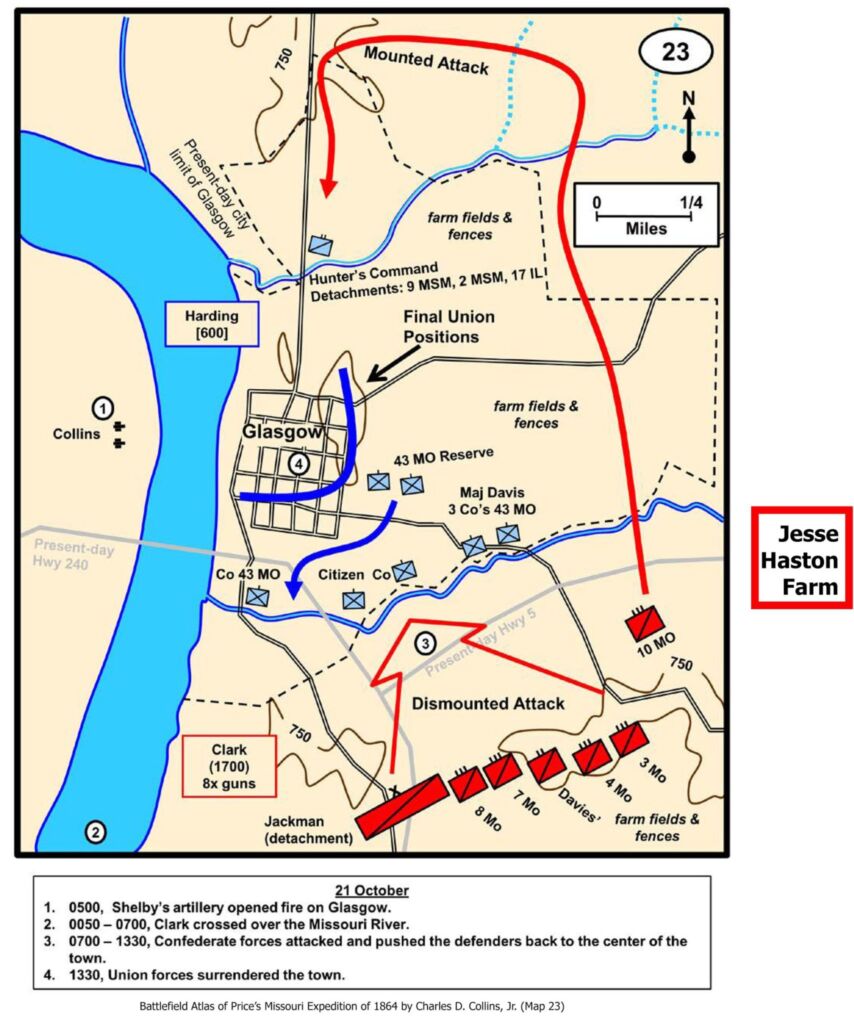
On October 16, the Confederates rejoined General Price and the main force and moved on towards Kansas City. On or about October 29, Glasgow was re-occupied by pro-Union Missouri militia who proceeded to exact revenge. “The militia executed at least a dozen Southern sympathizers, and burned their homes and businesses.”[i]
[i] Kenneth Westhues, “The Battle of Glasgow Was a Waste, a Small Victory on the Way to Defeat,” accessed February 3, 2021, https://www.kwesthues.com/BatGlsgw1-1410.html.
So, the Battle of Glasgow, Missouri did not end for the citizens of the little town when the southern army moved out. Jesse Haston was one of the unfortunate ones who experienced deadly vengeance from the Yankee army or its sympathizers.

November 8, 1864 – Jesse died in Glasgow, Missouri and was buried on his farm, located about two miles east of Glasgow. Jesse was considered a Southerner during the Civil War. The Northern troops raided his home during the war, taking everything of value, including a number of horses. He went to the Yankee headquarters at Glasgow, talked to them, and they let him have one horse to plow his garden. Members of the Federal state militia* followed him out of town, shot him, and took the horse. He died a few days later and is buried in the cemetery just east of his house.
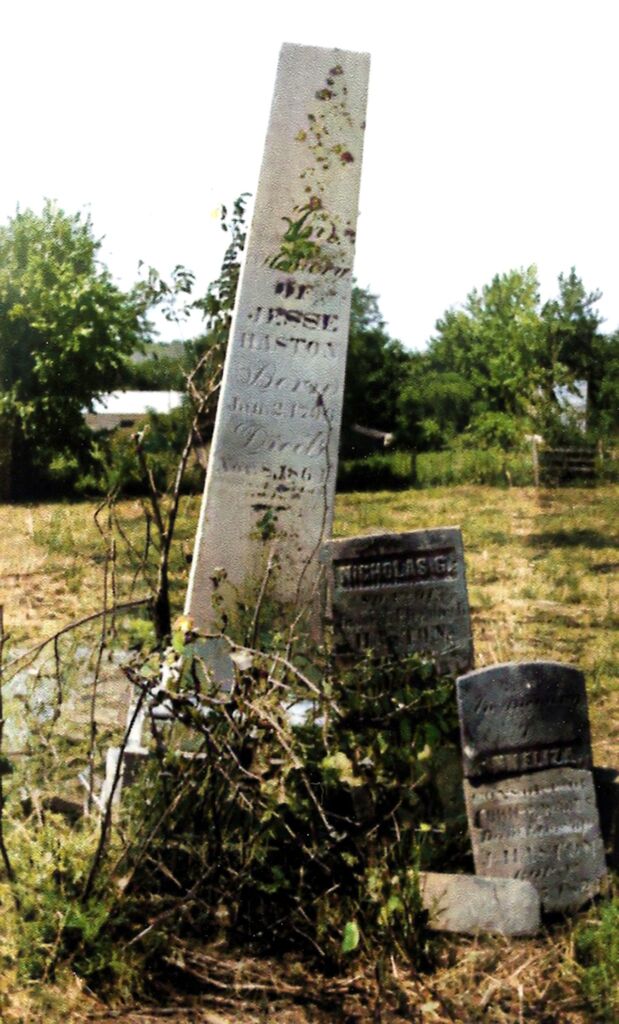
Jesse, Jr. and Isaac Haston (sons of Jesse, Sr. and Elizabeth) in the Confederate Army
Other than some kind of (possible, but not confirmed) southern sympathizer action on the part of Thomas Jefferson Haston, there is no record of any of Jesse’s children being engaged on behalf of the Confederacy, until after their father was ambushed and murdered by the Union militia. But, in the later months of the war, brothers Jesse, Jr., and Isaac mustered into a battalion of Confederate Sharp Shooters.
June 7, 1865 – Jesse Haston, Sr.’s sons Jesse, [sic, Hayston] Jr.[i] and Isaac[ii] were enrolled in Company C of Searcy’s Battalion of Missouri Confederate Sharp Shooters. They appeared on a roll of prisoners of war, paroled at Alexandria, Louisiana on June 7, 1865. Isaac was a private and his slightly older brother, Jesse, was a corporal.
[i] “Jessee Hayston,” Fold3.com, accessed February 12, 2021, https://www.fold3.com/image/185506005 and /image/185506006.
[ii] “Isaac Haston,” Fold3.com, accessed February 12, 2021, https://www.fold3.com/image/ 185506002 and /image/ 185506003.
Searcy’s Battalion of Sharpshooters was commanded by Col. James Jasper Searcy. Searcy’s former regiment “Searcy’s Regiment Missouri Cavalry,” became under strength so was it dismounted and downgraded to a battalion and renamed. There are very few records for this regiment, but it was formed in early 1865.
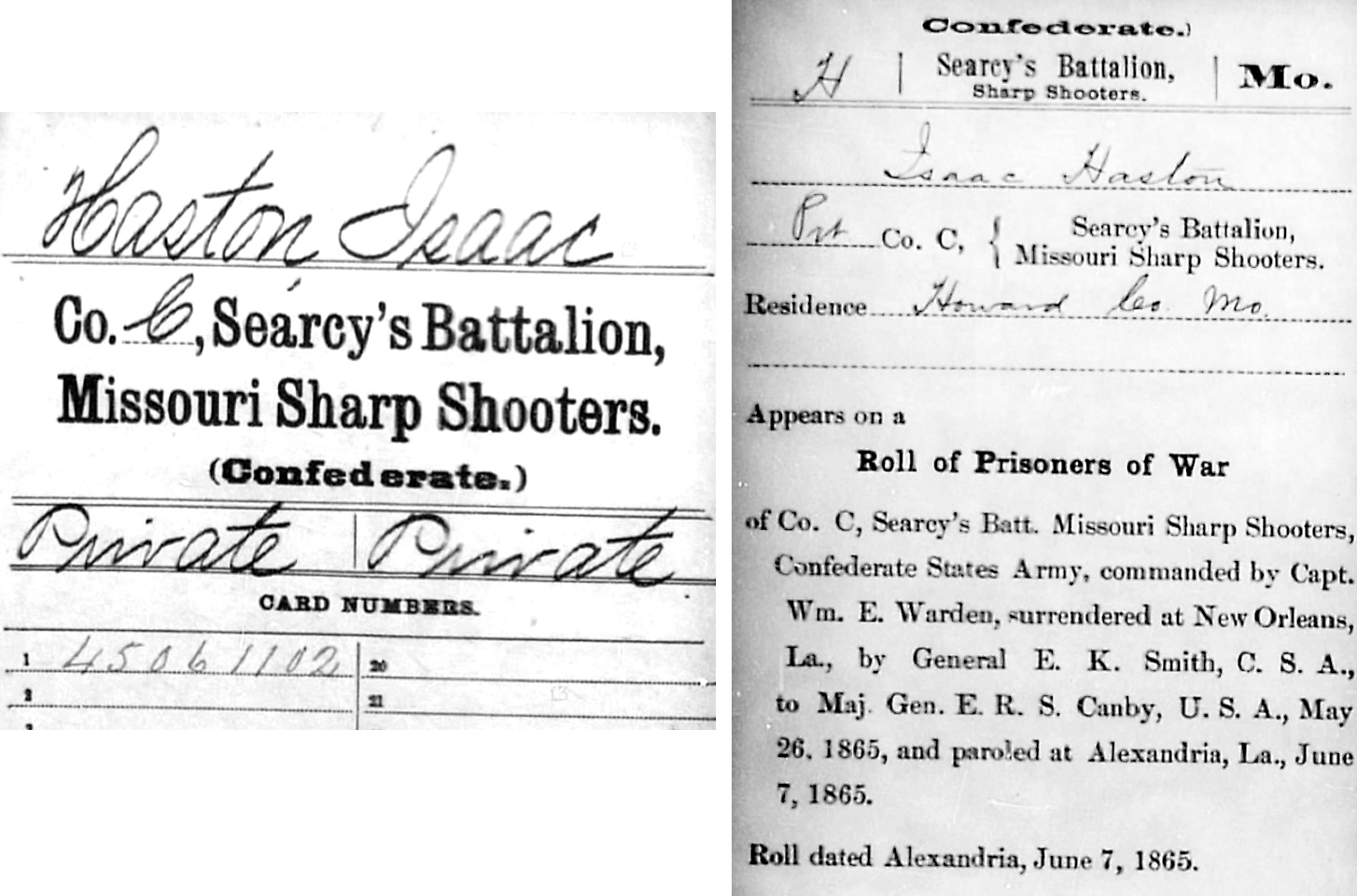
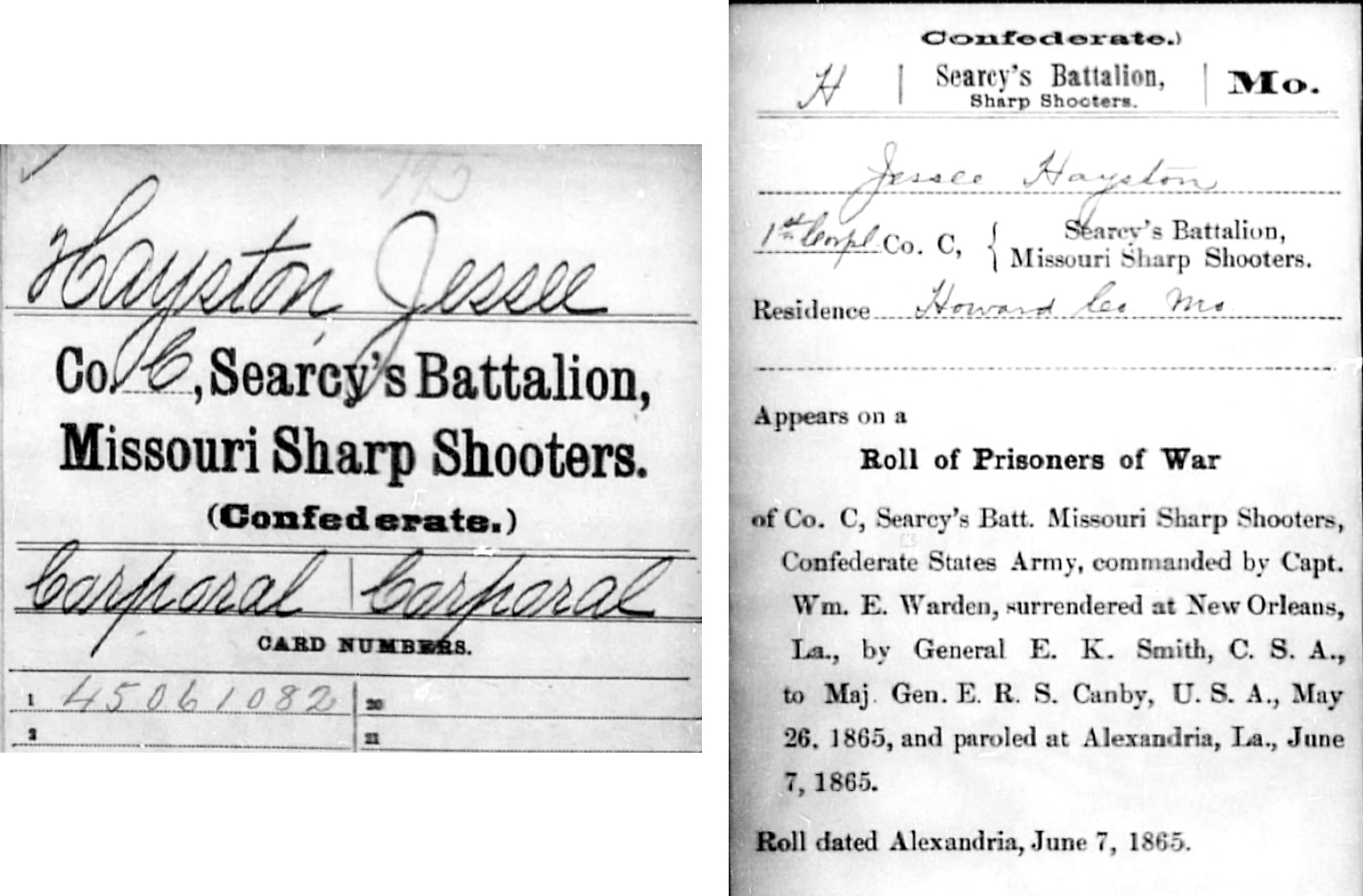
December 12, 1888 - Attempted Sexual Assault on Annie Haston
Annie, was the youngest daughter of Jesse Haston.
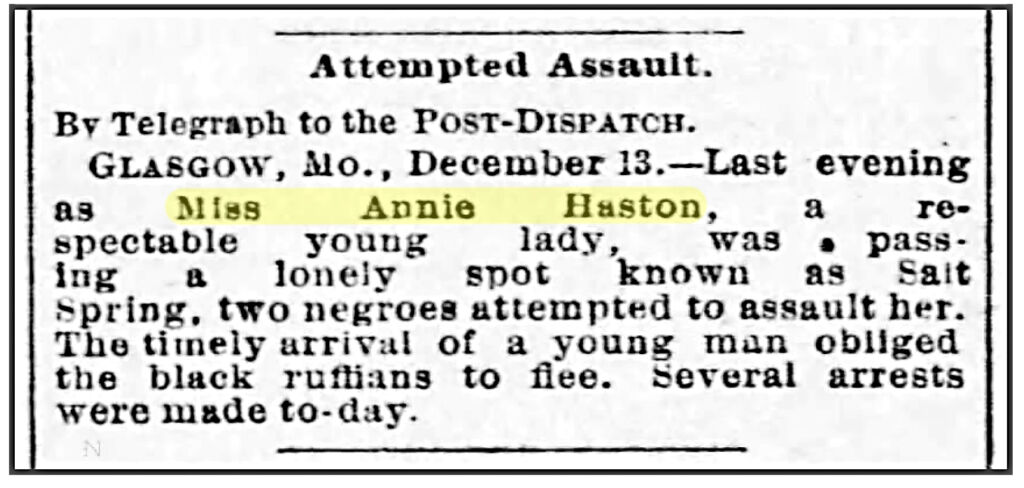
The event was reported in newspapers across the state. Jesse Haston, Jr., Annie’s brother, chased one of the assailants, Frank Jenkins, and wounded him.[i] Jenkins was sentenced to five years in the state penitentiary. His co-assailant, Ollie Thixton
was lynched on January 20, 1891 in Fayette of Howard County for a similar attempted assault on another woman.[i]
[i] “Lynched at Fayette,” The Sedalia Weekly Bazoo (Sedalia, Missouri), January 27, 1891, 3.
[i] “A Brother’s Vengeance,” The Butler Weekly Times (Butler, Missouri), December 19, 1888, image 7.

1892 - Jesse Haston, Jr. - Nominated for Montana State Treasurer
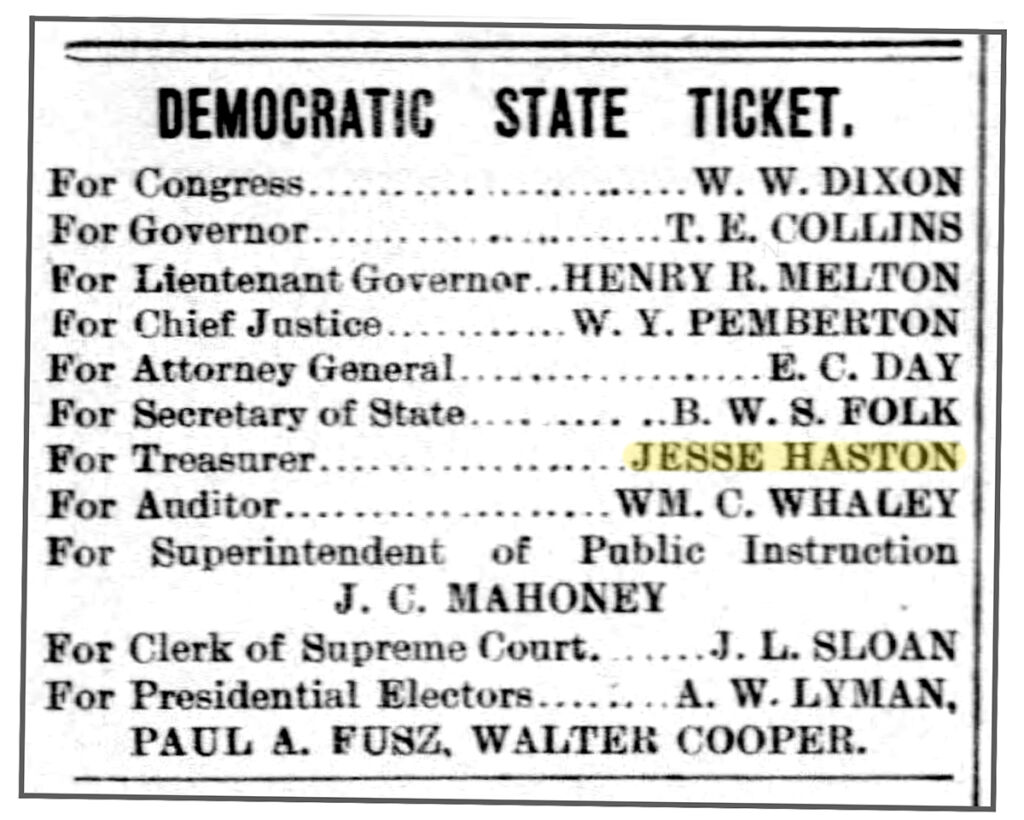
On the first day of August 1879 at Camp Sheridan Nebraska, Jesse Haston, Jr. entered the employment of the Niobara Cattle Company as a cowboy and the tenderfoot of the outfit and by hard work and always being faithful to the trusts confided to him, in a few years having passed through all the phases of cowboy life and the cattle business he became manager of the company.
Jesse Haston, Jr. ran for Treasurer for the State of Montana in 1892, when Democratic Grover Cleveland defeated Benjamin Harrison for President of the United States. However, the following entire Democratic State ticket was defeated.[i]
[i] “Democratic State Ticket,” Great Falls Tribune (Great Falls, Montana), November 8, 1892, 2.
Obituary of Ann Juliet Barnes Haston
A good woman Has gone to her reward. Last Wednesday afternoon, December 28, her family physician drove into town through the snowstorm and announced to a circle of friends — tried and true — that the end had come and that a long and eventful life had closed. The expressions of regret and grief were mingled with expressions of admiration for her character.
One said — a prominent businessman here — “she was the most conscientious woman I ever knew.” Another said — he is now a banker in the city — “I lived on a farm near Mrs. Haston for years; a better woman never lived. I saw her under all circumstances, and she is a remarkable woman. Yet, another — connected with Pritchett College, who knew her through long years, added this testimony: “She was not only a good woman, but a brave woman — a woman of strong character and brave at heart. Among these familiar friends there was sincere mourning at the announcement of her death.
Dr. Bishop, her pastor, conducted the funeral at the home, some two miles east of Glasgow, on Friday at 11 a.m. Notwithstanding the storm a large concourse of friends were present. The text was: “Thou shalt come to thy grave at a full age, like a shock of corn cometh in his season,” Job 5:26. The pastor spoke of the long life of 72 years which had closed, of the eventful scenes through which that life had passed, of the forty years of widowhood which constituted so large a part of it, and of the fidelity and Christian fortitude which characterized the career now forever closed.
The burial was in the cemetery at the homestead, the services at the grave being conducted by the Rev. Mr. Watts, a neighbor and a valued friend. Mrs. Haston was Miss Ann Juliet Barnes, and was born in Baltimore, Maryland, February 5, 1832. On the 16th of February 1853, she was married to Mr. Jesse Haston. This union brought her the care of two boys, ten and twelve years old, children of Mr. Haston by a former wife. Her own children were six in number, one dying in infancy and one at the age of 18 years.
Her greatest sorrow, the event that wrung her heart most of all, was the death of her husband, who was shot down and mortally wounded on the streets of Glasgow the day after the battle of Glasgow during the civil war and during the disorder incident to that battle. From this shock, though she lived 40 years hereafter, she never recovered.
The four living children of Mrs. Haston are Mrs. A.E. Dandridge, of Nelson, Mo.; Mrs. J.H. Jones of Charleston, West Virginia, Miss Ida Haston and Miss Anie Haston, the two latter being now the sole occupants of the home. To these two in an especial manner the sympathy of the entire community goes out. But in their loneliness and bereavement they have a rich heritage in the memory of their mother and the heartfelt regard of the entire community. “Blessed are the dead, that die in the Lord.” “W.F.B”
As with all of these articles, there is much more to be said about the Jesse Haston family–70+ pages in the more complete (larger) edition of the book that is being written now.
If you appreciated this article, please share it with others who might also enjoy it.

46 – Isaac Haston – Across the Plains in an Oxen-Drawn Wagon – Isaac’s California Years
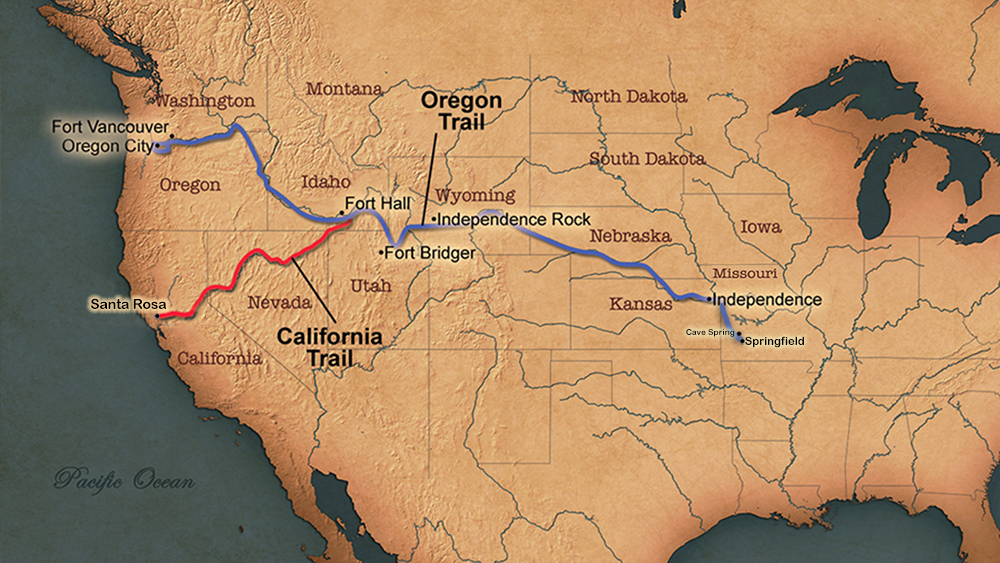
46 - Isaac Haston - Across the Plains in an Oxen-Drawn Wagon
The California Years
Approximately 2,000 miles – Cave Spring, Missouri to Santa Rosa, California on the Oregon-California Trail

At age 62, most men today are looking forward to retiring, drawing social security, playing golf or fishing, and enjoying their grandkids. I’m not sure if Isaac was looking for another major challenge in his life at that age or not, but when the opportunity presented itself to move to California, he didn’t back down.
The Bear Flag Revolt - First Step to California Statehood
1846 – Mexican General Jose Castro pronounced that foreigners (American settlers) could not own land in California, must leave by 40 days without arms, cattle or horses, tools, or anything they brought with them.[i] Led by Isaac’s Haston former neighbor in Cave Springs, Missouri (and previously in Monroe County, TN, Captain John Grisby, some of these settlers resisted in what became known as the “Bear Flag Revolt.”
[i] Warner, 63.
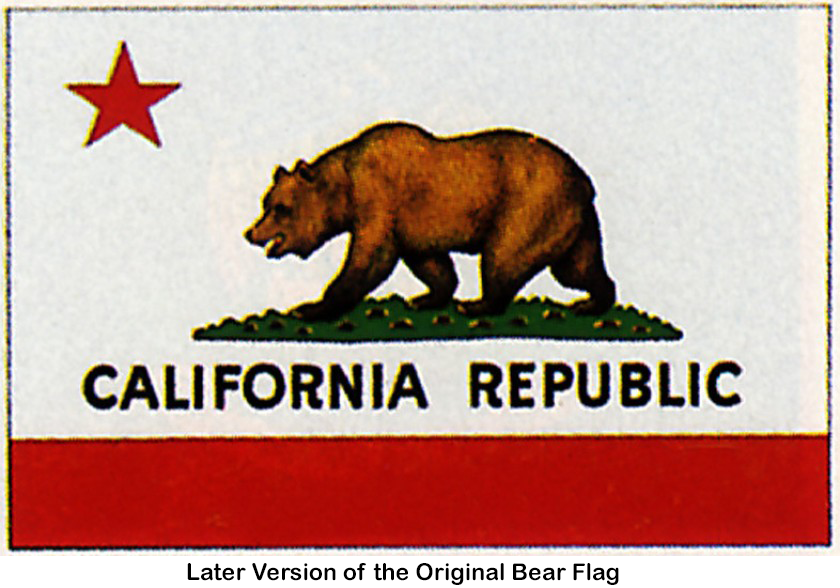
This short-lived revolt resulted in the establishment of the California Republic. This independent republic lasted for about 25 days, when the American Stars and Stripes replaced the Bear Flag in the town of Sonoma on July 9, 1846. California unofficially became part of the United States.
January 24, 1848 – 1855 (California Gold Rush) – A local scramble for gold began soon after January 24, 1848 when the first nugget was discovered by a carpenter, James Marshall, in a mill race at Coloma on the South Fork of the American River in California. This “ground zero” of the gold region was approximately 36 miles East-northeast of Sacramento and 100 direct miles in about the same direction from Santa Rosa.
In 1852, Fletcher (F.D.) Hastings, son of Isaac and Agnes, “crossed the plains with a party of early gold-hunters seeking the new Eldorado in California.”[i]
[i] “Aged Pioneer Called Home,” The Press Democrat (Santa Rosa, CA), October 28, 1919.
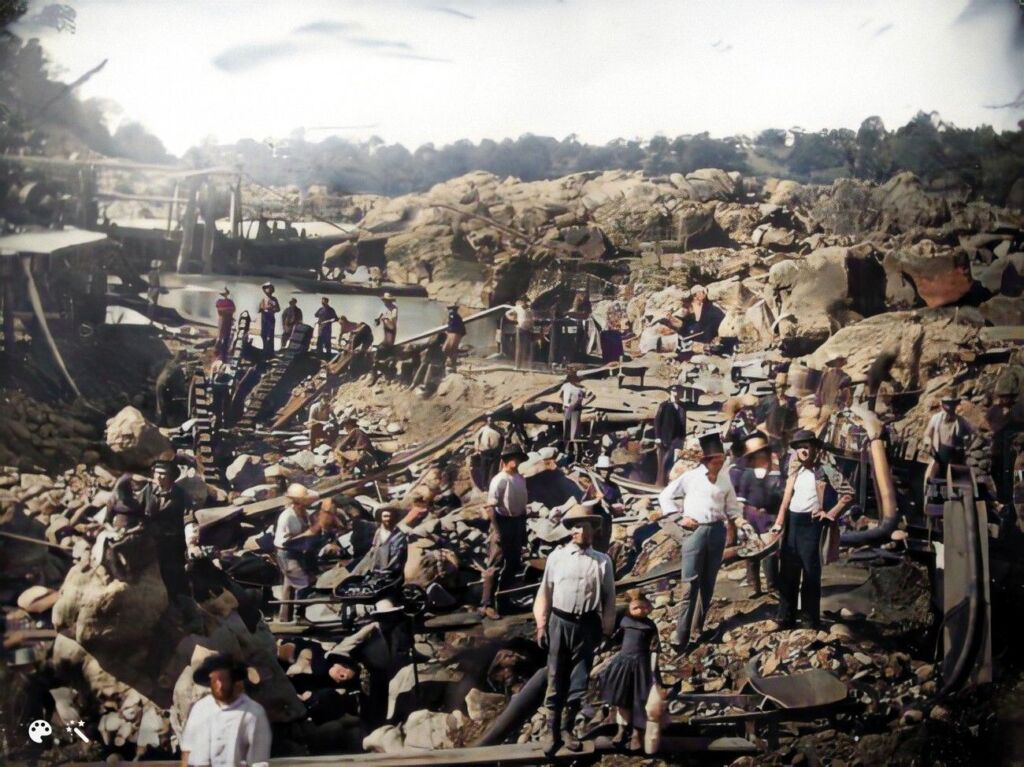
By the end of 1854, at least two more of Isaac’s children were in northern California. According to a family story, passed down through Isaac Hasten’s family, Isaac’s son Jesse Axley Haston traveled to northern California with his sister Isabella (Hastings) Grisby and her husband, Benjamin James Grigsby. Benjamin Grisby was the brother of Captain John Grisby, leader of the Bear Flag Revolt.
The Oregon-California Trail
Jesse Axley Haston returned to Missouri, married Susan Smith Baker, and apparently talked his parents into moving to California. “In 1857 Isaac Hastings crossed the plains to California and settled in Bennett Valley, Sonoma County.“[i] All that stood between Isaac in Missouri and the Bennett Valley of Sonoma County, California was about 2,000 miles, rough and treacherous miles in many stretches. Today, that’s 30 hours of driving an automobile or three hours or so by plane. In 1857, the trip in a wagon pulled by mules or oxen took four to six months IF the travelers even made it at all.
[i] Honoria Tuomey, History of Sonoma County, California, Volume II. (San Francisco, CA: The S.J. Clarke Publishing Company, 1986), 831.
Unfortunately, we don’t know much about the family journey, other than a statement in a letter from “Uncle” Samuel Perry Hastings to Laurann Coleman: “Robert (son of Agnes and Isaac, about age 20) died on the way to California and was buried at the foot of the Sierra Nevada Mountains in 1857.”
Bennett Valley - Santa Rosa, California
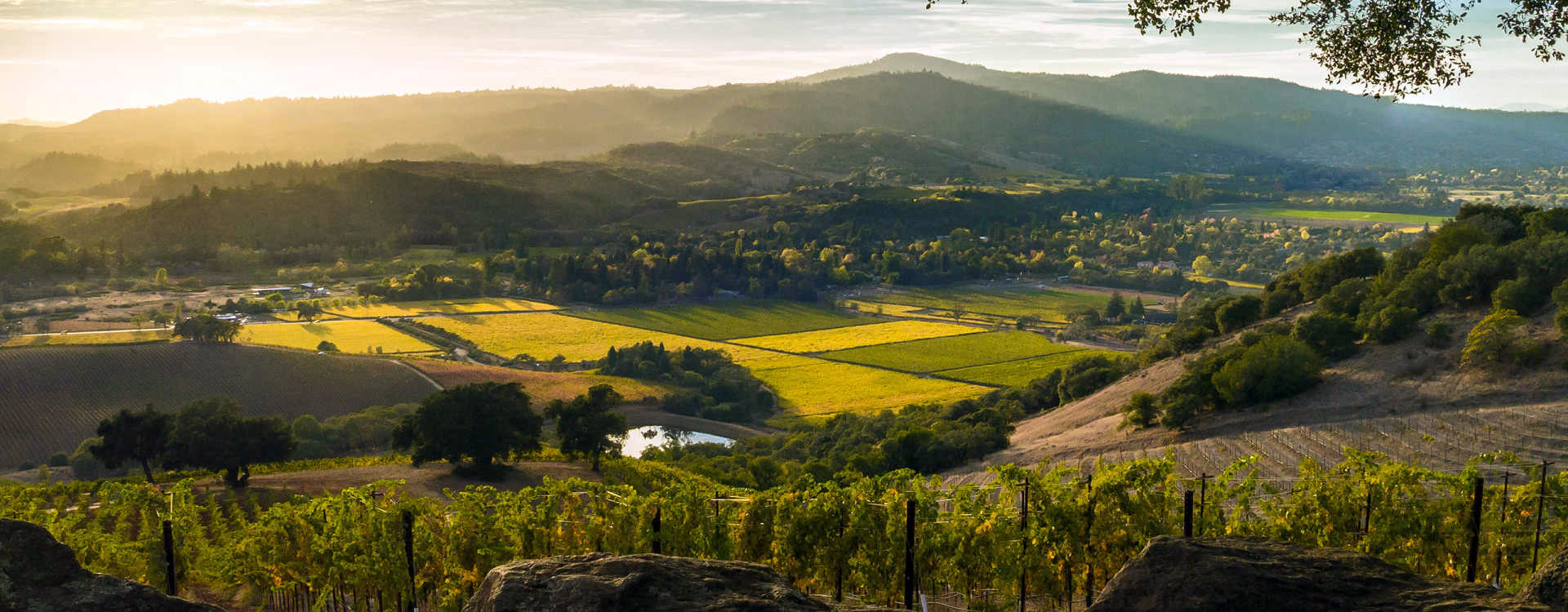
Gold rushers found more than gold when they invaded the Sierra Nevada mountains with their picks and shovels. After the rush subsided, many of the miners began to find farmland in the area to claim, legally or otherwise.
An October 29, 1949 article in Santa Rosa’s newspaper, Press Democrat, summarized the lure of Bennett Valley to ex-gold miners this way: Bennett Valley’s rich soil on the valley floor proper and on the lower rolling slopes of the hills drew settlers speedily. Men and women who came in search of gold in the mines found agricultural gold in the sunshine-drenched valley.[i]
Isaac wasn’t looking for gold in California. He, no doubt, was looking for land, good land, and perhaps a more favorable climate. And he may have been looking to escape the tensions surrounding an impending civil war. He had experienced war up close and very personally as a young man at New Orleans.
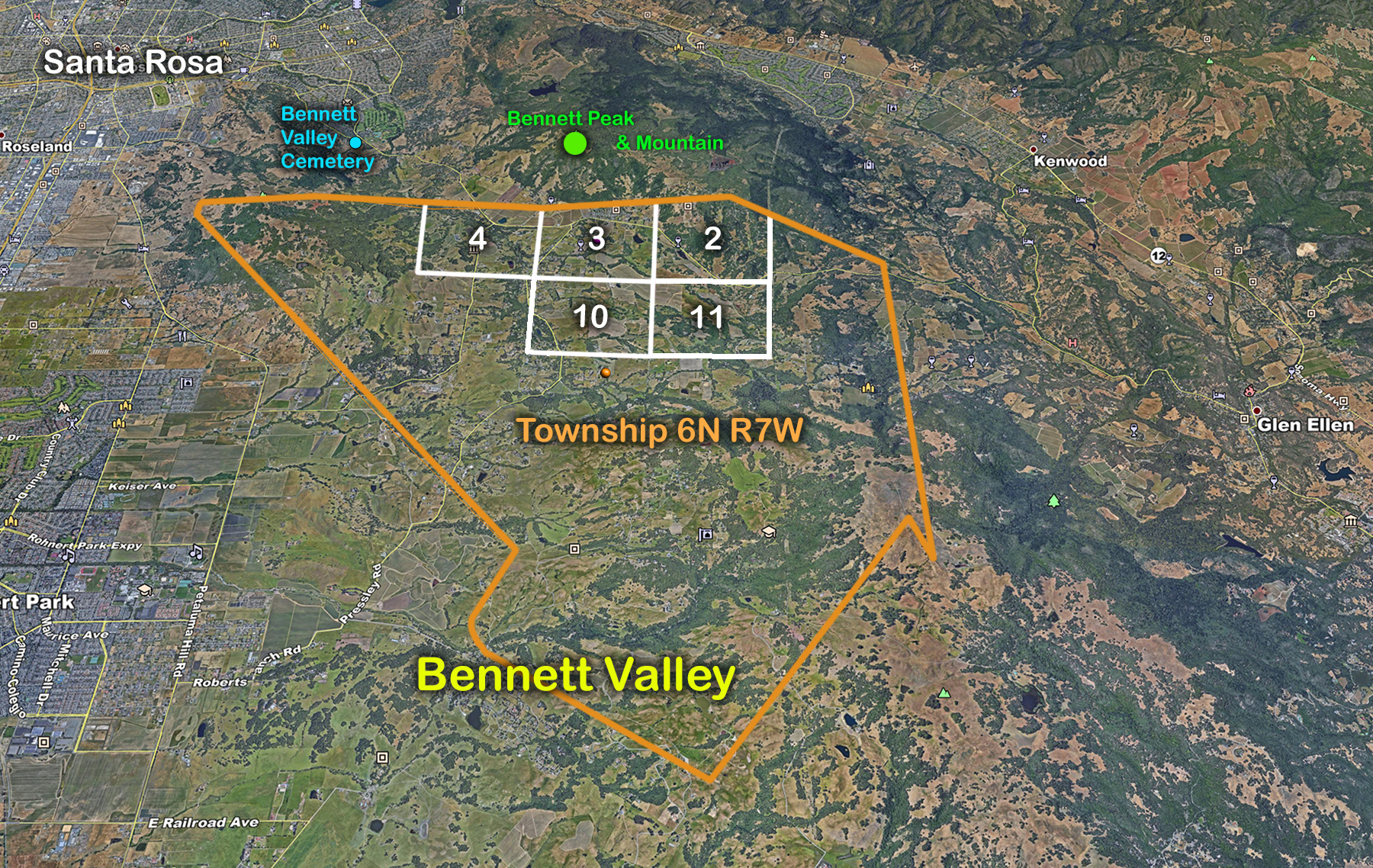
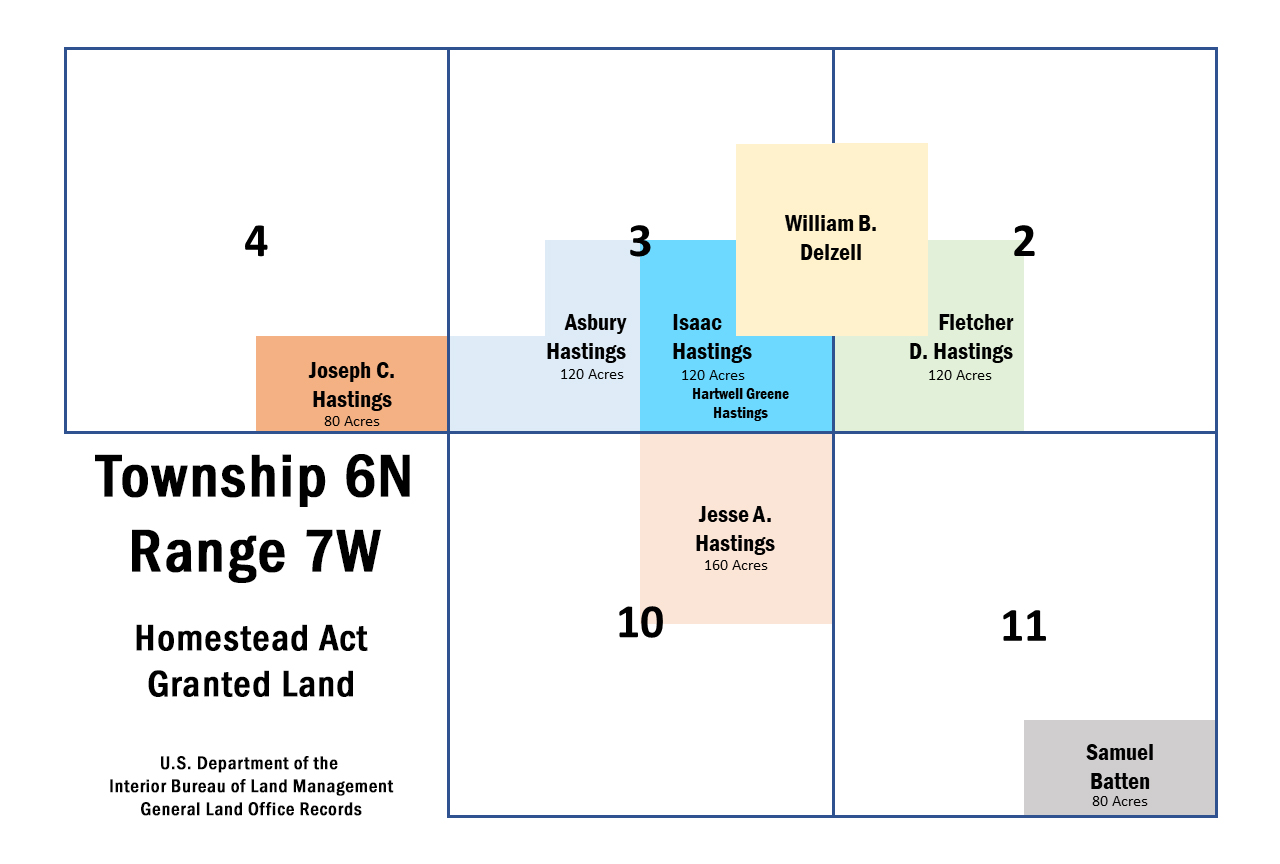
April 4, 1857 – For $3,500, Eli Coverdill purchased 180 acres on this date from James N. Bennett and his wife, Catherine A. Bennett.[i] James N. Bennett was the early settler for whom Bennett was named.
[i] Deeds of Sonoma County, California, 1847-1901, Deed Book 9, 613-614. (https://www.familysearch.org/ark:/61903/3:1:3Q9M-CSPN-B96V-8?cat=613304)
August 5, 1858 – Isaac purchased 180 acres on this date from Eli Coverdill and his wife, Leah, for $6,000.[i] It’s the land Coverdill purchased from James N. Bennett on August 4, 1857. Coverdill flipped the property and made a $2,500 profit in just 16 months.
[i] Deeds of Sonoma County, California, 1847-1901, Deed Book 9, 1861-1862, 195-196. (https://www.familysearch.org/ark:/61903/3:1:3Q9M-CS52-R9BB-R)
June 15, 1860 – Three of Agnes and Isaac’s sons were living with (or next to) them in California at the time of the 1860 census—Asberry Roten, Hartwell [not Artwell] Green, and Jesse Axley. Isaac’s California real estate was valued at $4,500 and his personal estate was valued at $2,000.

The case related to a promissory note, dated December 28, 1859, for a mortgage in the amount of $3,018.48 for land recorded in Sonoma County, California Book C of mortgages on pages 436-439. The text on this document is extremely dim, unreadable for the most part, but it appears that the Hastins and Coverdills came to some kind of an agreement and the plaintiff (the Coverdills) moved for dismissal of the case and agreed to take a “voluntary_____.”[ii] Sounds like Isaac was not able to make his payment to Coverdill, but they agreed to delay action on that matter, based on some future plan for payment.
[ii] “Eli Coverdill vs. Isaac Hastin and Agnes Hastin,” Seventh Judicial District Court of Sonoma County, California. Old Series, Suit # 331, October 3, 1860 (filed).
September 12-13, 1861 – Isaac Hastin and his wife (Agnes) sold 180 acres to Othniel DeTurk for $2,000.[i] This was the acreage Isaac purchased for $6,000 from Eli and Leah Coverdill three years earlier, August 5, 1858. Coverdill paid $3,500 to James N. Bennett for the same property on August 4, 1857. Were land prices so extremely volatile during those years?
[i] Deeds of Sonoma County, California, 1847-1901, Index to Grantors Book 1, 70. (https://www.familysearch.org/ark:/61903/3:1:3Q9M-CSV4-WS62?i=72&cat=613304)
September 12, 1861 – Othniel DeTurk (born 1828) was an older brother of Isaac DeTurk (born 1834). Both were born in Berks County, Pennsylvania.[i] Othniel sold the 160 (not 180) acres to Isaac Hasten for $1,000. This was land Othniel purchased for $1,500 from John Lamb on January 16, 1860.* John Lamb held the land under a possession claim that was filed in the office of the Recorder of Sonoma County.[ii]
[i] “Othniel DeTurk,” Find A Grave, accessed October 2, 2020, https://www.findagrave.com/memorial/28709191/othniel-deturk.
[ii] Deeds of Sonoma County, California, 1847-1901, Deed Book 12, 1861-1862, 195-197. (https://www.familysearch.org/ark:/61903/3:1:3Q9M-CS52-R9BB-R?i=102&cat=613304)
Isaac DeTurk turned the land he and his brother acquired from Isaac into a hugely successful wine-producing enterprise.
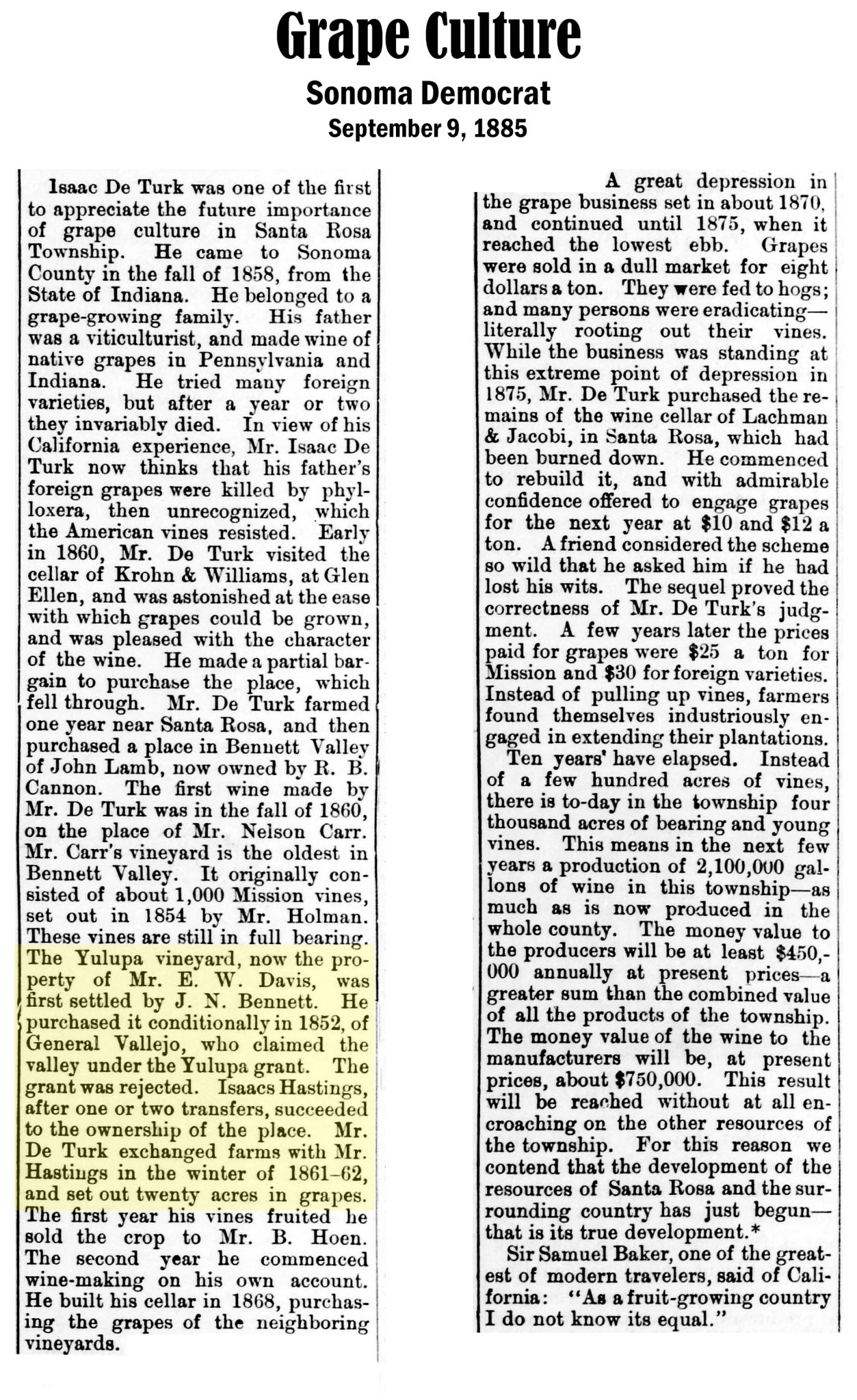
August 23, 1870 – Isaac created his will at this time. Was his health failing or was he just wisely aware of his mortality in his mid-70s?
In the name of God amen I Isaac Hastings of Bennet Valley Sonoma County California being weak in body, but of sound and disposing mind do make publish and declare this my last will and testament in manner following that is to say.
First I give devise and bequeath to my son Hartwell G. Hastings all the real estate of which I may die possessed.
Second I give devise and bequeath unto my said son Hartwell G. Hastings the following described personal property to wit: One Spring Waggon. One Two horse Waggon. One Bey Mare, Six years old and her Colt about four months old. One bay mare yearling Colt. One gray Mare Six years old. Three Milk cows and three yearling Heifers. One white Steer Calf. Twenty one head of Hays large and small.
Second I give devise and bequeath to the daughter of my Said Son Hartwell G. Hastings by his first wife. Lucida Agness Hastings the following articles of personal property to whit: One black mare Colt four months old. One red Calf. The calf of my red Cow. 1 Feather Bed.
The property given and bequeathed by this will to my said Son Hartwell G. Hastings is given and bequeathed to him Subject to the following express charges to wit: 1st That he shall at my death or as soon there after as may be pay all my debts and funeral expenses. Second. That he shall provide and furnish to my said Wife Agnes, a good and comfortable support and living during her lifetime.
Item I have now, living as far as I am informed, the following children. John Westley Hastings residing in the State of Texas. Samuel Douthard Hastings residing in the State of Missouri, Emily Hastings, wife of Joseph Hastings, DeLay Fletcher Hastings A. R. Hastings, Jesse Axley Hastings and Hartwell G. Hastings residing the State of California and the reason why I have by my will given and devised to my Said Son Hartwell G. Hastings nearly my entire estate is that he has remained at Home with me and constantly aided me in taking care of and improving my property and in providing for the family.
Lastly, I appoint my Said Son Hartwell G. Hastings my Executor, without the necessity of giving bonds. In testimony where I have herein to subscribe my name and affixed my Seal this 23rd day of August 10 D. 1870 Isaac Hastings (His mark) Witness to signature Murray Whallen Seal
Source: Original will on page 277 of Sonoma County, California Wills Book A.
March 27, 1872 – Isaac died on March 27, 1872.
February 25, 1876 – Agnes Haston died about a month shy of four years after Isaac’s death (March 27, 1872). A notation in some loose notes from Jessie Prichard’s files says that “Gr. Grand Mother lived to be 81.” If she was born in 1799, as Jessie Prichard’s notes also indicate, then she would have died in about 1880. But her obituary states that she died on February 25, 1876 at “about 80 years,” so she may have been born in about 1796. [i]
[i] “Died,” Santa Rosa Daily Democrat (Santa Rosa, CA), February 28, 1876.
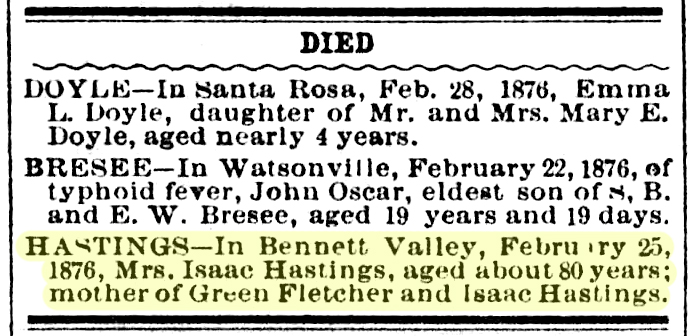
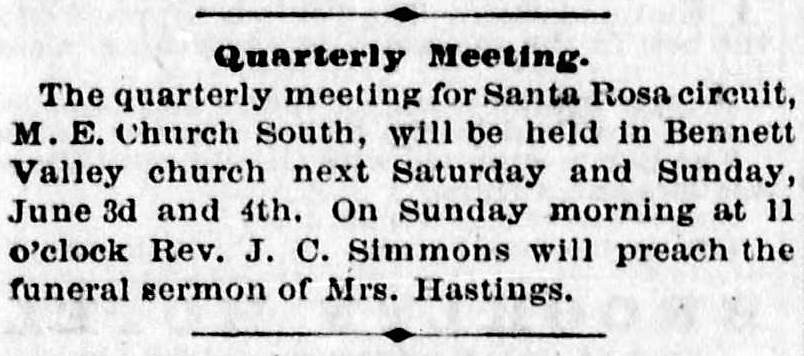
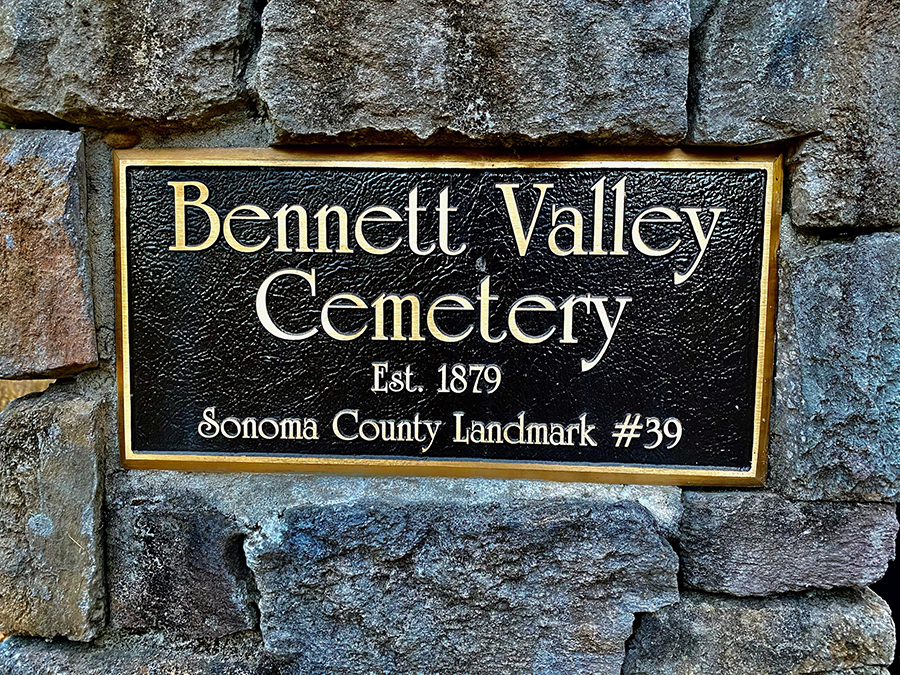
Isaac and Agnes are buried in the Bennett Valley Cemetery, which is located off a private road, just off of Bennett Valley Road on the east side of Santa Rosa, California. There are no headstones for Isaac and Agnes, but there is a cemetery plot map and a cemetery record book that locates their graves. The cemetery book mentions several Hastings plots, including who purchased them and who is buried in them. On page 24, in plot # 249, it is noted as “to whom deeded” = Green Hastings (Hartwell Greene Hastings) and “bodies interred” = “Grandma & Grandpa Hastings.”
Location:
4760 Bennett Valley Road, Santa Rosa, California 95404
GPS; Coordinates: 38.4161987, -122.6619034
"Whatever Happened to the West Coast Sons of Isaac and Agnes"
1880 – Jesse Axley Hastings moved his family to Whitman County, Washington. He died in Rosalia of Whitman County, Washington on July 8, 1908.
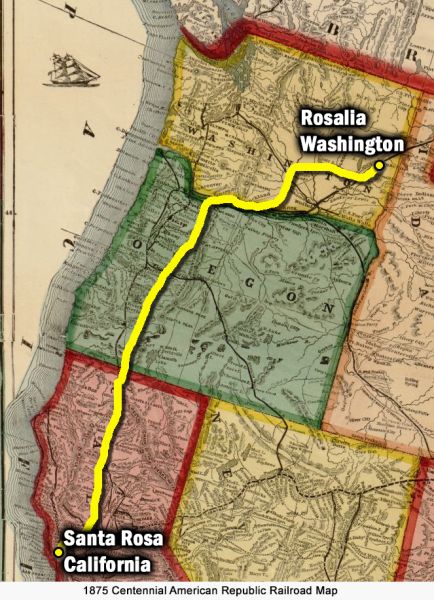
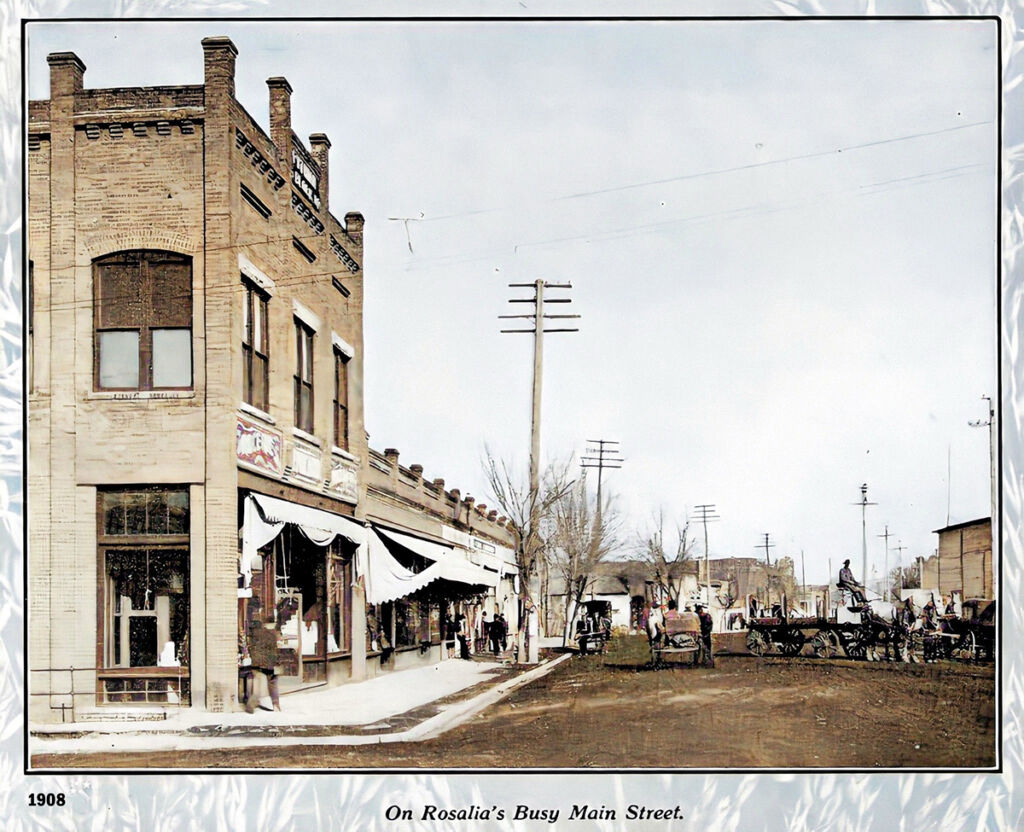
June 4, 1889 – Hartwell Greene and Sarah Ann Batten Hastings began their move to Eastern Washington. On June 30, 1955, Elizabeth Ann (Hastings) Davis related the following story (to her granddaughter Laurann Potterf Coleman) about the trip Hartwell Greene and Sarah Ann (Batten) Hastings made with their children from Sonoma County, California to Eastern Washington.
We left the Valley of the Moon (Glen Ellen), California on June 4, 1889, with ten in the party. Two covered wagons, one of which was really a “spring wagon” carrying clothing, bedding, cooking utensils, etc. There were 2 horses pulling each wagon. Besides the 10 people, there was a dog by the name of Dash. He walked physically all the way only to die shortly after reaching Washington. A daughter of Hartwell Green Hastings, by a former marriage, died in California before making the trip. Two of his sons, by his wife Sarah Ann (Batten) Hasting, died in the diphtheria epidemics before the trip north. The first night was spent with a relative, Jim Ward in Napa. Traveled less than twenty miles per day. No particular roads then. Went through Winters, Redding, Red Bluff, Prineville, Bend, Heppner, Walla Walla, Endicott (where Jessie Hasting, Hartwell Green’s brother lived as well as Johnnie Batten, a brother of Sarah Ann.) They had been living in that part of Washington for about fifteen years and had good farms. The Hartwell Greene Hastings’ family continued on to Pine City where they rented a farm and made their home.[i]
[i] Roberta Hester Leatherwood, Hester-Ward-Batten-Davis-Hastings KINFOLK. (Spring Hill, FL: printed by the author, 2009), 84.
Hartwell Green Hasting died on September 16, 1909, in Sunset of Whitman County, Washington, and is buried in the Pine City Cemetery.
November 2, 1901 – Asbury Roten Hastin died in Lake County, California (adjacent to Sonoma County on the northeast of Sonoma) of fibroid phlebitis.
1919 – Fletcher Dilay Hastings, son of Isaac and Agnes, was the only one of the sons of Isaac and Agnes who remained in the Santa Rosa area. He died at age 87 at Hall, near Santa Rosa, California.[i]
[i] “California Deaths and Burials, 1776-2000”, database, FamilySearch (https://familysearch.org/ark:/61903/1:1:HKS6-K3MM : 4 February 2020), Fletcher Dealy Hasting, 1919.
The Bear Flag Revolt (3:22 video)
California Gold Rush (8:47 video)
If you appreciated this article, please share it with others who might also enjoy it.

33 – The Rhine River Cruise

33 - The Beautiful and Relaxing Cruise Up the Rhine River
On Monday, June 26, 2023, our Hiestand-Haston Heritage Tour will enjoy a relaxing cruise up a portion of the beautiful Middle Rhine River and see many of the same sights that Henrich Hiestand saw in 1727 when he was on his journey to America. It’s the Grand Finale to a fantastic tour.

In 1727, our ancestor Henrich Hiestand left his family and home in Ibersheim on the Rhineland of what is now Germany and sailed down the Rhine River. He was headed to Rotterdam, Netherlands, then across the English Channel for a stop at the Isle of Cowes in England, in preparation to cross the Atlantic to Philadelphia and experience a whole new kind of life.
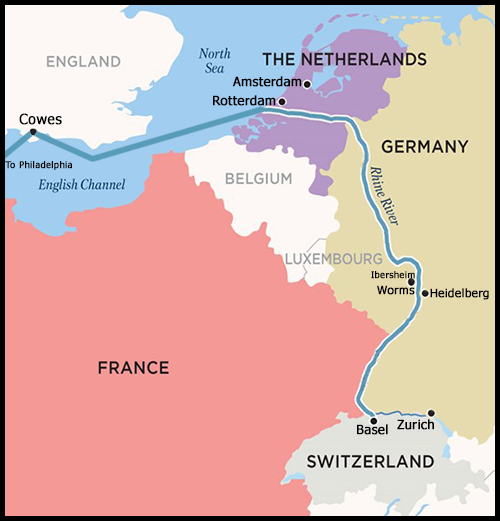
The Rhine River has been called the “River of Destiny.“[i] Hundreds of thousands of Swiss and Germans sought their dreamland destinies by floating down the Rhine on barges, from the mid-17th century until the mid-19th century
[i] Charles R. Haller, Across the Atlantic and Beyond: The Migration of German and Swiss Immigrants to America, 239.
Under good river conditions, the trip down the Rhine from Worms to Rotterdam, approximately 375 miles or 600 km, could have taken only six or seven days of actual floating time, at about 2 ½ miles per hour. But there were many toll stations (associated with princedom toll castles) along the way. Maybe as many two dozen or more toll stations were active in the early 1700s, from Worms to Rotterdam. [i] The toll castles belonged to territorial lords or to their authorized vassals.
[i] Haller.
Although we will see many of the same sights that Henrich Hiestand saw, our trip will be much more pleasant–and shorter, and we will be traveling up the river, not down. We can relax in comfortable chairs, enjoy a snack, and not worry about stopping at every castle to play a toll!
When Sharon and I were there on a similar tour in June 1018, we thought the cruise was the perfect ending to a fantastic tour!
Introduction: A River Cruise You Will Never Forget!
2:40 Video
Rhine River Cruise - Sit Back and Enjoy a Relaxing Preview of the Scenes
11:49 Video
Contact Renee Cue (renee@reneecue.com) to express your interest in joining the tour group, or asking for more information.
Share this with Hastons or related family members who might be interested in the June 14-27, 2023 Hiestand-Haston European Heritage Tour.

32 – Worms, Germany – Where Martin Luther Defended His Faith Before Emperor Charles V

32 - Worms, Germany - Where Martin Luther Was Tried
On the afternoon of (Saturday) June 22, 2023, our Hiestand-Haston Heritage Tour group will arrive in the city of Worms (pronounced “Vermz”), Germany – the place where Martin Luther stood before a formal deliberative assembly (“diet”) of leaders from the Holy Roman Empire, led by Emperor Charles V. He was called to defend his Christian beliefs regarding such things his opposition to the doctrine of indulgences (earthly payments for the forgiveness of sins), his belief that salvation comes by God’s grace through faith and not of works, and his commitment to the authority of Holy Scripture over the authority of the Church. Later, he was condemned as a heretic.
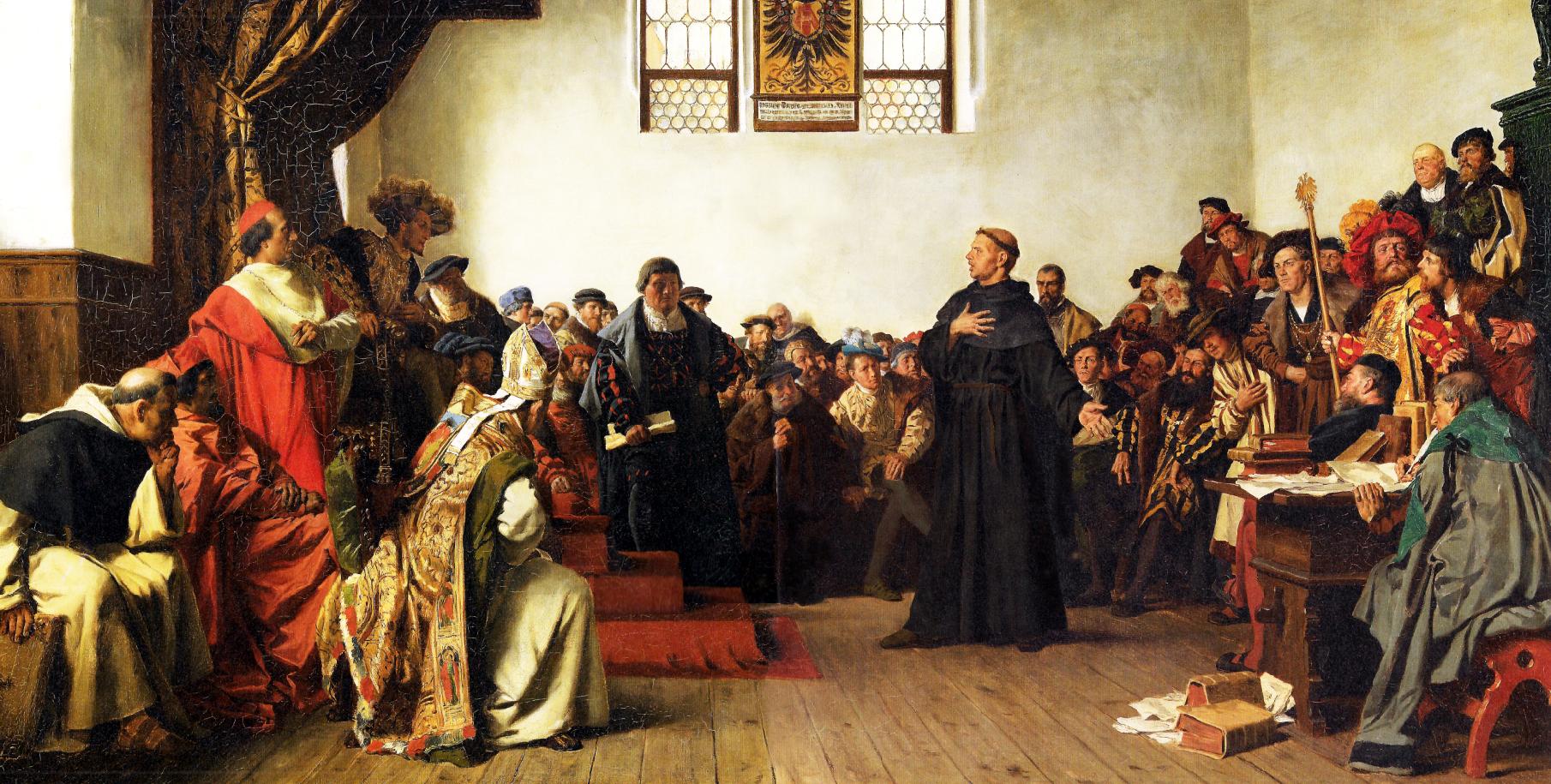
From Wikipedia: On April 18, 2021, Luther, saying that he had prayed for long hours and consulted with friends and mediators, presented himself before the Diet. When the counselor put the same questions to him, Luther first apologized that he lacked the etiquette of the court. Then he answered, “They [25 books he had written] are all mine, but as for the second question, they are not all of one sort.” Luther went on to place the writings into three categories: (1) Works which were well received even by his enemies: those he would not reject. (2) Books that attacked the abuses, lies, and desolation of the Christian world and the papacy: those, Luther believed, could not safely be rejected without encouraging abuses to continue. To retract them would be to open the door to further oppression. “If I now recant these, then, I would be doing nothing but strengthening tyranny”. (3) Attacks on individuals: he apologized for the harsh tone of these writings but did not reject the substance of what he taught in them; if he could be shown by Scripture that his writings were in error, Luther continued, he would reject them. Luther concluded by saying:
Unless I am convinced by the testimony of the Scriptures or by clear reason (for I do not trust either in the pope or in councils alone, since it is well known that they have often erred and contradicted themselves), I am bound by the Scriptures I have quoted and my conscience is captive to the Word of God. I cannot and will not recant anything, since it is neither safe nor right to go against conscience. May God help me. Amen.
Martin Luther
The Monument to Luther and Eleven Other Reformers
We will be staying in a hotel less than a block from the world’s largest reformation monument, which features the statue of Martin Luther and 11 other reformation leades.
1902 Postcard
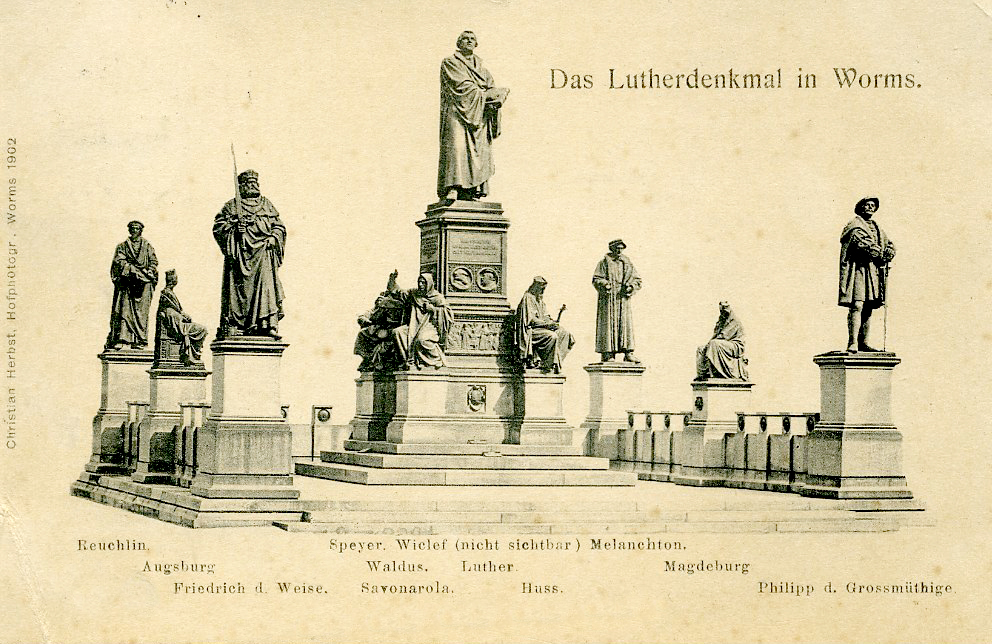
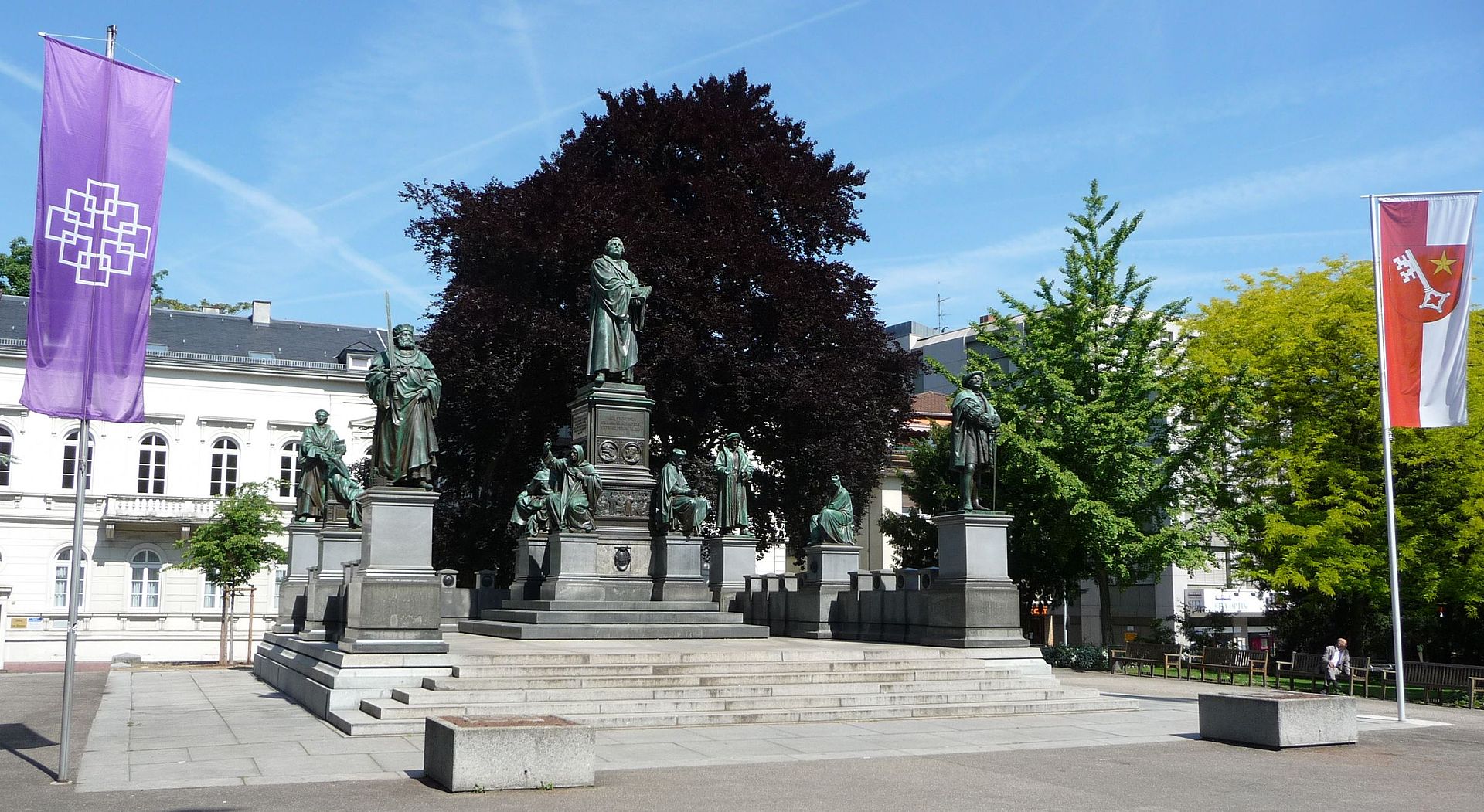
Plans to build a significant monument to Martin Luther in Worms were already made in the 18th century. In 1856, an association, the Luther-Denkmal-Verein, was formed, which pursued the idea and collected donations from Europe and the Americas. Among the historical topics remembered by the monument are Luther’s Ninety-five Theses of 1517 and his appearance at the Diet of Worms in 1521, where he defended his theses facing Charles V, Holy Roman Emperor. The main 11 ft high bronze statue of Luther is surrounded by eleven others depicting other reformers, political figures, and personified related towns. The statues are mounted on separate stone plinths on a stepped base, and the overall shape of the monument is intended to resemble a castle, representing Luther’s hymn “Ein feste Burg ist unser Gott” (A firm castle is our God). -Wikipedia
The monument was unveiled on 25 June 1868 in a ceremony attended by around 20,000 people, including nobility and leading German Protestants.
The Classic Scene of Martin Luther's Defense at the Diet of Worms
(7:11) There are more modern versions of this scene, but none of them equals the drama of this movie clip.
Contact Renee Cue (renee@reneecue.com) to express your interest in joining the tour group, or asking for more information.
Share this with Hastons or related family members who might be interested in the June 14-27, 2023 Hiestand-Haston European Heritage Tour.

31 – Mennonite Church in Ibersheim – Where Our Ancestors Worshipped

31 - Mennonite Church in the Village of Ibersheim, Germany
Our Hiestands' Church Home 350 Years Ago
On Sunday, June 25, 2023, our Hiestand-Haston European Heritage Tour group will worship here, where our ancestors worshiped. Pastor Andreas Kohrn has invited us to join their congregation for the service and to enjoy their annual summer “BBQ Grillfest” after the service!
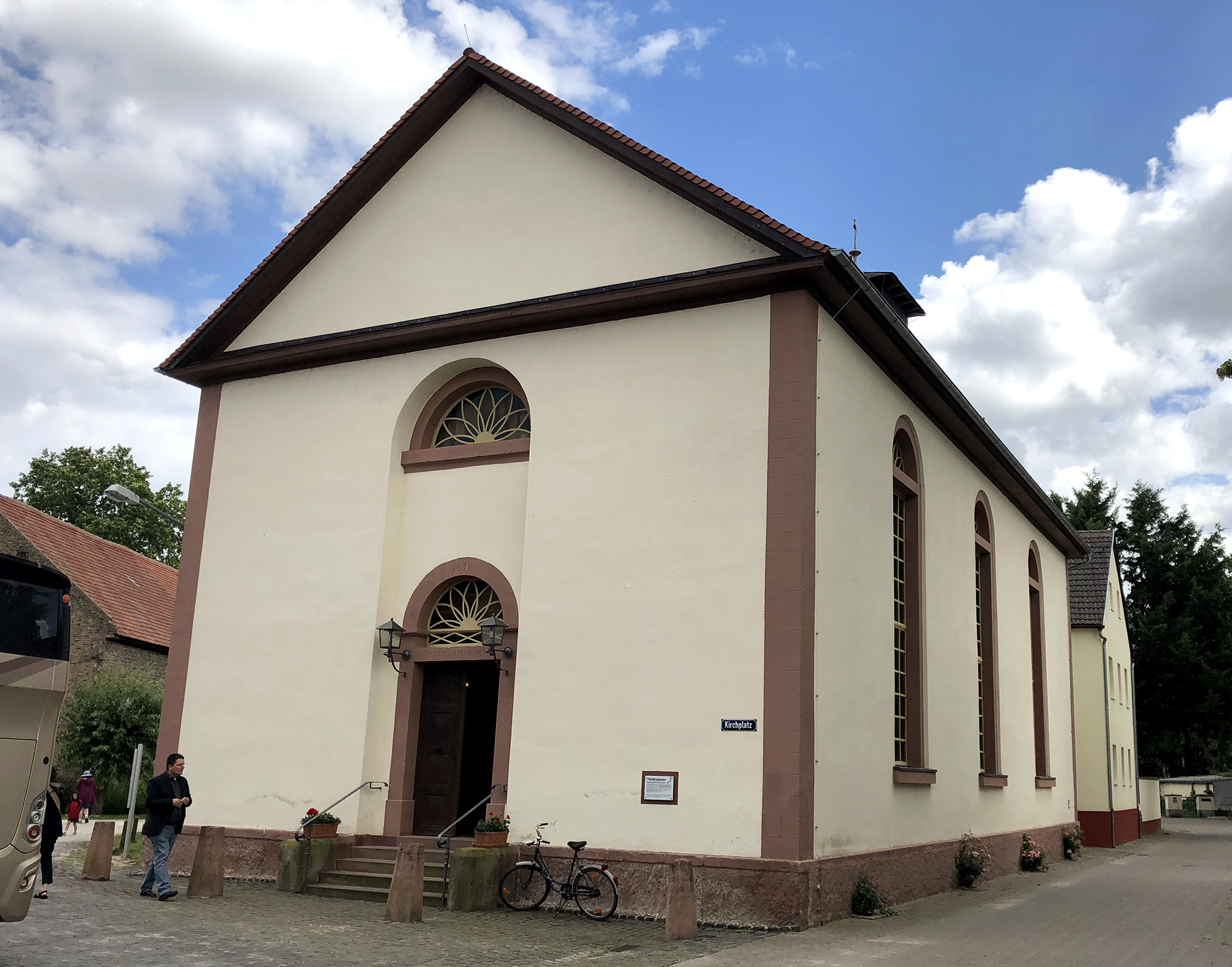
“The parish of Ibersheim is probably the first and oldest Mennonites parish founded after the Thirty Years War (1618-1648) in the former Palatinate.”
Author Unknown
Jacob Hiestand was one of the earliest ministers in the Ibersheim Mennonite Church. He led the congregation during one of its most difficult times of danger and terror.
Text source: Worms-Ibersheim: A Walking Tour through a Cultural Heritage Village by Dr. Christian Land and Dr. Irene Spille
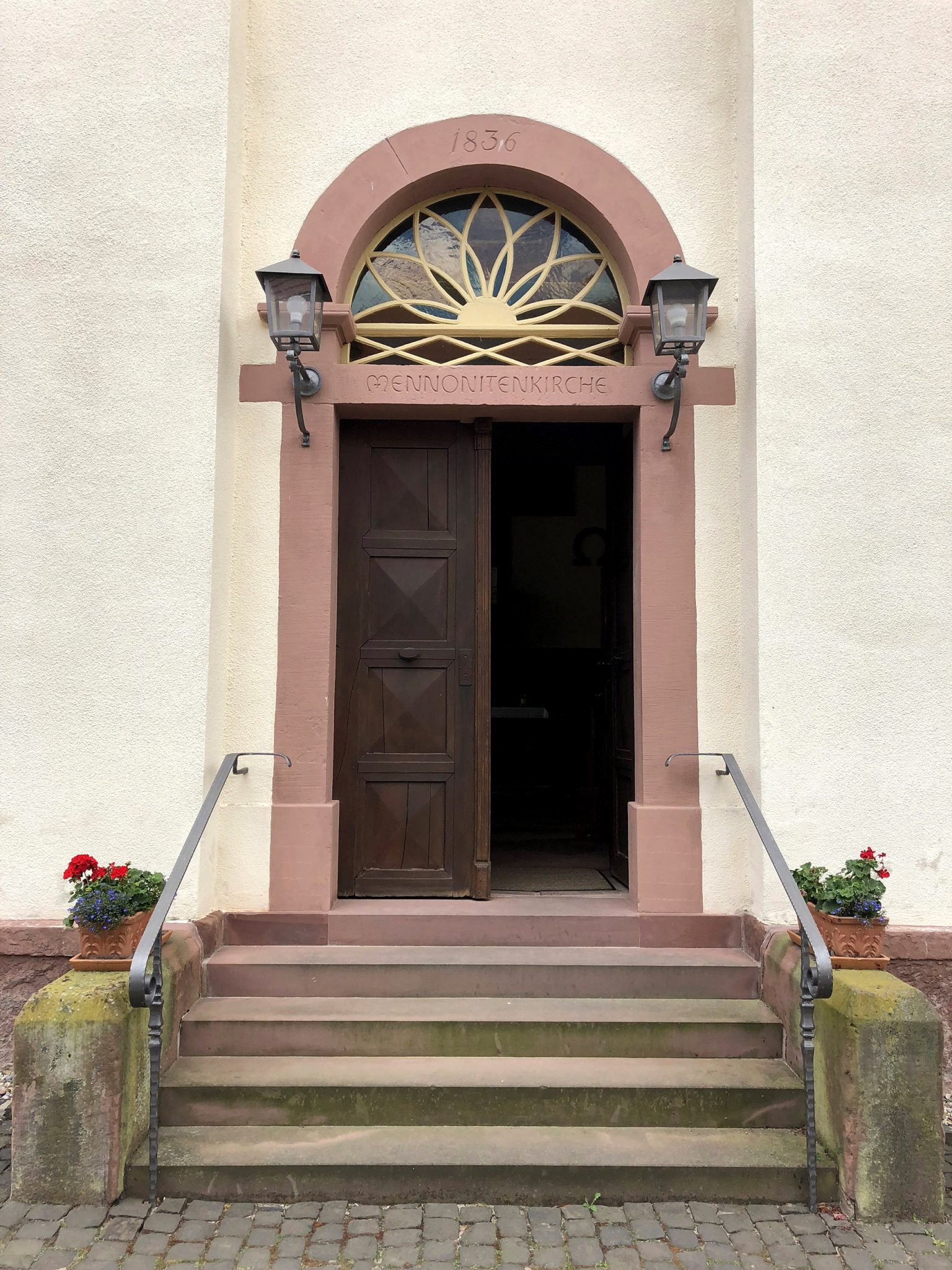
The church was built as the center of the village in 1836. An older Mennonite church, probably from the early 18th century, stood at the same location. Prior to its construction, church services were held in private homes which had a large room, the so call “Sälchen” (little hall). Because the territorial princes refused to allow them to build a church with a tower and bell, the first Mennonite Church was a plain house with a meeting hall for church services and a schoolroom on the ground floor. A council room was also erected on the upper floor. With the changes in society, it became possible to build a church with a bell tower in 1836. Before acquiring their first bell in 1806 (which is in use even today at the cemetery), a horn was used to call people to church services.
In accordance with the principles of faith, the church is very simple and plain. It is a plastered building in the unadorned style common to Classicism, with a long rectangular layout facing the southeast. The long side of the building is divided by round-arched windows almost as high as the walls. The door to the church entry has a round-arched skylight with the inscription “1836.” The church in Ibersheim is the only Mennonite church in Germany with a bell tower. In 1866, the chimes, comprising two bells, were solemnly dedicated. The only decoration on the bells is the date “1865.” and the inscription “Property of the Mennonite Congregation Ibersheim.”
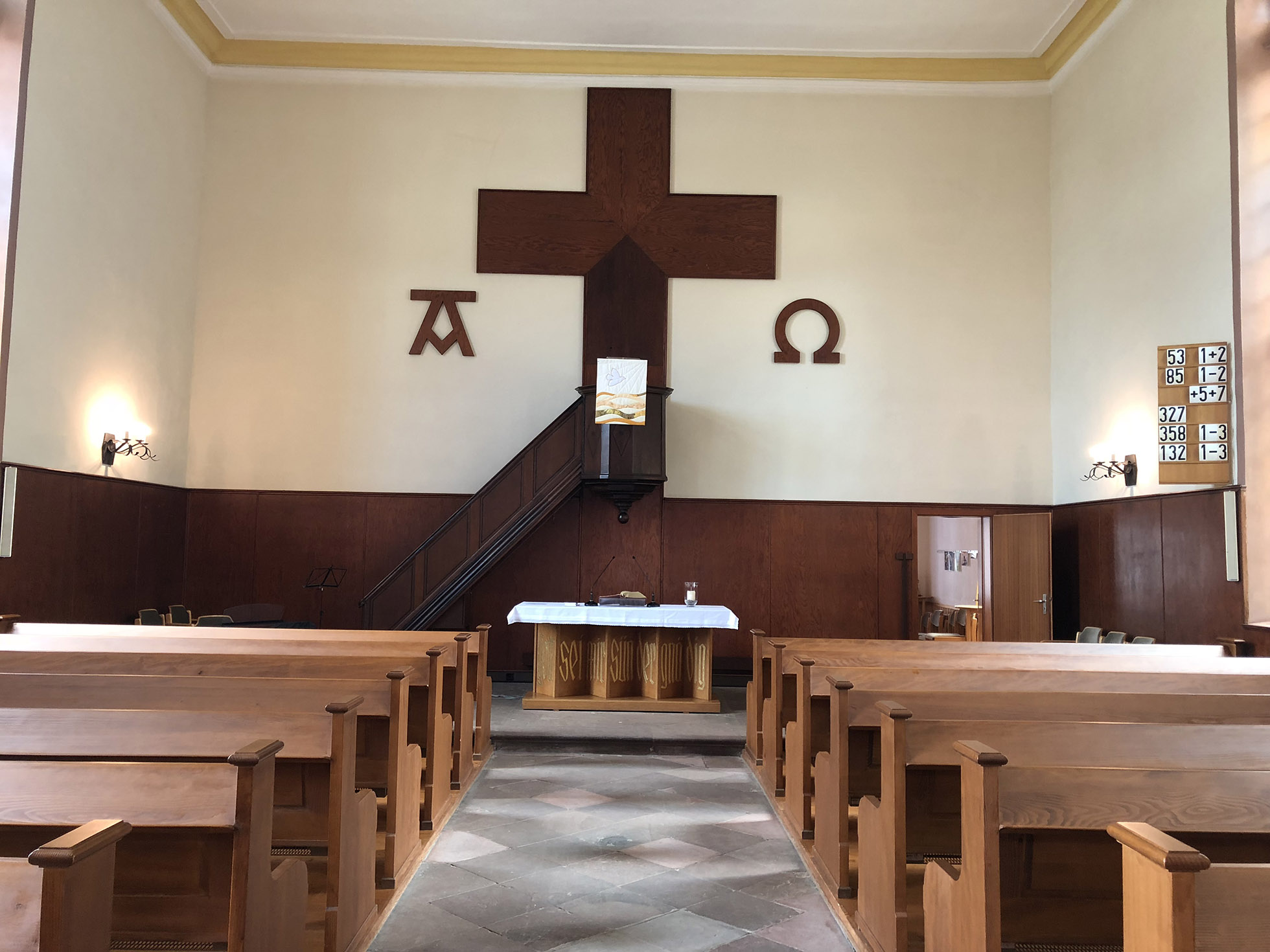
The church’s interior is a plain hall with two windows on each side. The middle aisle leads directly to the communion table and pulpit, which is placed directly behind it. During the renovation of the church in 2012, the benches on both sides of the room were built after the model of the old benches. In 1972, the former stone communion table was replaced by a wooden one which was designed and created by Fritz Kehr. The table rests on a base made of 7 parts set in a zig-zag form. The altar panels are decorated with the proverb “God be merciful to me. a sinner.” The writing is fragmented into seven parts and is carved out in high Gothic gold-plated letters. The lower part of the church walls is paneled in wood. Rising behind the altar, also in the form of wooden paneling, is a cross, donated in 1936 and as high as the room itself. It is flanked by the letters alpha and omega. The pulpit is mounted on this cross. There is a stairwell to the side of the pulpit leading up to it.
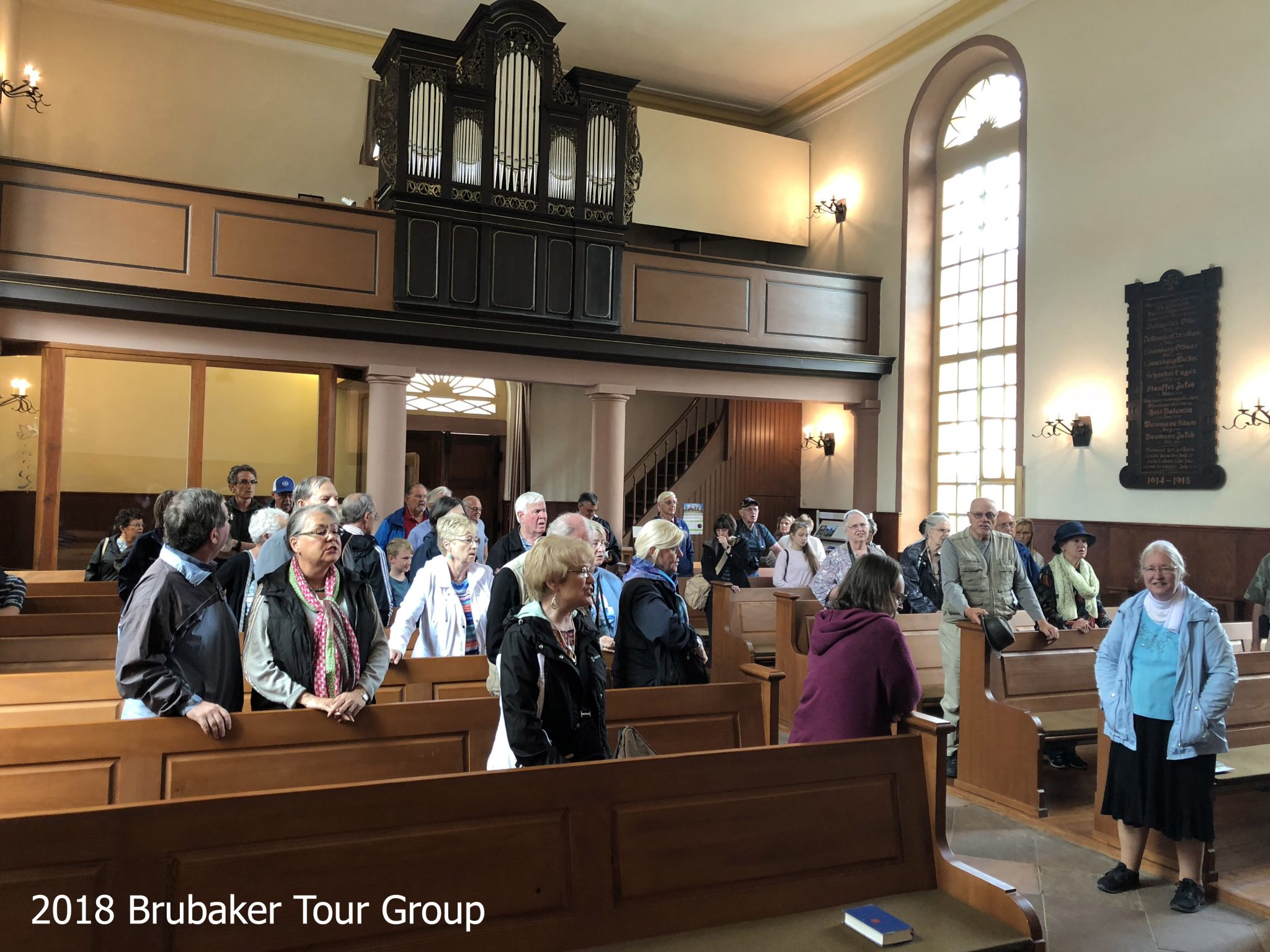
The organ, situated in the very simple west gallery which itself rests on pillars, originates from the earlier church. It was built in 1821 or earlier by the organ builder Philipp Christian Schmidt (from Kirchheimbolanden), who was a student of the organ builder Stumm. It was last restored in 2004. The organ pipes had to be handed over in the First World War. They were replaced in 1921. The classical organ case with its decorations and woodcarvings is comparatively elaborate for this church interior.
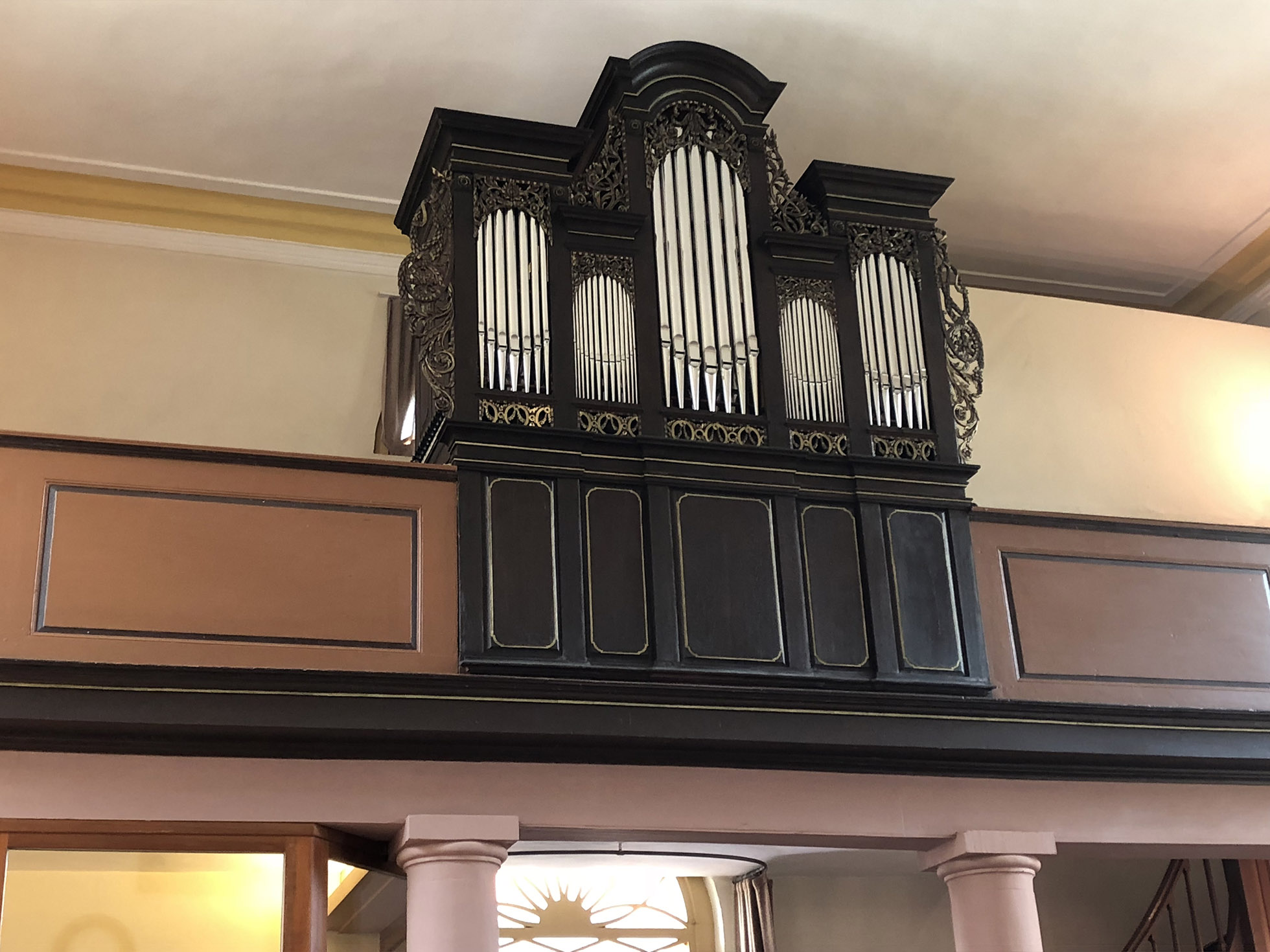
On the eastern side, there are two separate rooms, one above the other. Over the years these served various purposes. for example as living spaces for the church servants, as a kindergarten, council room, and up to 1958, as a schoolroom for the first grade to fourth-grade classes. Now they are used by the church congregation exclusively as community or youth areas. For many decades now the church has also been used by the Protestants and Catholics for their church services. The extensive renovation carried out in 2012 ensures that the church can continue to provide a space for shared faith, life, and experiences for years to come.
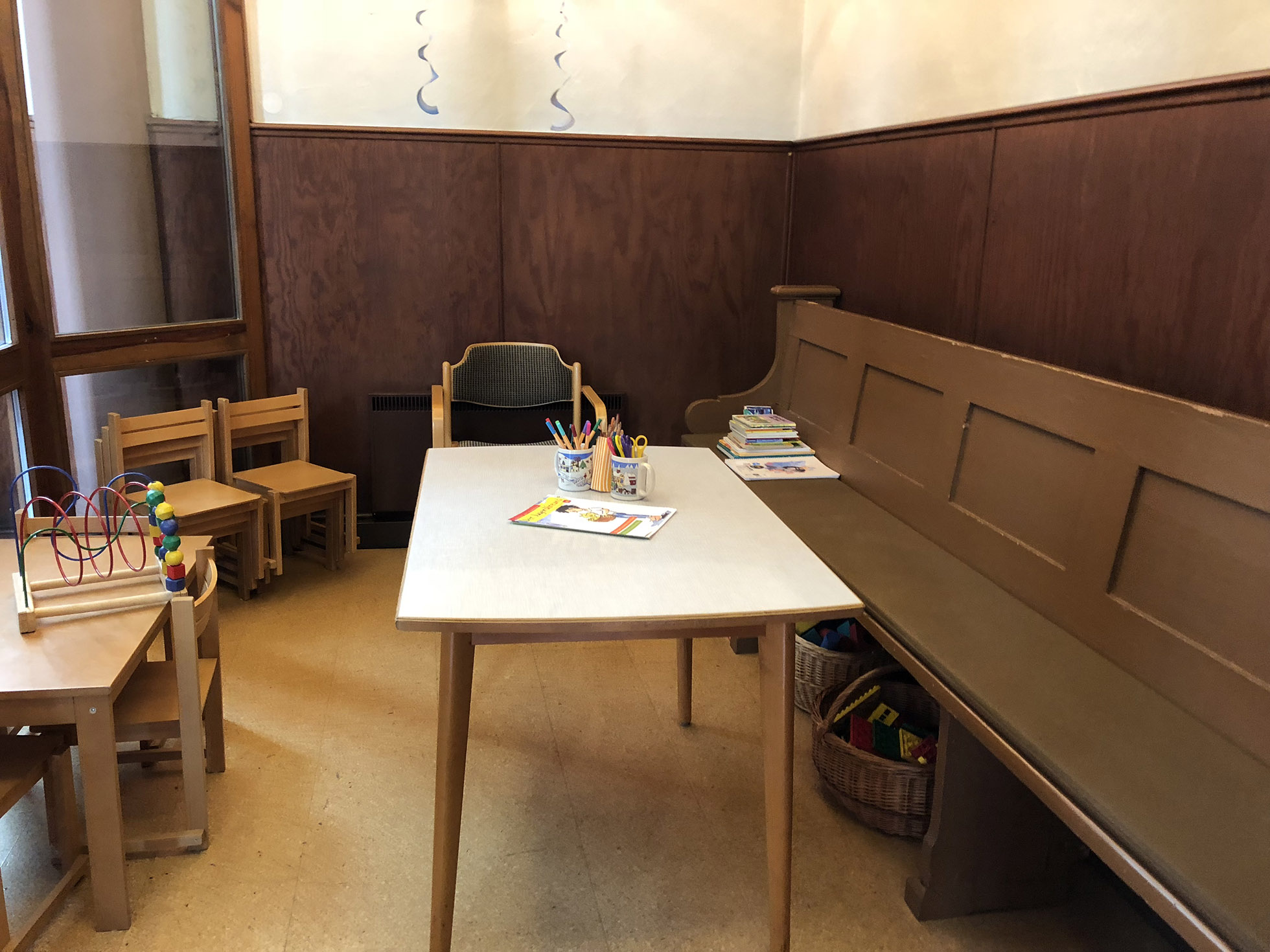
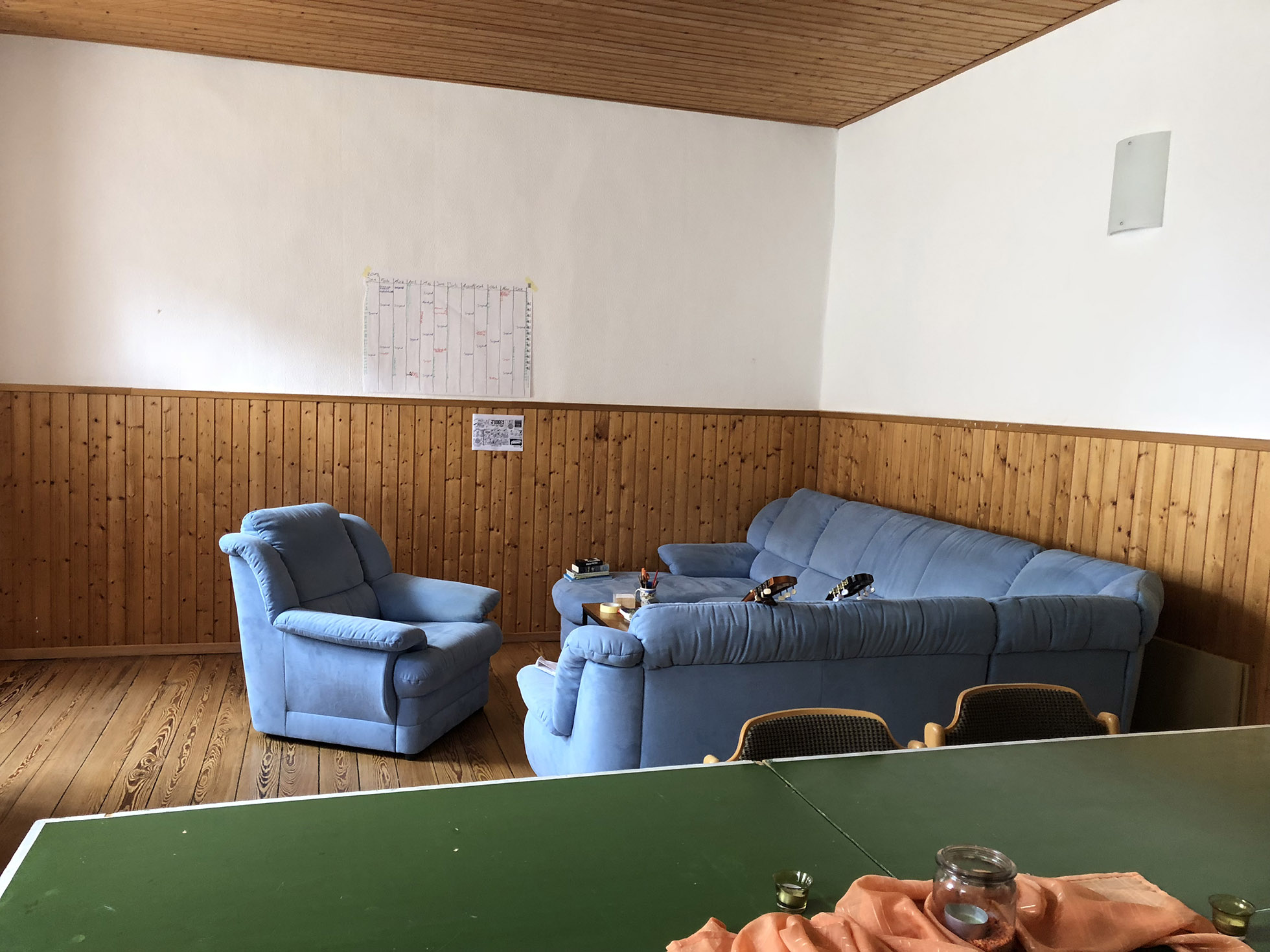
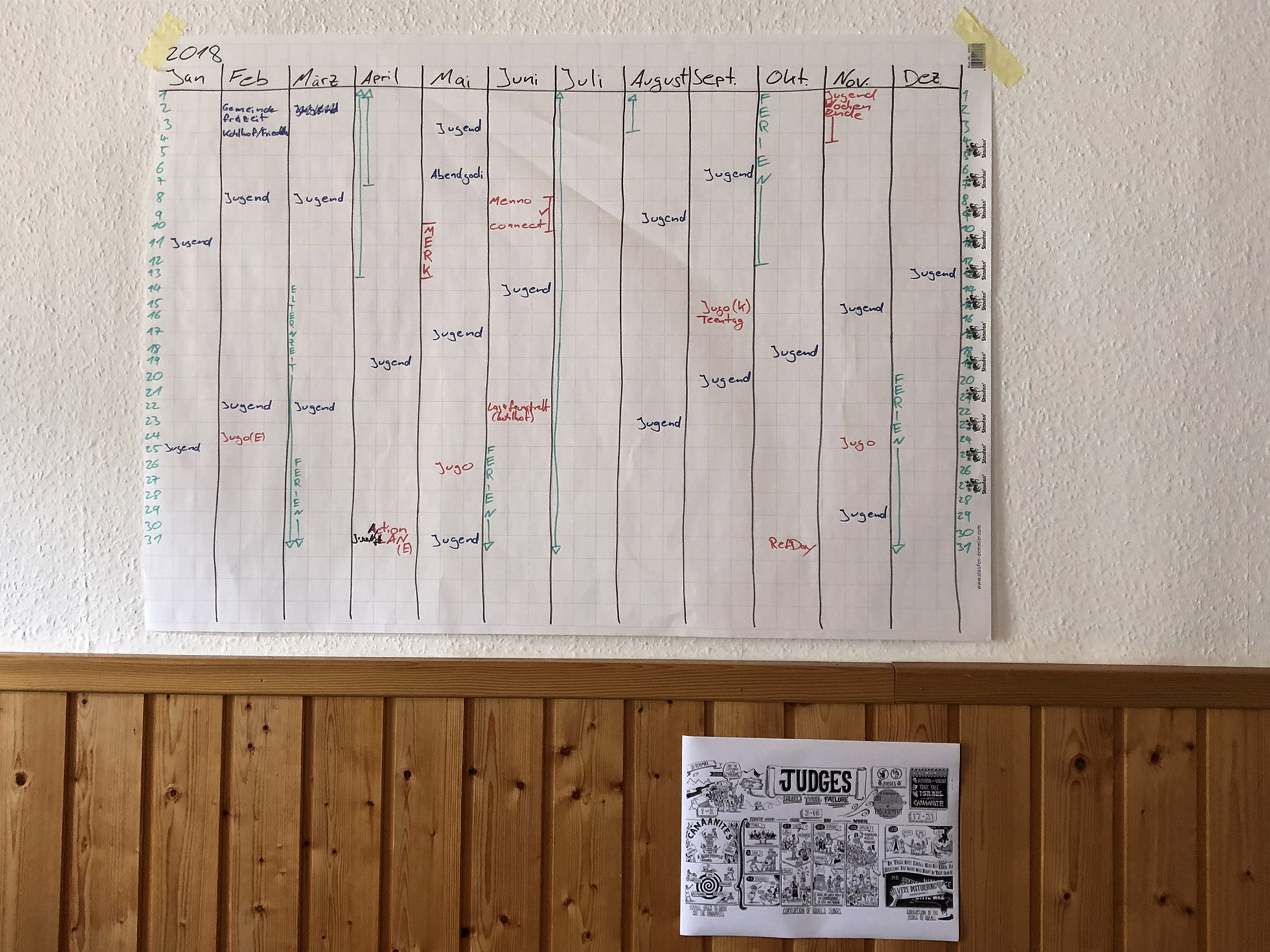
On the wall of the property at Kirchplatz 2, there is an inscription which is characteristic for the village and life of the first Mennonites in Ibersheim: “The blessing of the LORD, it maketh rich, and He addeth no sorrow with it – Ora et labora – pray and work.”
The Latin wording reminds one that there was once a Latin School in Ibersheim and it is meant to illustrate the education and character of the property owner.
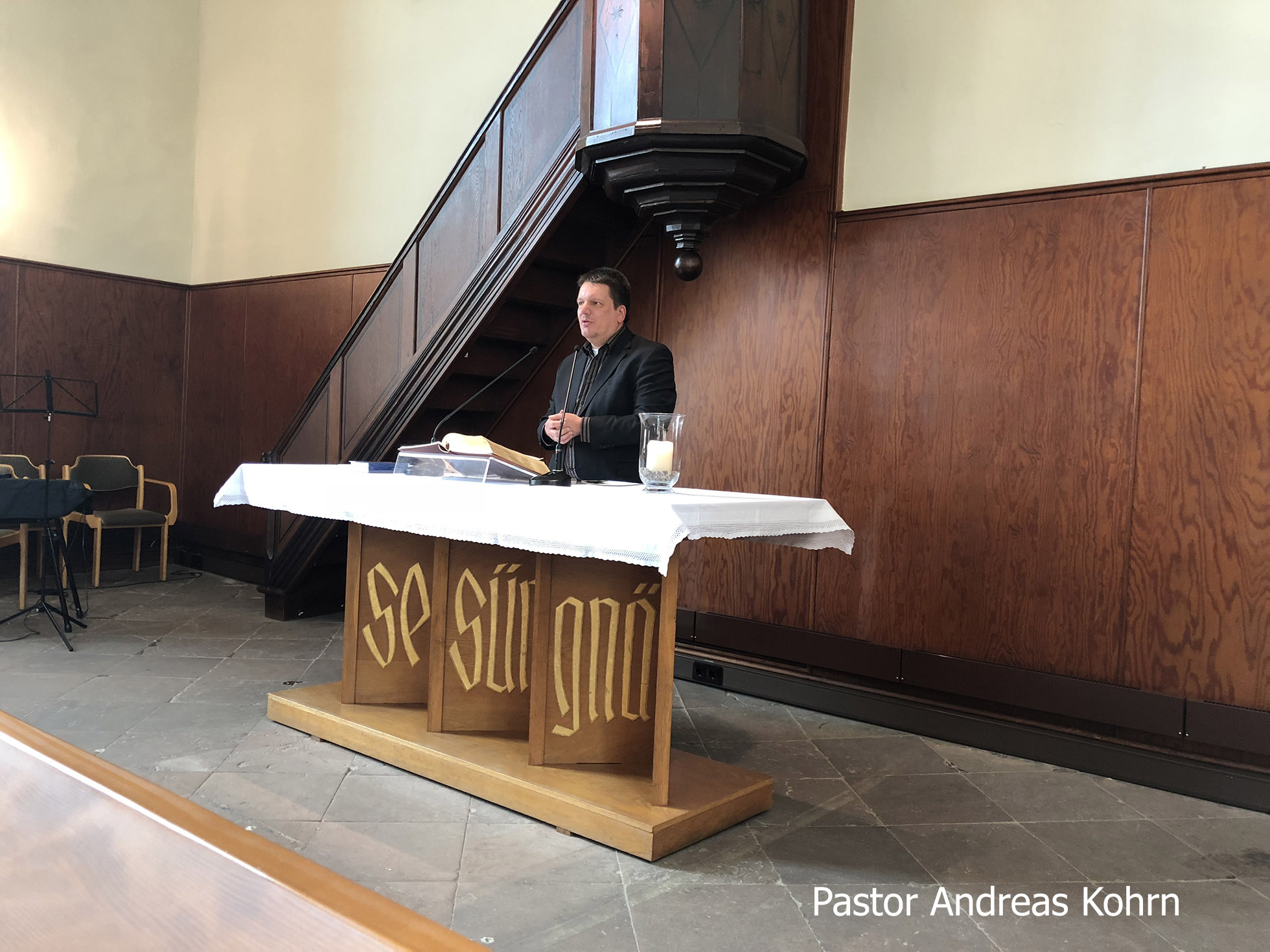
In May of 2017, the Ibersheim Mennonite congregation consisted of 123 members, but only a few of these live in the village itself.[i] Currently, the church building constructed in 1836 is the only church in the village
[i] Andreas Kohrn, personal email to the author, November 11, 2017. Reverend Kohrn was the pastor of the Ibersheim congregation at the time of the email.

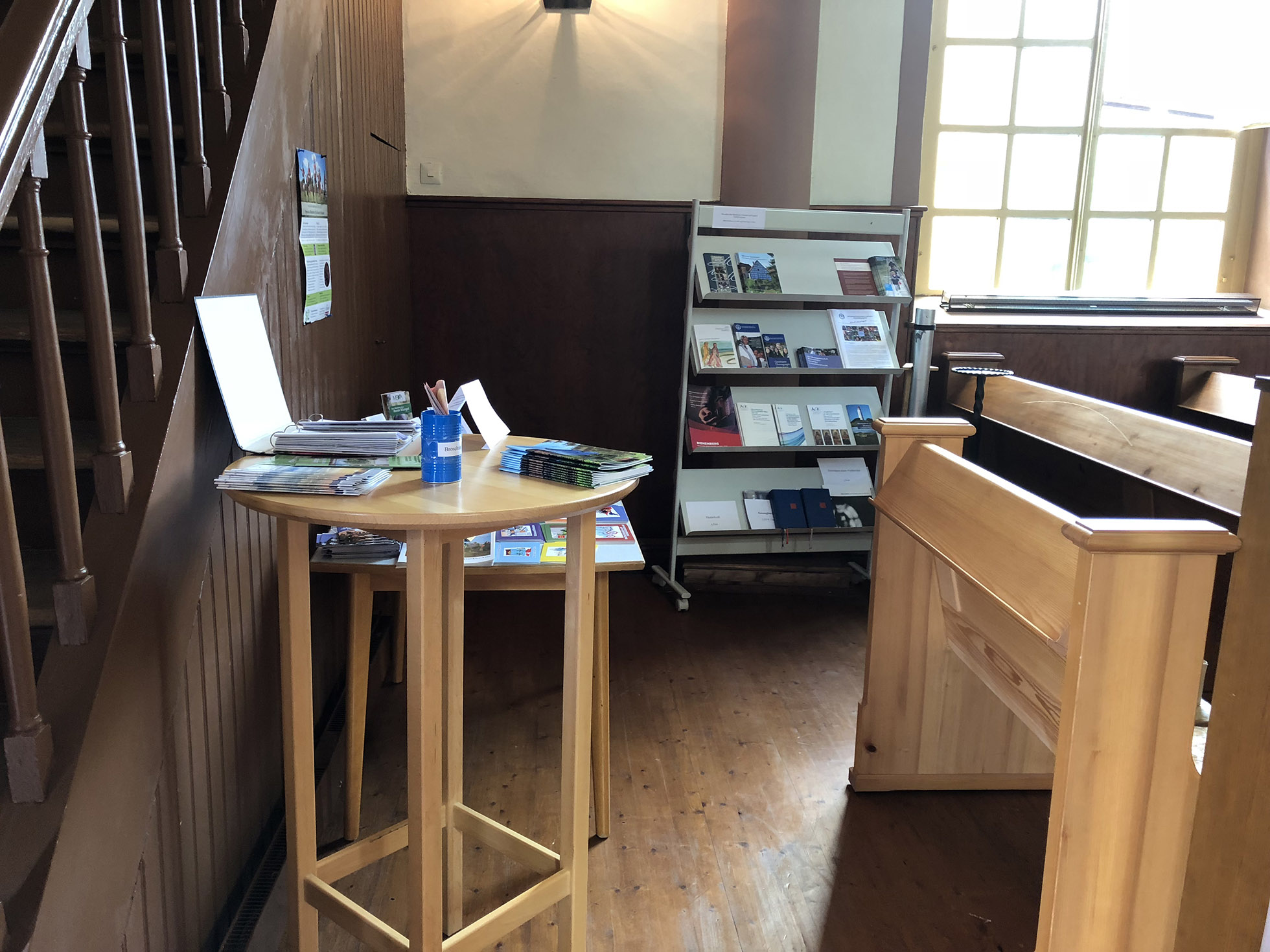
May 2020 Cyber-Service in the COVID-19 Era
Share this with Hastons or related family members who might be interested in the June 14-27, 2023 Hiestand-Haston European Heritage Tour.

30 – Our Ancestors’ Little German Village of Refuge – Ibersheim
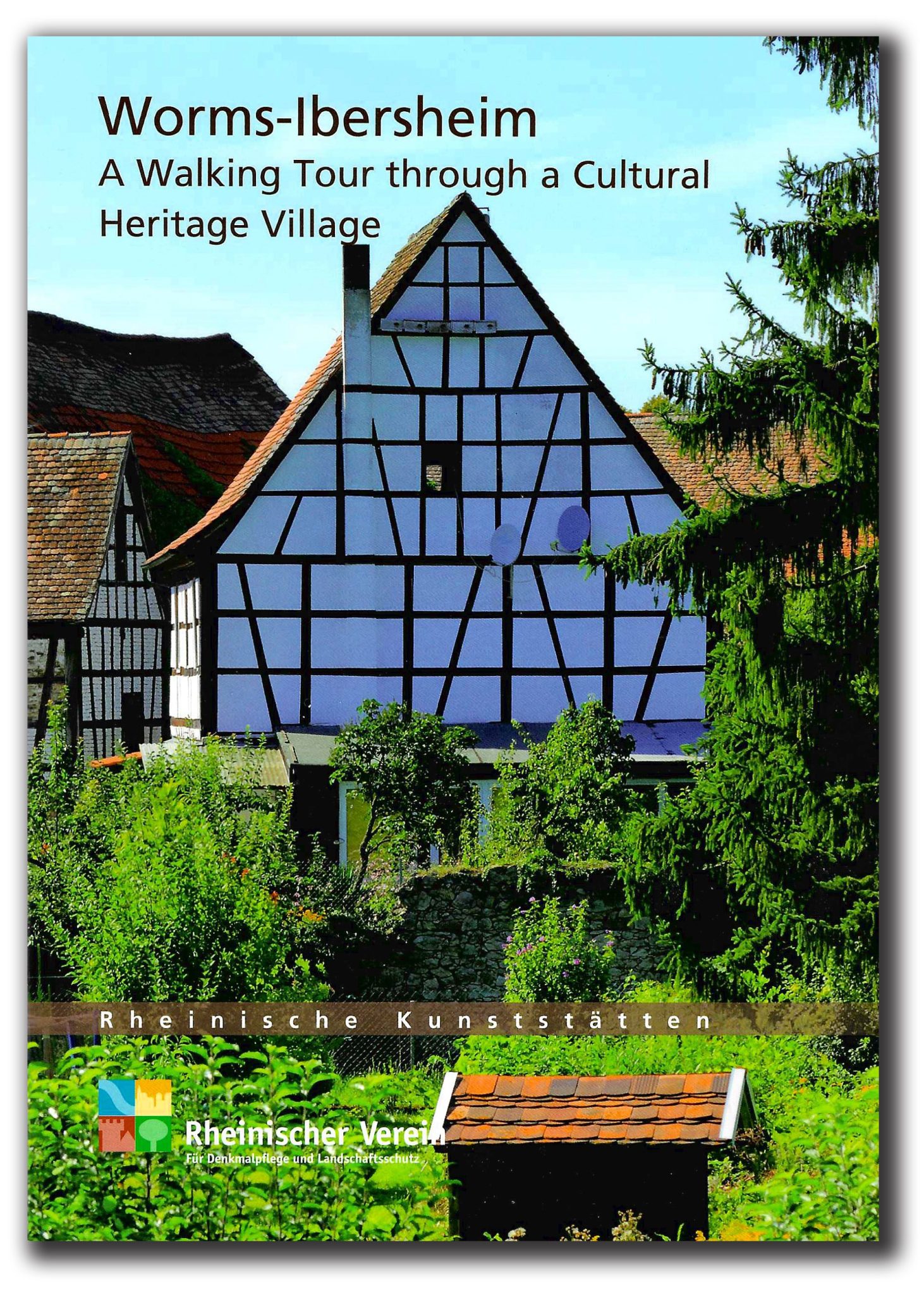
30 - Our Ancestors' Little German Village of Refuge - Ibersheim
On Sunday, June 25, 2023, our Hiestand-Haston Heritage Tour group will visit this very special place. We have been invited to join the village’s Mennonite Church for their Sunday morning service, be their special guests for an after-church “Grillfest” (BBQ), then take a walking tour through this historic village on the very streets where our ancestors walked many years ago.

The village of Ibersheim is situated on what historically was an unprotected floodplain on the left bank (west of) the Rhine River, just below a sharp northeastward bend in the river, about six miles (12 km) northeast of the center of Worms, Germany.

When the Swiss Mennonites entered the Palatinate after the Thirty Years War, most of them settled in villages. Not only was there a greater chance of freedom from oppression in the villages, as compared to the cities, but the villages were where their superb farming and viticulture skills were needed. If the post-war Palatinate was going to be restored, it would need to begin with the farms and the vineyards. And no group was better prepared for that task than the Swiss Brethren who, for more than 100 years, had been forced to eke out a farm living on shallow-soil of small and steep-mountain farms, high in the Swiss Alps.
There were many villages in the Rhineland where they were needed and welcomed. But the village of Ibersheim (or Ibersheimerhof, as it was then called) stands out as a Palatinate village that became identified as a uniquely Swiss Mennonite community. After the Thirty Years War, Ibersheim was…
a ruined estate with several hofs [farms] some six miles down the Rhine from Worms. Here, for reasons unexplained by historians, there had been latitude for the Mennonites to own land [in the Ibersheim estate] even before the great Electoral Concession [of 1664]. Its meadows and fields lay on either side of the great river, and some crops had to be ferried across.[i]
[i] John L. Ruth, Maintaining the Right Fellowship. (Eugene, OR: Wipf & Stock Publishers, 1984), 43.
Of all the Mennonites worldwide, it has been said that around 10% originate in or around Ibersheim.
Two of the earliest Swiss refugees to settle in Ibersheim were Konrad and Kleiann Hiestand, brother and sister. They were grandchildren of Heinrich and Anna Lutholt Hiestand from Richterswil in Canton Zürich, where Anna was on record as being an Anabaptist. Konrad and Kleiann, who apparently had adopted their grandmother’s faith, left their Swiss home in 1657. Kleiann married Jacob Brubacher, a neighbor she probably grew up with in Richterswil. She and Jacob lived next door to Konrad’s family in Ibersheim.[i]
[i] J. Ross Baughman, Apart from this World. (Edinburgh, VA: Shenandoah History Publishers, 1997), 72.
A special permit of 1661 and a unique concession of 1664, probably indicate how desperate the Elector was for expert farmers and how quickly he became impressed with his new tenants.
In 1683, nineteen years after the 1664 Concession, ten Mennonite men, who were heads of families in Ibersheim, were granted extraordinary rights not enjoyed elsewhere in the Palatinate. Konrad Hiestand (from Richterswil in Canton Zurich, Switzerland) was one of the specially privileged ten.
On the September 10, 1685 Mennonite census for Ibersheim, two Hiestand families were mentioned: Conrad Hiestandt, 5 children and 2 stepchildren and Hennrich Hiestandt, 10 children
The chief bailiff, who was not unfavorably disposed toward Mennonites, reported to the Elector that “Ibersheim Mennonites had changed their temporary state into a state of succession and so that they had a stationary domicile [permanent home] in the head office.” In his December 1685 letter to the Elector, he described these Mennonites in this way:
- They bear no arms and weapons, so that they could not be drawn in a committee.
- They do not swear an oath.
- Concerning their rule to administer the Holy Sacraments (except no baptizing of their children until they come to the age of understanding), mostly living in the order of the Reformed religion (taught by the Catechism of Heidelberg at a good part).
- Praying the Lord’s Prayer in the same way.
- Elect one of them who lectures their rules to them and gives admonition to them, named “admonisher” because of that.
- Everyone has to testify that they act peaceful and calm, living in peace with their neighbors, working diligently and being obedient, true, and constant toward authorities.[i]
[i] “Mennonites at Ibersheim, Germany,” 88.
A Few Scenes from a Walking Tour through the Village of Ibersheim
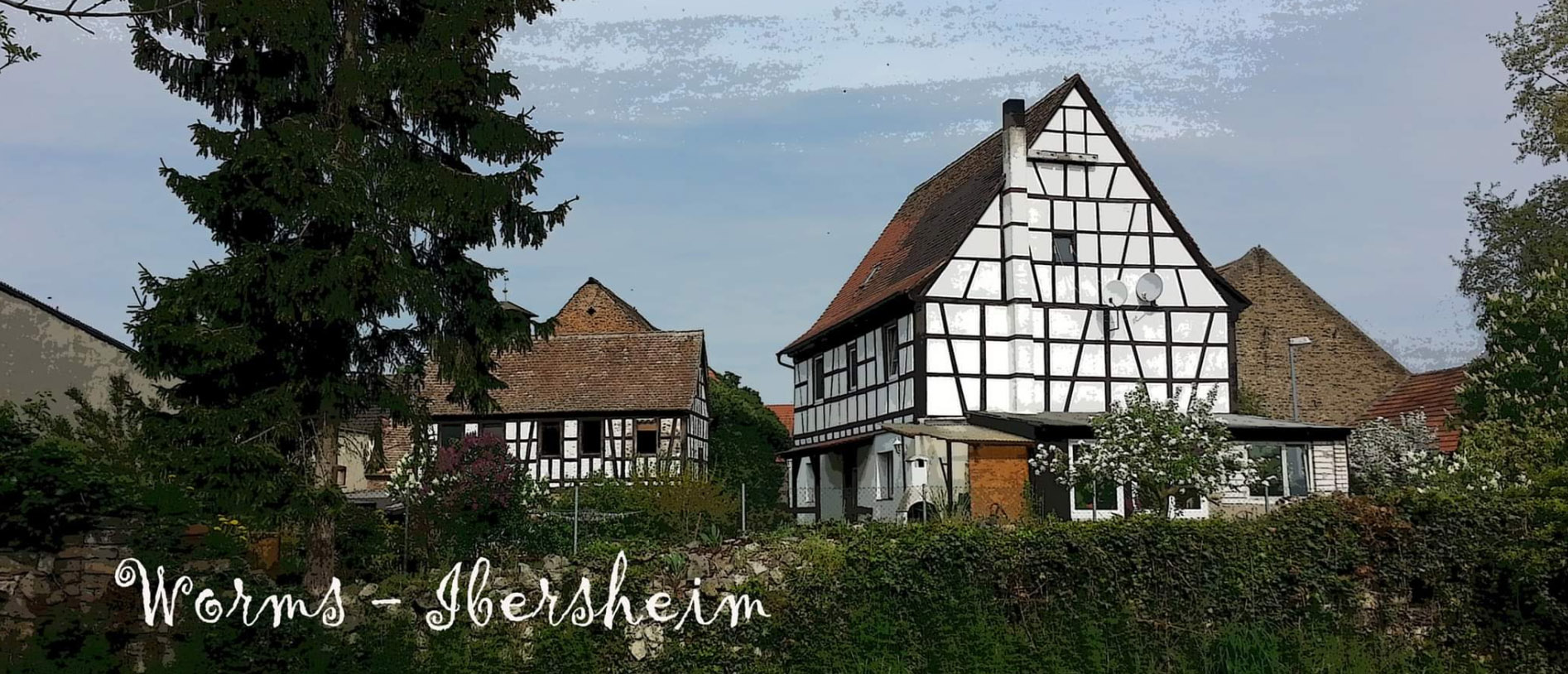
There's a story behind all of these Ibersheim pictures - you'll hear them on the tour.
House Built by a Hiestand Family in 1787
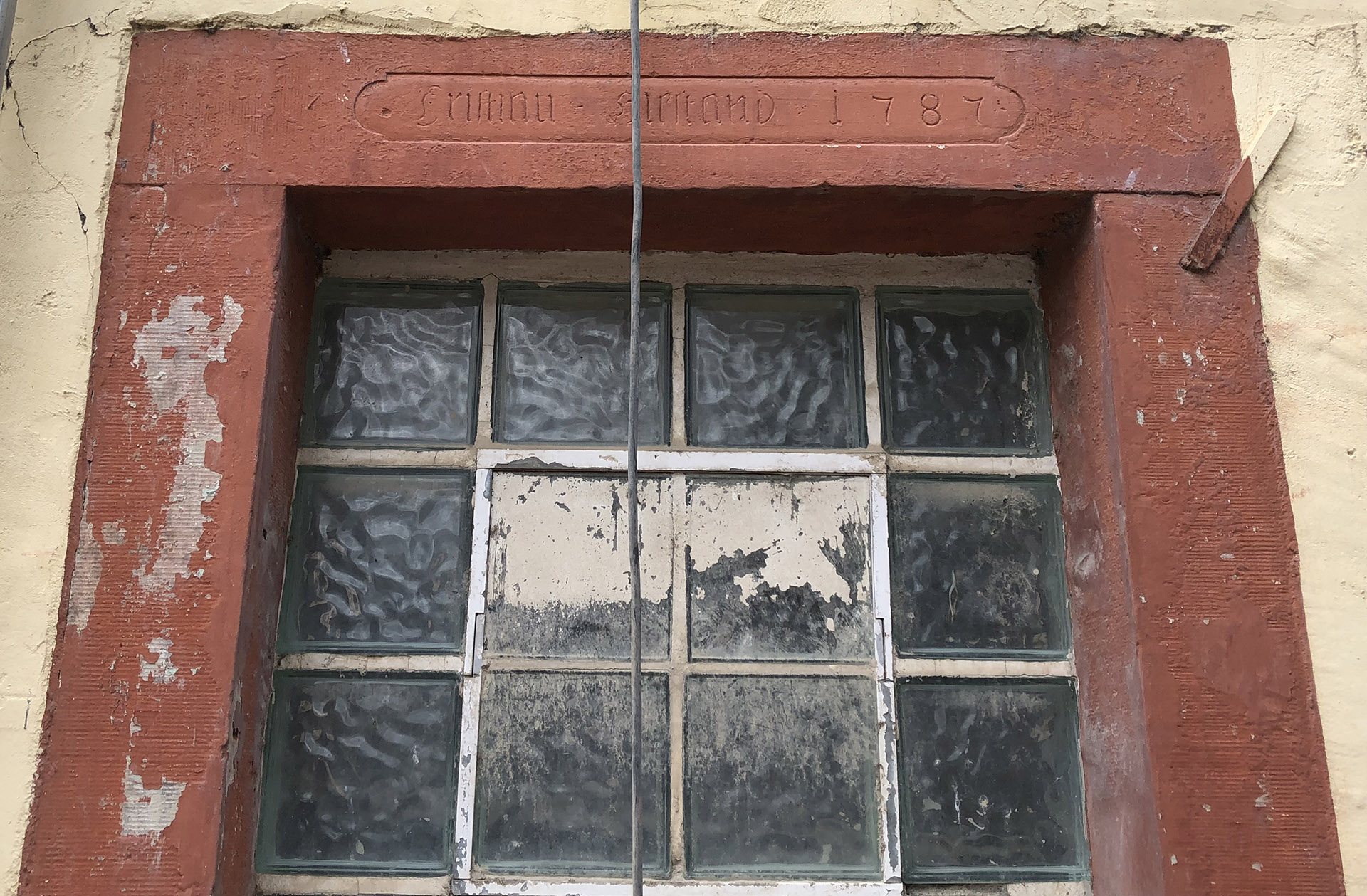
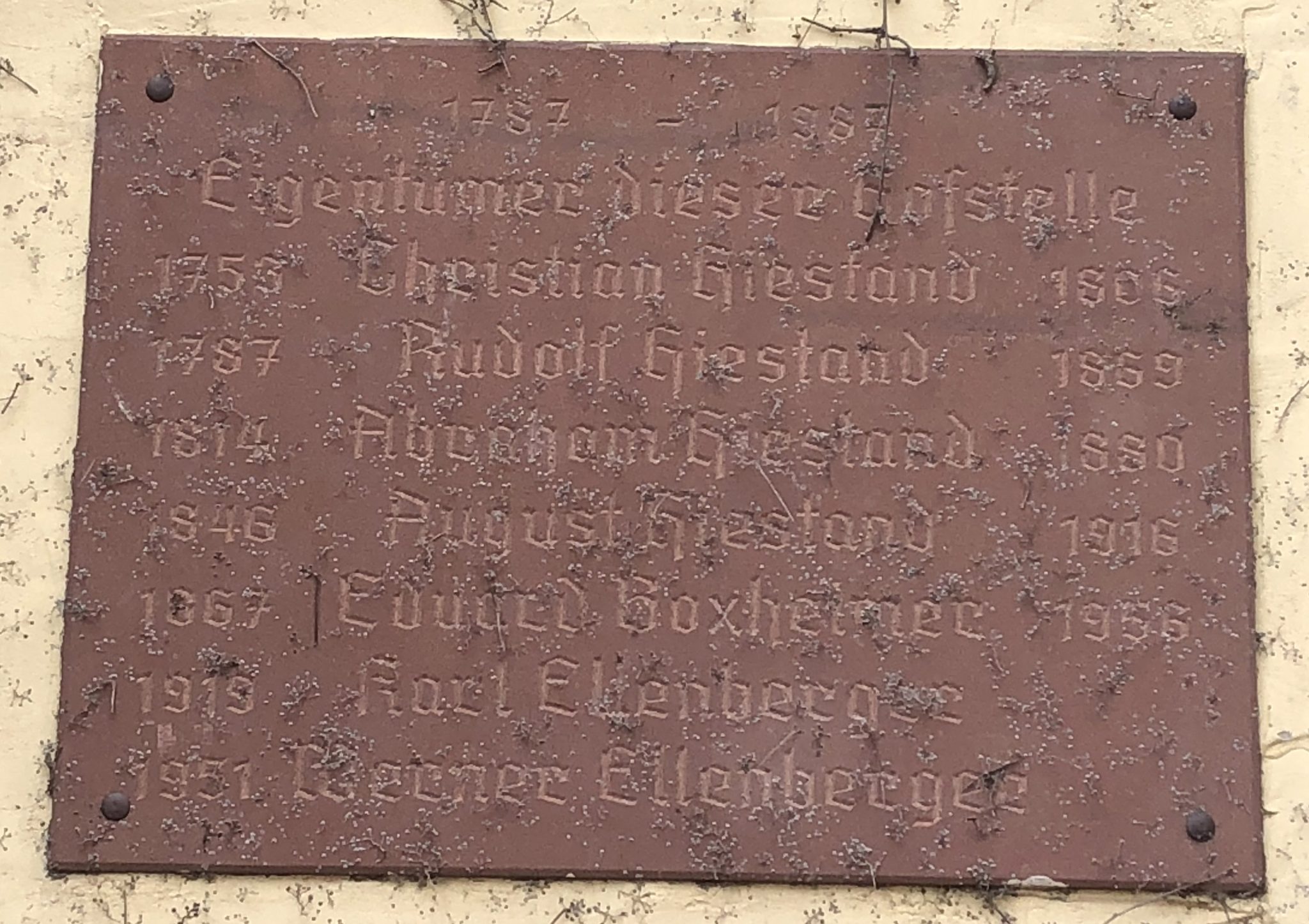
Contact Renee Cue (renee@reneecue.com) to express your interest in joining the tour group, or asking for more information.
Share this with Hastons or related family members who might be interested in the June 14-27, 2023 Hiestand-Haston European Heritage Tour.

45 – Isaac and Agnes Simpson Haston – Missouri Years
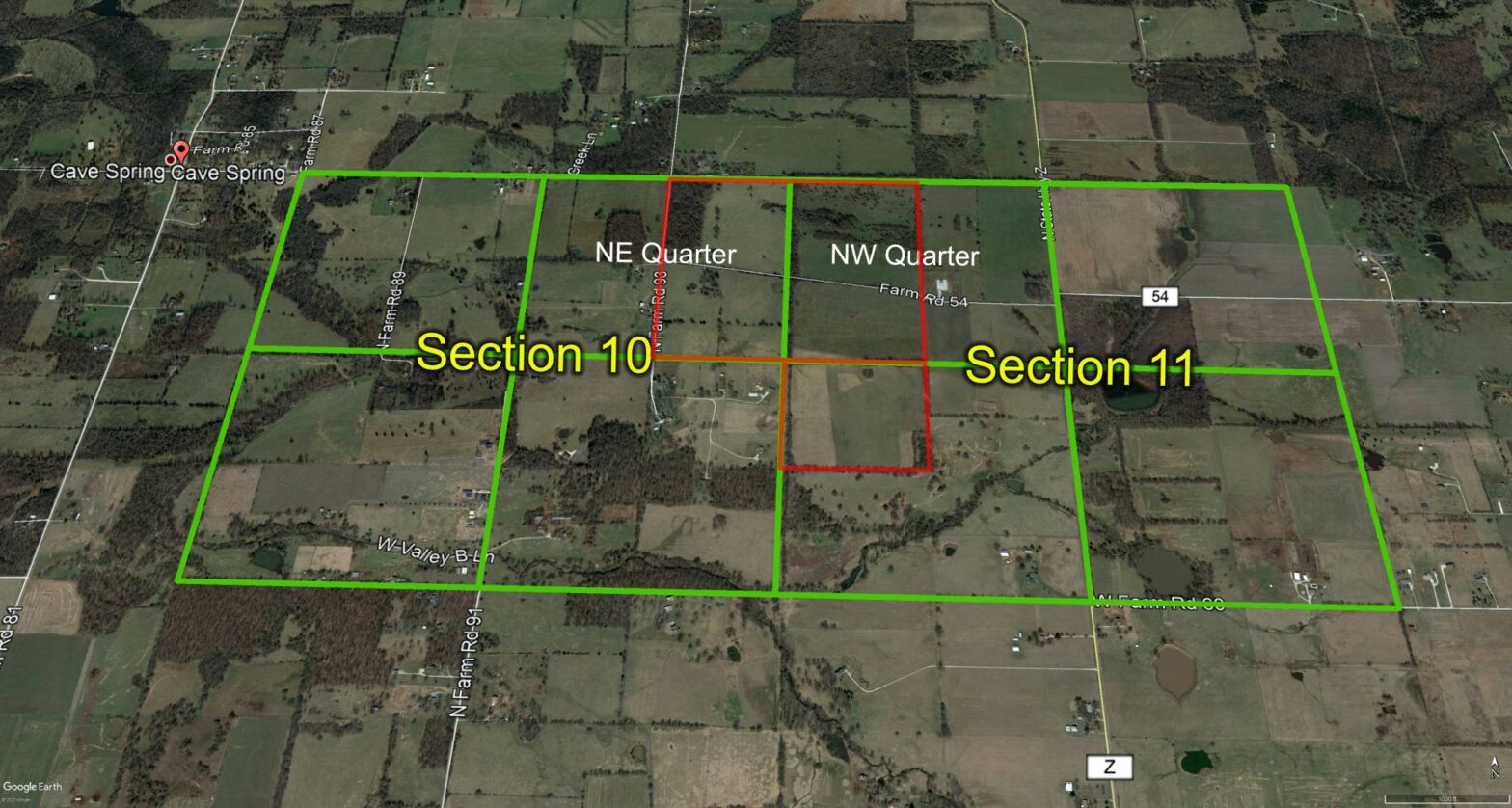
45 - Isaac and Agnes Simpson Haston - Missouri Years
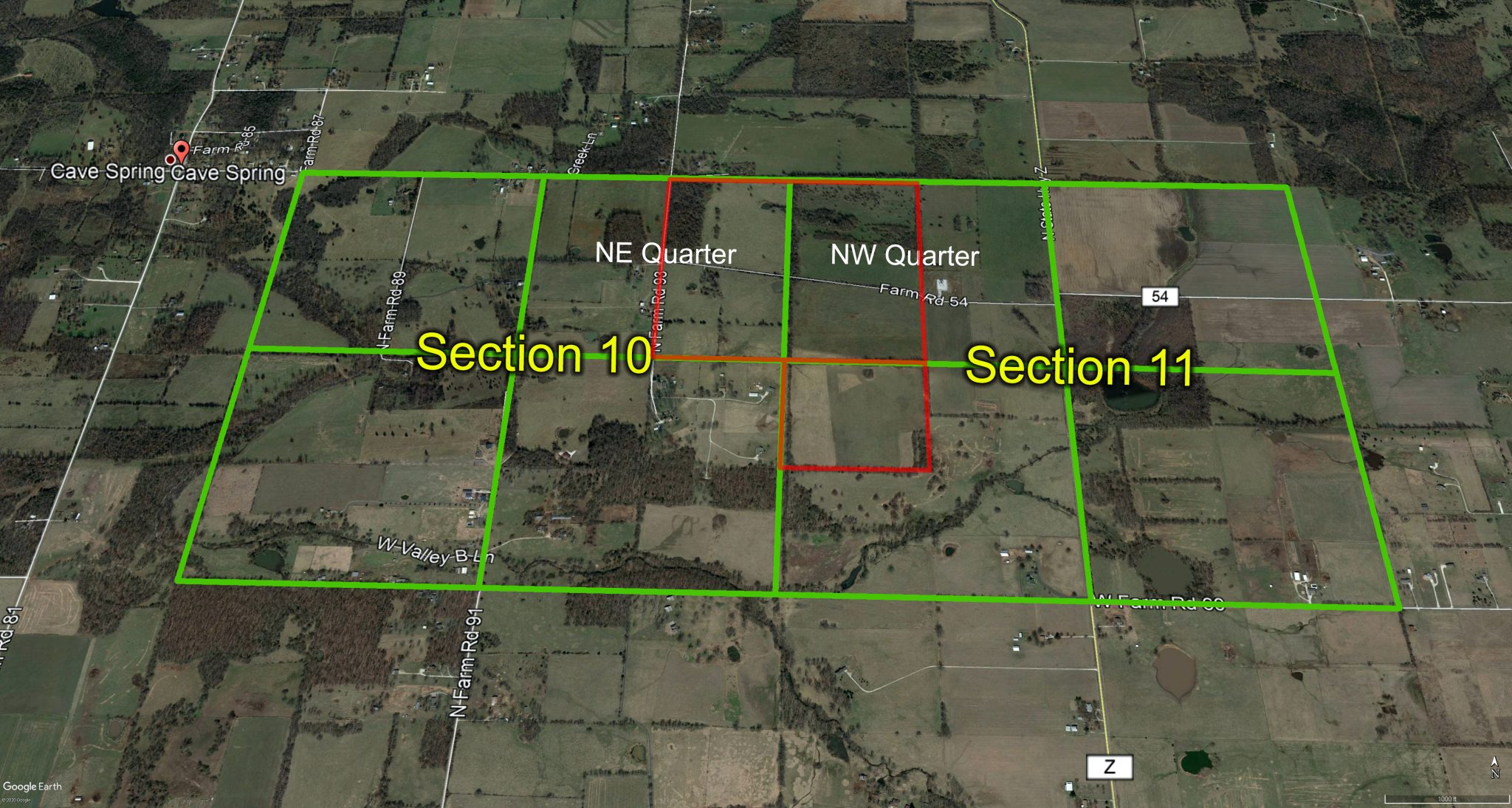
Isaac Haston lived the Great American Dream. He left Tennessee landless and broke, moved to Missouri and became a prosperous landowner in just a few years. He deserved it – he fought bravely for our country at the Battle of New Orleans.
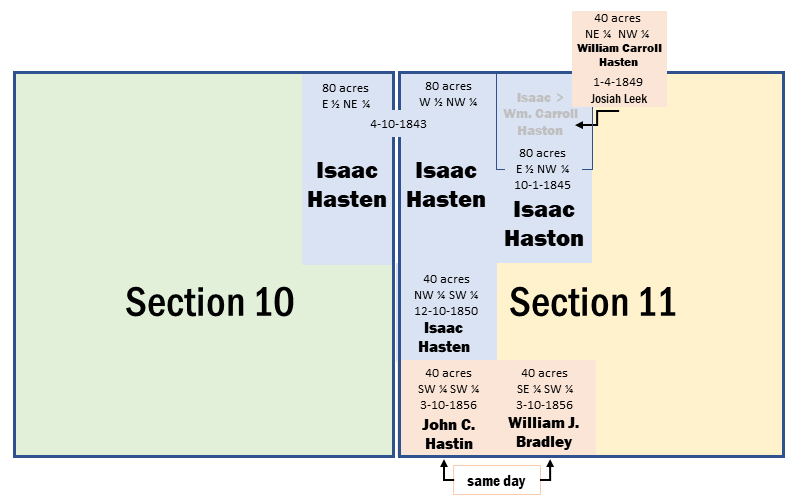
At least four of Daniel Haston’s sons and daughters moved to Missouri, as well as a good many of his grandchildren.
Early Middle Tennesseans, especially the second generation from pioneer families, sensed little or no emotional attachment to their state, their town, or their local community. Procurement of good land was much more important to them than attachment to where they grew up, or even close proximity to their nuclear or extended families. By the time the second generation came of legal age, good land in Middle Tennessee was either already claimed and settled or too expensive for start-up families. A pioneer spirit was bred into them, so naturally they loaded their wagons and carts and headed west of the Mississippi River.[i]
[i] John R. Finger, Tennessee Frontiers: Three Regions in Transition. (Bloomington, IN: The University of Indiana Press, 2001), 317-318.
The 518 mile Journey from White Co, TN to Greene Co, MO
With Actual Common Stops Along the Journey
Mouse Over Map Image to Pause Animation
Probably Fall 1836 – Isaac Hasten was one of the first settlers in Cass Township of Greene County, Missouri. The earliest settlers came “at various periods from 1830 to 1837.” In the “First Settlements” section of Chapter XXVIII of The History of Greene County, Missouri, the authors stated, “Isaac Hastings…an emigrant from East Tennessee, settled about a mile east of Cave spring about 1835.”[i] Cave Spring was one of the oldest villages of Greene County.
[i] Holcombe, 710-711; An Illustrated Historical Atlas of Greene County, Missouri, 17.
Note: In early 1836, Isaac had a debt of $40.92 to settle with a local merchant (John Kirklen) in White County, TN. On May 14, 1836, he signed (with “his mark”) an agreement in White County to pay the debt by raising a crop of corn for John Kirkland. If he paid the debt before December 25, 1836, penalties would be voided. Isaac’s debt settlement with John Kirklen in White County, Tennessee, suggests that Isaac probably did not leave Tennessee until the fall of 1836. He probably arrived in Greene County, Missouri before the winter of that year, contrary to some reports that he got there in 1835.
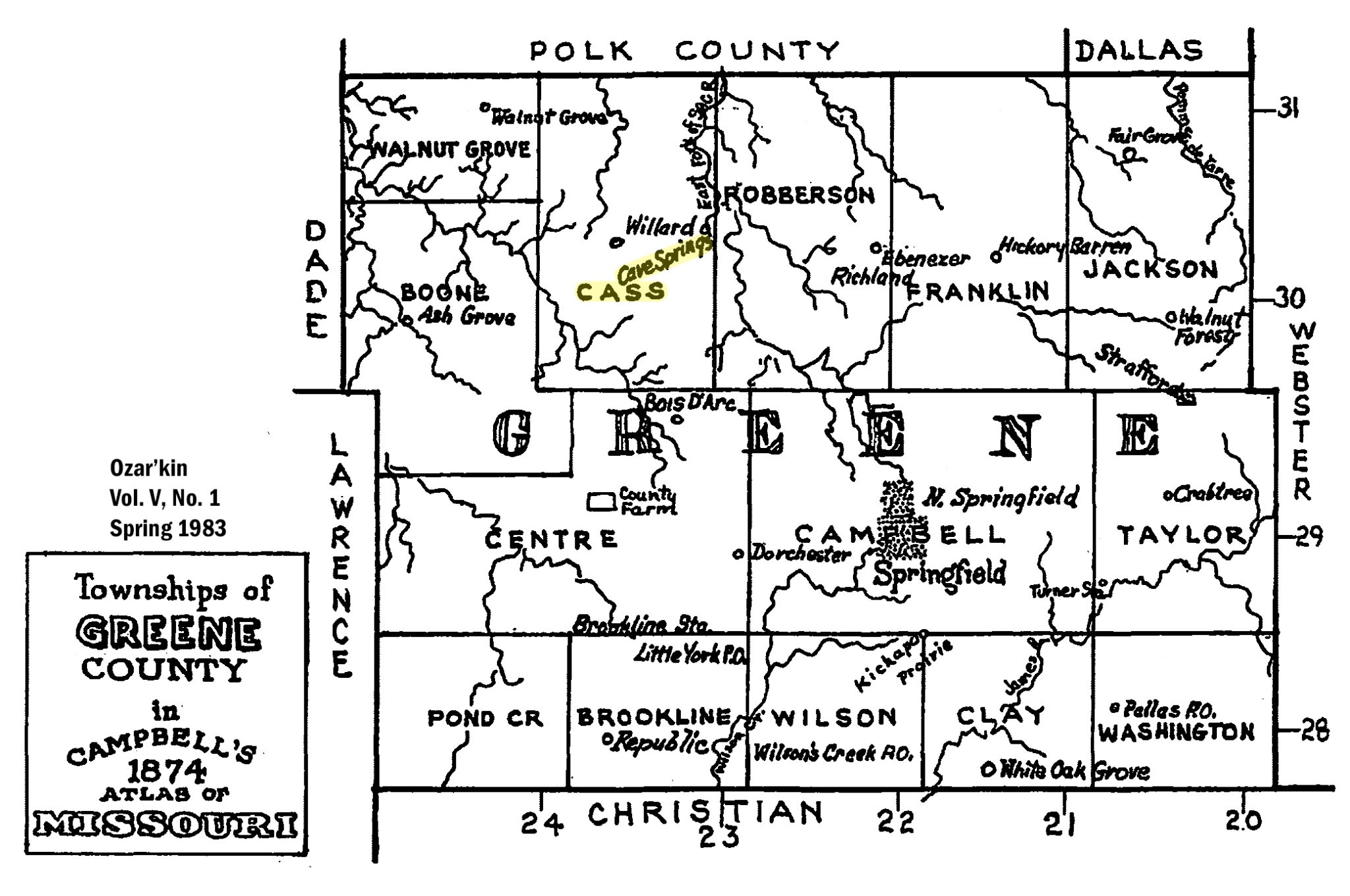
When the first settlements were made in this township the pioneers often shot deer from their own door-yards. Wolves were very plenty and gave the settlers no little trouble by carrying of their sheep and pigs. The usual privations of early settlers and pioneers were borne by those of Cass township.[i]
[i] Holcombe, 712
Early Church Life in the Area Where Isaac & Agnes Settled
Presbyterian: In the summer of 1831 a shed was erected at Cave Springs, and was called Cave Springs camp ground. It was used by all denominations for camp meetings. This shed being too small, it was extended by a brush arbor. The first camp meetings were held the last days of July and the first days of August, in the year 1831. These camp meetings were held annually, and attended by people from a great distance, who came in wagons, carts, on horseback, and on foot. On the 19th of October, 1839, a number of families from East Tennessee founded the Mount Zion Presbyterian Church at Cave Springs.

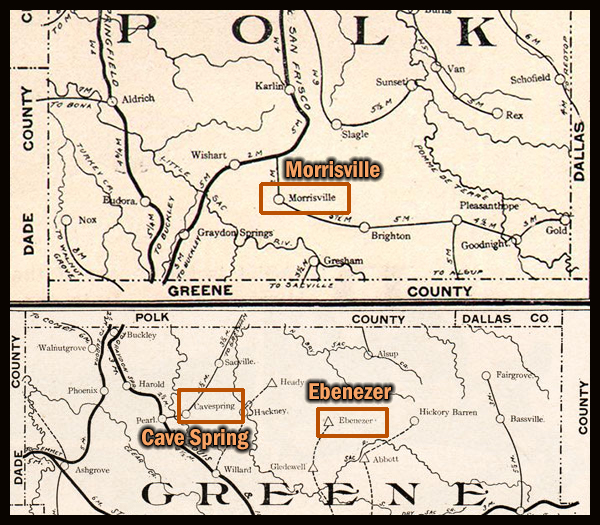
Methodist: Whether it was intentional or not, Isaac and Agnes settled in the most-Methodist area of southwestern Missouri. There is evidence that Isaac and Agnes were Methodists back in Tennessee. The Morris Mitchell family (in-law family of Lucinda Haston Mitchell, Jacob’s family) arrived in Polk County, Missouri in about 1834 or 1836, only a few months before Isaac claimed land near Cave Spring, 11 or so miles southwest of the Mitchells. The Mitchells established a campground for revival meetings. Morrisville was named for a namesake grandson of Morris Mitchell, Sr. Ten years prior to the establishment of the Mitchell Camp Ground, camp meetings were held in Cave Spring, and the Morris Mitchell clan participated in those meetings soon after they settled in Missouri. No doubt they would have had a lot of interactions with Isaac Haston and his family who lived very near Cave Spring.
The village of Ebenezer, a few miles east of the Haston home at Cave Spring, was one of the strongest centers of frontier Missouri Methodism in that early era. There was a Methodist campground there, a meeting house in 1832 for the Ebenezer Methodist Church, and later a Methodist college. Ebenezer is where Lucinda Haston’s husband, Jacob Mitchell, spent the last years of his life.
Death of the Oldest Son, William Carroll Haston
About 1837 – Isaac’s oldest son, William Carroll Hasten married Nancy Leake not long after the Hastons arrived in Greene County, Missouri. I have no date for his marriage, but let’s assume it was around 1837, when he became 21 years old. William Carroll Hasten married Nancy Leake, who was born in 1815, according to Howard H. Hasting, Sr.[i] William Carroll and Nancy lived in a one-mile-square section (Section 10) of Greene County, Missouri, adjacent to the section (Section 11) his parents, Isaac and Agnes, lived in.[ii]
[i] Howard H. Hasting, Sr., “The Daniel Haston Family” (San Antonio: unpublished manuscript, last modified 1980), 10.
[ii] Howard H. Hasting, Sr., 10.
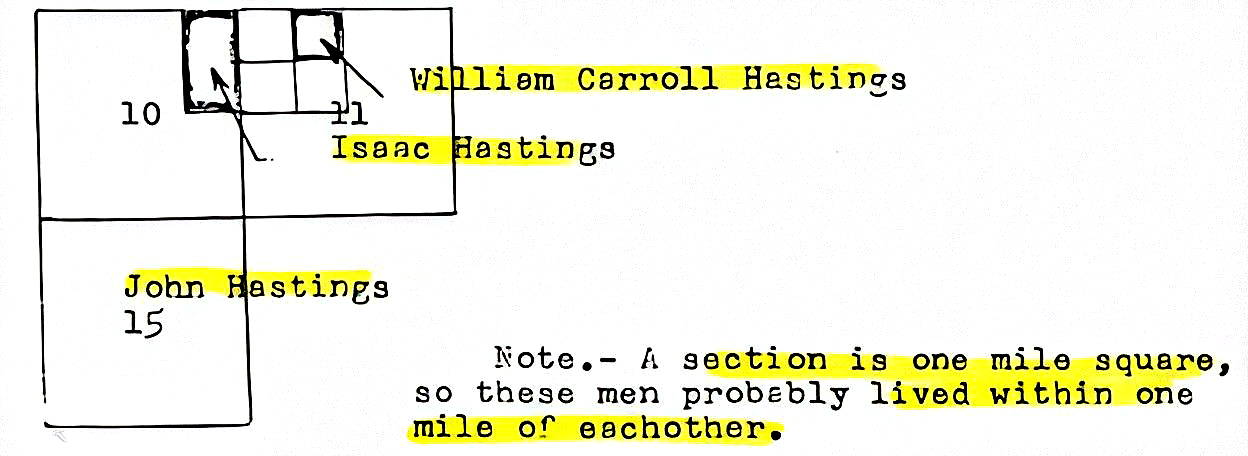
William Carroll died as a young man, approximately 29 years old, in or before August 1845, in Greene County, Missouri. He was buried in the Hastings burial ground. When William Carroll Hasten died, his father Isaac was the administrator of his estate and John Wesley Wadlow (father of Isaac’s son-in-law, Charles E. Wadlow), was one of the securities. Nancy Leake Hasten married William J. Bradley on June 10, 1847, almost two years after the death of William Carroll.
Name Change from Haston to "Hastings"
The spelling of the “Hiestandt” family name morphed down the Daniel Haston family line, but generally ended with “Haston” in Tennessee, especially as Daniel’s family became firmly entrenched in White and Van Buren County. But as Daniel’s grandkids moved west, their names morphed back from “Haston” to a variety of spellings, generally more familiar to English clerks. With the lone exception of Isaac, all of Daniel’s known sons locked in the Haston name, including two of them who moved to Missouri (Jesse and Jeremiah MC).
Isaac apparently was not literate (see his attempt to write his signature, below) and was often dependent on English clerks to spell his name. And a neighboring family in Greene County, Missouri (the John Holloway Hastings family) was from an English-rooted “Hastings” family. Combined, these circumstances may explain why clerks and some members of Isaac’s family spelled Isaac’s surname “Hastings,” even though “Hasten” or “Hastin” spellings were also common for him and his family in Missouri.


1849 – On January 24, 1848, a carpenter by the name of James Marshall was building a sawmill for John Sutter on a river in the Sacramento Valley in Northern California, when he spotted a shiny piece of gold in the river. The word spread quickly, so much so that six months later 4,000 prospectors were looking for gold on the mountain behind Sutter’s land. The following year, 6,000 wagons traveled to California from the Midwest of the United States. By 1853, the easy-to-find gold in the streams and in surface soil had pretty much been found and the rush was over.[i]
[i] Mel Friedman, The California Gold Rush. (New York, NY: Children’s Press, 2010), 7-8, 24, 39, 43.
When prospectors returned home to places like Missouri, a few were wealthy but most came home pretty much the same way they left—poor. But they returned with positive reports about rich farmable lands in the northern California valleys. The California Gold Rush would soon change the destiny of most of the members in Isaac Hastings’ family.
1850 – These people are included in the Isaac Hastings household at the time of the 1850 census (record # 1667): Isaac Hastings (age 53, born in TN), farmer; Agnes (age 52, TN); Samuel D. (age 21, TN); De La Fa [Fletcher Dilay/DeLay Fletcher] (age 18, TN); Asbury (age 17, TN); Jesse (age 15, MO); Robt. D. (age 13, MO); Hartwell G. (age 9, MO).[i]
[i] Year: 1850; Census Place: Cass, Greene, Missouri; Roll: 400; Page: 354A.

1852 – The 1919 obituary for Fletcher Dilay Hasting says that he went to California in 1852 as a part of the gold rush “with a party of early gold-hunters.”
That assertion is confirmed by an 1852 California census, which clearly states that Fletcher Hastings was in Napa County, California in September of 1852. Other members of the family apparently followed him a couple of years later.
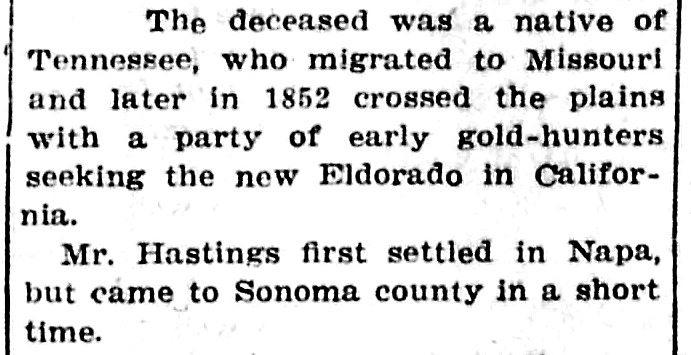
1854 – According to a family story, passed down through Isaac Hasten’s family, Isaac’s son Jesse Axley Haston traveled to northern California with his sister Isabella (Hastings) Grisby and her husband, Benjamin James Grigsby, in 1854. Jesse then returned to Missouri and persuaded his father to move to California.[i] Jesse may have returned to Missouri primarily to marry his “back home” girlfriend, Susan Smith Baker, which did occur on December 11, 1856. Another version of the story, given by Jessie Pritchard, says her grandfather Jesse Axley Hastings made his first trip to California in 1851, which would have been in the middle of the Gold Rush years.
[i] Roberta Leatherwood, “Jesse Axley Hastings – Bits ‘n Pieces,” Ancestry.com post, March 12, 2009.
1857 – “In 1857 Isaac Hastings crossed the plains to California and settled in Bennett valley, Sonoma County, where he acquired one hundred and sixty acres of land, on which he resided until his death….”[i]
[i] Honoria Tuomey, History of Sonoma County, California, Volume II. (San Francisco, CA: The S.J. Clarke Publishing Company, 1986), 831.
In the next article, you will learn about Isaac and Agnes Haston’s journey to California and a summary of the family’s years there.
The Two Sons Who Remained in Missouri (and Texas)
John Wesley Hastin
August 5, 1841 – John Wesley Hasten, who was born January 27, 1823 (probably in White County, Tennessee) married Anna Brown on August 5, 1841 in Greene County, Missouri. He acquired land in Dade County and Cedar County, Missouri.
John Wesley Haston, the oldest living son of Isaac and Agnes, was apparently a Confederate sympathizer. As early as 1865, J.W. Haisten was on the Fannin County, Texas tax list with 105 acres.[i] Lots of pro-Confederate Missourians fled to Texas during or after the war to escape Federal guerillas and there are several reasons to believe J.W. Hastin was one who fled.
[i] “Fannin, Texas, United States Records,” images, FamilySearch (https://www.familysearch.org/ark:/61903/3:1:939F-W6Y2-Z : September 16, 2021), image 1115 of 1238; Texas State Library. Archives Division (Austin, Texas).
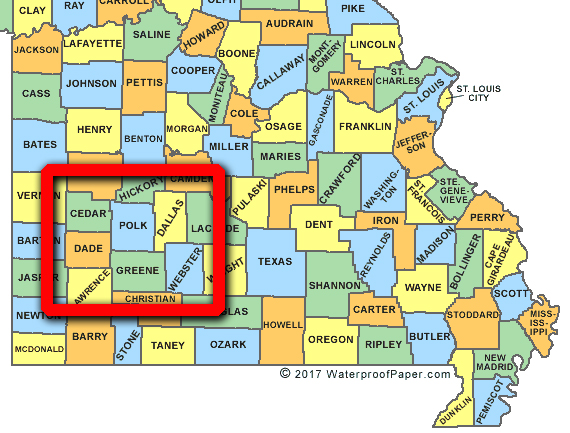
Samuel Douthard Hastin
May 20, 1851 – Samuel Douthard Hastin, at age 25, married Sarah Ann Long on May 20, 1851.[i] The ceremony was performed by a Justice of the Peace in Cedar County, Missouri, where Samuel Douthard lived the remainder of his life, about 50 miles northwest of Springfield, Omer, Missouri in Cedar County. Uncle Dow, as he was known, was a stone mason.
[i] Missouri State Archives; Jefferson City, MO, USA; Missouri Marriage Records [Microfilm].
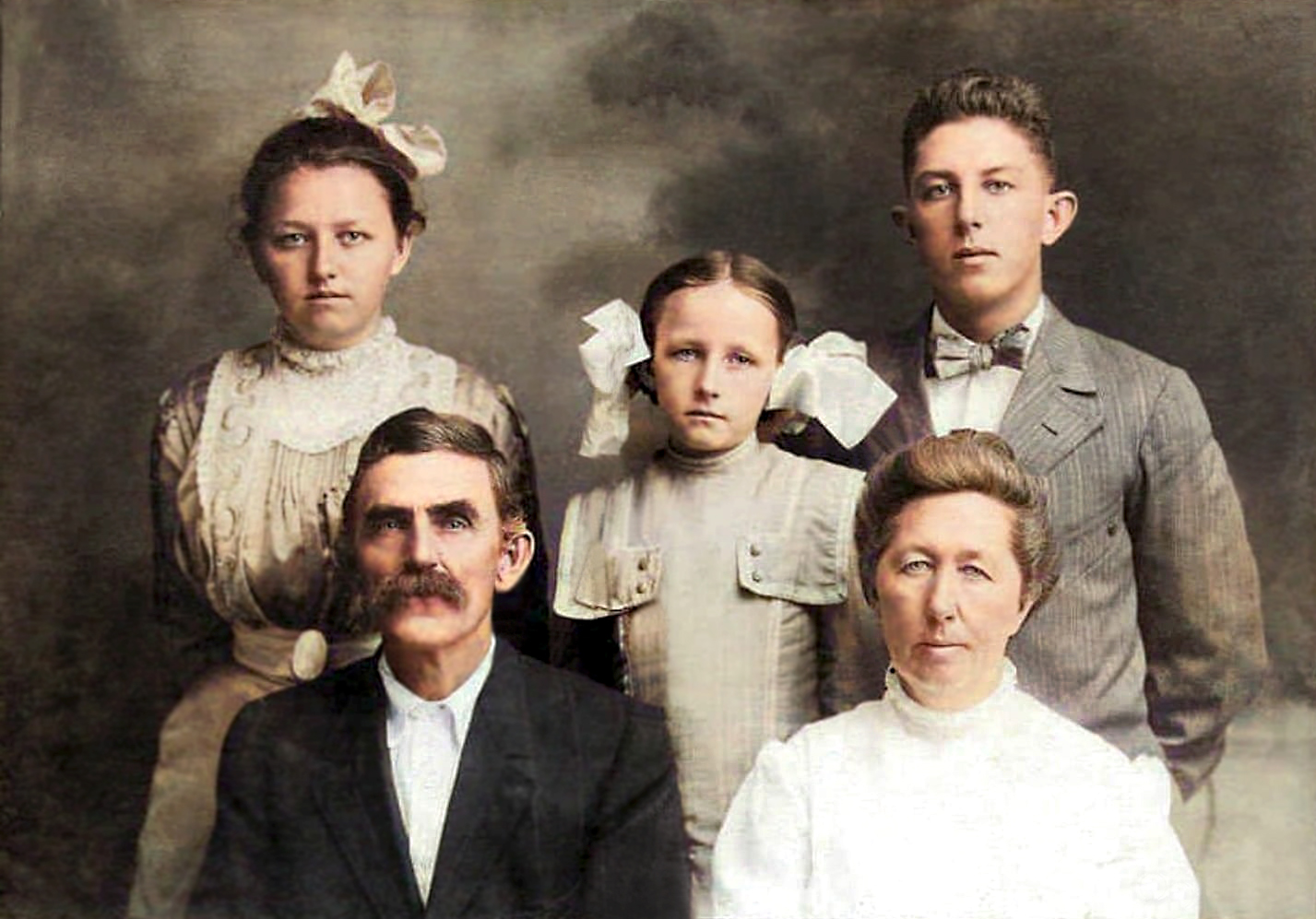
If you appreciated this article, please share it with others who might also enjoy it.

44 – Isaac and Agnes Simpson Haston – Tennessee Years
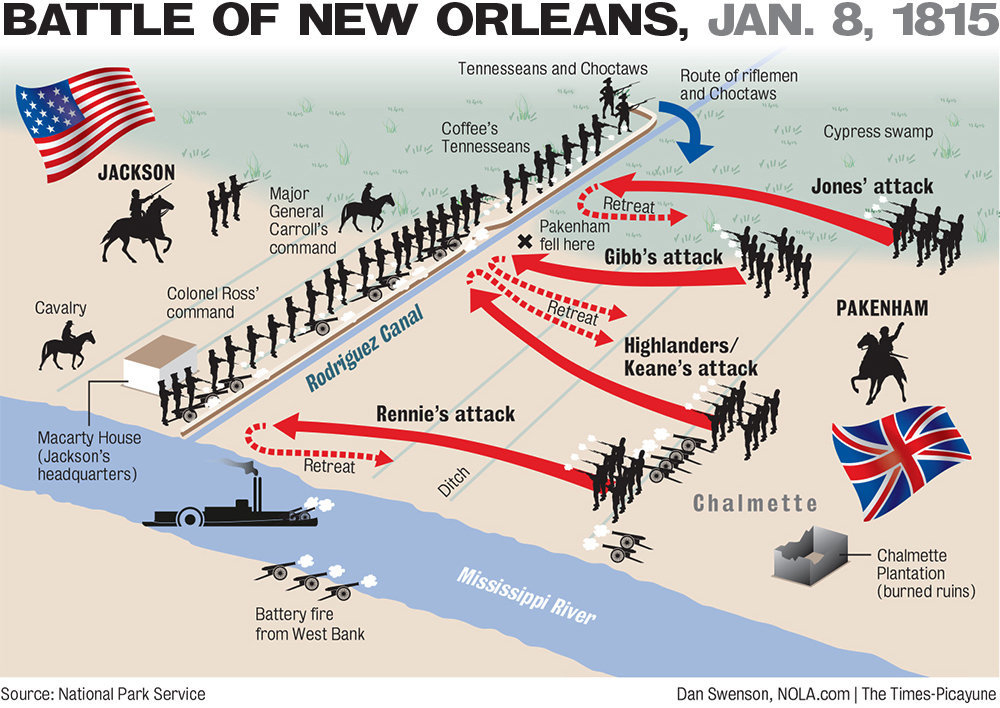
44 - Isaac Haston - Battle of New Orleans Hero & Much More
Part 1 - His Tennessee Years

Look at the battle map above. Where do you think the battle was the “hottest”? It’s quite obvious if you look at it carefully and think about it. That’s where Isaac Haston and some of his buddies from White County, TN fought bravely and effectively! But more about that later in this article.
Isaac Haston was definitely Daniel’s most adventuresome son. And that’s saying a lot because all six of Daniel’s (known) sons were adventuresome in their own ways. Think about it: Isaac was born in East TN, moved to Middle TN with his father and other family members, then back to East TN after he married, then he led his family to Missouri, then (about 20 years later) crossed the central plains and high and treacherous western mountains in an oxen-drawn wagon with most of his family to a Pacific coastal county in California. His life is such a “big story” it will take three articles to do any significant degree of justice to tell it.
October 17, 1794 – Jessie Prichard, great-granddaughter of Daniel Haston’s son Isaac, stated that Isaac was born on October 17, 1794. That is at least about right and may be right, but census records and other sources contradict with a variety of birth year possibilities.
About May, 1814 – Isaac Haston married Agnes Simpson, probably in the spring of 1814. We don’t know who her parents were, where they married, or exactly when they married. Unfortunately, there is no known existing family Bible record for their family, but a brief biographical record of S.P. Hastings, grandson of Isaac states:
Our subject’s paternal grandfather, Isaac Hastings, was born in Tennessee in 1795 and fought in the War of 1812, enlisting about six months after his marriage, at which time he was eighteen years old and his wife but fourteen. They became the parents of fourteen children. The grandmother, whose maiden name was Agnes Simpson, was born in Tennessee in 1799.
Isaac Haston in the War of 1812 Battle of New Orleans
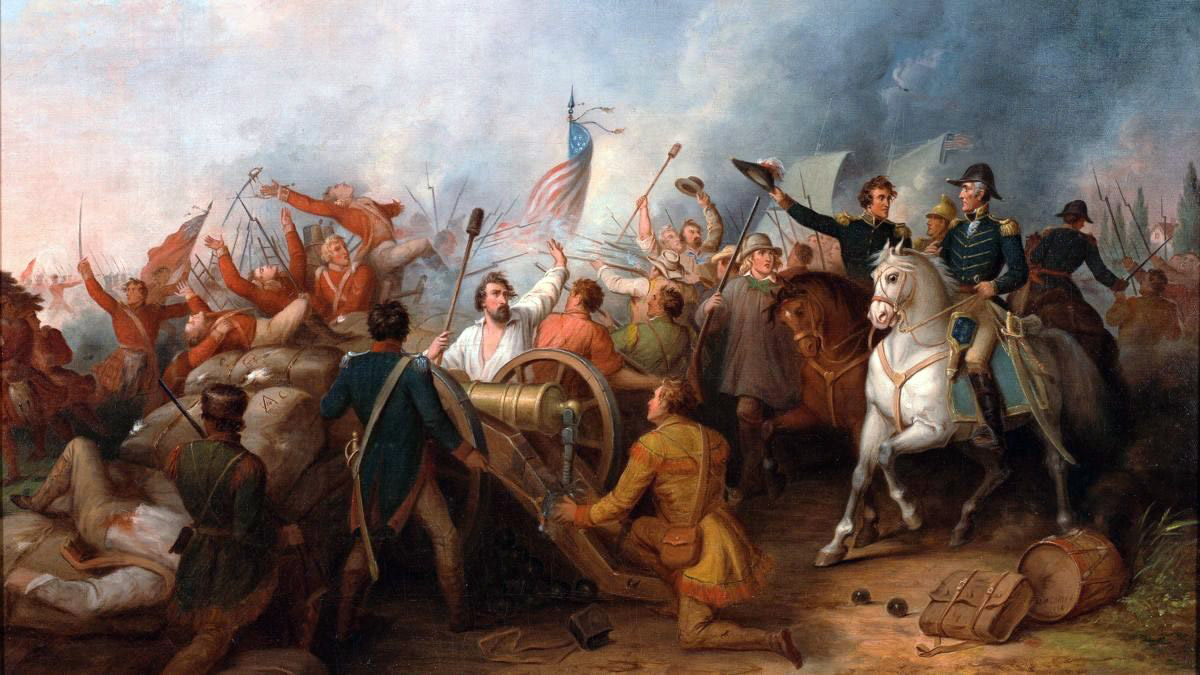
November 13, 1814 – According to the History of Sonoma County, California, Isaac “fought in the War of 1812.”[i] That fact is clearly verified by documents from the United States National Archives and Records Administration,[ii] but it doesn’t begin to tell the fuller story. Family records and official accounts of the Battle of New Orleans inform us that Isaac and his fellow soldiers fought bravely and his brigade was a major reason Old Hickory’s army won that historic battle.
[i] Honoria Tuomey, History of Sonoma County, California, Volume II. (San Francisco, CA: The S.J. Clarke Publishing Company, 1986), 831.
[ii] “Haiston, Isaac, 3rd Regiment Roulston’s West Tennessee Militia, War of 1812” (Washington, D.C.: U.S. National Archives and Records Administration).

In August 1814, when it became apparent that the British were planning to attack and capture New Orleans, Secretary of State James Monroe informed Andrew Jackson: “On the militia of Tennessee your principal reliance must be.” A call went out to Tennesseans to join the cause to protect the city that controlled the gateway between the Mississippi River and the Gulf of Mexico. Isaac and many other of his White County buddies became Tennessee “volunteers,” a moniker that the state of Tennessee has proudly carried ever since that time.
Isaac served in the 3rd Regiment West Tennessee Militia Infantry under Colonel James Raulston in General William Carroll’s division. This regiment existed from November 1814 to May 1815 and included men mostly from Jackson, Sumner, Wilson, Overton, Smith, and White counties—all Middle Tennessee counties. Raulston himself was from the southern end of the Sequatchie Valley on the border between Tennessee and Alabama. Daniel Newman, a citizen of White County, Tennessee, was the captain under whom Isaac served.
“On November 20 [1814] two thousand West [Middle] Tennesseans under the command of William Carroll embarked for New Orleans via the Tennessee, Ohio, and Mississippi Rivers.” They left Nashville on 45 flatboats and arrived at their destination on December 21, a month later.
Of the 6,000 American fighters at New Orleans, 3,500 were Tennessee militiamen. For two and a half weeks, the British and Americans maneuvered and skirmished, culminating in the Battle of New Orleans on January 8, 1815. “Jackson had placed Carroll’s Tennesseans and a small number of Kentuckians at the point in the line where the British attack was heaviest.” They were positioned between Battery #6 and the cypress swamp. See the battlefield map above.
Raulston’s regiment, a part of General William Carroll’s division of 1,414 militiamen, suffered casualties during the December 28, 1814 skirmish and had two of the “handful” of (eight) fatalities in the famous January 8, 1815 battle that thrust Andrew Jackson into national prominence. According to one source, “Colonel Raulston and his Regiment bore the brunt of the British advance in the Battle of New Orleans and out of his Regiment over one hundred men were casualties.”
According to family history recorded by Isaac’s great-granddaughter (Jessie Pritchard), Isaac saw British General Pakenham killed, used chain guns in the war, and fought some after peace was declared.
In his 1871 pension application for his War of 1812 service, Isaac stated that he “fought by General Jackson.” Given the location of his unit in the battle line, it is likely that he did in fact fight near General Jackson.[i]
[i] “Isaac Hastain,” War of 1812 Pension Files, Pension Number 23677 (Fold3 by Ancestry).
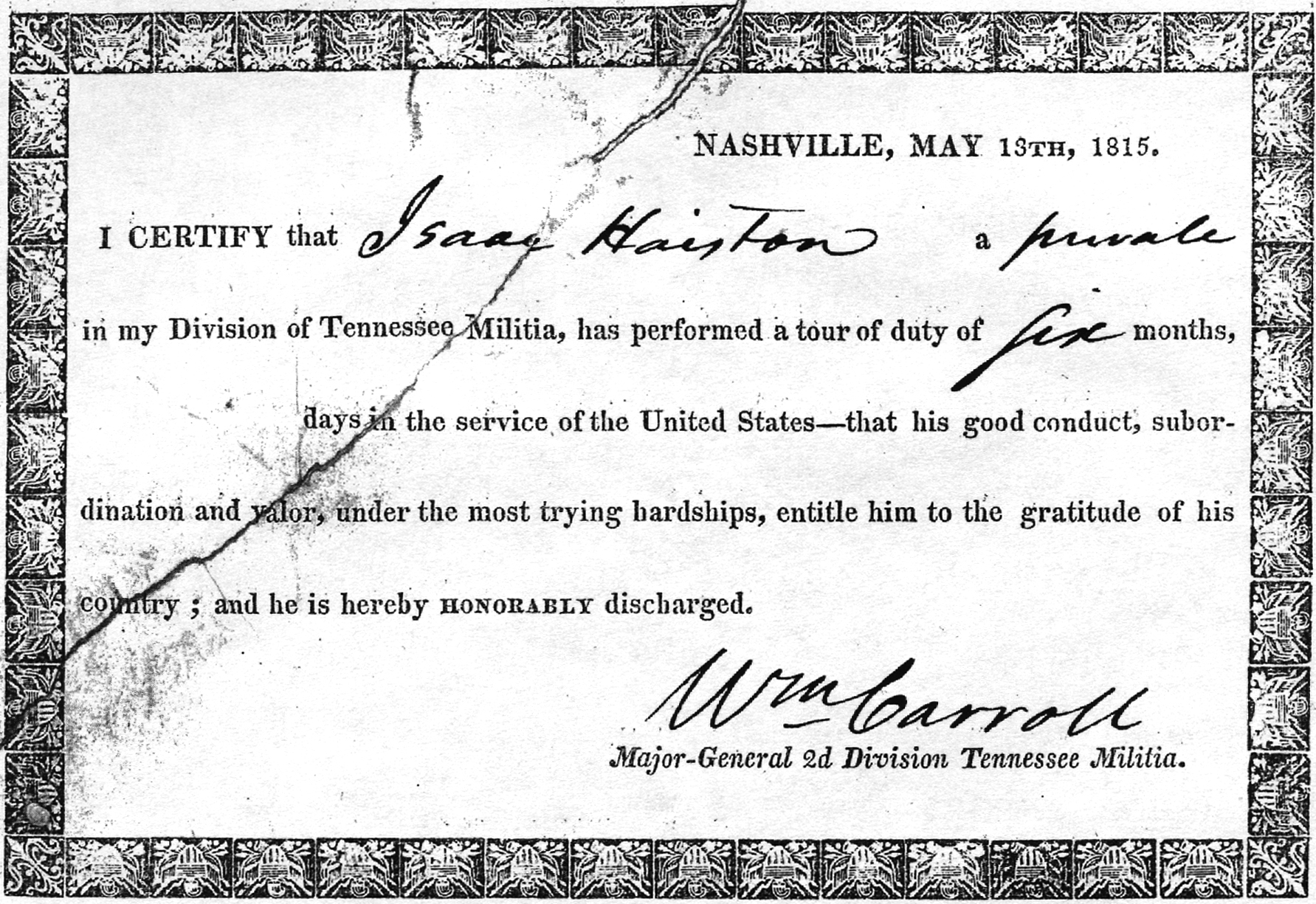
Every descendant of Isaac Haston owes it to himself or herself to read a detailed account of the Battle of New Orleans, with the above battle map in mind. It will make you proud to call Isaac Haston your ancestor.
Isaac's Inheritance from His Father, Daniel Haston

David, Joseph, and Isaac, three of Daniel Haston’s sons, were living in White County at the time of Daniel’s death. It seems reasonable to assume that Daniel would have granted 50 acres of his 150 acres tract to each of these local sons. As far as we know, he died intestate. There is no known record of Daniel’s legal transfer of his land to these sons. But subsequent land records seem to support the assumption that Daniel did divide the 150 acres among the three sons, as illustrated in this image.
Move to Hiwassee District in East Tennessee
1824 – Isaac’s name does not appear on the 1824 White County, TN tax list. Apparently, he had moved to the newly-opened Hiwassee District in East TN, with Monroe County being his first living location.
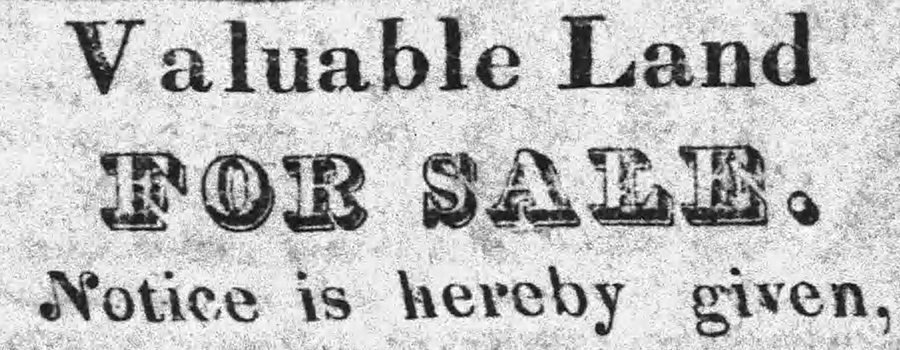
Beginning January 3, 1824 and continuing through that year, an advertisement titled “Valuable Land For Sale. Notice is hereby given ….” ran in the Sparta Review newspaper in Sparta, Tennessee. This “valuable land” was in the Hiwassee District of East Tennessee. The land had been acquired in the “Hiwassee Purchase” from the Cherokee Indians in 1819.

1830 – Apparently, sometime in 1829 Isaac moved his family from Monroe County to McMinn County. Both side-by-side counties, McMinn on the west and Monroe on the east, were part of the Hiwassee District. If Isaac’s family lived in the western part of Monroe County, they may not have moved far to be in McMinn County in and after 1830.
The household of “Isac [sic] Hastings” appeared on the 1830 McMinn County, Tennessee Federal Census.[i] He was “of thirty and under forty” years of age and his wife was “of twenty and under thirty.”
[i] 1830; Census Place: McMinn, Tennessee; Series: M19; Roll: 178; Page: 183; Family History Library Film: 0024536
Settling a Debt in White County, Tennessee
May 14, 1836 – Apparently, Isaac Haston owed John Kirkland (“all of the County of White and State of Tennessee”) a sum of $40.92, while still in White County, Tennessee. In order to secure the debt, Isaac “bargained and sold” one gray horse, one sow, and four pigs, as well as a field of corn that he was tending, or would be tending, on land rented from William Denney.” According to the agreement, if he paid the debt before December 25, 1836, the stated obligations would be voided. The indenture was witnessed by William B. Cummings and Edward Moore on May 14, 1836. Isaac signed with “his mark.”[i] This transaction indicates that Isaac was probably still in White County in the summer of 1836. It also indicates that he was struggling financially, which may have contributed to his move to Missouri.
[i] White County, Tennessee Deed Book “I,” 445, 448. (TSLA microfilm # 63)
Isaac was to “tend said ground in good farming order and when completed the said Kirklin is to have all of said corn except the rent it is the ground that said Isaac Haston rented from Wm Denny, Sr.” Or Isaac could pay Kirklin the $40.92 he owed. So Isaac was obligated to remain in White County, Tennessee until the corn crop was harvested, if he could not pay the debt with cash. If he did not default on the debt or did not make the payment in cash, he must have remained in Tennessee until late summer or early fall of 1836 before leaving for Missouri.
Children of Isaac and Agnes Simpson Haston
The exact number of children born to Isaac and Agnes is not known for sure. One of Isaac’s grandsons said there were 14, and another sources suggests they may have had as many as 16 children, but the following 12 seem to be fairly certain. Perhaps these are the 12 who survived infancy. For information on these children, I am totally dependent on largely undocumented family records. Although I have tried to be careful about the selection of this information, I cannot vouch for the accuracy of much of it.
1. William Carroll Hastin | 7. Fletcher Dilay Hastings (De La Fa) |
2. Mary Hastin | 8. Sidney Hastin |
3. John Wesley Haisten | 9. Ashbury Roten Hastin |
4. Samuel Douthard Hastin | 10. Jesse Axley Hasting* |
5. Isabella Ann (Juley Ann) Hastin | 11. Robert D. Hastin* |
6. Emily J. Hastin | 12. Hartwell Greene Hasting* |
*Jesse Axley, Robert D., and Hartwell Greene were the only three children born in Missouri, not in Tennessee.
On death records (tombstones, death certificates, or obituaries), the surnames of Isaac’s children were spelled at least four different ways: Haisten, Hastin, Hasting, Hastings. In Missouri, the name was often spelled Hasten, the fifth common spelling of the name in Isaac’s family.
You Really Ought to Watch this Video to Understand Isaac Haston’s Heroic Role in Our Country’s Early History
If you appreciated this article, please share it with others who might also enjoy it.

29 – Swiss Mennonite Cheese Factory

29 - Swiss Emmentaler Cheese Factory
Saturday, June 24, 2023, our Hiestand-Haston Tour Group will visit the world-famous Cheese Factory in the Emmental region of Canton Bern, Switzerland. There are around 2000 groups of tourists, one-third of which are foreigners from around the world, visiting this cheese factory every year.

Swiss cheese is a piece of paradise handed down by the gods, a masterpiece, an object of envy and an ambassador of peace. And now, it’s time to have another piece of cheese. Adieu!
-Indira
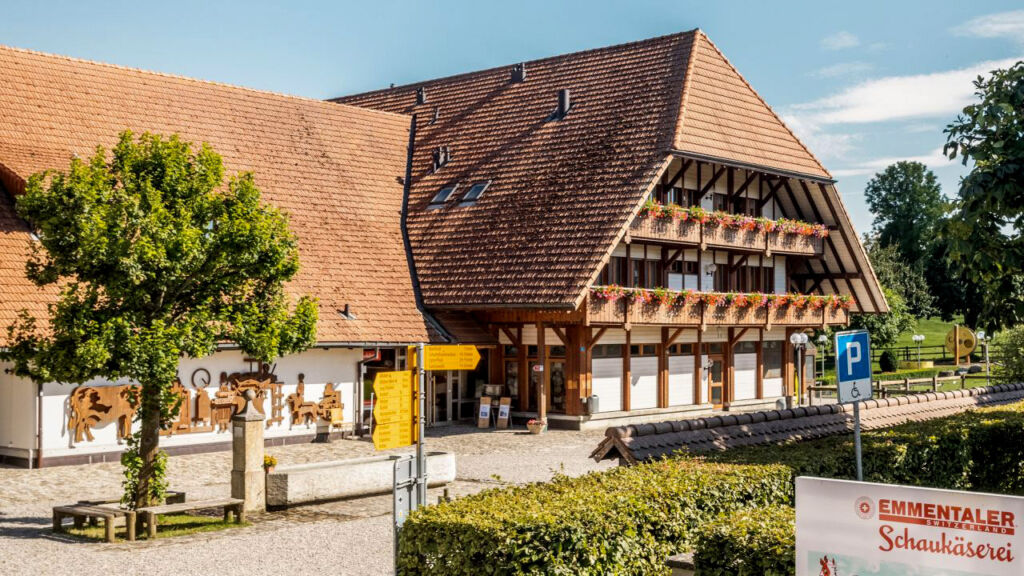
Inside the Emmental cheese factory (it’s where the magic happens!)

Emmental Cheese Facts
- Emmental cheeses have been crafted according to an original recipe that dates back to the 13th century.
- Emmental cheese is produced in large, wheel-shaped barrels. Each barrel is marked with a unique code which helps the manufacturer trace the origin of the milk back to the supplier.
- Each wheel measures between 80 to 100 centimeters and weighs anywhere from 75 to a 125 kilograms.
- The bacteria present in the cheese produce carbon dioxide which is responsible for the varying sizes of holes in the cheese. So, basically, you pay for cheese and for carbon dioxide…

- The holes in the Swiss cheese are called the eyes. A variety that does not have eyes is called a blind cheese.
- During the first ageing phase, the cheese is matured for six to eight weeks in the boiler room of the cheese factory.
- Afterwards, it is moved to the storage cellars for two or four weeks. In the final phase of the maturation, the cheese wheels are stored in cellars of affineurs who regularly turn, groom and check to see if the cheeses are “healthy and happy.”

- The youngest cheese is matured for at least four months and is aged in cellars with controlled temperature.
- The longer a cheese is stored, the darker its bark becomes.
- There have been strict animal welfare laws laid out by the Swiss government dating back to the 1700s. The cows had to have access to fresh green grass and clean drinking water during the day. Also, animal cruelty was not tolerated.
- Today, Swiss animal welfare laws are evidently stricter, assuring Emmental cheese consumers nothing but its highest quality.
How Swiss Emmentaler Cheese Is Made
8:00 minutes – Interesting and Informative Video
Share this with Hastons or related family members who might be interested in the June 14-27, 2023 Hiestand-Haston European Heritage Tour.

28 – Trachselwald Castle – Prison Where Anabaptists Suffered and Died
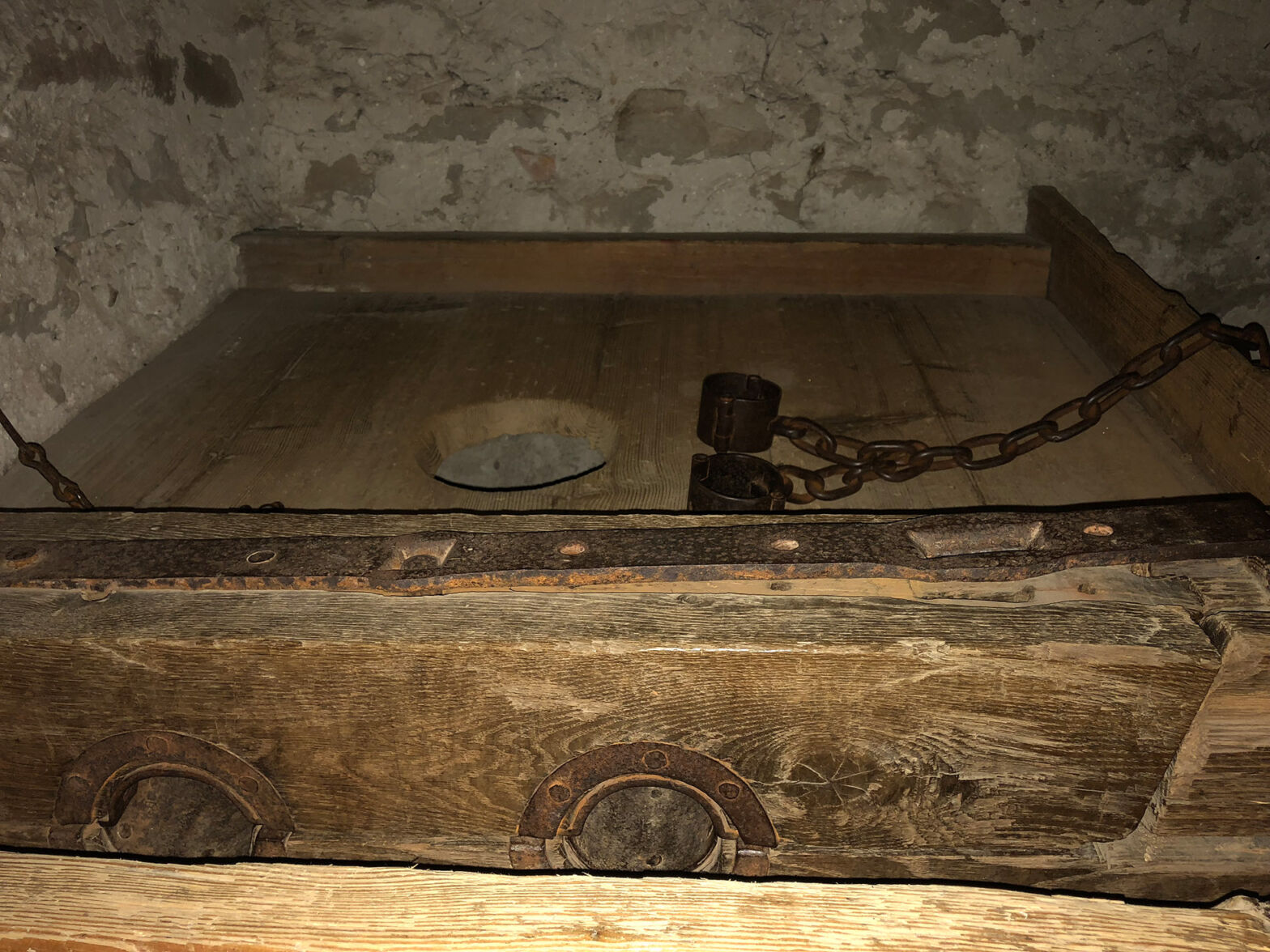
28 - Trachselwald Castle - Where Anabaptists Were Imprisoned
Simply Because They Wanted to Practice New Testament Christianity
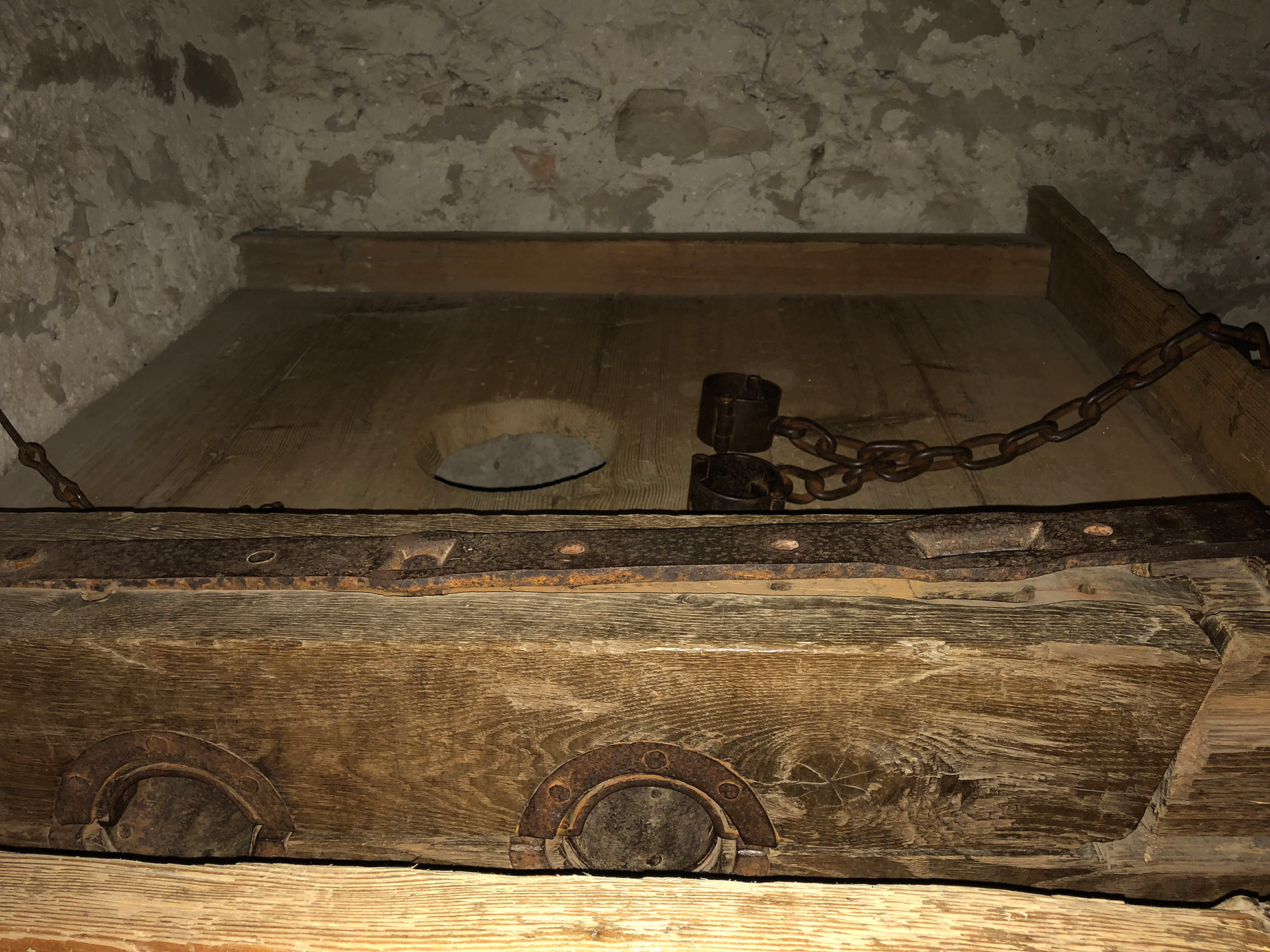
A Story and Some Scenes that You May/Should Never Forget
By Don and Joanne Hess Siegrist
Used by permission of authors, Don & Joanne Hess Siegrist
Before the Reformation, all of Switzerland was catholic. After the Reformation, northern and western
Switzerland became Protestant Reformed while central and southern Switzerland remained Catholic even to this day.
The Anabaptist movement began 1525 in Canton Zurich where it was eventually wiped out by 1650. It was in the Canton of Bern that the Anabaptists had the greatest numbers and the longest stretch of history. The state was never able to drive out all the Anabaptists. Presently, there are about 2,500 Swiss Mennonites with about 14 congregations. The congregation in Langnau is the oldest continuous Mennonite congregation in the world. Most of the Swiss Mennonites live near the French border in the Jura Mt region where in the past they were allowed to live with more religious freedom but in a higher, colder elevation less
desirable for crops.
The Anabaptists were a people who stood for their faith despite paying a terrible price at the hands of the government. Since the Emmental is in the Canton of Bern, many of the Emmental Anabaptists were sent to Bern for imprisonment. Bern has a wall with many towers for security and had the authority to declare the death sentence. The deep, fast-flowing Aare River provided a barrier on the other three sides.
The Kafigturm (men’s prison), Frauenturm (women’s prison), Obere Spital (upper hospital), and the Tittlingerturm, were some of the numerous places used as prisons for Anabaptists. Many of the prisons had a torture room infamous for interrogating people under torture to coerce people to recant or reveal their Anabaptist friends and meeting places. We do not know how many Anabaptists ended up in prison for their faith. The city of Bern was infamous for its persecution of the Anabaptists. The Kafigturm is the only prison building still standing. The Blutturm (blood tower) down around the Aare River is thought to have been used for
interrogation under torture.
When we visited the Museum of History in Bern there was this exhibit — The executioner’s mantle in the official colors of Bern, two swords used for execution, and the rack. Interrogation by the rack was the most widely used instrument of torture till the 18th century. The victim’s arms were placed behind their back and roped together at the wrists. Another rope was placed between the wrists to slowly lift the person off their feet with their arms behind their back. A stone weight was attached to the ankles to increase the pain. Shoulders were often dislocated. Fear of the rack was often enough to cause the prisoner to cooperate. The placard on the wall states these two swords were made in Bern 1620. “The sword of execution bears the inscription “Sol deo Gloria.” (To God alone the glory): the executioner acted in the certainty of representing divine justice on earth.” About 40 Anabaptists were known to be sentenced to death in Bern. The men usually executed with the sword and the women drowned in the Aare River.
Trachselwald castle was first built around the late 1200s with additions at later times. We saw this 1654 drawing of the Trachselwald Reformed Church and the castle in the background when we visited the friendly Reformed pastor and his wife in the parsonage.
According to one source, there was a torture chamber that was removed about 1750. I don’t know how many Anabaptists were imprisoned here. There must have quite a few because the persecution lasted over 300 years. Very few windows are on this side of the prison tower. The castle is quite picturesque and appears in good repair. In the past Switzerland had many castles with prison towers and torture rooms. Torture was thought to be the best way to get the truth from a prisoner.
The cold, dark prison tower is about 60 feet high. To walk through this windowless prison cell is somewhat spooky. If you could have visited 2, 3, 4 hundred years ago when the place was full of prisoners, imagine the sights, sounds, and smells. Imagine being locked in here for months. There are about 2-3 cells per floor, probably not more then 10 cells in the entire prison. A very narrow spiral stone stair takes you up to the worst cell.
The Hans Haslibacher homestead is about 4 miles north of the castle. Hans Haslibacher, a prominent early Anabaptist leader in the Emmental, was exiled from Switzerland. 30 years later he returned home to visit his son who remained Reformed. Unfortunately, he was captured again and put in the Trachselwald prison tower. Then sent to Bern where he was tortured and beheaded in 1571 — the last Anabaptist execution in Bern. There is a song about Haslibacher in the Ausbund (Mennonite book which tells stories of the persecution they suffered) which the Amish still sing.
If These Castle Walls Could Talk!
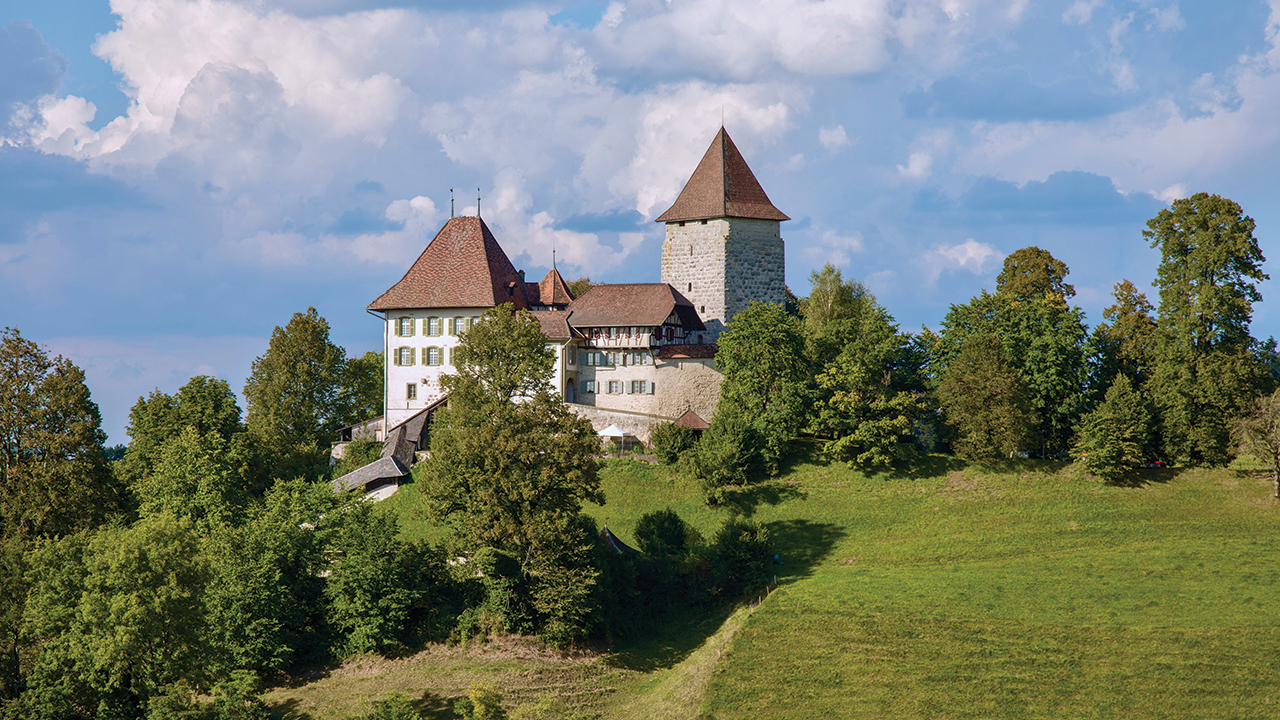
Click on an image to enlarge and activate the slideshow.
We Will Also Visit the New "Paths of Freedom" Exhibit in the Castle
Photos used by permission of Peter Dettwiler.
Some Good News from Recent Years
3:09 Video
Share this with Hastons or related family members who might be interested in the June 14-27, 2023 Hiestand-Haston European Heritage Tour.

43 – John and Catherine HASTON Austin
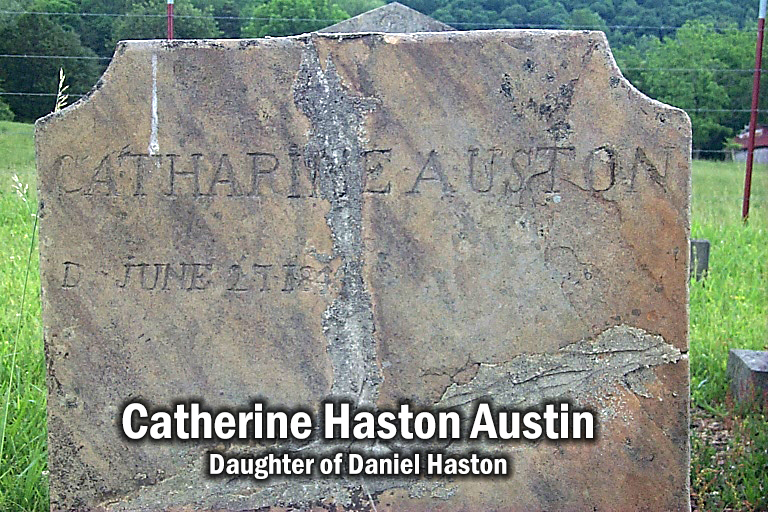
42 - John and Catherine HASTON Austin

History, especially genealogical history, is sexist!
OK, I’m pretty much a traditional-minded person and don’t use the word “sexist” in an accusatory way very often. But I must say – genealogical history is sexist, and unfortunately so.
One tradition I wish had caught on 700 years ago in the western world is the tradition of requiring married women to retain their maiden surnames, in the form of double-name surnames. It’s called “double-barrelled surnames.” And I wish those names would have been “heritable” (transmissible from parents to offspring).
Because of (1) the single-surname-adopted-from-the-husband tradition and (2) the male-dominated (or exclusively male) roles in court proceedings, deeds, and other civil documents, it is very difficult to conduct meaningful research on our female ancestors. For example, in the previous article (“Jacob and Lucinda Haston Mitchell“) you saw that there are several key things that can be known about Jacob Mitchell, but Lucinda Haston is largely hidden to us. The same is true with other daughters of Daniel Haston.
Colonel Howard H. Hastings, Sr., an excellent 20th Century Haston family researcher, summarized the life of this daughter of Daniel Haston like this:

For starters, her name was Catherine, not Caroline. In a September 4, 1978 letter from Dave R. and Estelle Haston to Howard H. Hasting, Sr., Dave and/or Estelle told Mr. Hasting that there was a Caroline Haston who married John Austin. That must have been a simple mis-statement on Dave and Estelle’s part, because they lived in White County where Catherine Haston Austin was buried and probably would have known the correct name.
But, other than the confusion regarding her first (given) name, Colonel Hasting (Haston) was right. Catherine’s husband, John Austin, appeared regularly in tax records and frequently in court records, but about all we know about Catherine is that she was John Austin’s second wife and mother of some of his children.
Brief summary of the John Austin family, including what is known of Catherine:
January 6, 1779 – According to one source, John Austin was born in Virginia of English descent.[i] But the 1850 census indicates that North Carolina was his birthplace. So, who knows!? His parents are also unknown to us.
[i] Goodspeed. Tennessee History & Biographies: White County. (1886; reprinted, Signal Mountain, TN: Mountain Press, 1990), 17.
There has been a strong evidence that our John and Nathaniel (Austin) could have been great grandchildren of John and Hannah Austin of Lunenburg County, VA, through a grandson, William, that I am still trying to find traces of after he disappeared from Wythe County, VA about 1793. This record of Austin children, along with their dates of birth, I feel may have been copied from an old family Bible at the time when no one was left on Old Wilderness Road to furnish the names of their parents. So often in those early days, when one was moving away from others of their family, they recorded the names of all their brothers and sisters in their Bible for future proof of their belonging to the family. So far I have failed to find records on any Austin anywhere in this country that did not have plenty of Anderson families in the same vicinity. As to which road across the Allegheny Mountains is referred to is only a guess since it was not stated where they came from or exactly where they went. If it were their entry into Tennessee as we might surmise, then undoubtedly it was the Old Wilderness Road which was cut across the Alleghenies from Grayson County, VA, and this would give strong indications for a connection with the John and Hannah Austin family of Lunenburg County, VA.
Bess Austin Machtley (1905-1980) - Austin Family Historian
Editorial Note: John and his brother, Nathaniel Austin, probably traveled to the Lost Creek community of White County at different times, from different places, by different routes.
June 21, 1802 – John Austin married Rachel Denny,[i] daughter of James and Ester Denny, on this date in Wayne County, Kentucky. Rachel was born in 1784.[ii] Rachel was the sister of William Denney, who married Patsy Burnett on February 10, 1806, in Wayne County, Kentucky.[iii] William Denney was a neighbor of Daniel Haston and his daughter, Jane, married William Carroll Haston, son of David Haston.
[i] Wayne County, Kentucky First Marriage Book (1801-1813); Kentucky Genealogy Trails, “Wayne County, Kentucky Marriage Records,” accessed May 8, 2020, http://genealogytrails.com/ken/wayne/marriages.html.
[ii] Mabel J. Austin Moore, John Austin, Sr. Family, 1779-1999. (Sparta, TN: published by author, 1999), 9.
[iii] Frances Marie Thomas Graves, William Denney Descendants, 1984. (LC #: CS71.D412 1984)
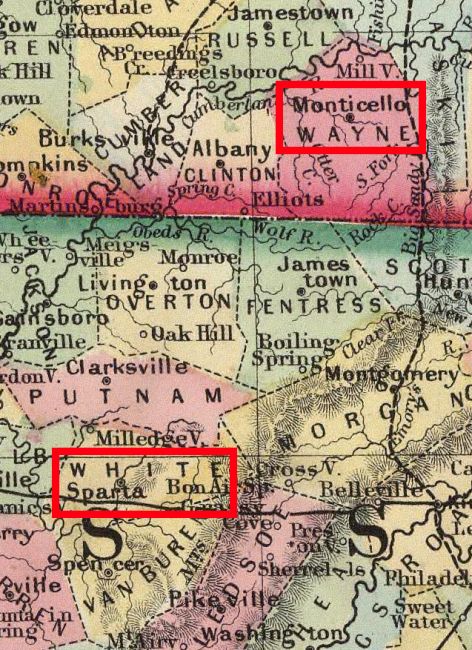
1807 – “John Austin, Sr. and wife Rachel Denny Austin came to Hickory Valley, White County, Tennessee in 1807. His brother Nathaniel came in 1816.”[i] Austin family researchers believe that John and Rachel came to White County, from Wayne County, Kentucky, with Rachel’s brother, William Denney.[ii]
[i] Moore, 3.
[ii] Paul Douglas Austin, ed., 40 Years of the Austin Family Association of Lost Creek. (n.p.: Austin Family Association of Lost Creek, n.d.), 6 (toward the back of the book)
John and Rachel had seven children: William (born May 10, 1803), Jude (born 1805), Tamar “Tamsey”* (born September 7, 1804), Hannah (born between 1806-1810), James M. (born September 22, 1814), Elizabeth (born October 16, 1816), and John Jr. (born November 8, 1818).
*Tamsey Austin married Wiley B. Haston, son of David and Peggy Haston. According to the 1830 census, they had one son of five and under ten years of age and one daughter under five years old. So they probably married prior to 1824.
1811 – John Austin appears on the 1811 White County taxable property and polls list in Captain Richard M. Rotton’s Militia Company with one black poll,* but no mention of land.[i] His brother Nathaniel does not appear on the tax list at this time. Yes, John Austin was a slaveholder, but not on a large scale.
*“All slaves [“black polls”], male and female, between the ages of twelve and fifty were taxed.”[ii]
[i] White County, Tennessee Property and Poll Tax, 1811-1815, 1821-1825. (TSLA Roll #123)
[ii] Tennessee State Library and Archives, “Tennessee Taxation Information and Chart,” accessed May 24, 2020, https://tnsla.ent.sirsi.net/client/en_US/search/asset/22341/0.
1817 – John Austin now owned 154 acres on the “waters of H. Valley.” He was taxed a total of $2.83 ¼ for one white poll and one black poll. For the first time, John’s brother Nathaniel Austin appeared on a White County tax list for one white poll. He owned 175 acres on “Lost Creek.”[i]
[i] White County, Tennessee Property and Poll Tax, 1816-1818, 37.
About 1818 – Rachel Denny Austin, John’s wife, died about 1818. Rachel was probably the first person buried in the Austin Cemetery on the Nathaniel Haston farm.
Birth Place and Date for Catherine Haston
Probably Early 1790s
Austin family records assert that Catherine Haston was born on December 25, 1776 in Virginia. But Haston researchers have, to my knowledge, never discovered a specific date of her birth. I have never seen any documentation that supports the December 25, 1776 date. The birth date ranges for Catherine in the 1830 and 1840 census records indicate that she was born between 1791 and 1800. If so, she was born in Tennessee, probably in Washington County or Knox County. That would be consistent with what her oldest son, Pleasant Austin, reported regarding his mother: “She was a native of Tennessee and her entire life was passed in the State.”
Because she had at least two brothers born in the mid-1790s and decline of child-bearing potential occurs when a woman reaching her 40s, I suggest that Catherine was probably born in the early 1790s. Depending on how early in the 1790s she was born, would determine whether she was born in Washington County, Tennessee, Knox County, or somewhere in between.
How Did John Austin Become Acquainted with Catherine Haston?
Where John Austin lived in the Lost Creek community of upper northeast Hickory Valley, White County, TN, was a journey of ten miles to or from the Haston Big Spring Branch. So John Austin was not a close neighbor to Daniel Haston’s family, but the distance wasn’t insurmountable even by horse or foot. Even though the Big Spring Branch (Cummingsville) area was 10 or so “traveling miles” from Lost Creek, there was quite a bit of movement back and forth between the two communities. Lost Creek was considered to be in “upper” Hickory Valley.
But Daniel Haston’s neighbor, William Denny, may have been the key to connecting the widowed John Austin to the single Catherine Haston. Remember – John’s deceased wife (Rachel) was a sister of William Denny.
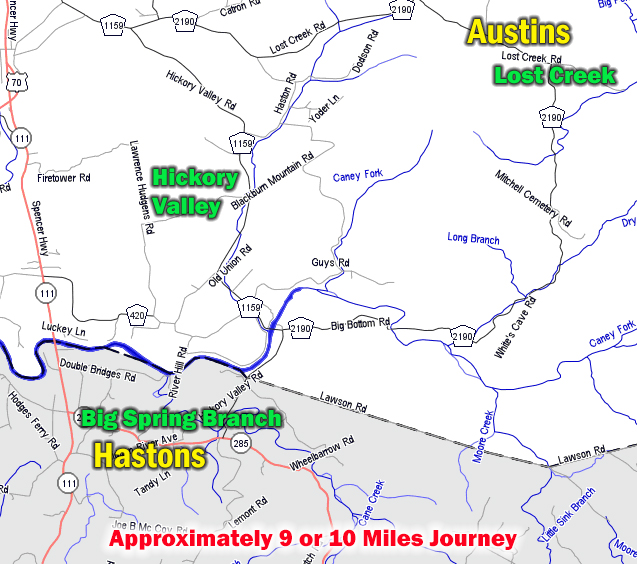
September 8, 1820 – Pleasant Austin, first son of John and Catherine, married Mary E. Warren on September 14, 1852. He died on July 6, 1900 and is buried in the Old Union Cemetery in White County, Tennessee. The 1850 census indicates that he was 27 years old. His tombstone and published biography[i] say he was born on September 8, 1820.
[i] Goodspeed, 17.
Pleasant Austin - Son of Catherine and John
Pleasant Austin, a prosperous agriculturist of the Second District, was born September 8, 1820, on the farm upon which he now resides. His parents were John and Catherine (Haston) Austin. The father was born January 6, 1779, in Virginia, of English descent. He immigrated to Tennessee at a very early day, where he died February 28, 1858. The mother is thought to have been of Dutch [German-speaking] descent. She was a native of Tennessee and her entire life was passed in the State. Our subject was brought up on the farm, and educated in the school of the vicinity. After attaining his majority he purchased land in the county and farmed about six years. At his father’s death he bought the homestead and moved to it, where he has since resided. He is a substantial, honorable, and worthy citizen. He is interested in the advancement of education and all beneficial enterprises. He is a Democrat. September 14, 1852, he was united in marriage to Mary E., daughter of Bluford and Sarah (Yates) Warren. The father was raised in Halifax, NC and the mother in Halifax, VA. The grandfather Yates lived to the unusual age of one hundred and twelve years. Mrs. Austin was born October 15, 1825, in Tennessee, and is the mother of John W., William Bluford, Robert S., Sarah Alice (wife of Norman Gist, who resides near Sparta), Flora C. (wife of Lewis Akins), James Mc. and Frank P.[i]
[i] Goodspeed, 17.
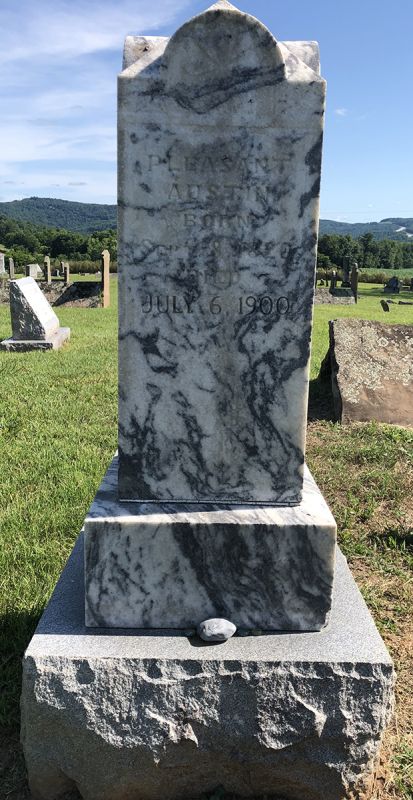
June 27, 1843 – Catherine Haston Austin died at this time and is buried in the Austin Cemetery in the Lost Creek Community. Other than the births of her children and her home context in the John Austin family, nothing more is known about the life of Catherine.
Austin-Anderson Cemetery
February 27, 1858 – At age 79, John Austin, Sr. died in an accident on his farm. He is buried in the Austin Cemetery in the Lost Creek community.
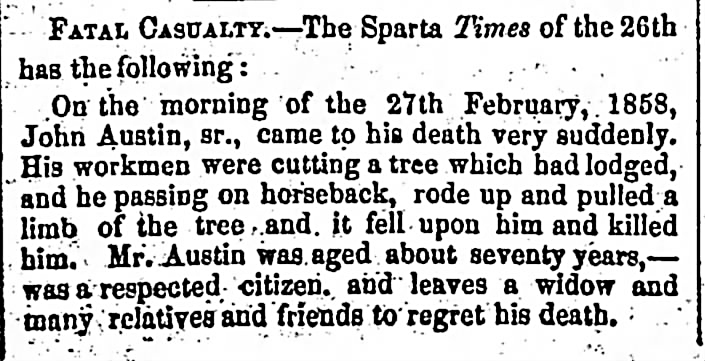
May 31, 1858 – Mary Ann Todd Austin, third wife and widow of John Austin, was granted a dower (widow’s share of her late husband’s estate) of 142 ¼ acres, which amounted to approximately one-third of John Austin’s land. This included “the late residence of the said John Austin, deceased.” Her land crossed “the road that leads to Sparta” and “the Lost Creek Road.”[i]
[i] White County, Tennessee Estate (Probate) Records, Books A-F (1807-1899). (TSLA microfilm Roll #152)
If you appreciated this article, please share it with others who might also enjoy it.

42 – Jacob and Lucinda Haston Mitchell
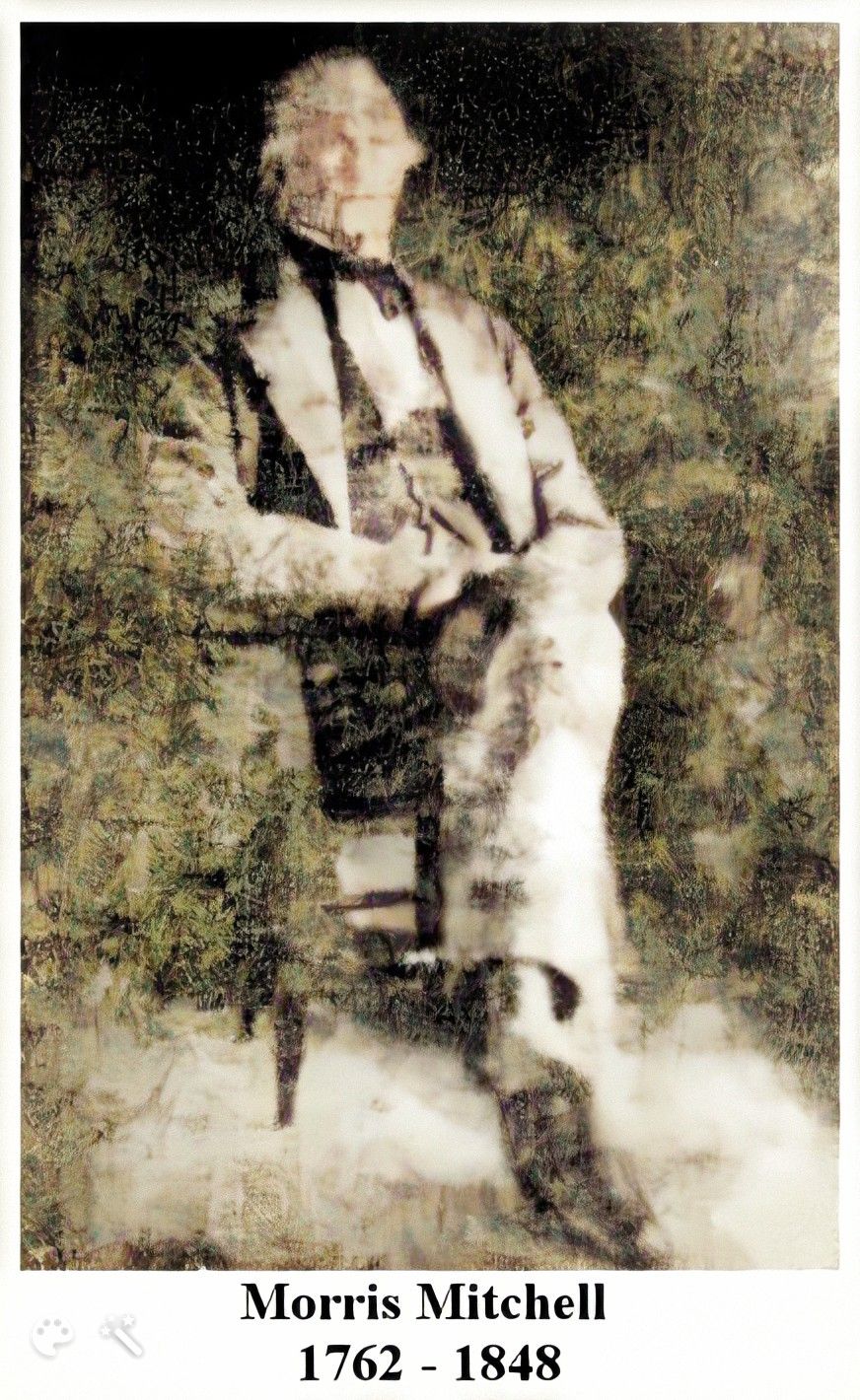
42 - Jacob and Lucinda Haston Mitchell
Lucinda Haston - Daughter of Daniel Haston

Jacob Mitchell was the son of Morris and Elizabeth Husong Mitchell (married 1781) who came to Tennessee from Washington County of western Pennsylvania. Morris was a Revolutionary War veteran and a Methodist preacher.
May 1, 1784 – The Morris Mitchell Bible record of births, marriages, and deaths in the Morris Mitchell family indicates Jacob Mitchell was born on this date.
Approximately 1804 (or later) – Although I have never seen the original family record from the Morris Mitchell Bible or even a photocopy of the original record, information on the record is widely known by genealogically inclined descendants of Morris and Elizabeth Mitchell. No date or location of their marriage is given, but the record states that Morris and Elizabeth’s son, Jacob Mitchell, married Loucinda [Lucina] Haston [Hasting]. Loucinda, was a daughter of Daniel Haston.
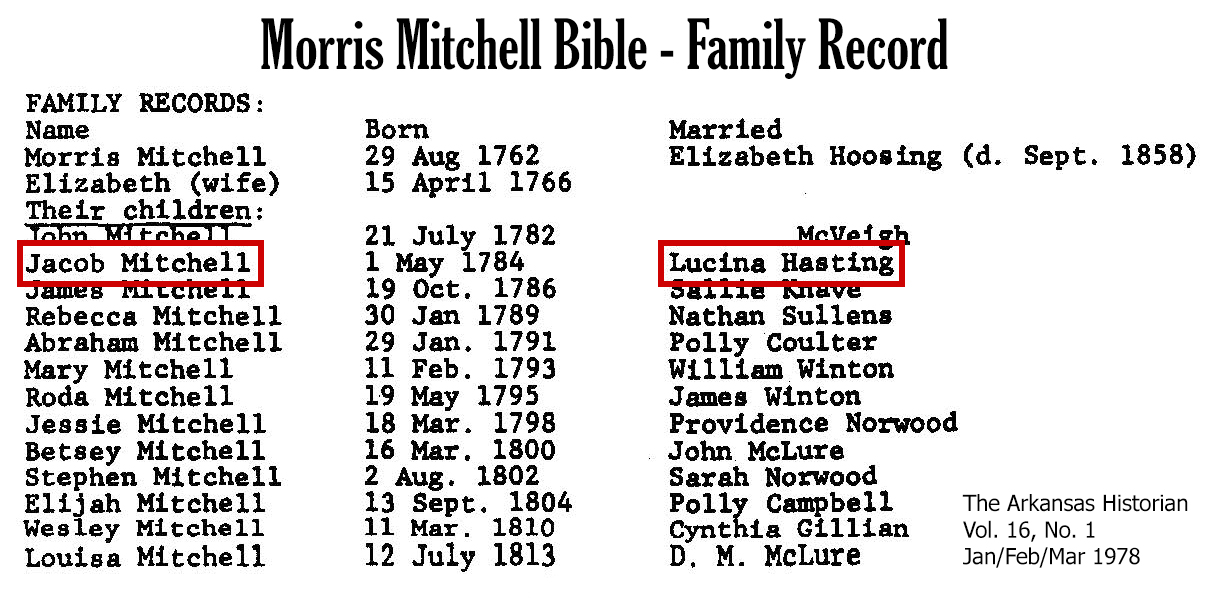
It was often common in those days for a man to purchase a farm before getting married. Maybe that was the case with Jacob and Lucinda. Some Mitchell family records indicate that their first child, Susan, was born in about 1810. If that is correct, they may have gotten married sometime after Jacob and the Hastons settled in White County and Jacob purchased his 50 acres on the Big Spring Branch, adjacent to Daniel Haston.
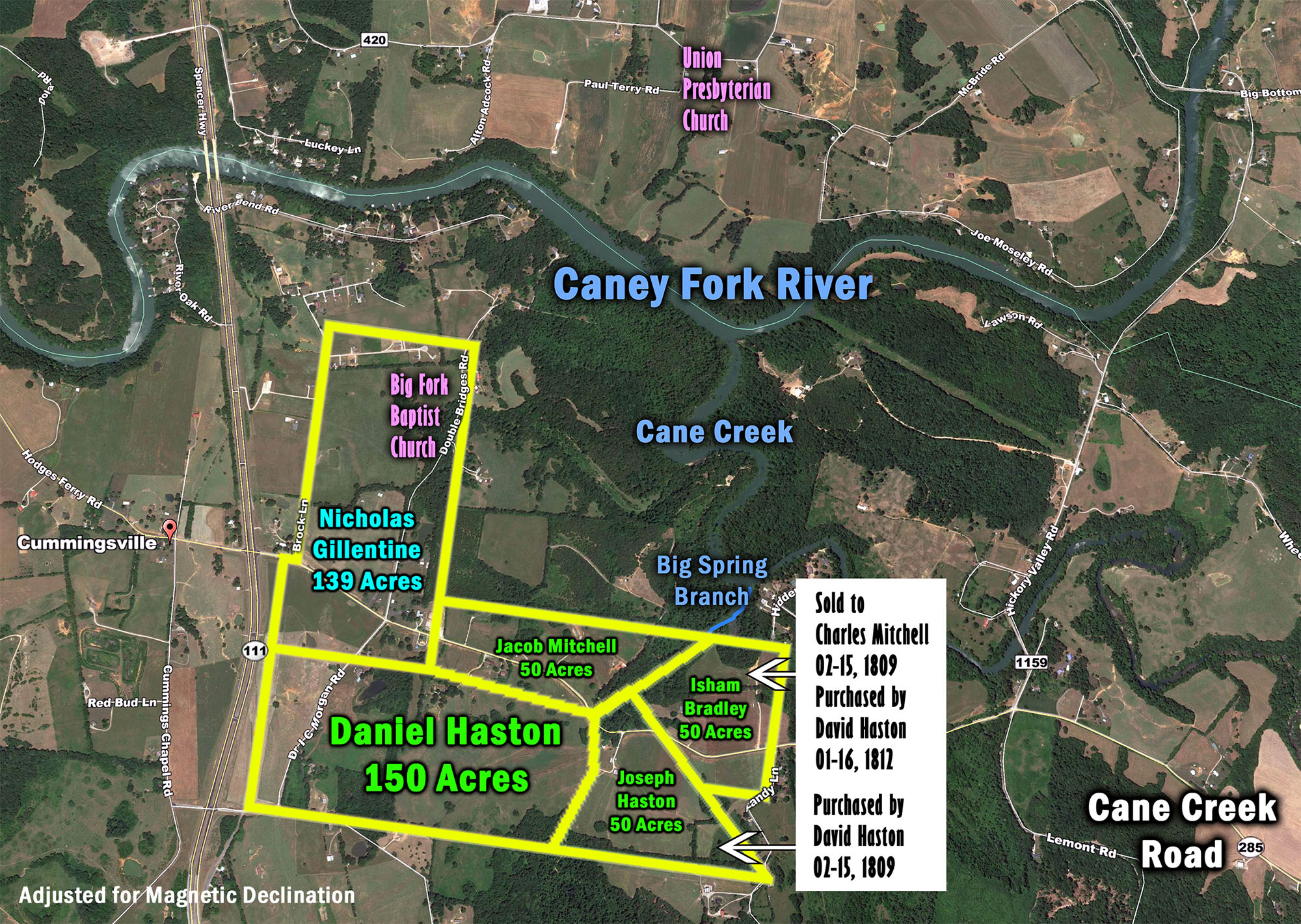
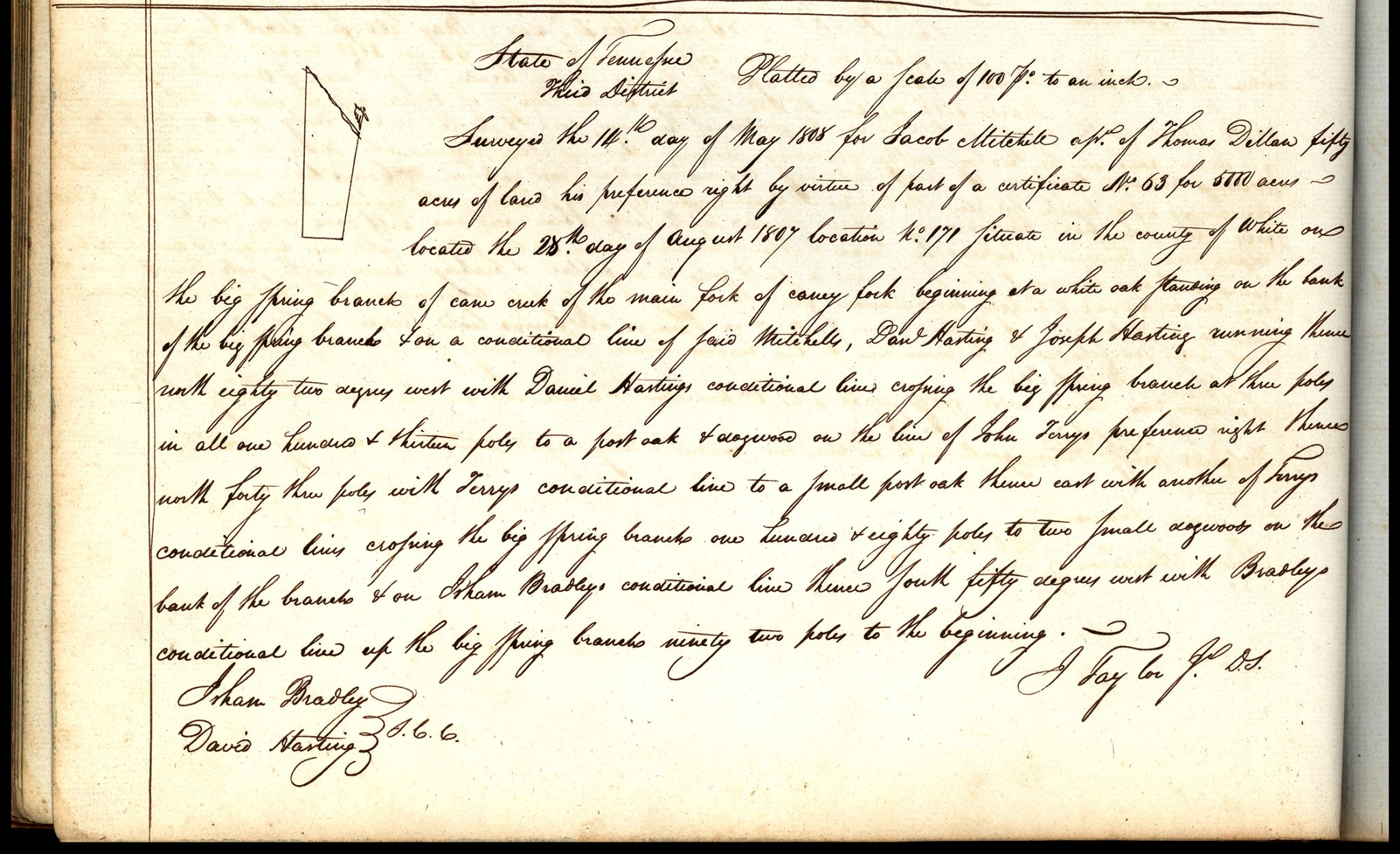
August 28, 1807 – On this date, Jacob’s 50 acres tract on the Big Spring Branch was officially located, although it had been “found” a few years earlier. Jacob was 23 years old at this time.
The grand Jurors returned into court with the following Bills of Indictments toWit: The State against Daniel Haston for an assault and battery committed upon the body of Jacob Mitchell founded on a presentment of the grand Jury “A true Bill” and again retired to consult further of presentments and Indictments. (July 21, page 209)
State vs. Daniel Hastin – Issd. Friday July 24th 1818
Indt for A.T.B.
On Prest of Grand Jury This day came as well I.J. Campbell Esqr. as the defendant in his proper person who being arraigned and charged upon the bill of Indictment pleaded guilty thereto and for his trial put himself upon the grace and mercy of the court – It is therefore considered by the court, that the defendant for such his offence make his fine by the payment of fifty cents and the costs of this prosecution. (July 24, page 227)
Makes you wonder – What did Jacob do to cause his 65+-year-old father-in-law to assault him?
February 2, 1822 – Jacob Mitchell sold his 50 acres on Big Spring in White County to Pleasant White for $200, but it was not registered until September 4, 1837, fifteen years later (at which time Jacob Mitchell was not present, but Jacob Stipe vouched for him).[i]
[i] White County, Tennessee Deed Book K (microfilm #63), 257-258.
1830 – Morris Mitchell (Jacob’s father) and several members of his family were living in Roane County, Tennessee.[i] Jacob Mitchell appears on the 1830 census for Regiment 67 of Monroe County, Tennessee,* along with a wife and eight children (four girls and four boys).[ii] Jacob and Lucinda were in the “of 40 and under 50” age category. Jacob would have been about 46 years old. Lucinda would have been born between 1780 and 1790, according to this census.
[i] 1830; Census Place: Roane, Tennessee; Series: M19; Roll: 180; Page: 3; Family History Library Film: 0024538.
[ii] 1830; Census Place: Regiment 67, Monroe, Tennessee; Series: M19; Roll: 175; Page: 84; Family History Library Film: 0024533.

1834 – Morris and Elizabeth Mitchell, and other members of their family, moved from East TN to Polk County, Missouri in about 1834 and a few years following. Morris Mitchell was more than 70 years old at the time of the move! By 1840 there was a large Morris and Elizabeth Mitchell clan in southwestern Missouri.
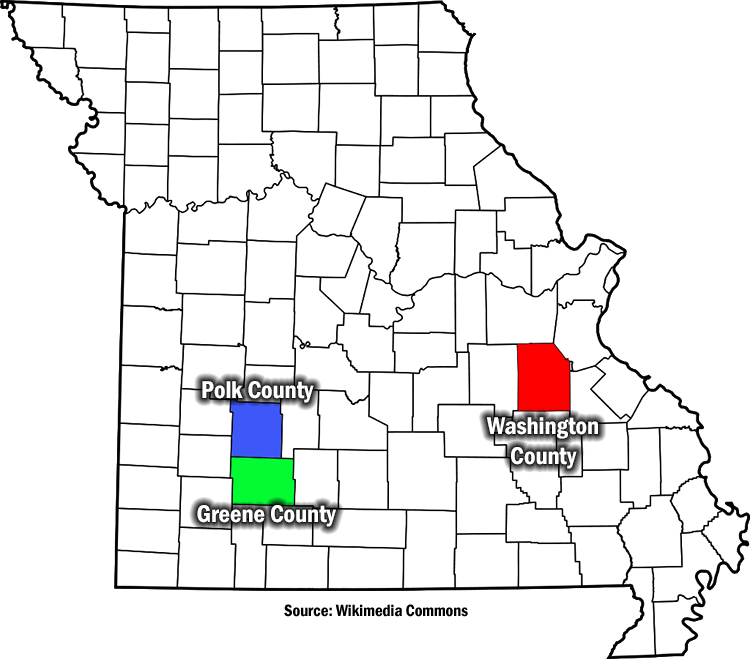
Regarding Jacob Mitchell, LuAnn Penrod Smith stated, “The majority of the Mitchell family migrated to Missouri c. 1834 and Jacob no doubt went to Missouri, but can’t find him there, either, at least not in Polk County with the rest of the clan.”[i]
[i] LuAnn Penrod Smith, email to Wayne Haston, January 11, 2002.
Based on records of some of Jacob and Lucinda Mitchell’s purported children that we now have access to, it appears that Jacob and Lucinda lived in Washington County, Missouri before he appeared later in Greene County, south of where Jacob’s parents and some of his other family members settled. In the early 19th century, Washington County, MO had a very active lead and iron mining industry. For example, in “1824 the mines near Potosi [county seat of Washington County] employed nearly 2,000 men, and lead ore sold at $10 per thousand.”[i] Perhaps Jacob worked in the mines before moving further west to Greene County.
[i] Goodspeed, Goodspeed’s Washington County [Missouri] History. (1888; reprinted, Signal Mountain, TN: Mountain Press, 2000), 14.
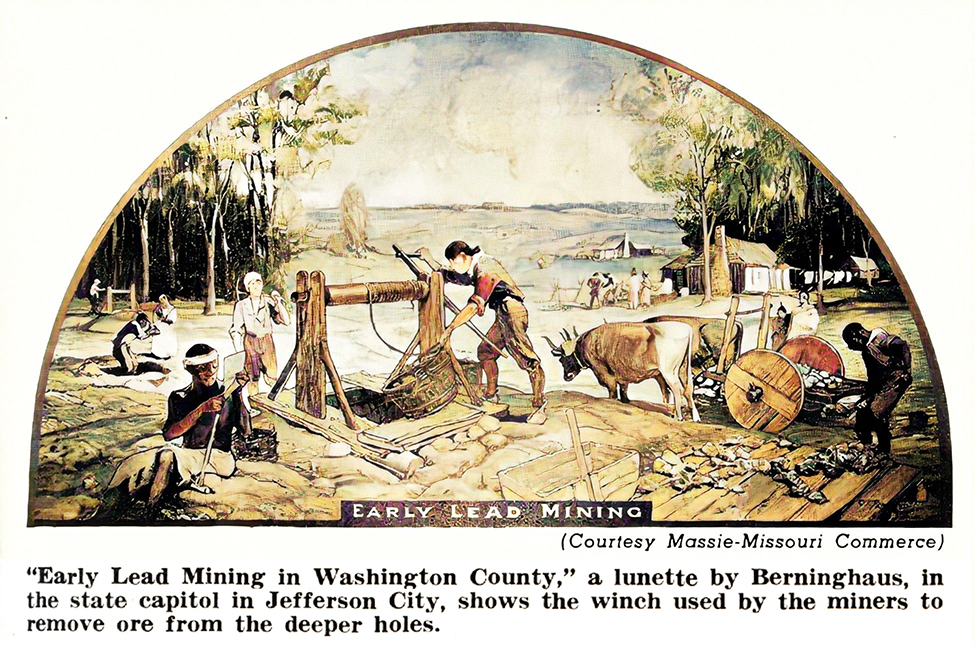
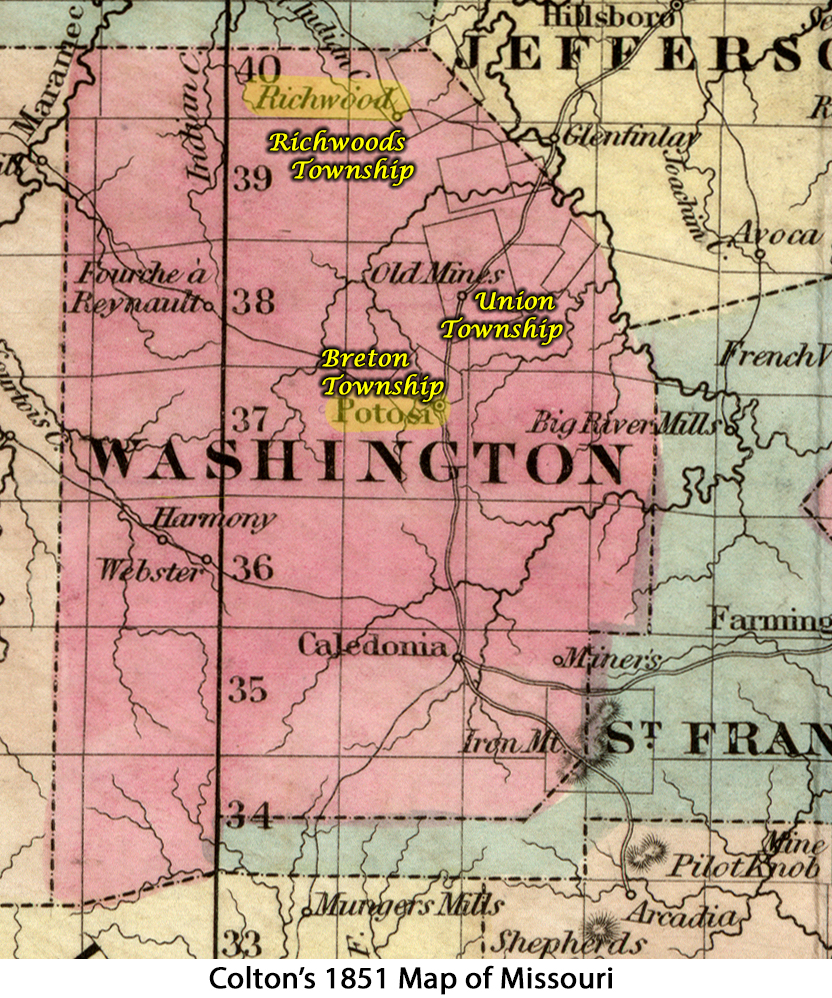
February 29, 1848 – After Morris Mitchell, Sr. died, the record of his estate settlement indicated that Jacob Mitchell was living in Greene County, Missouri. He purchased a colt, a cow, and a calf.
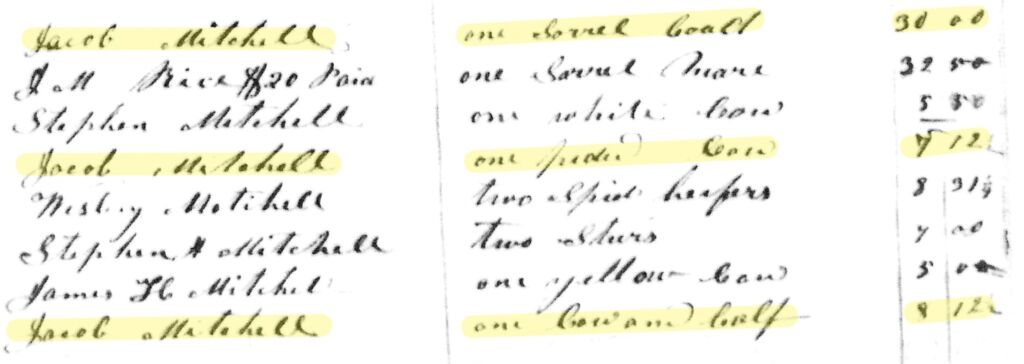
1850 – According to the 1850 census for the Van Buren Township of Crawford, Arkansas, Jacob Mitchell was living with his son Lorenzo D. Mitchell, a physician. Jacob was 65 years old, had no occupation at the time and was born in Tennessee.
There was no mention of Lucinda on Lorenzo’s census record. It appears that Daniel Haston’s daughter, Lucinda, died between the 1840 and 1850 census.
1860s – During the 1860s, Jacob Mitchell was living in the village of Ebenezer, MO. He made three minor real estate transactions there but seems to disappear before the 1870 census.
Mitchell Family Researchers' Opinions of Jacob Mitchell
Some descendants of Morris Mitchell who spent many years researching the family did not have very positive opinions of Jacob Mitchell. Virginia Mitchell Barry descended from Jacob, through his son Robert D. Mitchell. Virginia spent a “lifetime of research”[i] working on this family. She called Jacob, “this perplexing individual—Jacob Mitchell.” Virginia went on to say:
[i] Virginia Mitchell Barry, email to Wayne Haston, December 31, 2001.
Jacob Mitchell never seems to have owned much. In fact, I can only find property ownership of the 50 acres in White County, TN, and the minor real estate turn-around deal in Greene County when he purchased property from his supposed daughter-in-law and immediately sold it to his supposed grandson. The Morris Mitchell family seems to have all been prosperous go-getters and there is much documentation on most of that family. The only thing they have written about Jacob is that he married Lucinda Haston. If Jacob were an unsuccessful ne’er-do-well and if he were a member of the Morris Mitchell family, it is possible that they considered him an embarrassment and had little to do with him. There is evidence he owed money to several family members.[i]
[i] Virginia Mitchell Barry, email to Wayne Haston, November 10, 2000.
LuAnn Penrod Smith, a descendant of Jacob’s brother, Rev. James and Sarah/Sallie Nave Mitchell, stated, “He (Jacob) must have been a rebel in this family of Methodist ministers!” Morris Mitchell, Sr., a Methodist preacher himself, had three sons and ten grandsons who were Methodist preachers.[i] Jacob Mitchell had a lot to live up to!
[i] Van Hines Mitchell, 3.
If you appreciated this article, please share it with others who might also enjoy it.

Landon Medley Obituary
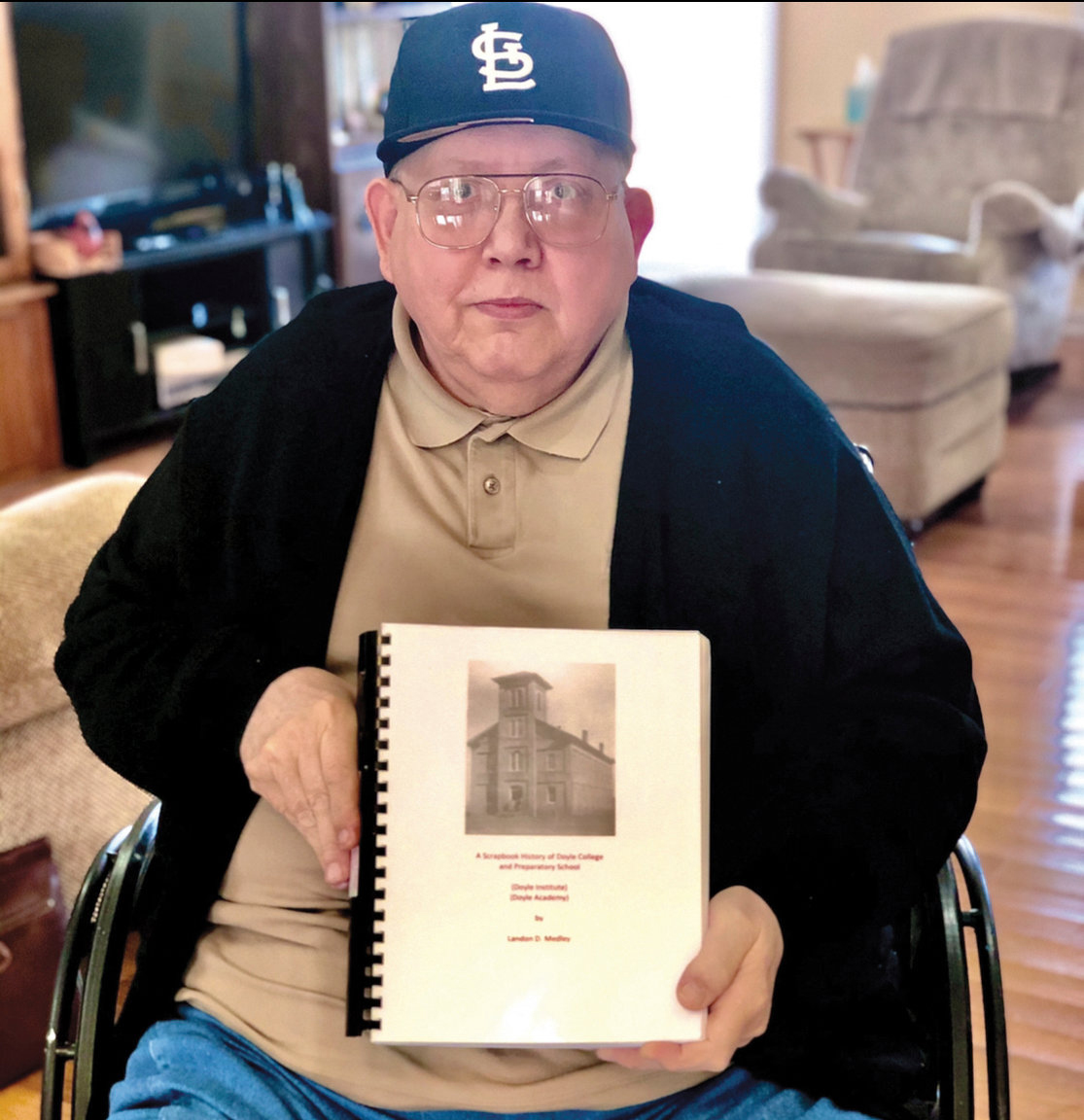
Landon Medley
October 6, 1949 - September 25, 2021

Whether you knew him personally or not, Landon Medley was a friend to all of us who are interested in researching and studying the history of our Daniel Haston family. Landon lived near the Daniel Haston family place and was steeped in a knowledge of local history–events, places, and people. Some of the Haston-history articles you have read on the Daniel Haston Family Association blog were enriched by input from Landon.
Landon was my go-to source for questions about Van Buren County, TN history. He and I worked on many research projects, including some that will now be put on hold. For example, we were planning for an upcoming Zoom meeting to discuss the history of Van Buren County. Landon was going to be our guest expert for that online session.
Landon Medley will be GREATLY missed by many of us who relied heavily on him for leadership and expertise related to the history of Van Buren and surrounding counties.
Obituary
Landon Darl Medley was born on October 6, 1949, to the late Jessie Lee “Dick” Medley and Dorthay Marie (Hale) Medley. He passed from life on Saturday, September 25, 2021 at St Thomas Midtown in Nashville after a short illness.
Landon was a lifelong resident of Van Buren County and a 1968 graduate of Van Buren High School. Landon retired from Mallory Controls in Sparta TN after more than 30 years of service.
In addition to his parents, Landon was preceded in death sister Martha Christine Whitworth and brother-in-law Lee “Wally” Martin Landon is survived by four sisters: Rosa “Bonnie” Buttrum (Walter) of Sparta, TN, Maggie Mills (Jim) of Spencer, TN, Wanda Martin of Spencer TN, and Judy Brown (Tommy) of Sparta, TN. He is also survived by brother-in-law Caroll McDonald of Doyle TN. Although he did not have any children of his own, Landon was active in the lives of his nieces and nephews: Christi Whitworth, Jessie Buttrum, Jamie Mills Saucier, Thomas Whitworth, Rachel Martin Scarlett, Jerry Buttrum, Edward Martin, Stephanie Clark, Kim Clark Kinnaird, and Katelyn Brown Boysel. And his great-nieces and nephews: Private Noah Sliger United States Army, Andrew Whitworth, Kensley Saucier, Amelia Scarlett, Landon Buttrum, Kathryn Scarlett, Hannah Kinnaird, Lennox Buttrum, Will Whitworth, Michael “Bill” Kinnaird, and Cadence Buttrum. Landon is also survived by Aunts and Uncle: Shella Forsythe (Don) of Sparta, TN, Gail Anderson of Sparta, TN, and Landon C Hale Jr. of Spencer, TN. Several cousins and friends also survive.
Landon dedicated his life to the preservation of history and the environment. He served as Van Buren County Historian for many years. Landon has written several books and journals about the History of Van Buren County. Landon was a founding member of the Van Buren Historical and Heritage Museum. He was always willing to assist anyone with research on their family tree and could recall most details from memory. Landon fought for the environment and the preservation of Fall Creek Falls State Park. He was a founding member of the Friends of Fall Creek Falls and served as president of Save Our Cumberland Mountains.
Landon was also a painter, primitive art designer, and avid fan of the St Louis Cardinals baseball team.
In lieu of flowers, donations can be made to the Van Buren County History and Heritage Museum 179 College St. Spencer, TN 38585



